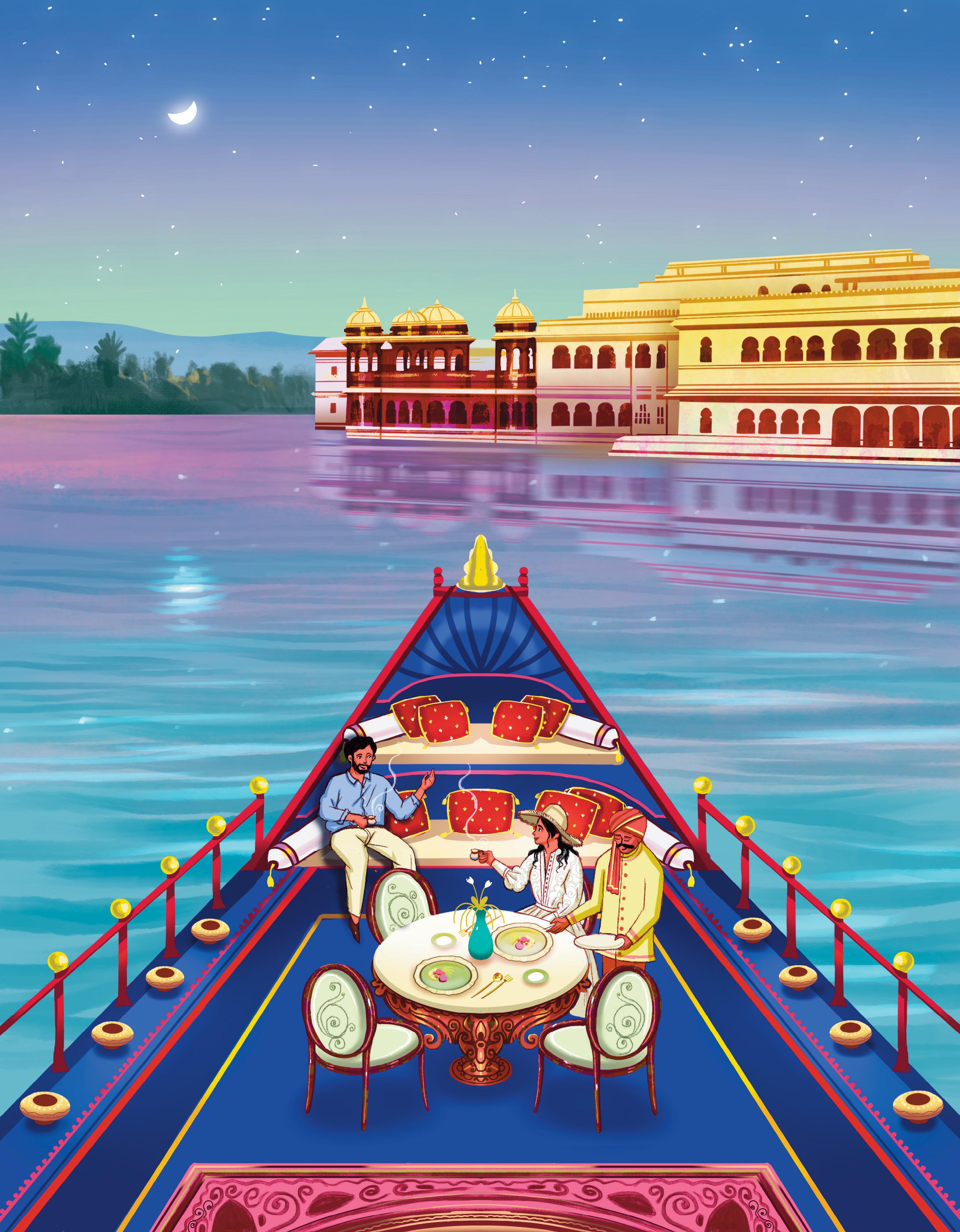

HOTEL SURGE
How affluence and aspirations are fuelling a luxury travel and hotel boom in India, and driving experiential travel.
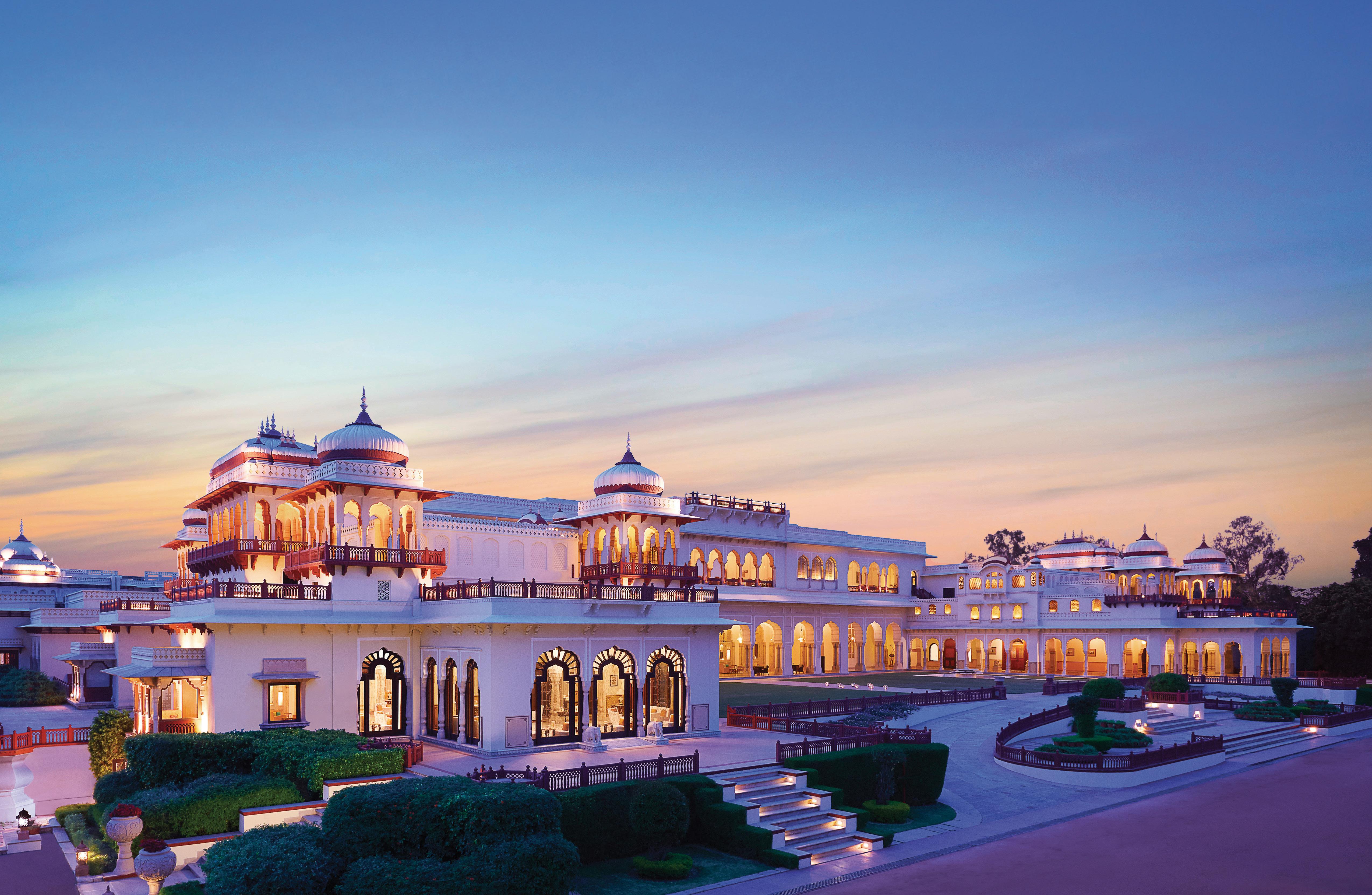
CREATING LEGACIES WAS A ROYAL TRADITION. KEEPING THEM ALIVE IS OURS.






FOUNDER'S NOTE
HOSPITALITY, WITHOUT HESITATION
In a world where tourism is often measured in arrivals and RevPAR, the Indian hospitality sector continues to remind us that it is also an emotional economy. That its real strength lies not only in scale or luxury, but in values.
When the headlines turned grim after the recent attack in Pahalgam—26 lives lost, dozens injured—the hospitality industry didn’t wait for instructions. It did what it has always done best: it showed up. Within hours, local hoteliers and community-run lodges opened their doors to the stranded. Meals were arranged. Phone batteries were charged. Shelters were made available without question or cost. Yawar Lone, a hotelier in Pahalgam, was among the first to offer free accommodation, followed swiftly by others in Srinagar and Anantnag. Volunteers pooled their cars to take tourists safely to airports. It was spontaneous, unscripted, and deeply human.
But none of this should surprise us. We’ve seen this before.
In 2020, when the country came to a halt during COVID-19, it was this same industry—brought to its knees by shutdowns and uncertainty—that reached out the fastest. Hotels converted into quarantine centres. Staff stayed on-site for weeks to cook, clean, and care for frontline workers. Brands like OYO offered free stays to doctors. The Taj in Mumbai housed nurses working around the clock at neighbouring hospitals. Across cities, thousands of hotel workers stepped in—not to run a business, but to serve a nation in crisis.
The truth is, hospitality in India is not a transaction. It’s a mindset. A way of being. And in moments when the country is shaken, it reveals itself not in marketing campaigns, but in acts of instinctive generosity.
These aren’t one-off instances. This is a pattern. When war broke out in Ukraine and Indian students returned in droves, it was airport hotels that set up makeshift dorms. During train cancellations, it was roadside dhabas and small lodges that let travellers stay the night. This sector has consistently gone beyond its economic mandate. It doesn’t just host.
It helps.
And in the face of growing global complexity—where political positions impact personal movement—the industry is also displaying moral clarity. The recent citizen-led boycott of Turkey as a tourist destination, in protest of its posturing on Kashmir, is one such moment. While not state-driven, it reflects how deeply travel is now entangled with identity and ethics. Operators, travel companies, and even hotels are navigating this shift with quiet maturity. There is no gloating, just a firm understanding: when national sentiment is hurt, business cannot continue as usual.
Here’s to the ones who stayed up late to make guests feel safe. To those who gave, even when business was slow. To those who instinctively put people before policies. You are not just caretakers of comfort—you are caretakers of conscience.

GURMEET KAUR SACHDEV gurmeetsachdev@soulinkkworldwidemedia.com
THE QUEST FOR UNIQUENESS
New global research by a leading luxury hotel marketing firm and Harris Poll, an American research firm, reveals a subtle but important shift: 62% of affluent travellers feel luxury experiences are becoming repetitive, and 72% refuse to pay for anything resembling the generic offerings online. This points to a growing luxury fatigue that remains unaddressed.
In India, luxury hotels and travel are booming, fuelled by rising affluence and a generation craving fresh experiences. Yet hoteliers admit that constant innovation is needed to captivate travellers seeking more than just lavish stays. Our cover story explores why luxury is surging in India—and what still needs to be done.
From Nashik, we bring you the story of Sula Wines and an exclusive interview with founder Rajeev Samant, who shares how he built India’s premier integrated wine experience blending winemaking, music, and hospitality.
This edition features compelling interviews on hospitality’s evolving landscape in India—from Mandarin Oriental’s James Mabbutt to Accor’s Lifestyle & Leisure Brands CEO Gaurav Bhushan, who will lead a joint board between Accor and InterGlobe.
Technology is reshaping how we live, travel, and dine. Our tech section highlights how AI is helping global hotel kitchens drive sustainability and culinary innovation, alongside India’s ambitious e200X urban mobility project—an electric VTOL aircraft backed by aviation pioneer and Akasa Air co-founder Aditya Ghosh.
There’s much more to explore in this edition. We hope you enjoy the read.
Warm regards,
DEEPALI NANDWANI, EDITOR, SOH
Founder and Publisher
Gurmeet Sachdev
Editorial
Editor Deepali Nandwani
Managing Editor Rupali Sebastian
Contributing Editor Suman Tarafdar
Digital Editors Nolan Lewis, Rachna Virdi
Contributing Writer
Maria Louis Neeta Lal
Columnists
Manav Thadani
Harish Chandra
Creative
Creative Director Tanvi Shah
Team Shiv Soni
Contributing Artist Govinda Sao
Business Head
Vipin Yadav
Sales Manager
Deepa Rao
Office Manager
Deepak Rao
Accounts Head
Amey Acharekar
For queries: editorial@soulinkkworldwidemedia.com sales@soulinkkworldwidemedia.com info@soulinkkworldwidemedia.com
Printed and Published by Gurmeet Sachdev on behalf of Soulinkk World-Wide Media LLP. Registered office: 1/2, Old Anand Nagar, Nehru Road, Santacruz East, Mumbai, Maharashtra - 400055. Printed at Silverpoint Press Pvt. Ltd., A-403, TTC Industrial Area, Near Anthony Motors, Mahape, Navi Mumbai – 400709. Editor: Deepali Nandwani. All rights reserved worldwide. Reproducing in any manner without prior written permission prohibited. SOH takes no responsibility for unsolicited photographs or material all photographs, unless otherwise indicated, are used for illustrative purposes only. Unsolicited manuscripts will not be returned unless accompanied by a postage pre-paid envelope. All disputes are subject to the exclusive jurisdiction of competent courts and forums in Mumbai only. Copyright Soulinkk World-Wide Media LLP.
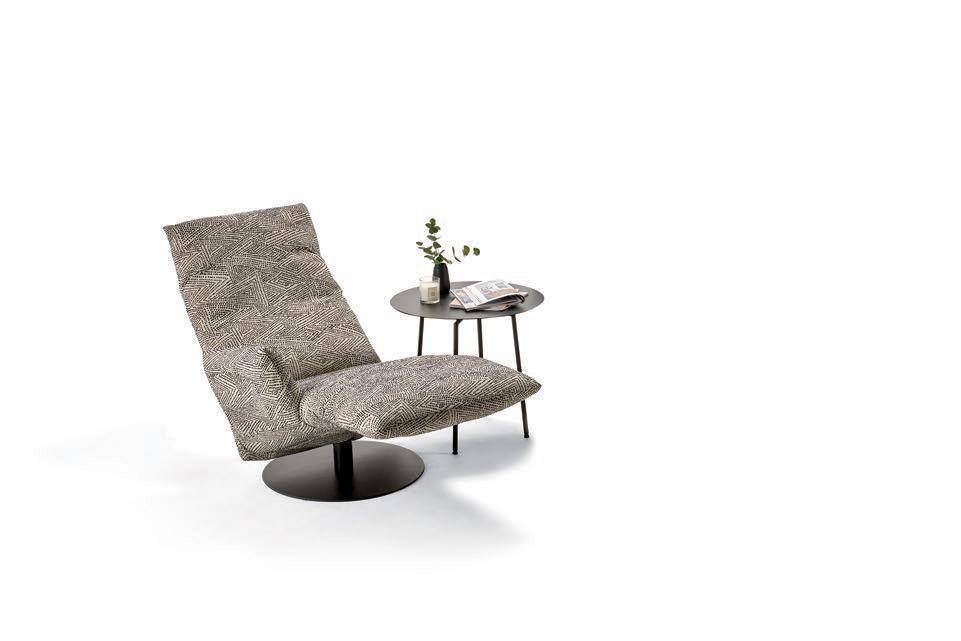
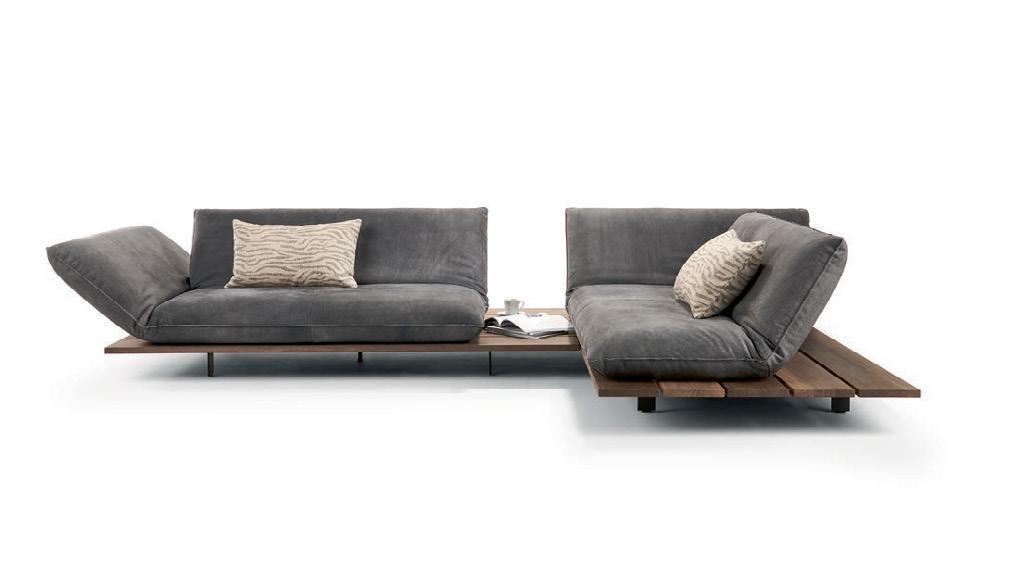
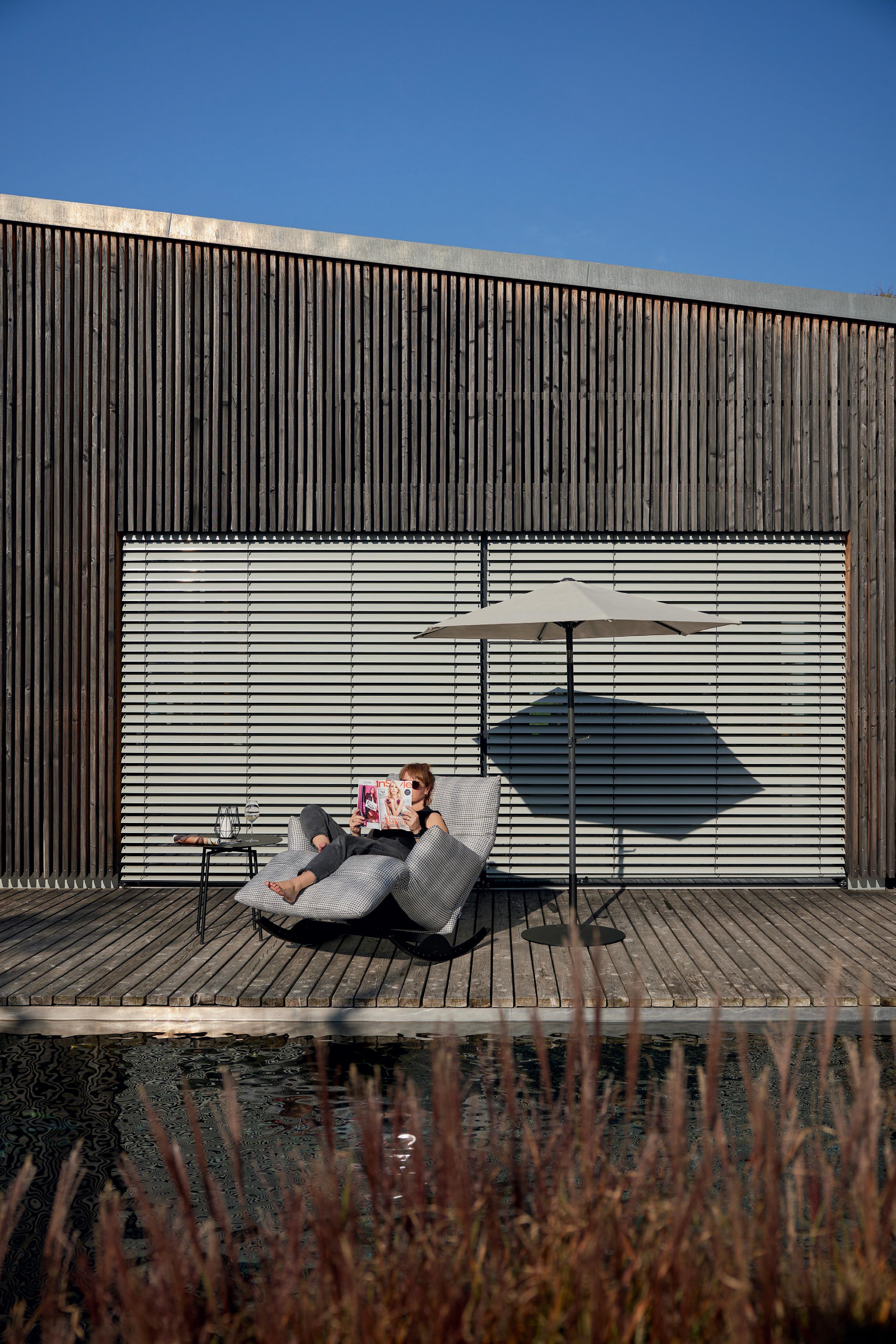

Luxury Hospitality Fuels India’s Travel Boom
Rising affluence and aspirations drive demand for authentic, immersive luxury experiences. India’s rich heritage and innovative hotels create a vibrant future for discerning travellers.
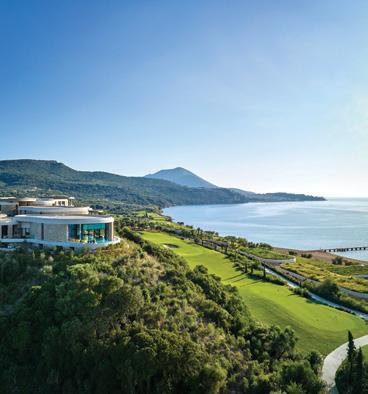
78
Next Stop: India?
Mandarin Oriental weighs entry into booming market.
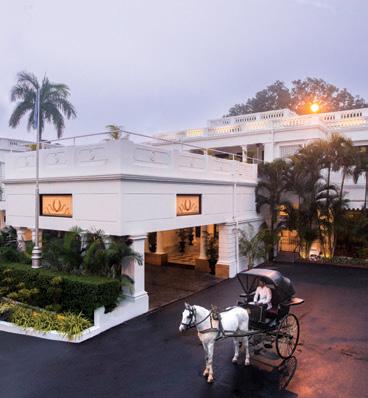

AI helps Indian hotels cut waste, and stay creative.
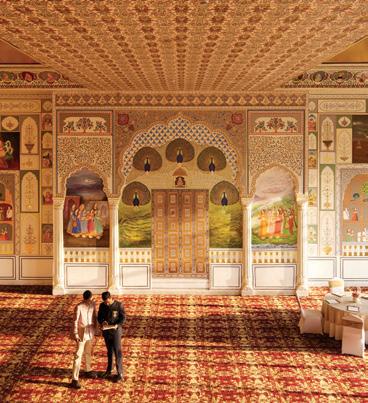
84

Currents of Change Luxury cruises gain momentum on India’s scenic rivers.

100 Canvas of Travel Bose Krishnamachari traces art through his myriad journeys.

72
Accor's India Push Merged entity aims to accelerate growth across India.
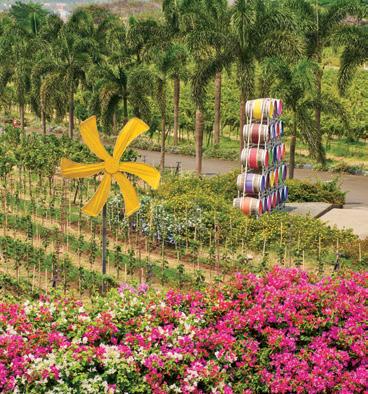
90
Vineyard Vanguard How Sula intrepidly pioneered the Indian wine scene.
MICHELIN'S HIGH ROLLERS
From Ibiza to New York City and Tokyo, these restaurants prove that food is more than a collection of ingredients cooked well. It is emotion, technique, and perfection— served on a plate at prices starting at $500 and reaching up to $2000 per meal.
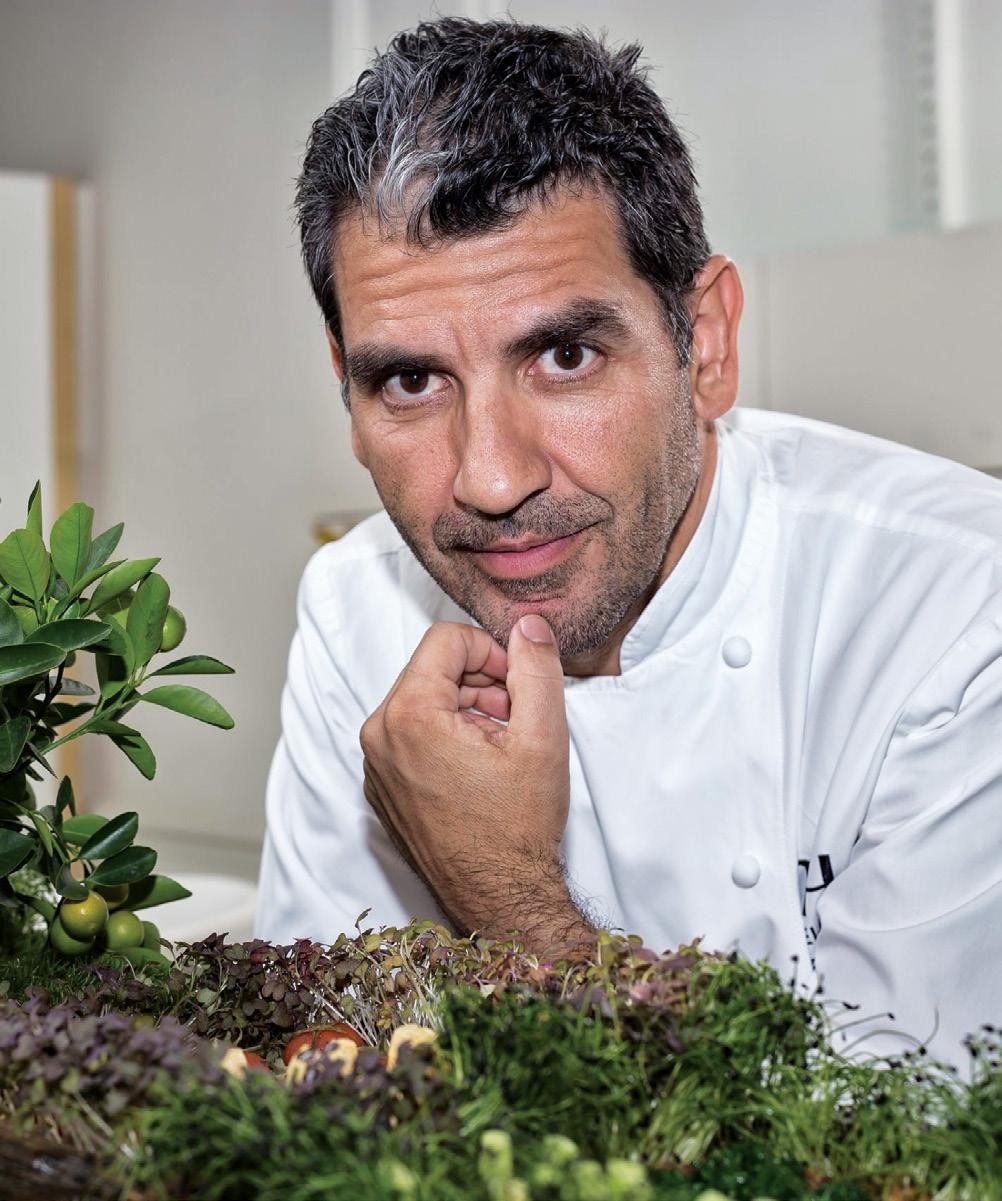
In the hallowed dining rooms of Michelinstarred marvels spanning from the vibrant shores of Ibiza to the bustling streets of Tokyo and the iconic skyline of New York City, food transcends mere sustenance. Here, it's an emotion, a meticulously honed technique, sheer perfection artfully presented on a plate, all at a price point that begins around $500 and can soar to upwards of $2,000 for a single, unforgettable meal.
SOH’s list of some of the world’s most expensive Michelin-starred restaurants spans continents, from China to Japan and Spain.
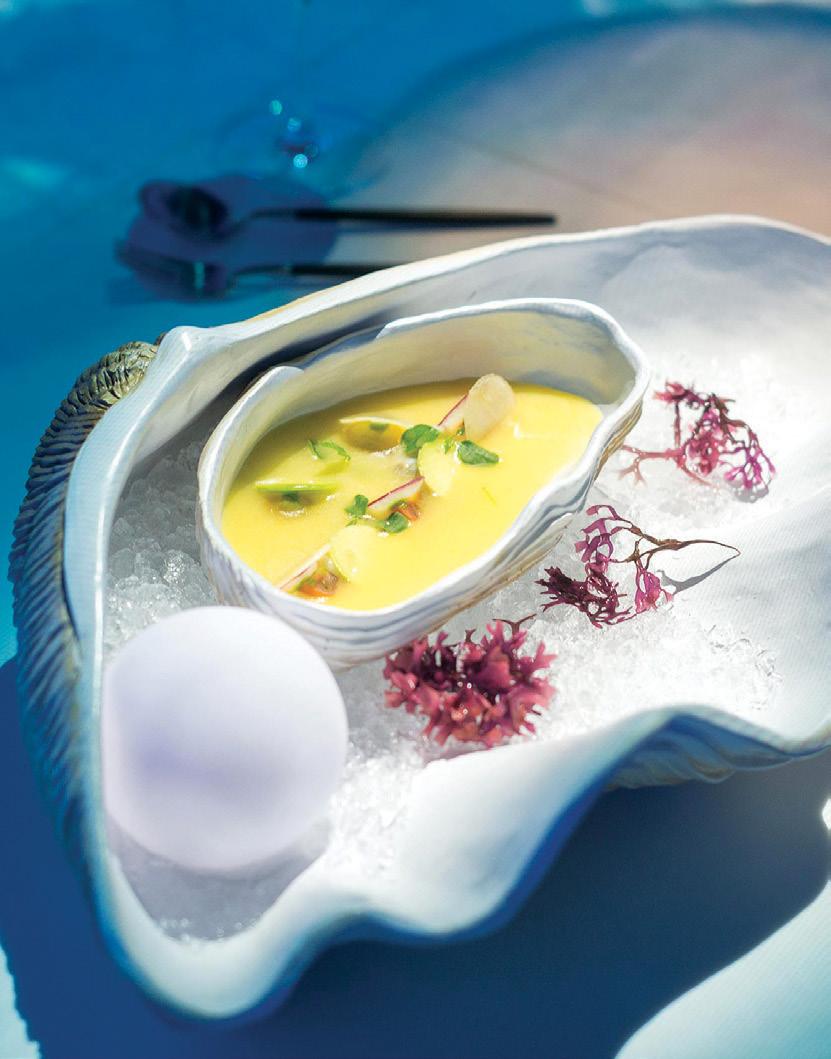
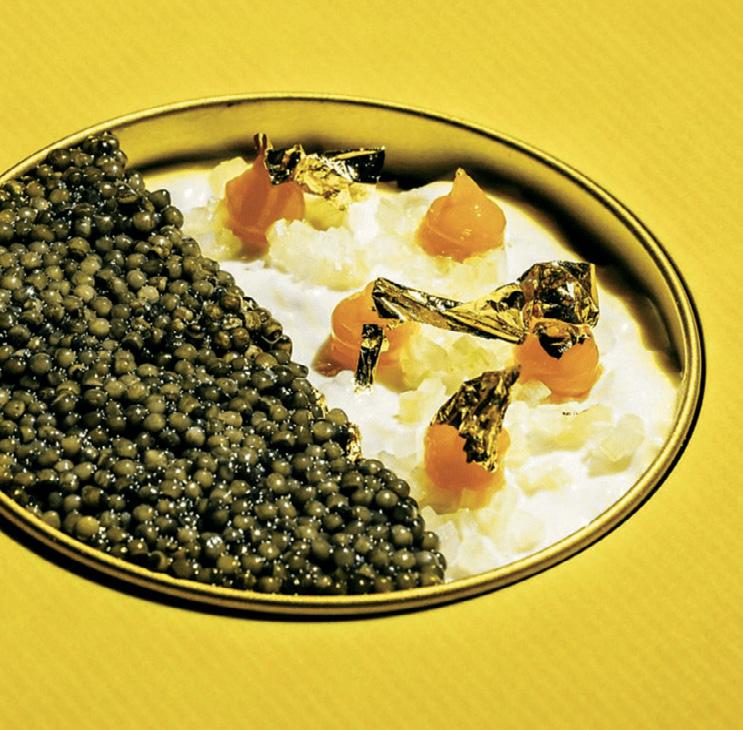

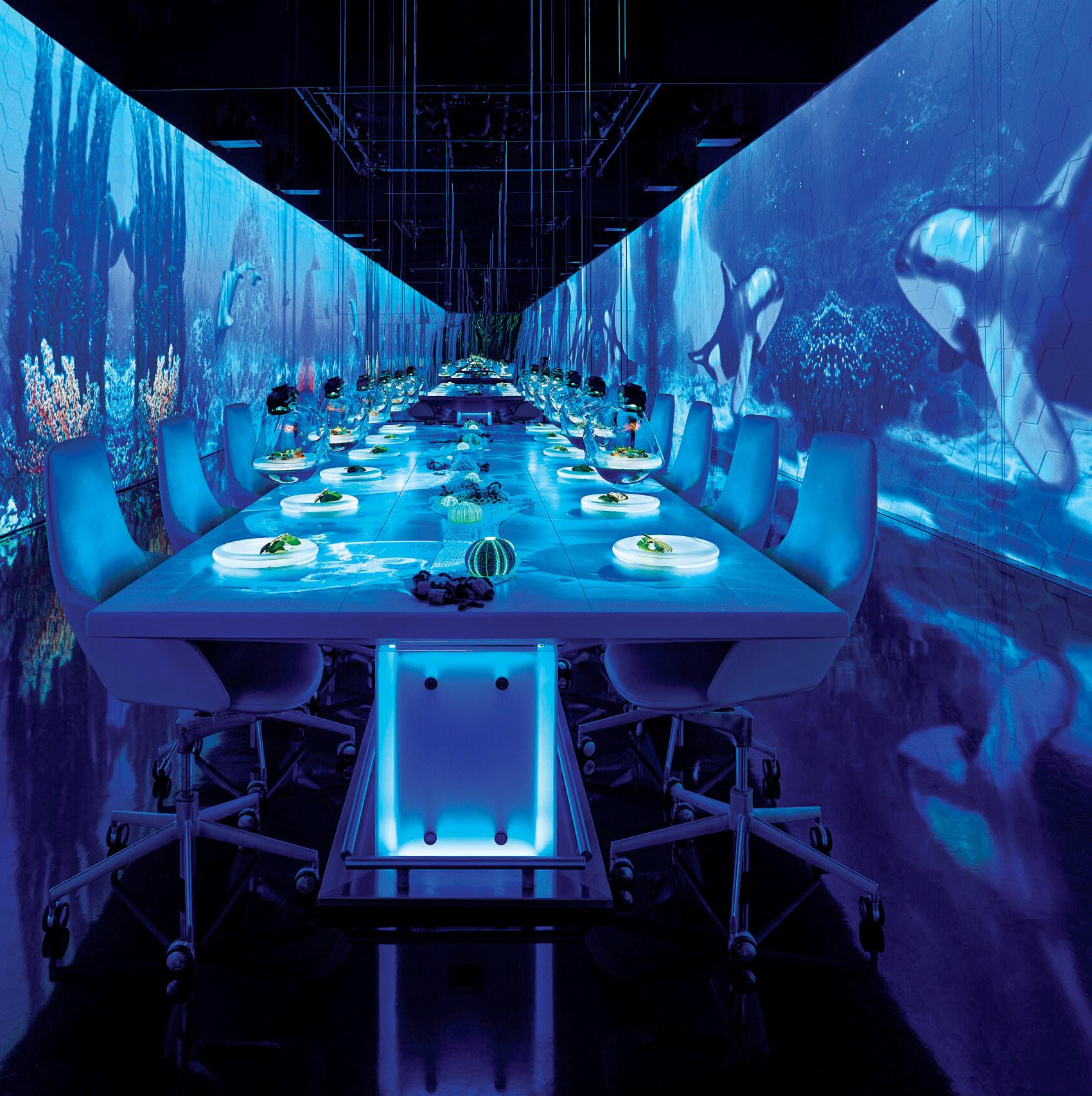
SUBLIMOTION Ibiza, Spain
The 2-Michelin-starred restaurant Sublimotion, led by Chef Paco Roncero, fuses avant-garde cuisine, molecular gastronomy, and cuttingedge technology into a multisensory ‘gastronomic show.’ It embraces the philosophy that “a meal is a theatrical performance,” blending food, art, music, virtual reality, and illusion into a singular experience.
Ambience: The dining room, or ‘capsule,’ accommodates just 12 guests at a single table. Through 360-degree projections, dynamic lighting, and soundscapes, the table transforms into immersive environments, such as the North Pole or futuristic landscapes. A 20-person team manages advanced technology to control temperature, humidity, and aromas. Diners often wear VR headsets, while each dish is choreographed with visual and auditory effects to engage all the senses.
Food: The experience includes a 20to 25-course tasting menu featuring luxurious ingredients like caviar, foie gras, saffron, and gold leaf. Molecular gastronomy techniques create dramatic presentations, including smoke-encased dishes and interactive desserts. The seasonally evolving menu is shaped by contributions from top chefs such as David Chang, Dani García, and Paco Torreblanca.
Cost: A meal here costs $1,740 per person.
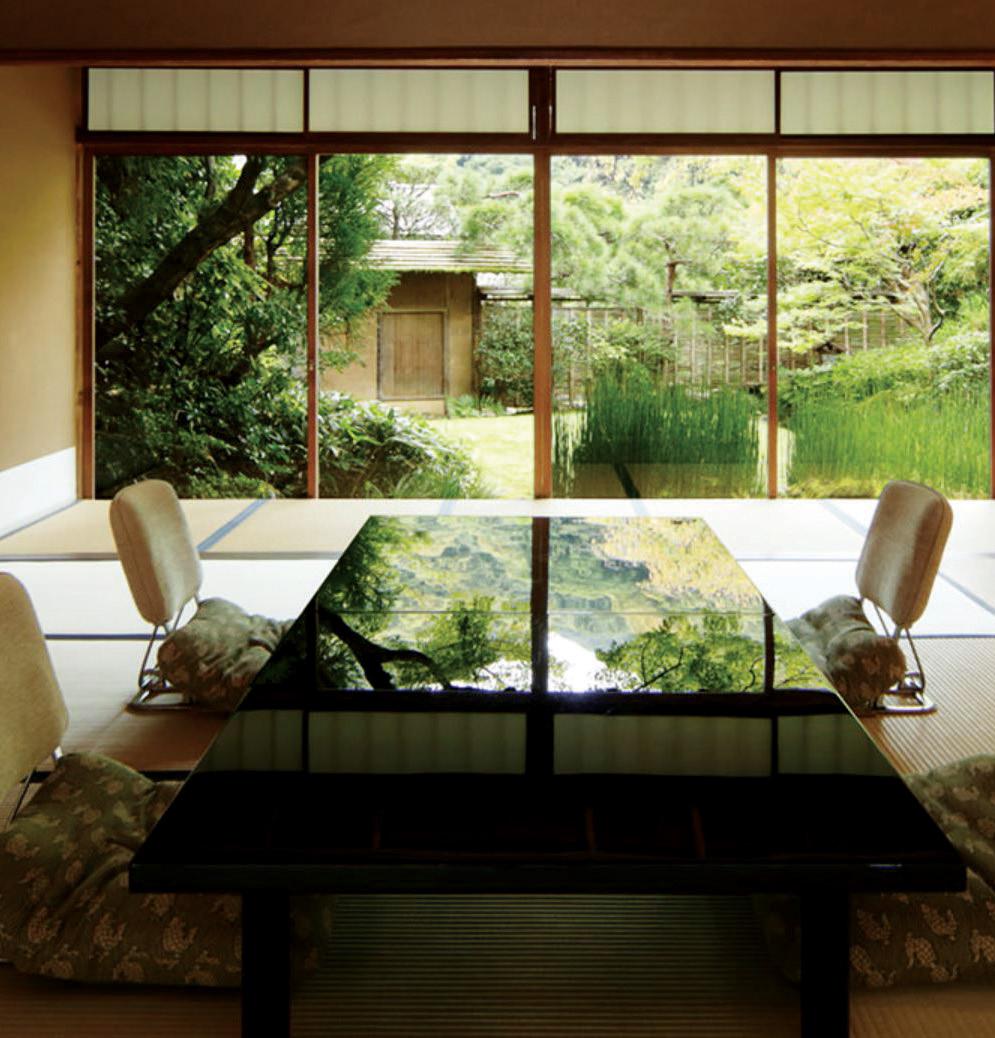

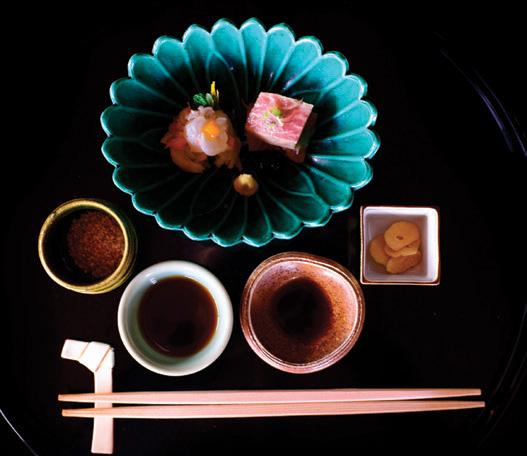
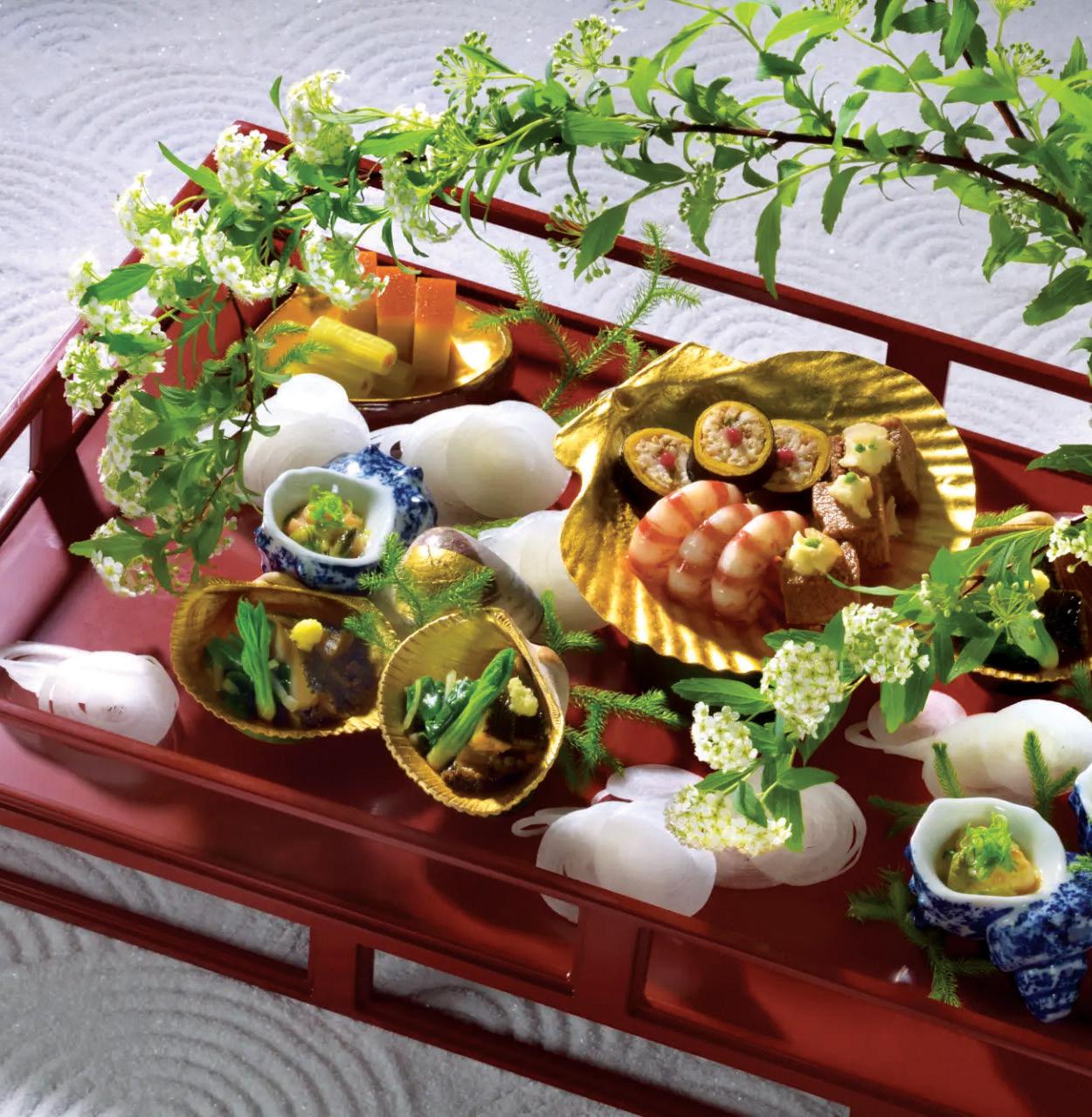
KYOTO KITCHO ARASHIYAMA HONTEN
Kyoto, Japan
Kyoto Kitcho Arashiyama Honten is set in Kyoto’s scenic district, framed by the Katsura River and Arashiyama mountains. Founded by Yuki Teiichi and now helmed by third-generation chef Tokuoka Kunio, it is renowned for its autumn foliage and iconic pink cherry blossoms. Unlike most high-end Michelin-starred establishments, this one is a Ryotei (traditional Japanese restaurant), celebrated for its exquisite Kaiseki cuisine and immersive cultural experience.
Ambience: This 3-Michelin-starred restaurant is housed in a traditional ryokan-style building featuring six private tatami rooms and the renovated Taikotei Grand Hall, showcasing Shoinstyle architecture and ceiling paintings. A Momoyama-period screen bearing Toyotomi Hideyoshi’s Paulownia crest pays homage to Japan’s tea ceremony heritage.
Food: Kaiseki, rooted in tea ceremony traditions, highlights seasonal ingredients, umami flavours, and Omotenashi— the Japanese ethos of wholehearted hospitality. Dishes are crafted from the finest ingredients sourced from Japan and presented as edible art on antique tableware. Signature offerings include Hassun (a seasonal delicacy platter served in a 24x24 cm wooden box), crab dishes, matcha-infused creations, and desserts like Shizuoka Melon with basil sauce or sweetened Chestnut with Adzuki Bean Jam. The Hassun course, a tea ceremony staple, underscores seasonality and visual artistry.
Cost: Kaiseki menus are typically 10–12 courses, with options like:
Menu 1: ¥50,000++ (approx. $340)
Menu 2: ¥60,000++ (approx. $410)
Chef’s Omakase Course: Priced based on the ingredients, tailored to the day’s best offerings.

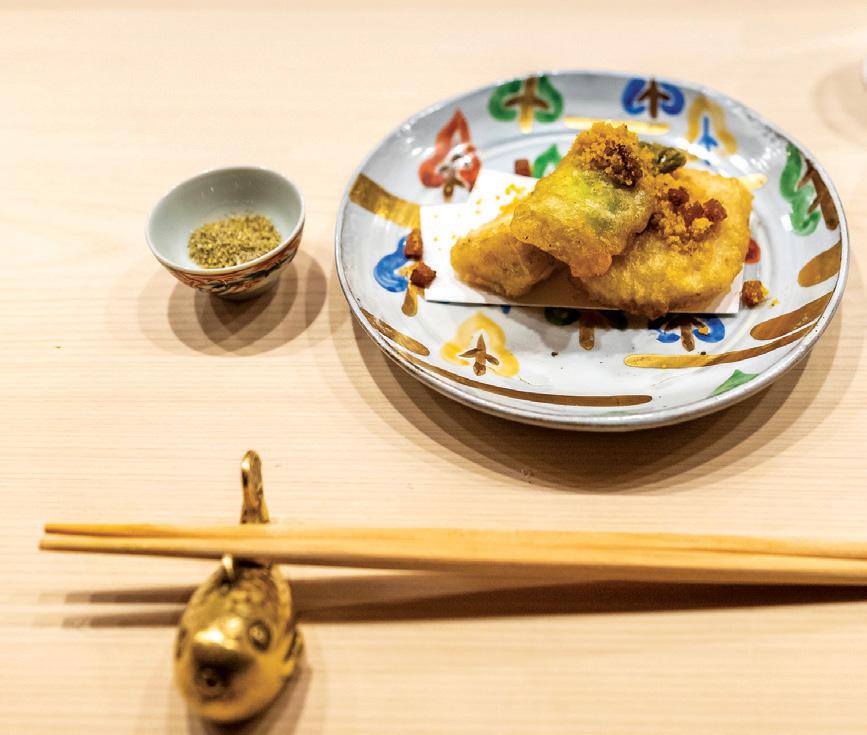
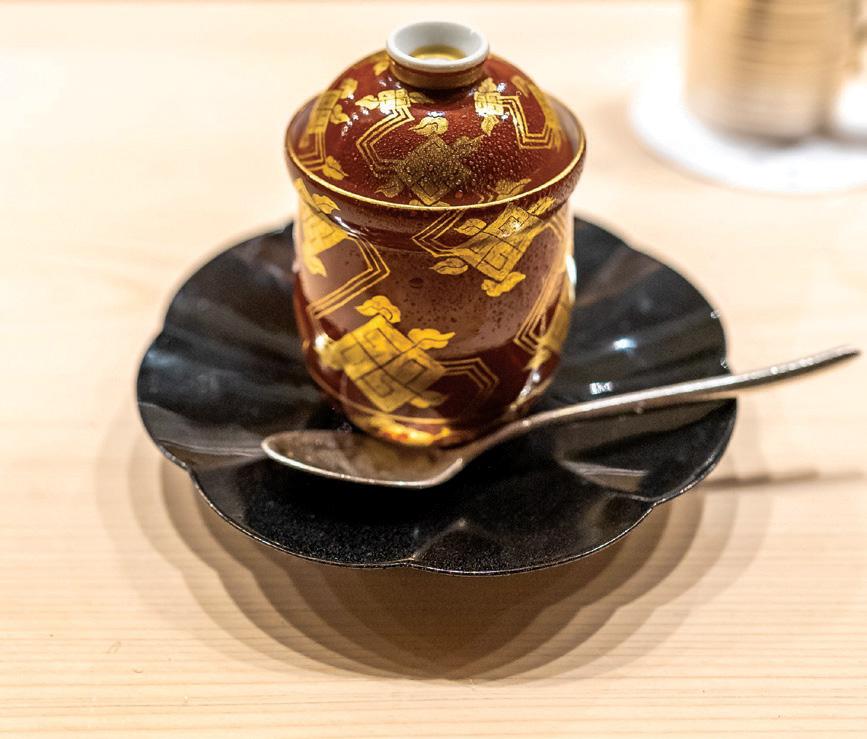
AZABU KADOWAKI
Tokyo, Japan
Within Tokyo’s upscale Azabu-Juban district is Azabu Kadowaki, a 3-Michelinstarred Kaiseki restaurant celebrated for its innovative approach to Japanese cuisine. It blends traditional techniques with Western ingredients, creating a distinctive dining experience centred on seasonality and artistry. It was opened in 2000 by chef Toshiya Kadowaki, whose family businesses included a sushi restaurant. He trained at well-known establishments such as Koshi, Tsukiji Umemura, Kamogawa,
and Uientei, before becoming head chef at 27.
Ambience: Nestled in a quaint, historic neighbourhood near Roppongi, the restaurant’s unassuming exterior bears only its name in Japanese, with a Michelin-star plate at the entrance. The intimate space seats six at a counter for a front-row view of chef Kadowaki and his team’s meticulous work.
Food: Much like other Japanese restaurants, Azabu Kadowaki focuses on Kaiseki cuisine, rooted in seasonal ingredients and meticulous presentation. Kadowaki’s innovative twist incorporates Western ingredients such as truffles in dishes that ‘transcend
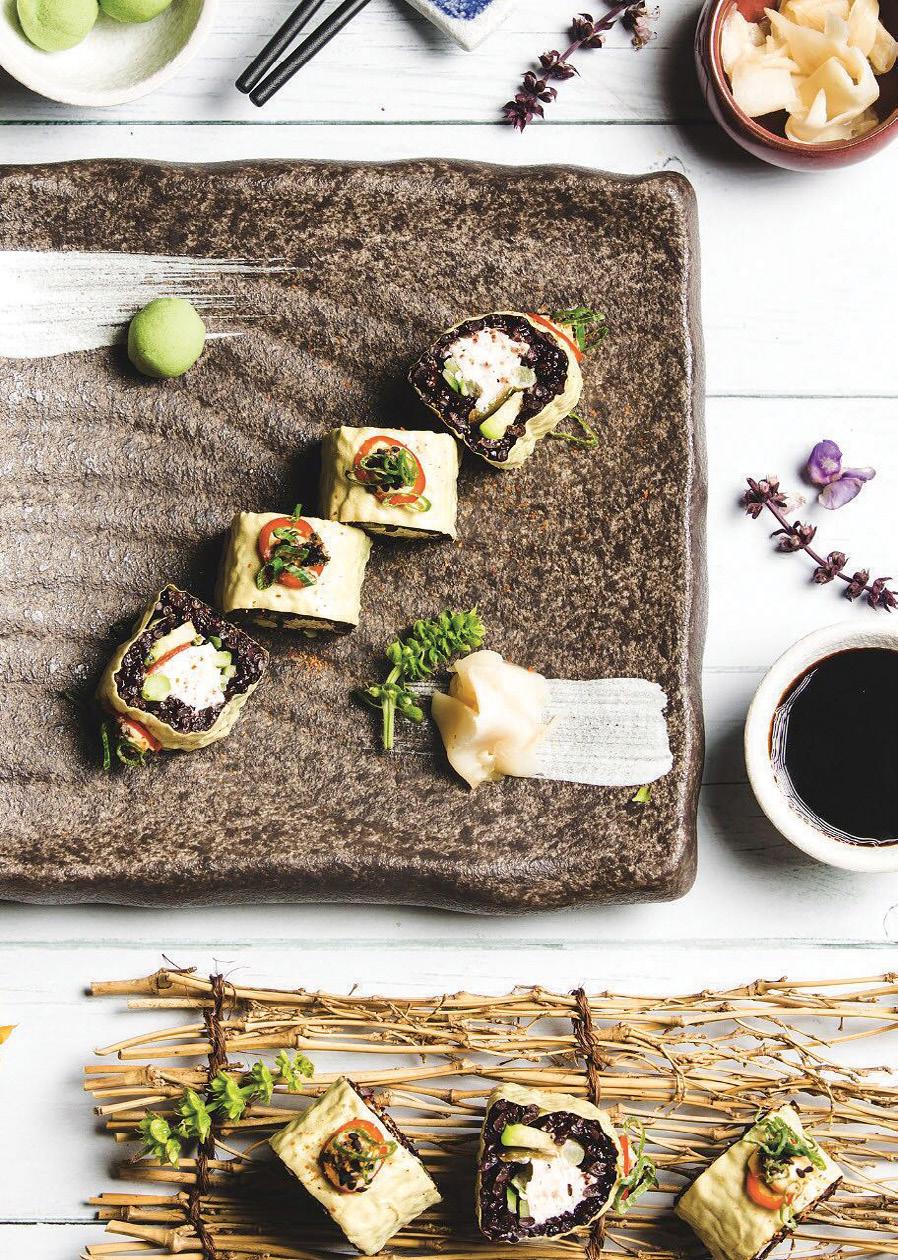
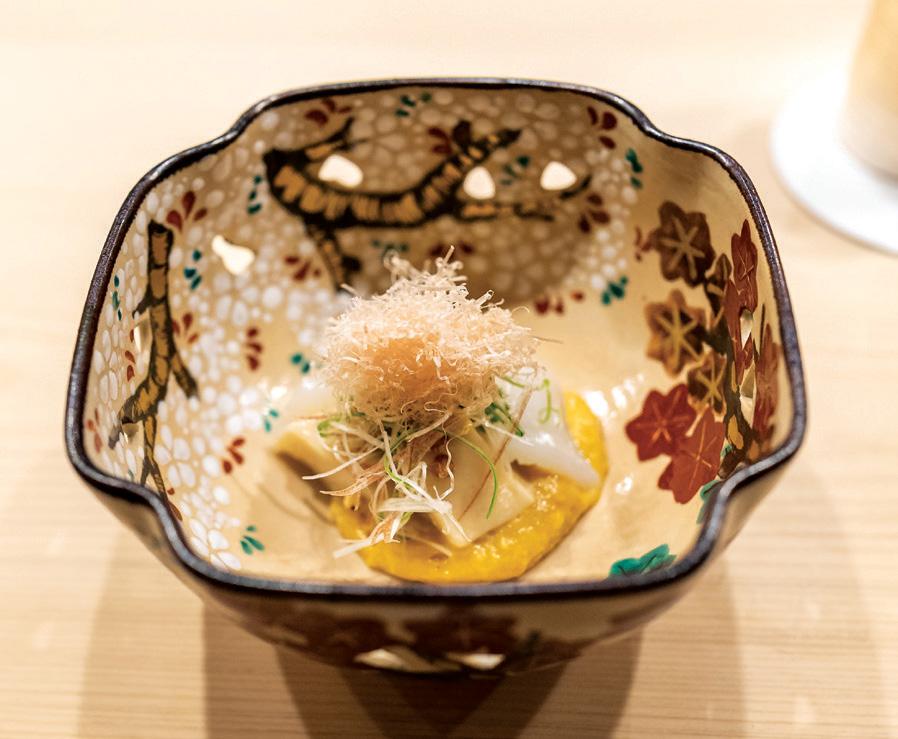
borders’ while staying true to Japanese sensibilities. Among its signature dishes are Truffle Clay Pot Rice (Truffle Kamado-gohan), a course in which steaming rice is topped with generous shavings of black truffles, infusing it with earthy aroma, and served with pickles and nori. Crab Chawanmushi (steamed egg custard) is topped with squid ink and prawn head, offering a warm-cold contrast and an umami burst.
Cost: Fourteen seats are accommodated in three private rooms with low ceilings evoking tearooms. Tasting menus range from ¥37,510–¥121,000 ($255–$820 USD), with an average of $450 per person.

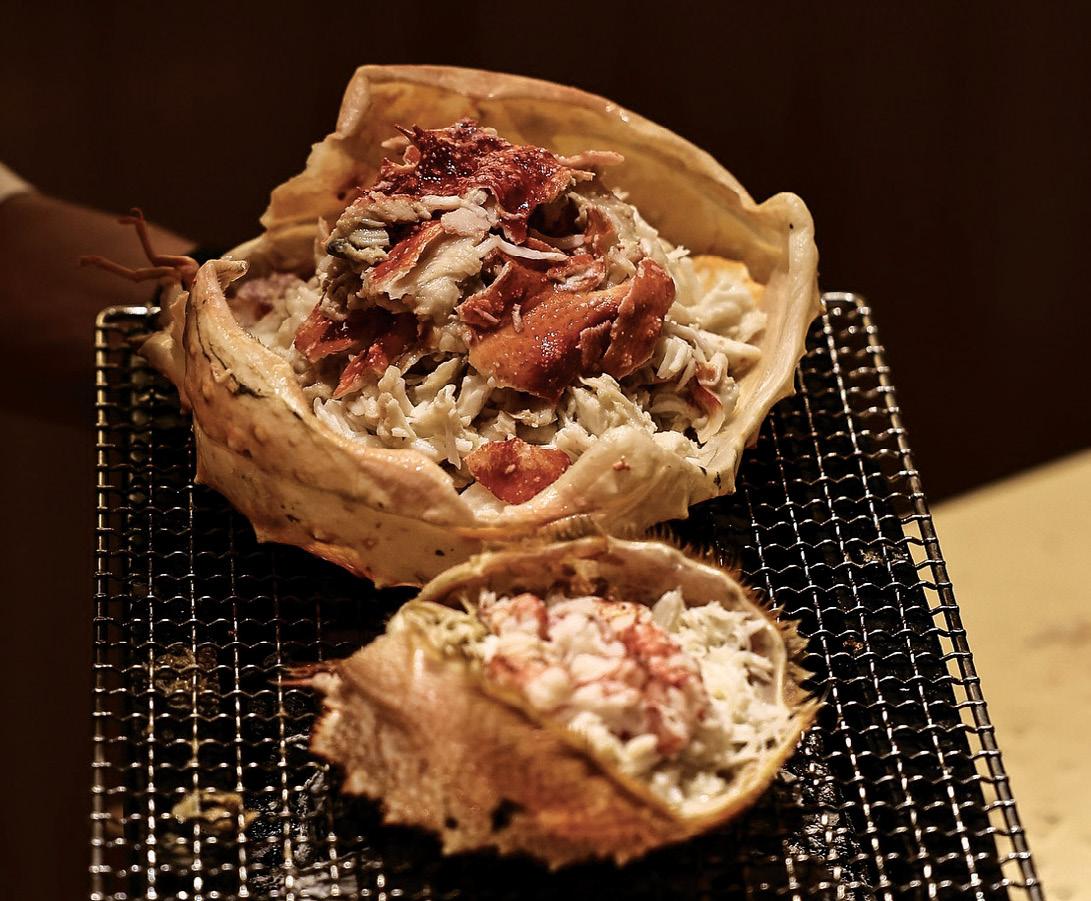
GINZA KITAFUKU
Tokyo, Japan
Ginza Kitafuku, located in Tokyo’s upscale Ginza district—renowned for luxury boutiques, cocktail bars, and sushi counters—celebrates the versatility of crab as a culinary ingredient. Led by head chef Daisuke Yamazaki, who trained at several prestigious establishments before taking the helm, the restaurant
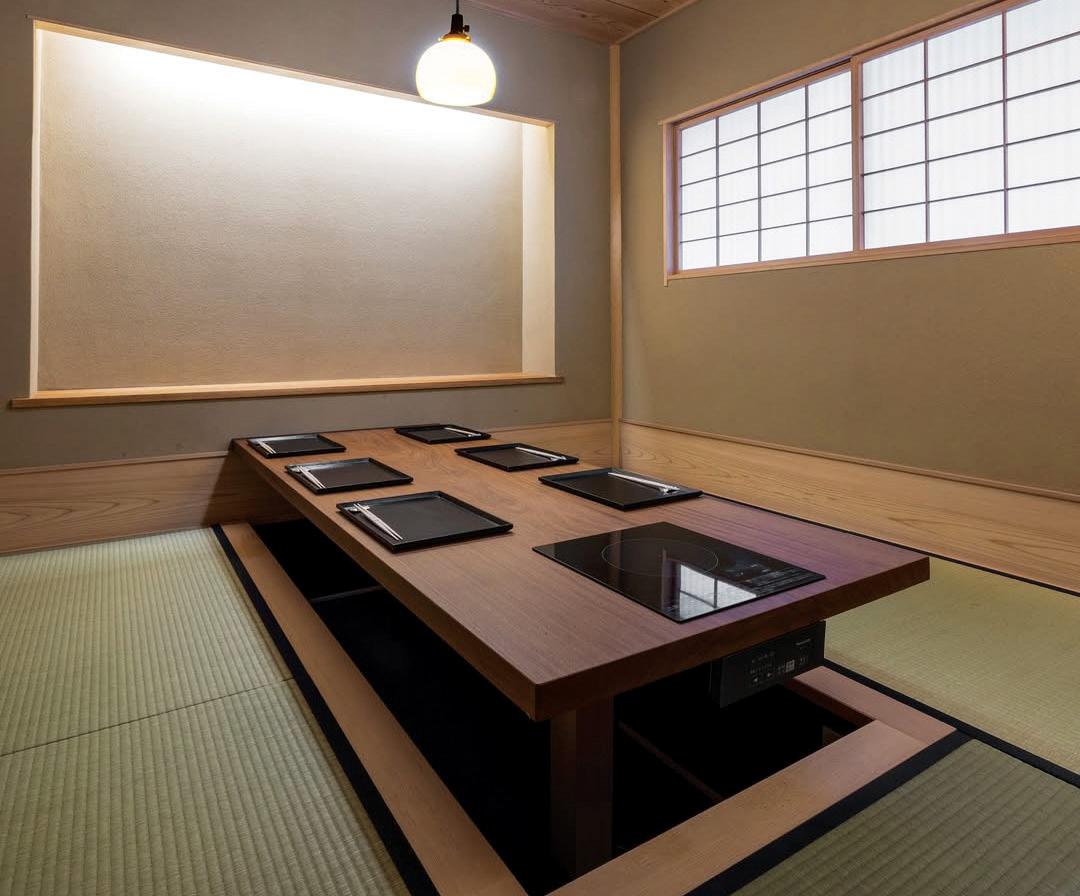
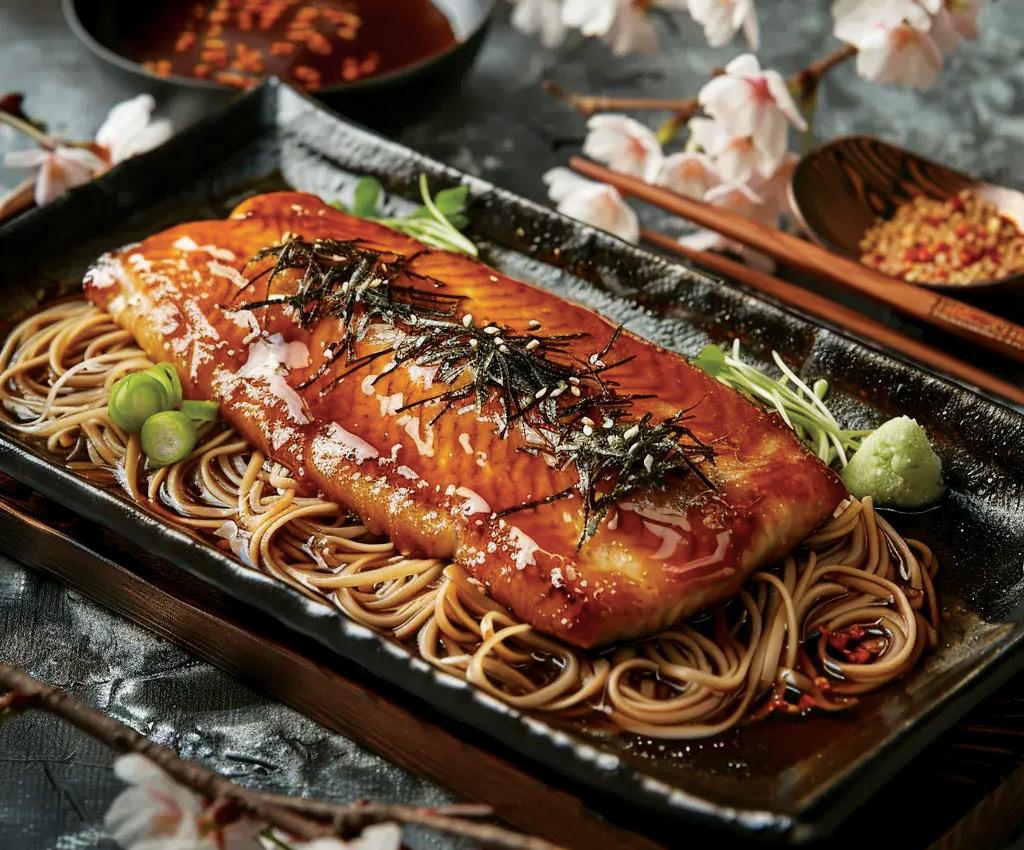
earned a Michelin star within months of opening.
Ambience: The serene private rooms feature either tatami mats or chairs and accommodate up to 16 guests. The interiors reflect modern Japanese aesthetics, with calligraphyadorned grills. Each room is assigned a dedicated chef, ensuring a personalised experience.
Food: The 1-Michelin-starred menu focuses on live crab cuisine (katsukani
ryōri), showcasing king crab, snow crab, and horsehair crab prepared in various styles—sashimi, boiled, grilled, and shabu-shabu. Seasonal Kaiseki courses complement the offering, with fugu (pufferfish) and suppon (soft-shell turtle), paired with sake or wine. The Omakase-style tasting menu revolves around crab, with courses serving the entire animal, including rare parts like golden crab (crab fat) and fundoshi (apron).
Cost: A meal here costs $400 per person.
MASA
New York City
Masa, located in New York City’s Shops at Columbus Circle, is a 3-Michelin-star Japanese and sushi restaurant renowned for its meticulously crafted Omakase experience, led by chef Masayoshi ‘Masa’ Takayama. Raised in a family fish shop, Takayama trained under sushi master Sugiyama Toshiaki at Tokyo’s famed Ginza Sushi-ko. He moved to Los Angeles in 1980 to open Ginza Sushiko, one of the city’s most expensive sushi destinations. Backed by chef Thomas Keller, he relocated to New York to launch Masa and Bar Masa. His culinary philosophy embraces Shibui (understated elegance), respecting each ingredient’s natural essence through precise preparation.
Ambience: The 26-seat dining space—10 at the hinoki wood counter and 16 in the dining room—features minimalist, Zen-
inspired decor that allows the food to take centre stage.
Food: The 26-course pre-set Omakase menu showcases premium seafood flown daily from Tokyo’s Toyosu fish market, alongside luxurious ingredients like truffles, caviar, and Ohmi beef. The experience combines traditional techniques with Takayama’s inventive touch, reflecting Kaiseki’s harmony of taste, texture, and presentation. Signature dishes include Roasted Sea Urchin with Black Truffles, fusing umami and earthy depth; Toro Tartare topped with Osetra caviar; and Tuna Bacon—tendon cuts transformed into smoky, melt-in-your-mouth nigiri.
Cost: The Standard Omakase is priced at $750 per person (dining room). The Hinoki Counter Experience is priced at $950 per person, while the Lunch Omakase experience is at $495 per person.
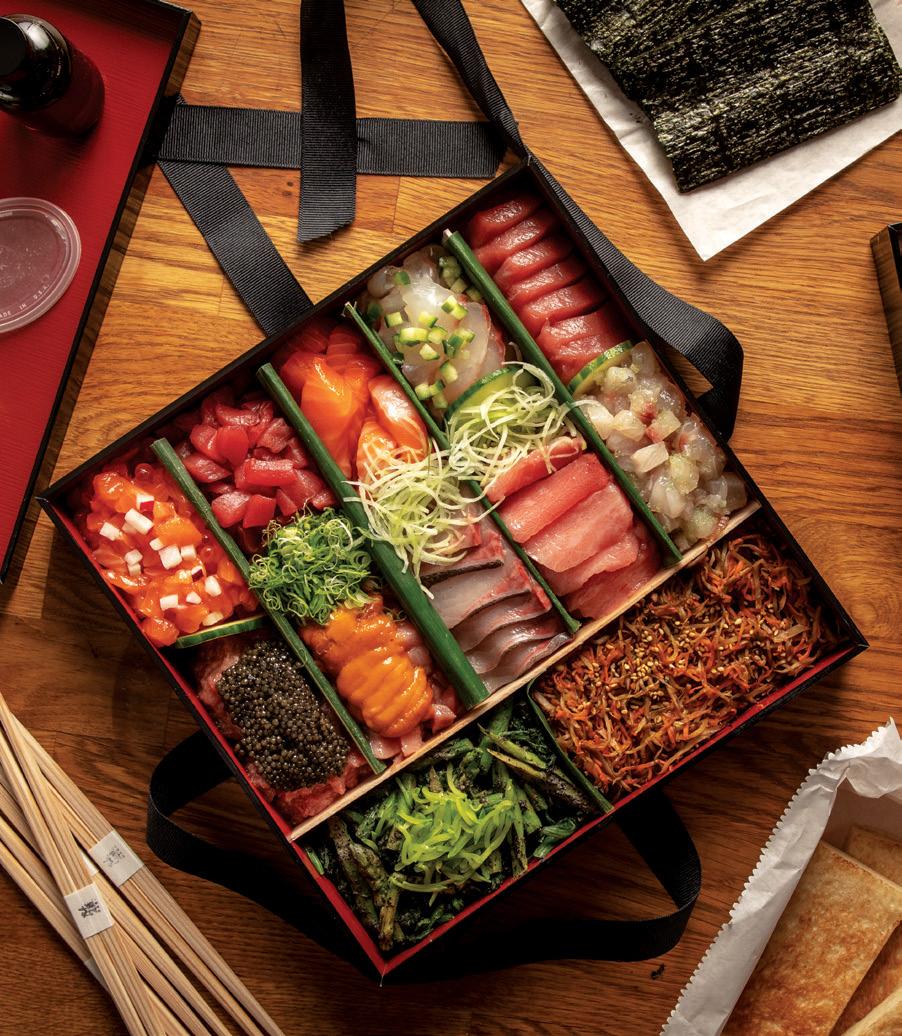
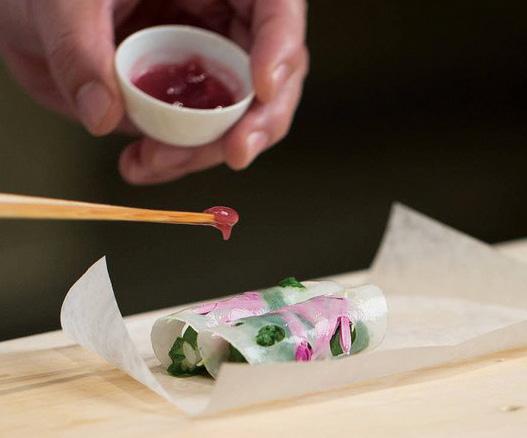



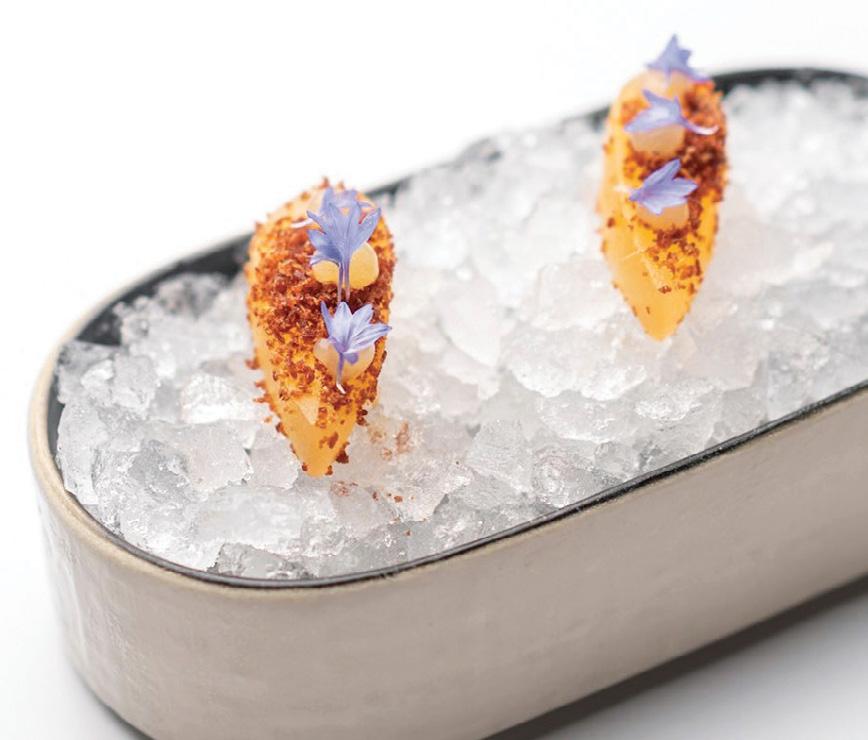
CAVIAR RUSSE
New York City
Caviar Russe in Midtown Manhattan is a 1-Michelin-star restaurant and caviar boutique specialising in premium caviar and contemporary French cuisine. This destination for caviar aficionados and fine-dining enthusiasts draws inspiration from co-owner Marianne Magnotta’s grandfather, Jerry Burns, co-founder of the iconic 21 Club. Chef Edgar Panchernikov leads the kitchen, crafting a menu that fuses classic French techniques with Japanese influences.
Ambience: The elegant second-floor ‘jewel box,’ adorned with crown mouldings, hand-painted wallpaper, and Hollywood-style bench seating, evokes a lavish townhouse atmosphere. Views of Madison Avenue lend a quintessential New York charm. The boutique offers mother-of-pearl spoons, Christofle silver servers, and takeaway caviar tins, letting guests recreate the experience at home.
Food: Signature dishes include Chilled White Asparagus Velouté with
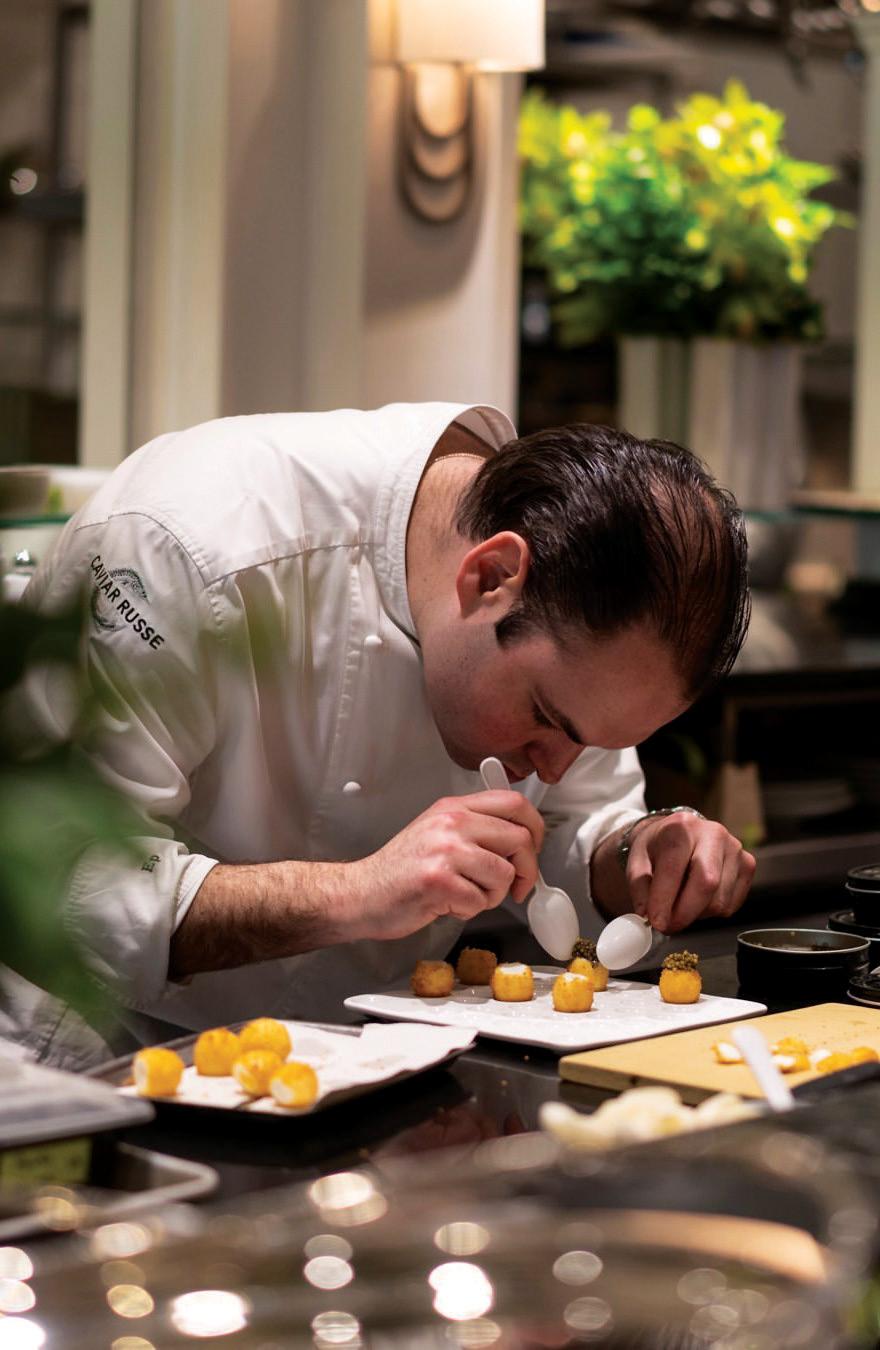

scallop tartare, almond, and caviar; Long Island Pekin duck with foie gras croquette; Japanese mackerel, white asparagus, and oysters—all elevated with caviar; and King crab in lemongrass consommé.
Cost: In the Dining Room, tasting menus range from $195 to $975 per person, while à la carte dishes are priced between $30 and $150. Caviar service begins at $65 for 25g, with premium selections like Almas Beluga at $595 for 25g.
A dinner for two with drinks can total $1,000–$2,000.



TAIAN TABLE
Shanghai,
China
The 3-Michelin Green star restaurant stands out for its inventive take on Western cuisine and intimate setting. Founded in 2016, it is helmed by German chef Stefan Stiller, a Shanghai dining veteran with over 20 years in Asia, known for his precise, ingredientfocused approach. Since 2022, the kitchen has been led by young chef de cuisine Christiaan Stoop.
Ambience: The 26-seat, sleek, minimalist dining room features an open kitchen, dark wood finishes, soft lighting, and neutral tones. French windows provide views of Shanghai’s bustling streets, grounding the refined experience in the city’s vibrant energy.
Food: Taian Table offers a Western-style tasting menu with global influences, blending French and German techniques with Asian accents, and using premium ingredients like caviar, lobster, and Wagyu. The three Michelin Green stars recognise a menu that champions seasonality, creativity, and sustainability. Signature dishes include Maine Lobster with Beurre Blanc and caviar; Wagyu Beef with Truffle Jus; Foie Gras with seasonal fruit compote, balancing richness and acidity; and molecular gastronomy-inspired desserts like Yuzu Sorbet with edible flowers.
Cost: The tasting menu is priced at ¥3,888–¥4,800 ($540–$670), with wine pairings adding ¥1,500–¥2,500 ($210–$350). A dinner for two with drinks typically totals $1,500–$2,000, making it Shanghai’s most expensive Michelin-starred restaurant.
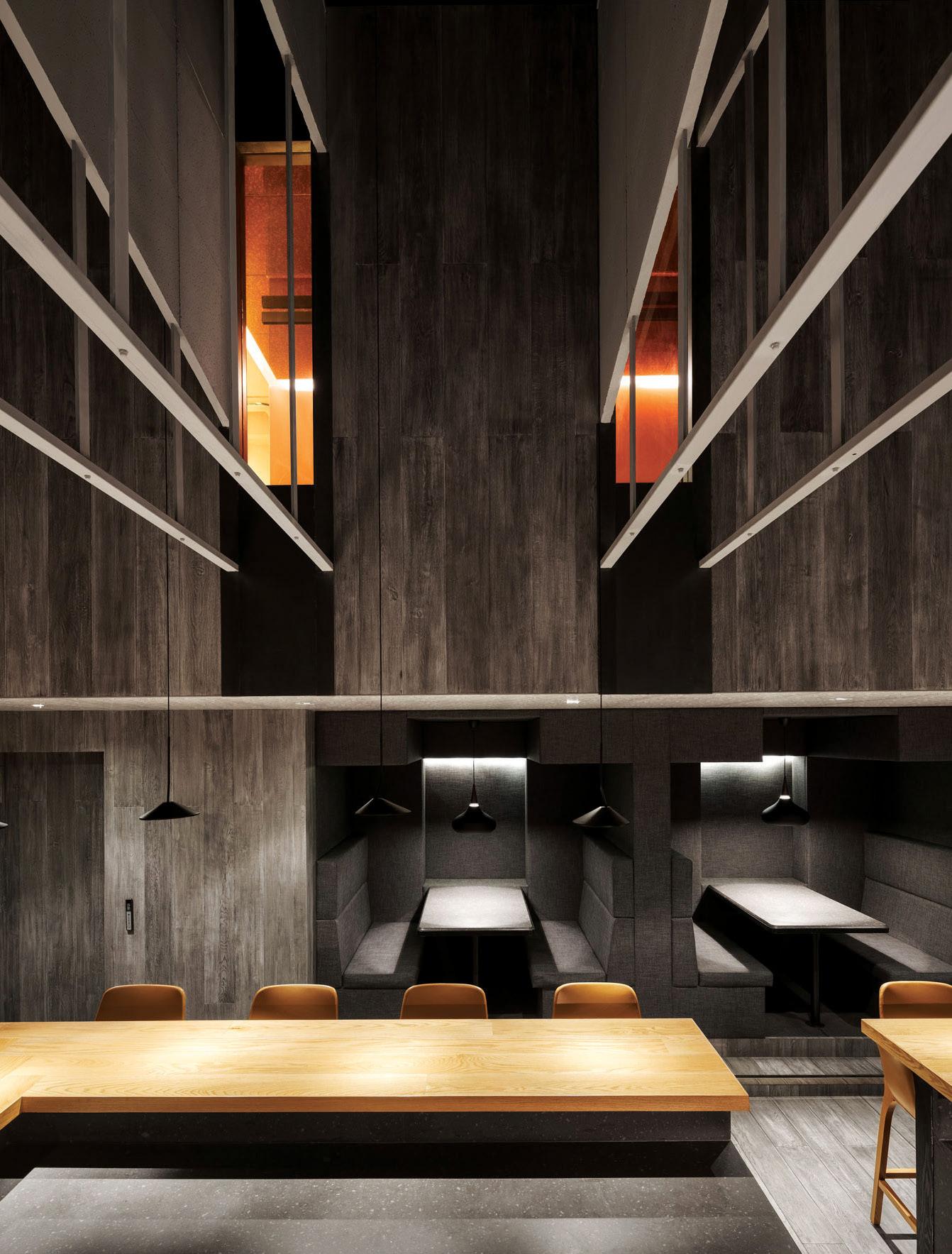
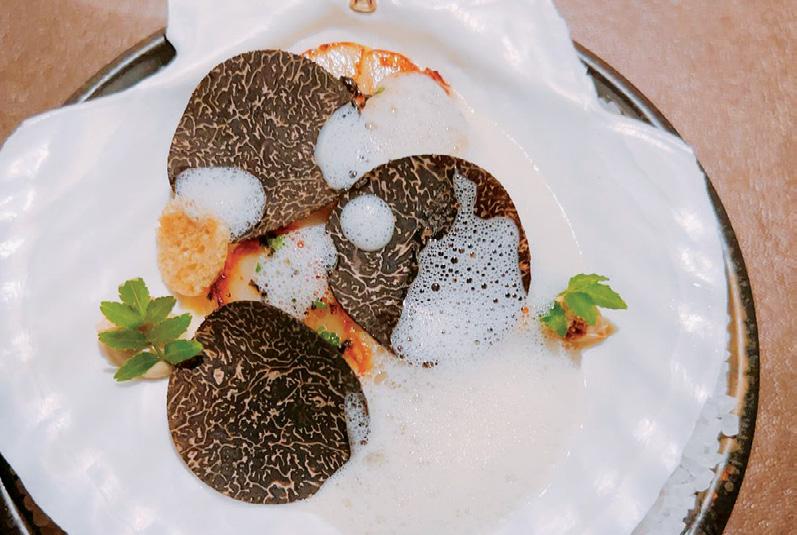

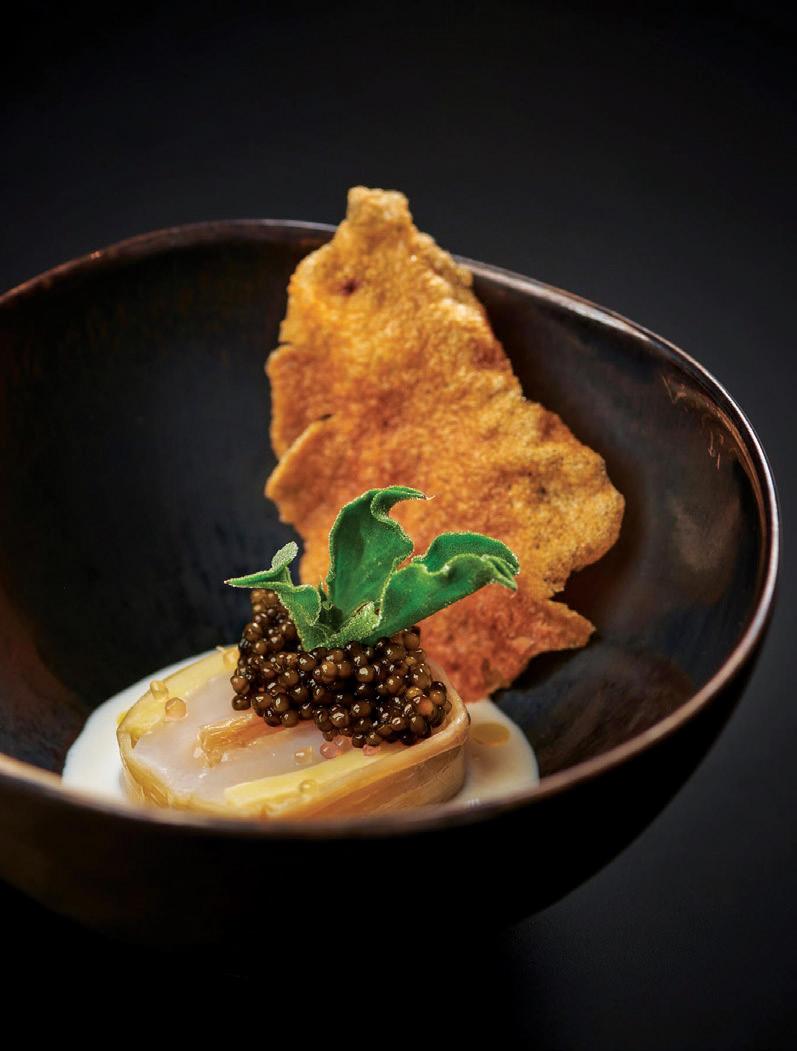
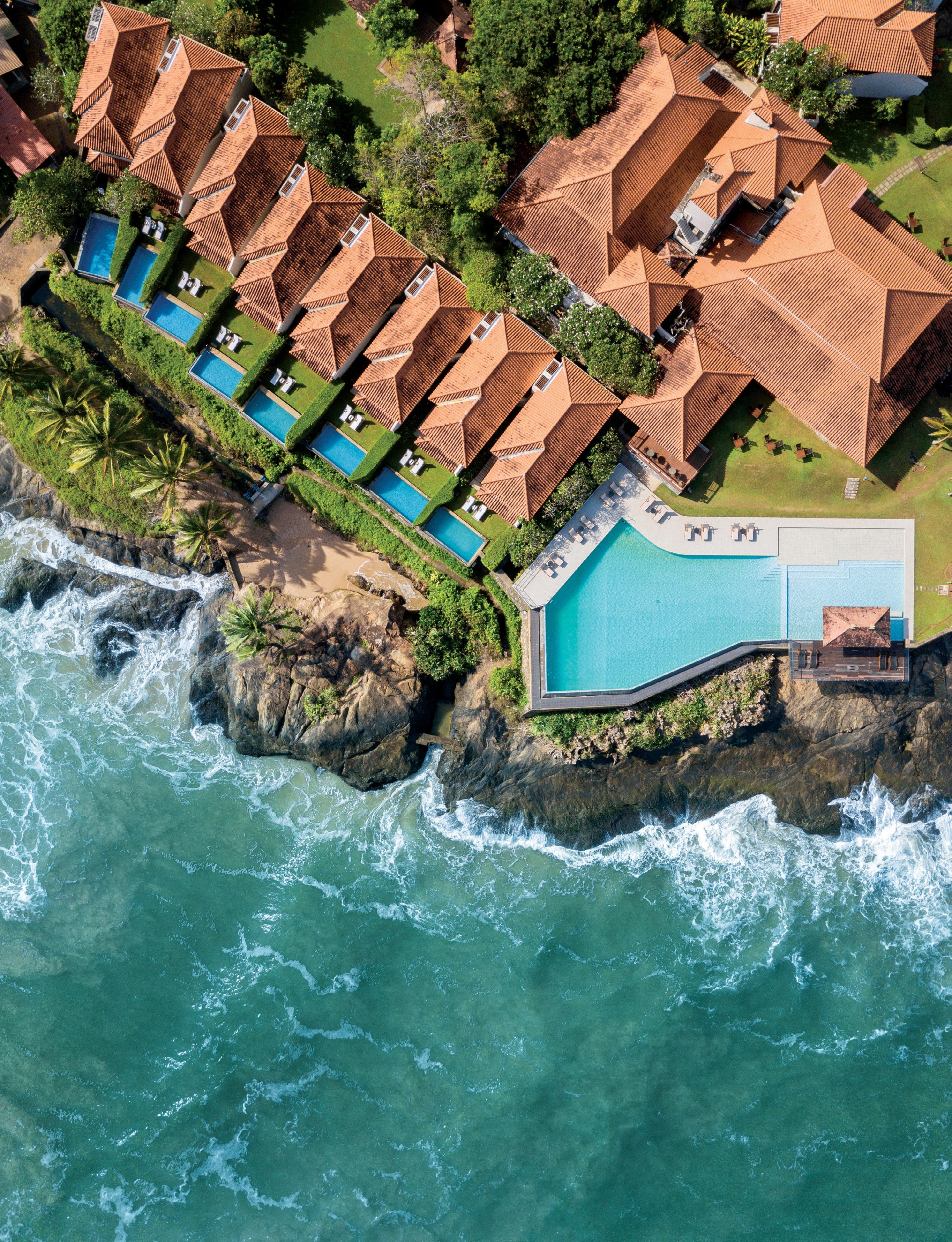
A COASTAL SANCTUARY, REBORN
Jetwing Saman Villas, familiar to many Indians as the stunning backdrop of Anil Kapoor-starrer The Night Manager, has been restored to its original splendour. The iconic coastal retreat now marries the timeless elegance of nature with contemporary comforts, offering guests a refined and immersive tropical experience.
LEFT: The 27-villa Sri Lankan boutique resort occupies a rocky promontory lapped by the green waters of the Indian Ocean.
RIGHT: The resort follows the open-plan architecture of traditional temples. Seen here are, from top to bottom, the reception block, the main restaurant, and the spa—all sheltering under pitched roofs.
The first thing that strikes you about the enchanting Jetwing Saman Villas is the interplay of natural elements that illuminate its every nook and corner. Buttery gold sunlight creates a chiaroscuro of mesmerising hues in its seafronted lobby; waterbodies reflect dappled sunshine while the oceanic roar belts out a sonorous soundtrack welcoming you into the hotel’s innards. Ayubowan!
Nestled along the south-west coast of Sri Lanka in Aturuwella village in Bentota, Sri Lanka, the beach resort occupies a hilly promontory flanked by the glutinous Indian Ocean. It first grabbed eyeballs as the breathtaking location of the 2018 OTT superhit series
The Night Manager, starring Bollywood actors Aditya Roy Kapoor and Anil Kapoor (as a debonair businessman) who lives here with his sultry girlfriend (played by Sobhita Dhulipala).
The 27-suite property quickly captivated the hearts of the peripatetic who hotfooted here to luxuriate in its tranquil location and Instagrammable villas with lush gardens, oceanic views and private plunge pools. What's more, it became a much sought-after setting as a magical backdrop to celebrate your special day with true island luxury. “We’ve had many Indian couples who have proposed here and then also gone on to tie the knot here. The most perfect end to a romantic fairy tale,” adds General Manager Farell Blom with a smile.
Yet that’s not the only reason why the hotel has acquired renown. Jetwing Saman Villas holds the unique distinction of being Sri Lanka's first boutique
luxury resort. Launched in the 1990s, the vision behind its creation was double-pronged: to establish an authentically upscale tropical retreat and to provide a serene atmosphere where guests could escape from the whirligig of daily life.
Interplay of elements
The creative mind behind the hotel’s design was the late genius architect Geevaka de Zoysa, who was influenced by the serene openplan architecture of traditional temples. He wanted to craft a hotel that artfully incorporated the timeless elegance of nature with modern creature comforts.
The end product is a fusion of airy spaces, tranquil waterbodies, and tropical gardens that lend an air of a serene oasis. Iconic architect Geoffrey Bawa's tropical modernism influences can also be traced throughout the property, adding a distinctive touch that makes the Sri Lankan lived-in experience more immersive.
The hotel's unique design ensures that all 27 luxurious suites open up to the salty ocean breeze and the surf-tipped ocean. Each suite is a harmonious blend of spaciousness and effortless elegance, paying homage to the tropical architectural style of seaside Sri Lanka. Impeccably appointed wooden interiors, Italian leather furniture, and state-of-the-art amenities create an ambience of refined comfort. Some suites even offer the luxury of a private plunge pool, sun-kissed verandahs, or gardens.
Restoring an icon
Over the years, the hotel has witnessed a spate of minor nips

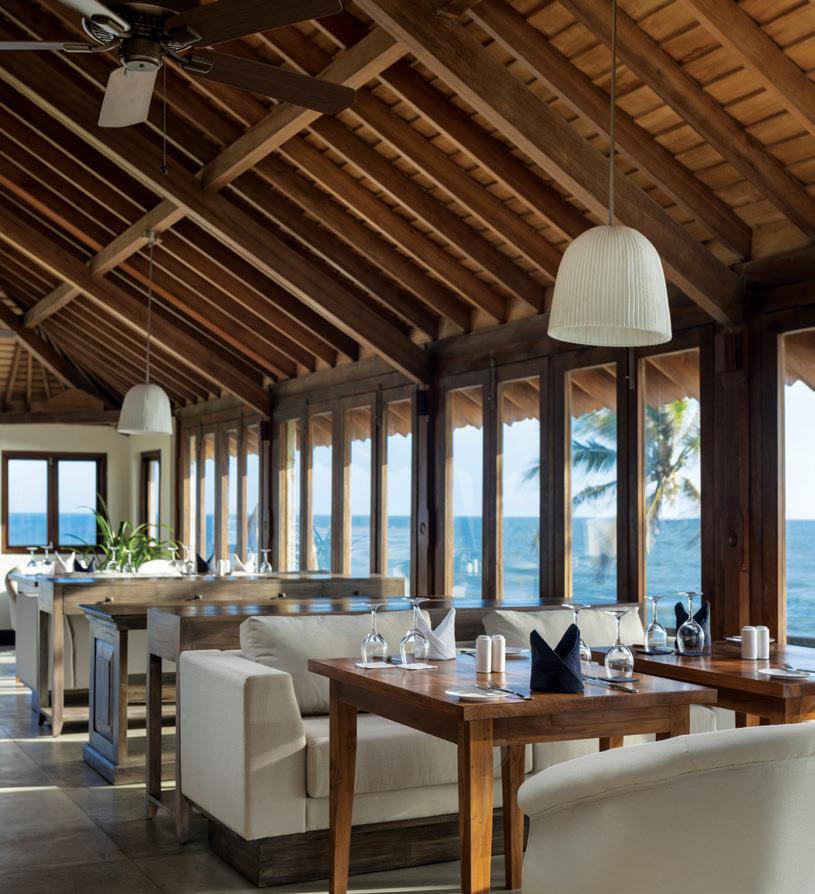


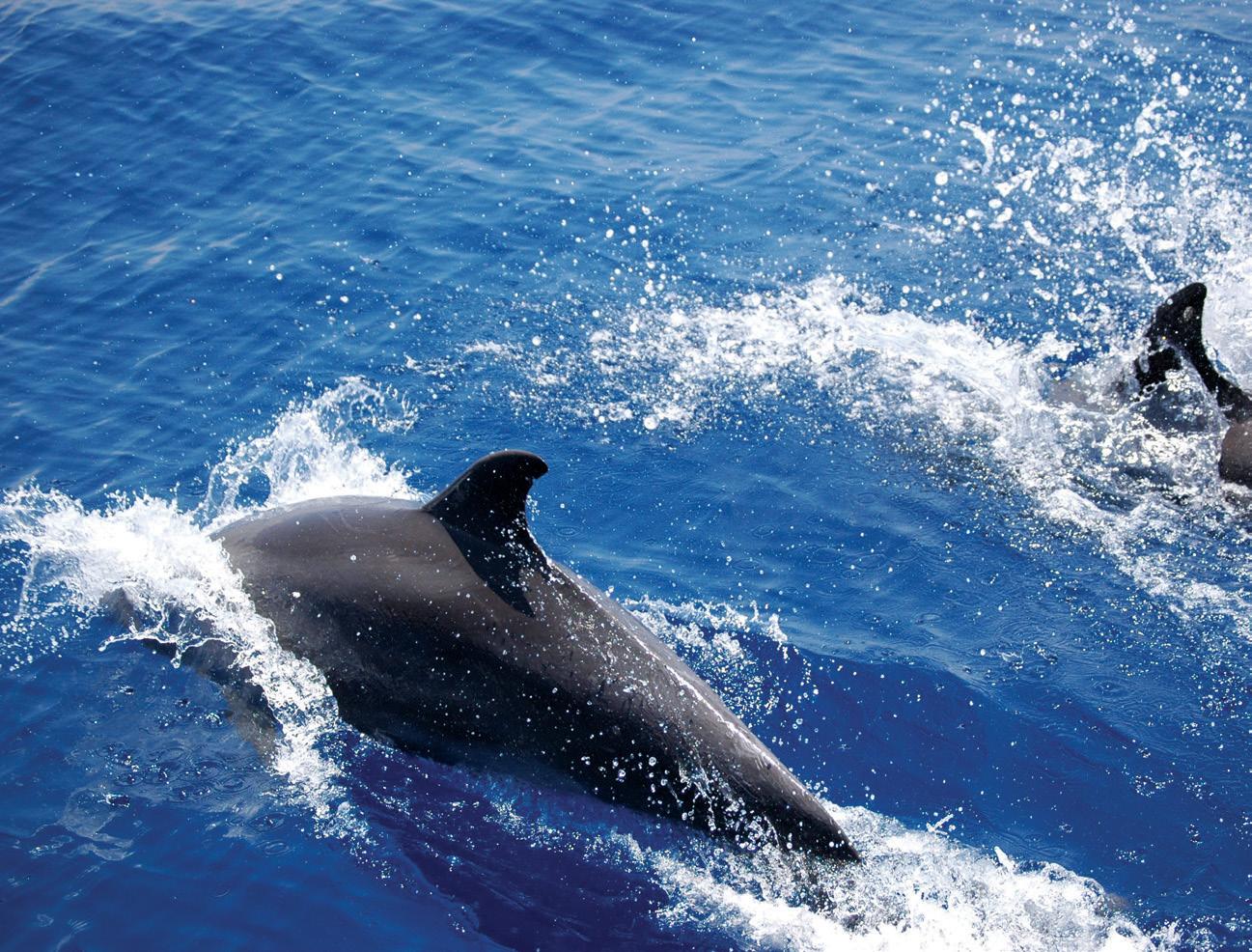
overlooked in elevating luxury,” says Hashan Cooray, DirectorMarketing and Development.
Post restoration, the rooms and suites contribute to a modern and sophisticated ambience. While the suites feature free-standing marble bathtubs, electronically controlled sun blinds, and calming water features, the rooms are equipped with single-touch mood controls and a rain shower with thermostatic smart flow. Dining experiences have also been transformed, with signature locations like Rock Dining and Spa Dining offering intimate, coastal culinary moments.
and tucks, but its comprehensive makeover has given it the imprimatur of a 21st-century property that also retains its Sri Lankan heritage. The new design follows the template of an openplan hotel, leveraging its seascape location and abundant natural sunlight to run sustainably and with minimal carbon footprint.
In its current avatar, the resort’s material palette is understated yet fulsome in detail. The interplay of stone, wood and natural wood furniture gives it a warm, lived-in feel rather than one of overpowering ostentation. Throughout, the interior spaces
are marked with subtle lighting: niches holding art collectables; designer furniture in earthy textures, and floors and walls awash in hues of ivory.
“The restoration of Jetwing Saman Villas marks the renaissance of an icon along Sri Lanka’s southern coast. The hotel was thoughtfully reimagined during a quieter tourism year, ensuring every enhancement is both meaningful and timeless. From the introduction of Italian leather furnishings and state-ofthe-art home theatre systems to handcrafted timber screens and mood lighting, no detail has been
“The hotel’s makeover transcends being a mere aesthetic upgrade—a celebration of escapism, privacy, and attentive service," continues Cooray. "With 24-hour butler service, personalised check-ins, and the serene Sahana Spa, we continue to set a benchmark for refined, tropical hospitality. The reawakening of this coastal sanctuary invites discerning travellers to rediscover romance, serenity, and indulgence in a space where every detail echoes elegance and authenticity.”
Rooms with a view
Accommodation comes in various categories—from deluxe suites to the gasp-worthy Saman Villa Suite (where Anil Kapoor stayed). Opulent without being overstated, the duplex villa exemplifies



refined restraint with subtle touches of marble, wood and terracotta. While the ground level is dedicated to a sitting room and lounge, the upper floor boasts a capacious bedroom awash in natural light and designed to effortlessly complement the tropical seascape.
But it doesn't matter where you stay. Each room comes with staple accoutrements—breathtaking views of the ocean, syrupy sunsets and breezy sunrises. Done up in tropical décor with polished wood floors, they flaunt large windows and a patio to soak in the almost therapeutic salty sea breeze. The terracotta tiled roof helps maintain coolth while offering an antidote to the catatonic tropical heat and whittling down electricity bills.
Feast for the eyes
The hotel has a large main restaurant with al fresco seating, incorporating Spanish designer Arturo Alvarez’s emotional lighting and handcrafted timber screens. A small adjoining bar
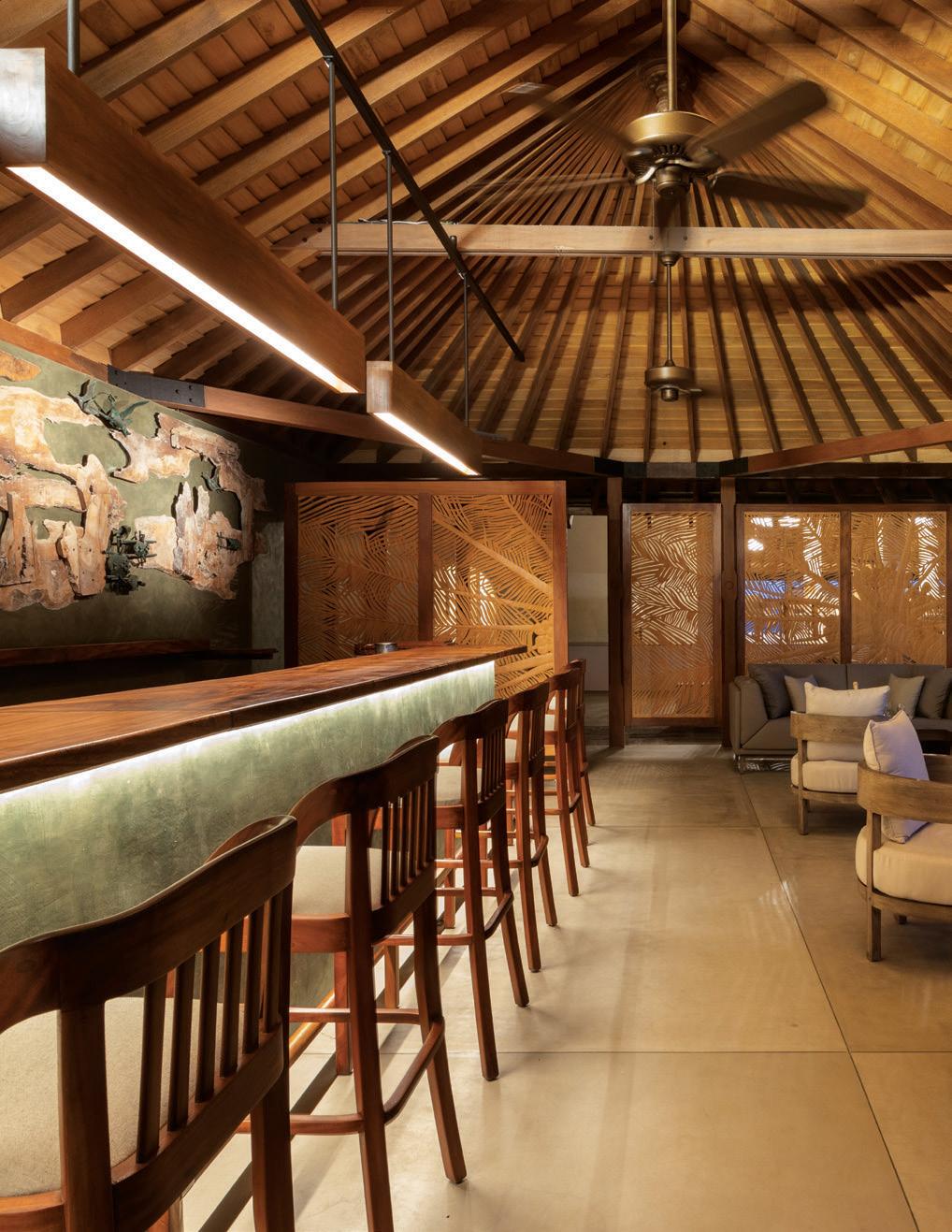
is a theatre for elemental pyrotechnics. So grab a seat here at sunset and keep cameras poised to capture the sky change colours faster than runway models—from brilliant orange to amber, russet, ochre, vermillion red...
Interestingly, because of their design elements, all culinary spaces offer visual drama,

ABOVE LEFT: The artisanal screens of the fine dine restaurant are beautiful examples of the resort's organic, textural aesthetic.
ABOVE: Guests can enjoy a scenic cycle tour across paddy fields. BELOW: Ocean vistas accompany memorable meals.

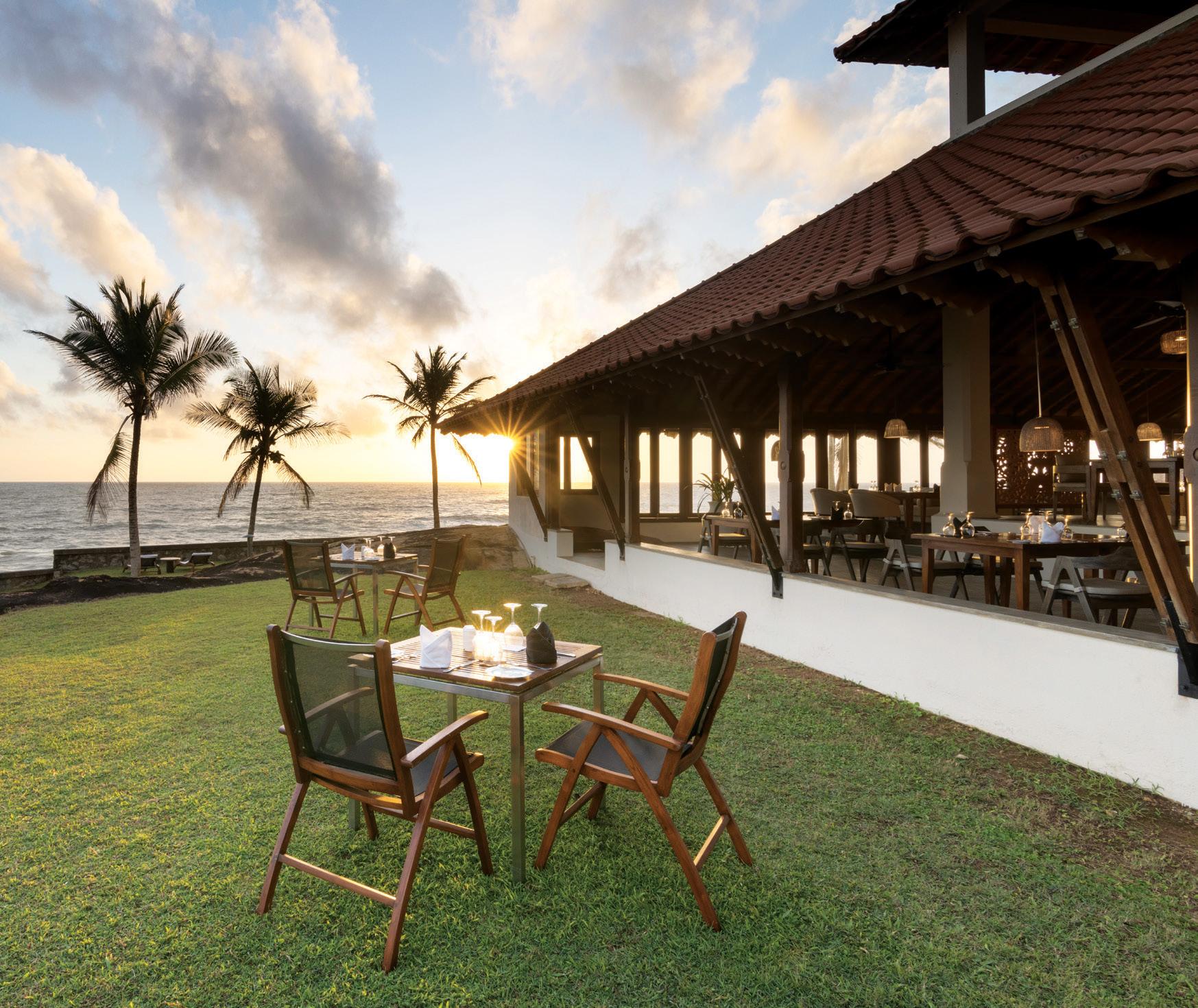
whether you’re dining ‘on the rock’ at the edge of the sea at the Pool Pavilion (a sought-after spot for an excellent high tea served in tiered silver trays or a multihued cocktail with colours that match the sunset!). Al fresco meals on the terrace overlook the glutinous infinity pool, while the verandah, surrounded by rustling palm trees, adds a different allure to gastronomic offerings.
Jetwing Saman Villas is also home to the Sahana Spa, celebrated as one of the island's most exquisite spa experiences, and Anil Kapoor’s fave haunt if rumours are to be believed! Equipped with a jacuzzi, sauna, floral bath, and more, the wellness centre nestles within a beautiful, secluded water garden.
FLYING PAST GRIDLOCK
India’s most ambitious urban mobility startup, The ePlane Co., is building the future of flight: the e200X, a cutting-edge electric vertical takeoff and landing (eVTOL) aircraft. Aviation maverick and co-founder of Akasa Air, Aditya Ghosh, gives us the details.

On average, we spend nearly three years of our lives stuck in traffic, particularly in Indian cities, which are up to 150% more congested than other major urban centres in Asia. The implications extend beyond mere inconvenience: traffic congestion is estimated to have cost the Indian economy between three and five per cent of its GDP. Even more alarming is the human toll, with one road fatality occurring every four minutes. In response to these mounting challenges, companies worldwide are actively working to solve the urban air mobility puzzle. Among them is The ePlane Co., based in Chennai. Aditya

Ghosh—Founder of Homage, Co-founder of Akasa Air, and an investor in The ePlane Co.—says the company is developing India’s first electric vertical takeoff and landing (eVTOL) project as a solution to urban mobility. Ghosh, a prominent figure in the aviation industry, shares, “The e200X, the eVTOL (electric vertical takeoff and landing) passenger aircraft, is currently being designed and developed in India, but our vision is global. It is the largest vertical takeoff passenger aircraft being developed by The ePlane Co., founded by Professor Satya Chakravarthy and incubated at IIT Madras, alongside the space startup Agnikul Cosmos. I am
proud to be an investor in the company and to serve on its board.”
e200X is the future of aviation
The vertical mobility project, e200X is a compact eVTOL aircraft being envisioned as a solution for passenger mobility. The first application is urban transportation. Ghosh points out, “Think you’re at Bengaluru airport and want to get to the heart of the city. What currently takes 1.5 hours could be reduced to just seven or eight minutes. In India, it takes an average of 30 minutes to two hours for an ambulance to reach a patient. Imagine if
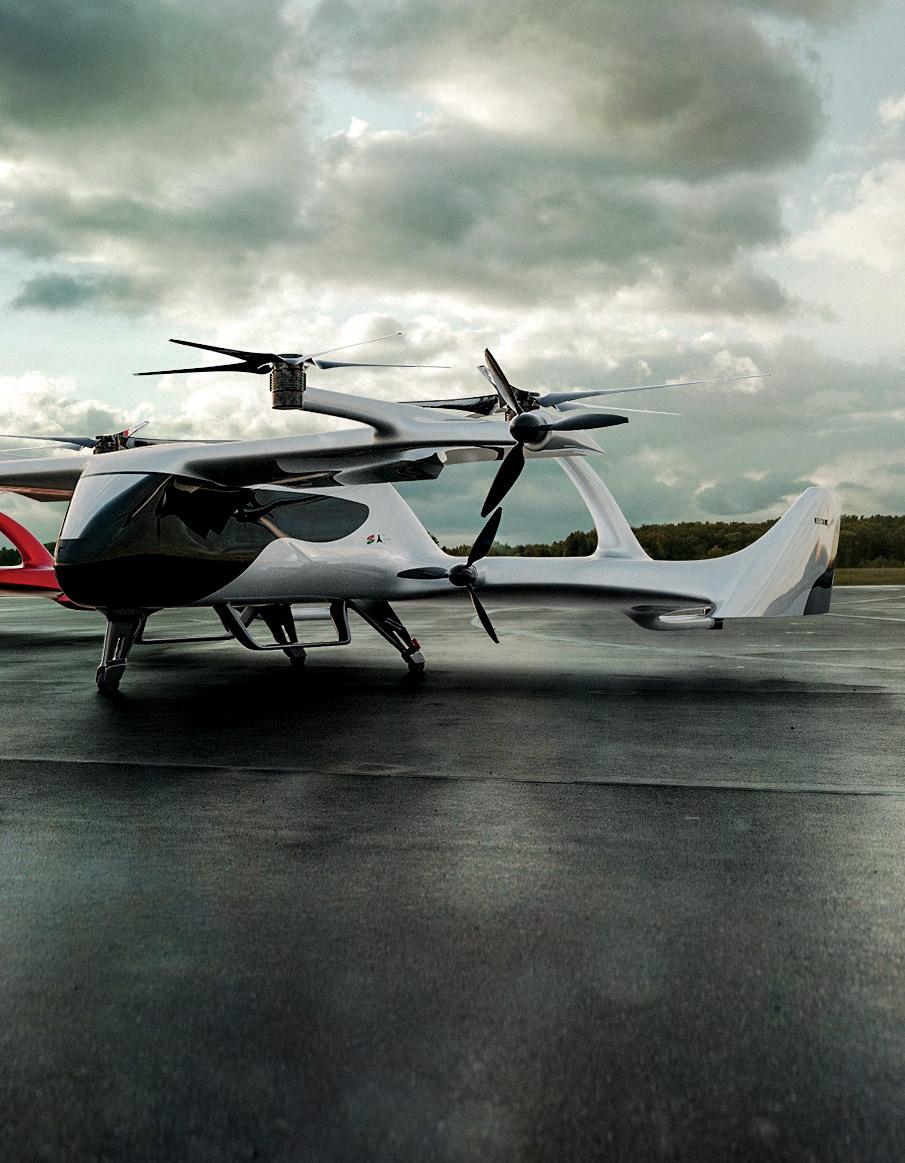
one could access a patient for emergency evacuation and address rural healthcare issues using e200X. The idea is to find a solution where you can skip roads completely and go from point A to point B within a city or over a hilly terrain.”
Offering another compelling example, he cites the journey from Dehradun to Mussoorie—a 35-kilometre stretch with 25 hairpin bends that typically takes three to four hours due to traffic. “Imagine if there were a solution that could complete this trip in just 10 minutes,” he says, “on a flight that takes off and lands in a space no larger than half a basketball court, and costs
the customer less than twice the price of an Uber ride.” The eVTOL aircraft promises to dramatically accelerate intra-city commutes and cargo transport, easing urban congestion and making travel significantly more efficient. For e-commerce companies—where logistics can account for up to 47% of total costs—the e200X represents a game-changing solution. Its technology is designed to streamline urban logistics and revolutionise cargo delivery, particularly for temperaturesensitive goods, by completing critical missions in mere minutes.
The e-plane is designed to carry one pilot with two passengers, or a pilot, a paramedic and a patient, or just a pilot with cargo. The company has already signed an MOU to deploy one air ambulance per district, and with over 700 districts in India alone, the potential for its impact is immense.
Even more exciting is the flight path, which is optimised by AI that predefines the trajectory between the origin and destination. This will ensure that multiple eVTOLs can fly simultaneously at different altitudes, ensuring smooth and efficient parallel operations. The booking is simple, through an app operating the service.

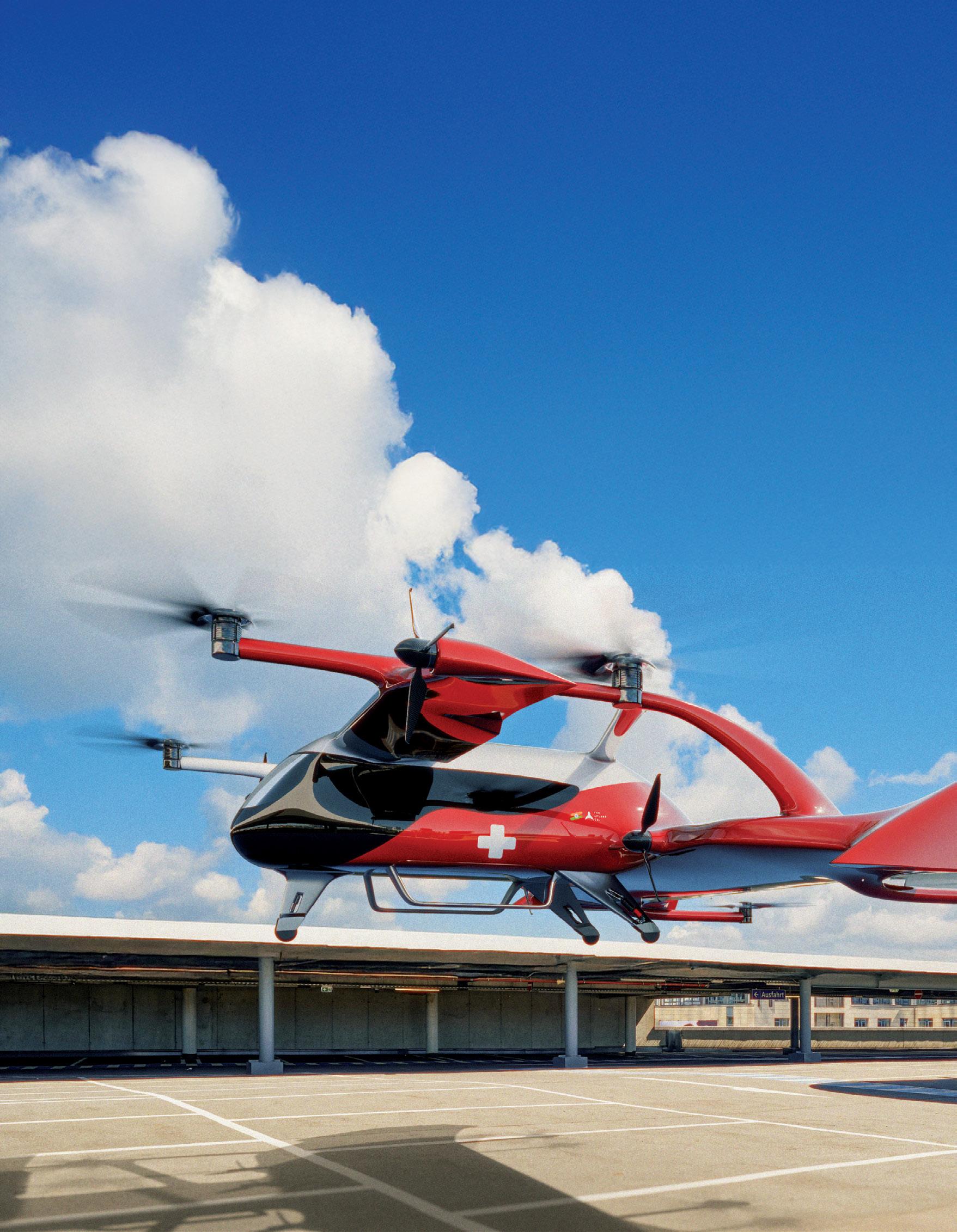
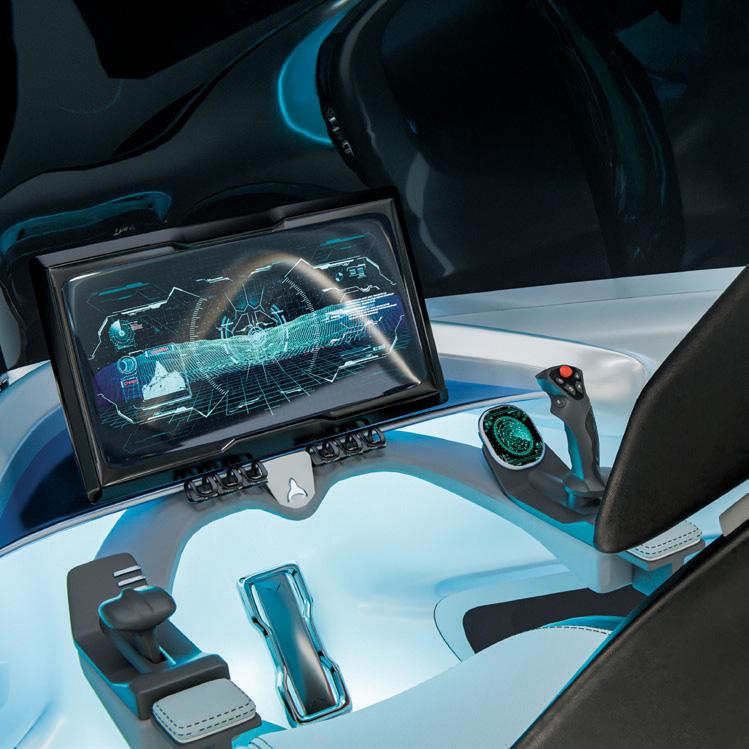
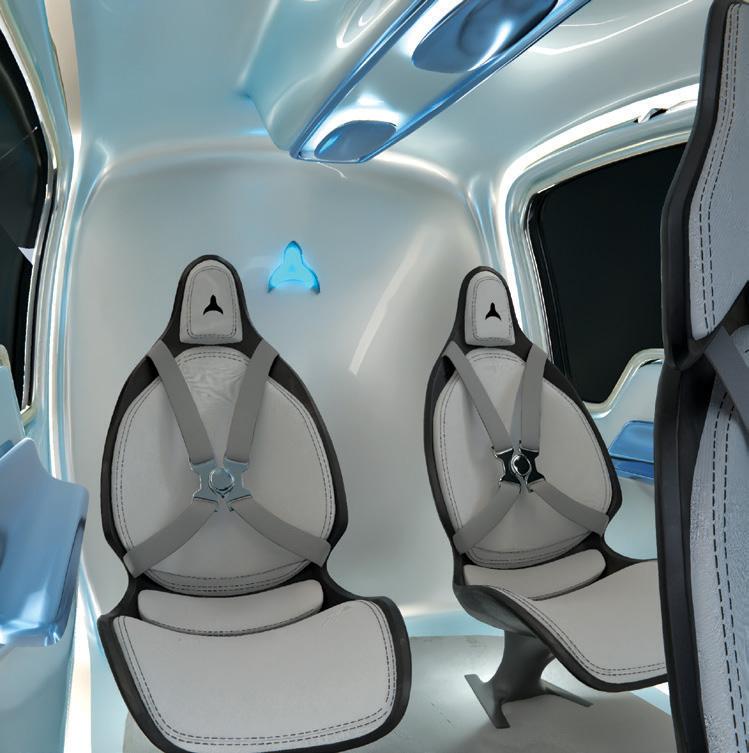


The technology behind e200X
e200X is unique in its design and backed by regulatory recognition—The ePlane Co. is the only Indian company to have received Design Organisation Approval from the DGCA (Director General of Civil Aviation). At the heart of this innovative technology is a patented approach called synergistic lift, which combines the aerodynamic efficiency of fixed wings with the vertical lift capability of rotors, powered by a battery system.
The concept, originally inspired by a NASA design philosophy, is now patented in over 30 countries worldwide.
The e200X aircraft is being built not just for India but also for the global markets. To ensure safety, the company has incorporated five levels of redundancy. Unlike helicopters, which rely on a single main rotor, the e-plane features multiple rotors and a distributed electric propulsion system. Furthermore, the aircraft is powered by advanced artificial intelligence, machine learning, and neural networks, enabling it to identify, recognise, and avoid obstacles automatically for a safer and more efficient flight experience.
Ghosh explains, “We faced and solved several complex engineering challenges. How will the aircraft take off from extremely compact spaces? How can it perform multiple missions on a single charge, requiring it to fly slowly, safely, and efficiently, all with a battery that recharges in under 30 minutes? We’ve developed a subscale prototype and are now advancing toward a full-scale, state-of-theart version of the e200X—India’s most compact and capable eVTOL solution.”

ADITYA GHOSH
INVESTOR,
THE EPLANE CO.
“The e200X, the eVTOL (electric vertical takeoff and landing) passenger aircraft, is currently being designed and developed in India, but our vision is global.”
Opening new possibilities for tourism
Ghosh is optimistic that e200X aircraft will contribute to the future growth and transformation of India’s tourism sector. “This is an incredibly exciting space for both India and the world. One of the most promising applications of this aircraft will be in ecotourism, making remote and beautiful destinations more accessible. For instance, Hogenakkal Falls, a stunning location near Bengaluru, currently takes about four hours to reach by road. With the e200X, that journey could be reduced to just a 20-minute flight. This opens up countless opportunities for tourism, with aerial experiences,
customised tours, and luxury travel becoming more feasible, creating new possibilities for both local and international tourism.” Currently, The ePlane Co. is focused on the design, development, and manufacturing of the aircraft. “We are in the business of creating the equipment—much like a car or aircraft manufacturer,” says Ghosh. “There will be several companies either purchasing it for commuter services or personal use. Thanks to the brilliant team at IIT Madras, I’m privileged to be a part of this groundbreaking initiative. This isn’t a distant dream—it could become a reality within the next three years.”
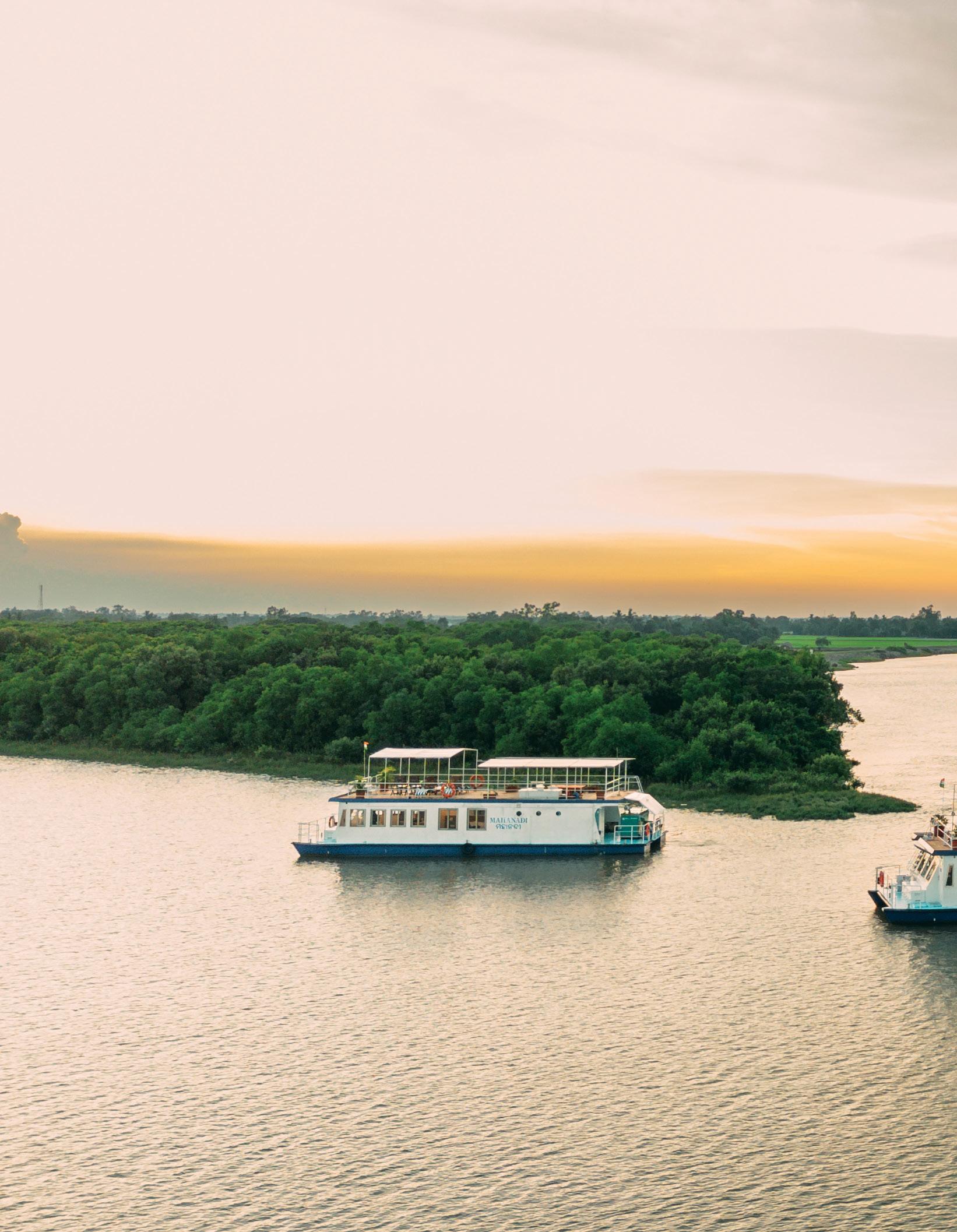
CRUISING ON INDIA’S RIVER HIGHWAYS

River cruise tourism, already growing at record levels, is set to expand even faster on the back of new policies and private sector investment. Are they the next frontier of luxury travel?

SUMAN TARAFDAR
Long, long ago—well, nearly two decades ago —when in Kolkata for a hotel opening, I was invited to go on a cruise down the Hooghly. It was a hired vessel, which sailed from Outram Ghat to Belur and Dakshineshwar, both just north of Kolkata. Outram Ghat, along with Princep Ghat, was one of the most important entry points for ships to India. At the time, most ferries, largely decrepit, were used locally to cross the Hooghly, a practice that still continues. Not quite in pristine shape, the vessel we were in had a capacity of 150 passengers, and was occasionally used for parties and events, we were told. On average, it operated less than a month annually, the captain informed mournfully.
Two decades on, the same stretch, and more, are now home to some of the most expensive river cruises in the country. Yes, the scenario for river cruises has moved on considerably, growing at a record pace. Of course, river cruise tourism has had strong roots in some parts, such as in the backwaters of Kerala, especially in and around Lake Vembanad and Alappuzha, Dal Lake in Kashmir, Sundarbans, downstream Zuari and Mandovi rivers in Goa, amongst others.
According to Statista, by 2025, it is projected that the revenue in the cruise market will reach US$229.96m in India. The revenue is expected to display an annual growth rate (CAGR 2025-2029) of 8.53%, resulting in a projected market volume of US$319.05m by 2029. The number of
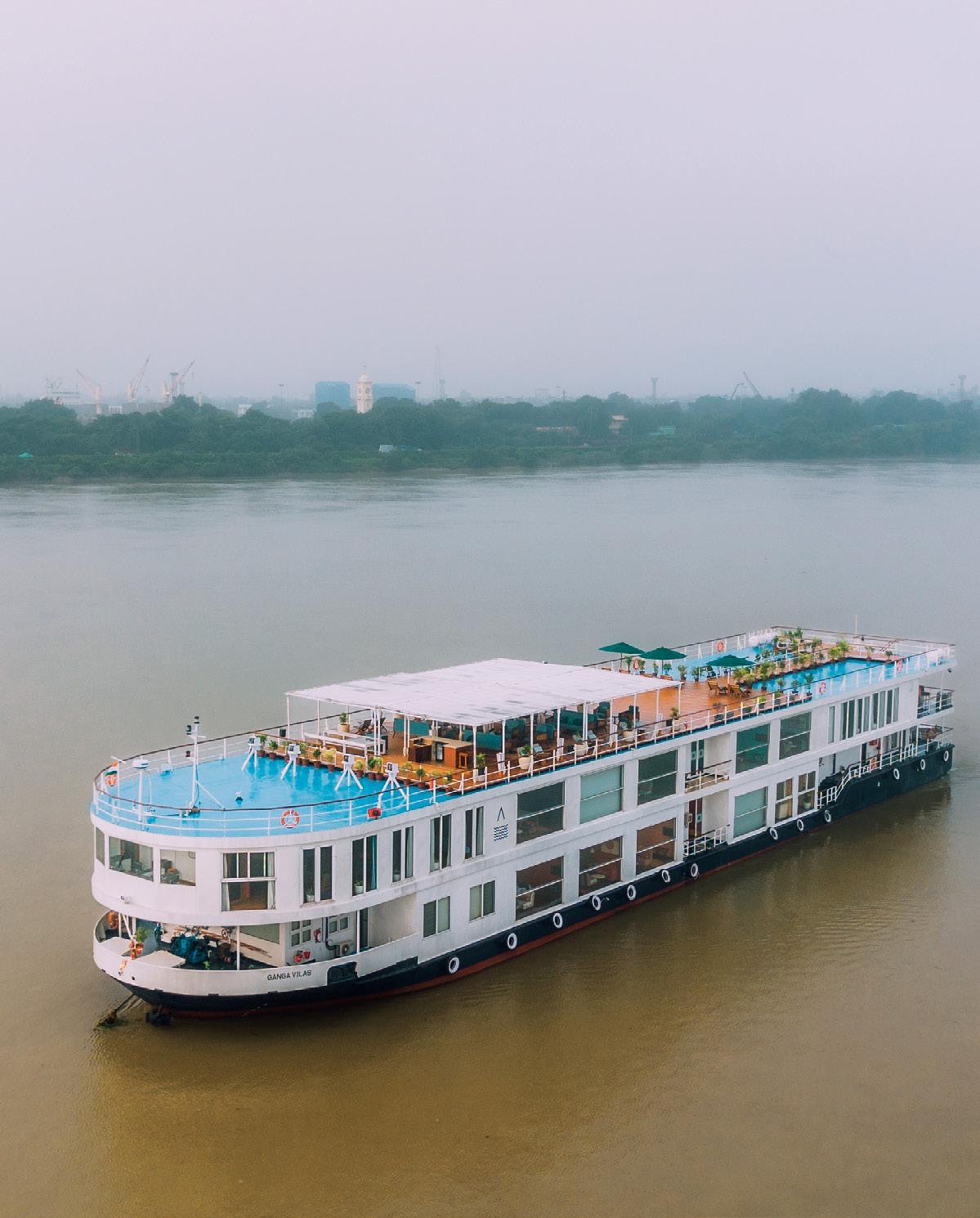
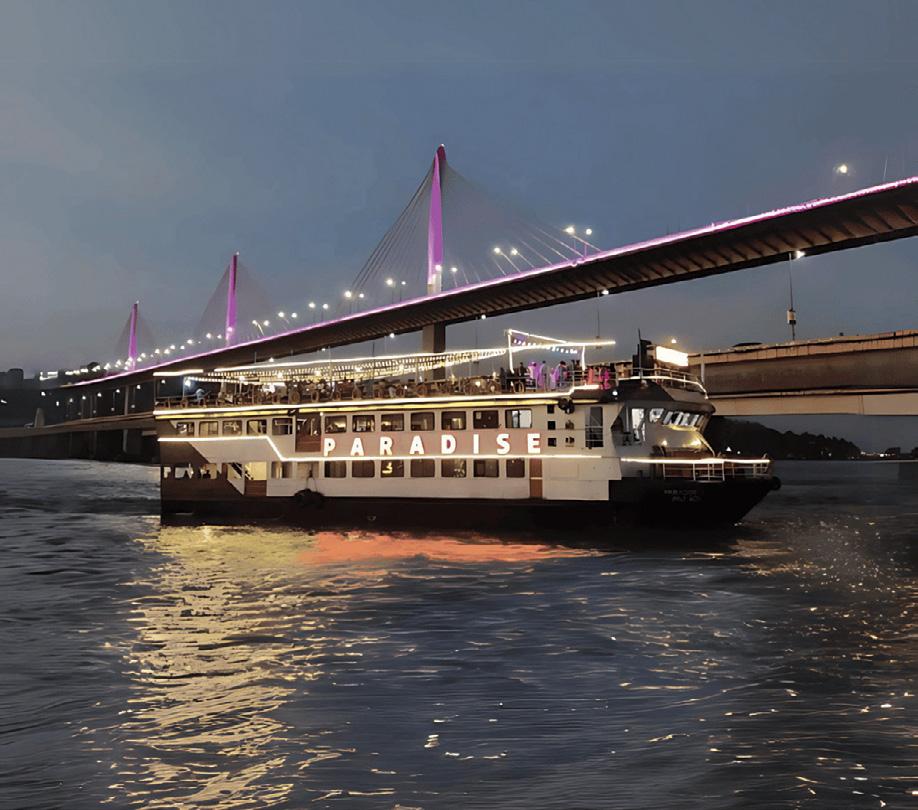
LEFT: Traversing for 51 days across two countries, five states and 27 river systems, Antara’s MV Ganga Vilas' 3,200kms. route is the longest in the world.
BELOW: Day cruises on the Mandovi, especially during the evenings, offer picturesque views of the Panjim promenade.
users in the cruise market is expected to amount to 1.20 million users by 2029, while the user penetration is expected to increase from 0.03% in 2025 to 0.08% by 2029. The average revenue per user (ARPU) is expected to be US$490.11.
Modern river cruising in India arguably started with Assam Bengal Navigation (or ABN), an Indo-British family-owned joint venture in 2002, when Andrew Brock and Ashish Phookan "both jumped at the chance to explore this exciting idea together". Two decades later, and with four cruise ships and houseboats, ABN is the most experienced operator.
River cruises have taken off in India. The Cruise Bharat Mission (CBM) was launched in September 2024 and aims to boost the tremendous potential of cruise tourism in the country, both for sea and inland waterways. CBM aims to double cruise passenger traffic within five years; i.e. by 2029, up from 4.71 lakhs cruise passengers in FY 2023- 24. CBM specifically aims to target 1.5 million river cruise passengers over more than 5,000kms. of operational waterways in India. The number of operational National Waterways has grown from three in 2014-15 to 24 by 2023-24, with a target of 29 by 2024-25.
The potential of river cruise tourism in India is significant as the country has a network of 110 navigable waterways of more than 20,000kms. in length, connecting around 400 rivers. CBM aims to create 400,000 jobs in the cruise sector by 2047, with river cruises contributing significantly due to their labour-intensive operations, such as crew, guides, and hospitality staff.
THE KEY TO DEVELOPING RIVER CRUISES
Initiatives taken by the Inland Waterways Authority of India (IWAI), established in 1986, to develop river tourism include:
Developing the navigational channel on waterways along with navigational aids and carrying out dredging (the process of removing sediments), if necessary, in some navigable waterways.
Construction of vessel berthing facilities at multiple points along the waterways for the ease of movement of tourists.
Developing an ecosystem for river cruise tourism along with the promotion of heritage sites and tourist attractions along the waterways.

The development of inland waterways holds great promise for transforming India’s logistics sector. "By leveraging our extensive network of rivers and water bodies, we can create a sustainable, costeffective, and efficient mode of transportation for goods," the Union Minister of Ports, Shipping and Waterways (MoPSW), Sarbananda Sonowal recently said while inaugurating the Inland Waterways Terminal (IWT) at Jogighopa, which is expected to serve as an international port of call for Bhutan and Bangladesh, facilitating seamless movement across northeast India.
"We are attempting to rejuvenate the support system of inland waterways so that we decongest railways and roadways, and at the same time, provide a viable, economic, sustainable and efficient mode of transportation for both passengers and cargo operators," Sonowal said recently.
"The government’s focus on ocean and river tourism is a game-changer for India’s inland waterways," Raj Singh, the founder and Chairman of Antara Cruises (Heritage River Journeys Pvt Ltd), said in an interview to The Week recently. Antara, which has five vessels currently, is on an expansion spree and has already become known for its luxurious vessels. "This initiative
not only promotes responsible travel but also positions India as a rising player in global river cruising. We see critical areas that need focus, including connectivity, amenities and safety."
Amongst the necessary upgrades, Singh suggests enhancing connectivity for better road and rail links to cruise terminals, world-class docking facilities with clean restrooms, waiting areas, safety standards and emergency protocols to build trust among travellers. "With targeted improvements and proactive policies, river tourism can become a major pillar of India’s travel industry, driving both economic growth and sustainable tourism."
In January 2023, the country’s longest river cruise was launched; it traverses 3,200kms. from Varanasi to Dibrugarh. Significantly, it uses the Ganga-PadmaBrahmaputra network across 27 river systems, five Indian states and Bangladesh.
A more recent development has been the signing of an MoU between IWAI and the Ministry of Ports, Shipping and Waterways (MoPSW) with various Delhi government agencies to develop a four-kilometre stretch of the Yamuna (NW-110) between Sonia Vihar
CONTD AHEAD

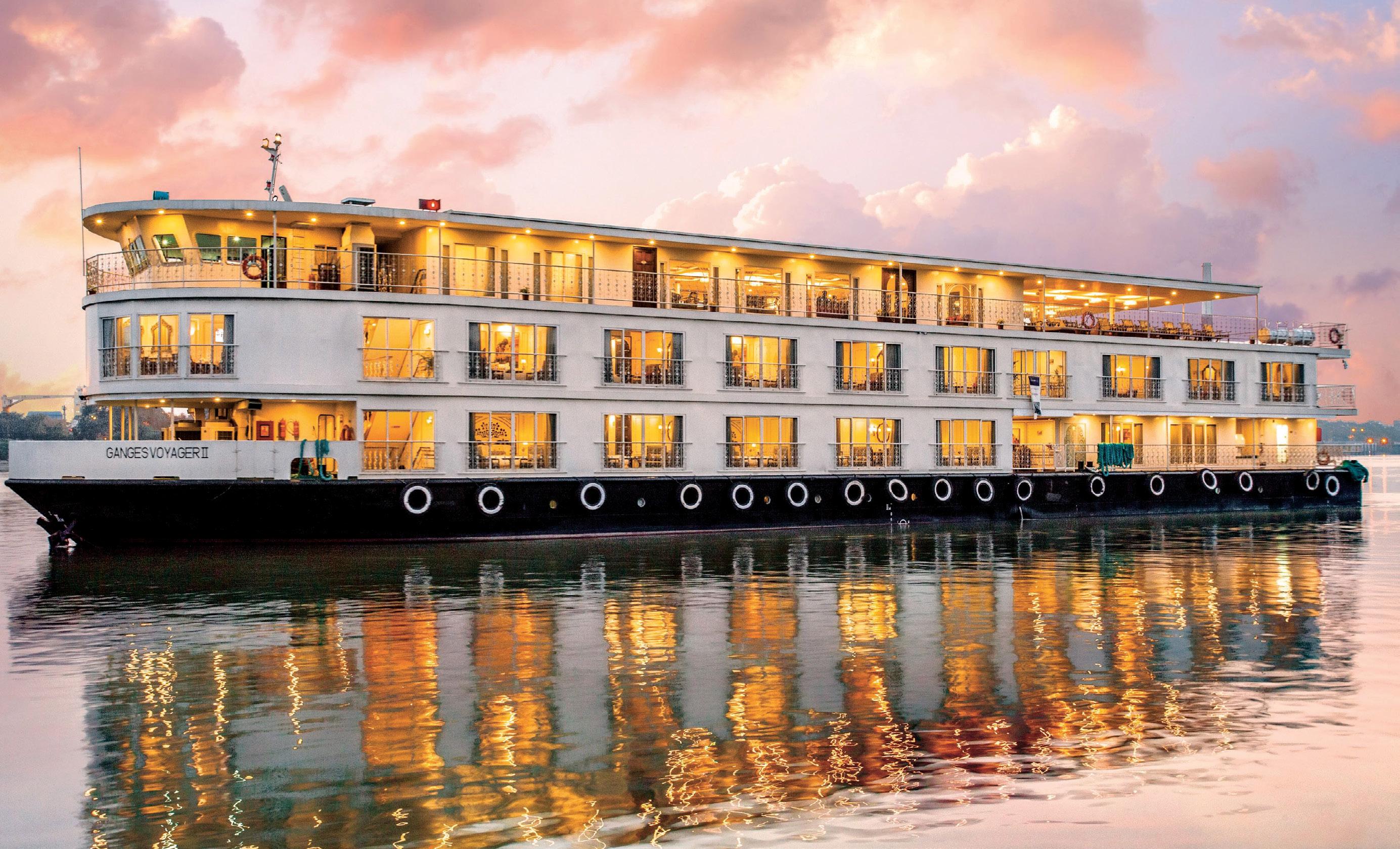
THE BEST RIVER CRUISES
Ganga Vilas Cruise
Ganga River Cruises
(UPPER AND LOWER GANGES)

Operator
Antara Luxury River Cruises.
Route
Varanasi to Dibrugarh via Bangladesh, covering 3,200kms. Across 27 river systems.
Duration
51 days (world’s longest river cruise); shorter 21- or 31-day options also available.
Highlights
Stops at UNESCO World Heritage sites such as Sundarbans, Kaziranga National Park, Majuli Island, and Varanasi’s spiritual ghats. Features 18 luxury suites for 36 passengers, gourmet dining, and cultural excursions.
Cost
₹25,000–50,000 per person per day.
Why choose?
Unmatched for its epic scale, combining India’s spiritual heart with Assam’s wildlife and Bangladesh’s deltas.
Operators
Antara Cruises, Assam Bengal Navigation, Pandaw, Avalon Waterways.
Routes
Upper Ganga: Kolkata to Varanasi (11–14 days).
Lower Ganga (Hooghly): Kolkata to Farakka or Kolkata roundtrip (4–8 days).
Highlights
Visits to Kalna’s terracotta temples, Murshidabad’s Hazarduari Palace, Chandannagar’s French colonial sites, and Varanasi’s Ganga Aarti. Ships like Ganges Voyager II (28 passengers) and RV Kalaw Pandaw offer premium cabins, onboard lectures, and guided shore excursions.
Cost
₹50,000–1 lakh per person for the trip.
Why choose?
Perfect for cultural immersion, with small passenger counts ensuring personalised experiences. Travellers praise the manageable group sizes and expert guides.

Kerala Backwaters Cruises

Operators
Oberoi Vrinda and other houseboats.
Route
Alappuzha or Kochi, navigating Vembanad Lake and backwater canals (1–7 days).
Highlights
Traditional houseboats (1–2 cabins) or luxury vessels like MV Vaikundam (18 passengers) glide past paddy fields, coconut groves, and villages. Includes authentic Kerala meals, birdwatching, and visits to Champakulam’s waterfront. Oberoi Vrinda offers 5-star amenities like private jetties.
Cost
₹10,000–50,000 per person, depending on vessel and duration.
Why choose?
Serene and intimate, showcasing Kerala’s laid-back charm and culinary delights. Perfect for shorter, relaxing trips.
Brahmaputra Cruises
Operators
Adventure River Cruises and Assam Bengal Navigation.
Route
Guwahati to Jorhat/Dibrugarh (eight to 10 days).
Highlights
Explores Kaziranga National Park (UNESCO site with onehorned rhinos), Majuli Island’s tribal culture, and Sualkuchi’s weaving villages. Ships like MV Mahabaahu (46 passengers) and Charaidew II (24 passengers) feature Assamese cuisine, spa facilities, and naturalist-led wildlife tours.
Cost
₹50,000–1 lakh per person.
Why choose?
Ideal for wildlife and cultural enthusiasts, offering access to Assam’s untouched landscapes and rare fauna. Local crews share deep regional insights.
Mandovi River Cruises (GOA)
Operators
Mandovi Cruises, Swastik Cruises, Paradise Cruises and others.
Route
Panaji, cruising past Chorao and Divar Islands (a few hours).
Highlights
Short but vibrant, with Goan folk music, traditional dances, and local cuisine onboard. Offers scenic views of Goa’s lush riverbanks and a lively atmosphere.
Cost
₹1,000–5,000 per person.
Why choose?
Ideal for a quick cultural dive into Goa’s heritage.
THE BEST OF INDIA’S WATERWAYS
National Waterway 1 (Ganga-Bhagirathi-Hooghly)
1,620 kilometres
This is the longest and most important national waterway, linking Allahabad (Prayagraj) in Uttar Pradesh to Haldia in West Bengal, traversing Uttar Pradesh, Bihar, Jharkhand, and West Bengal.
National Waterway 2 (Brahmaputra)
891 kilometres
This waterway extends from Dhubri to Sadiya in Assam, a major artery for transportation in the Northeast.
National Waterway 3 (West Coast Canal)
205 kilometres
This waterway comprises a network of canals in Kerala, including the Kottapuram-Kollam stretch, Champakara Canal, and Udyogmandal Canal, vital for inland transport in the region.
National Waterway 4 (Krishna)
The stretch Muktiyala to Vijyawada in Andhra Pradesh of river Krishna 82 kilometres long.
National Waterway 68 & 111 (Zuari and Mandovi)
41 + 50 kilometres
Usgaon Bridge to Arabian Sea on the Mandovi and Sanvordem Bridge to Marmugao on the Zuari.
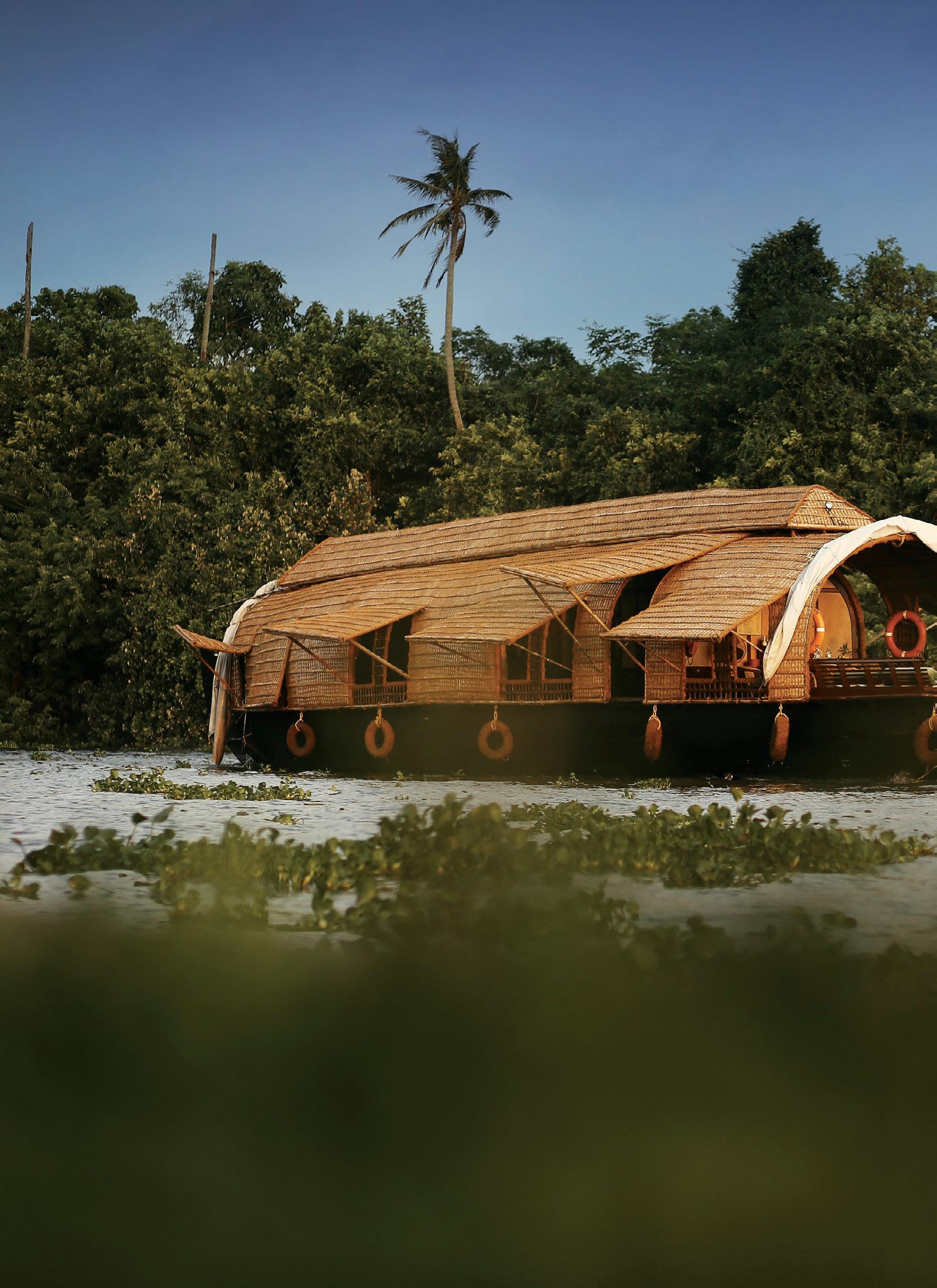
ABOVE: A kettuvallam or houseboat on Lake Vembanad is a grand sight.
BOTTOM, LEFT TO RIGHT: The Viceroy Suite on Ganges Voyager; The Oberoi Vrinda gets up close to Kerala’s backwaters; an inside view of the Oberoi Vrinda.
and Jagatpur into a hub for eco-friendly cruise tourism. The project plans to deploy electric-solar hybrid boats equipped with bio-toilets and safety features, and install two HDPE jetties to support smooth operations, promoting sustainable, short-distance navigation and recreational tourism in Delhi.
IWAI has committed approximately ₹100 crore to develop cruise tourism infrastructure and experiences across Chenab (NW-26), River Jhelum (NW-49), and River Ravi (NW-84). IWAI has also entered into a tripartite agreement with the governments of Gujarat and Madhya Pradesh to start cruise operations from Kukshi to the Sardar Sarovar Dam.
The country has seen the First Inland Waterways Development Council meeting held on the vessel

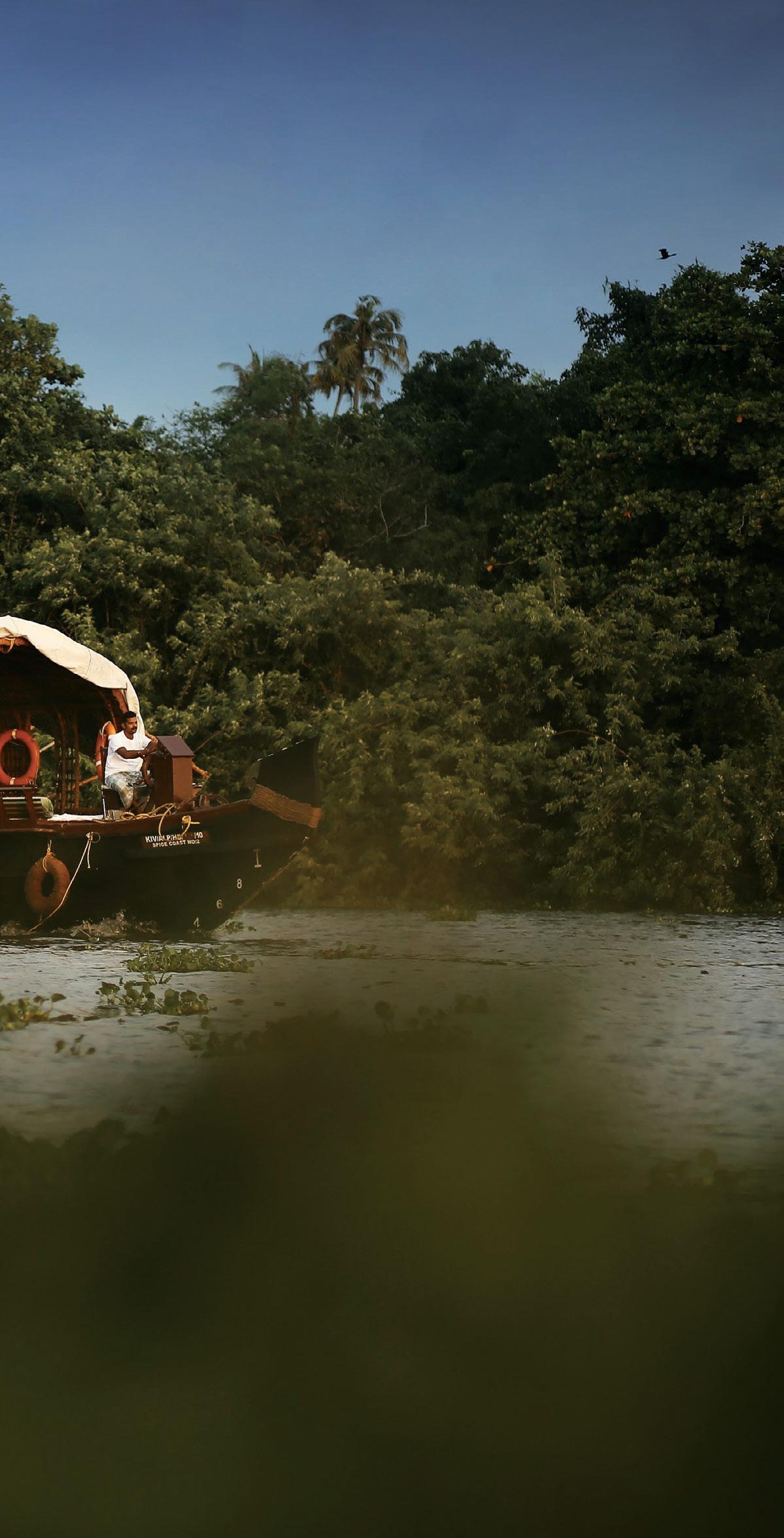
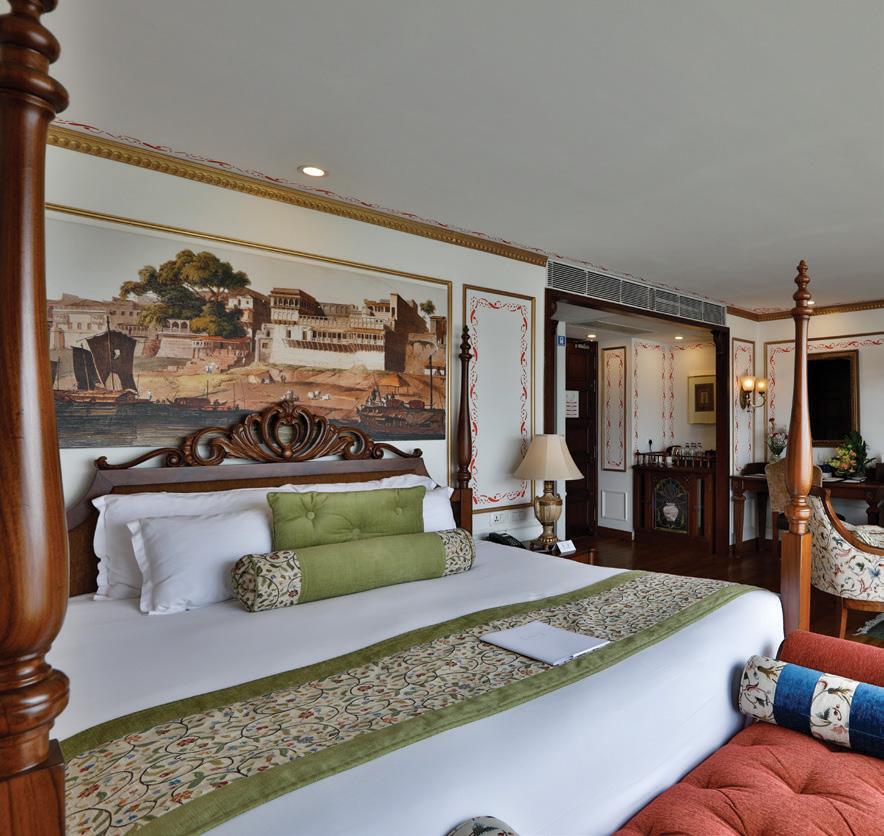
CRUISE BHARAT MISSION
PHASE 1
(01.10.2024 - 30.09.2025)
To focus on conducting studies, master planning, and forming cruise alliances with neighbouring countries.
Modernise existing cruise terminals, marinas, and destinations to enhance the potential of cruise circuits.
PHASE 2
(01.10.2025 - 31.03.2027)
To concentrate on developing new cruise terminals, marinas, and destinations to activate high-potential cruise locations and circuits.
PHASE 3
(01.10.2024 - 30.09.2025)
To focus on integrating all cruise circuits across the Indian Subcontinent, marking the maturity of the cruise ecosystem while continuing the development of cruise terminals, marinas, and destinations.
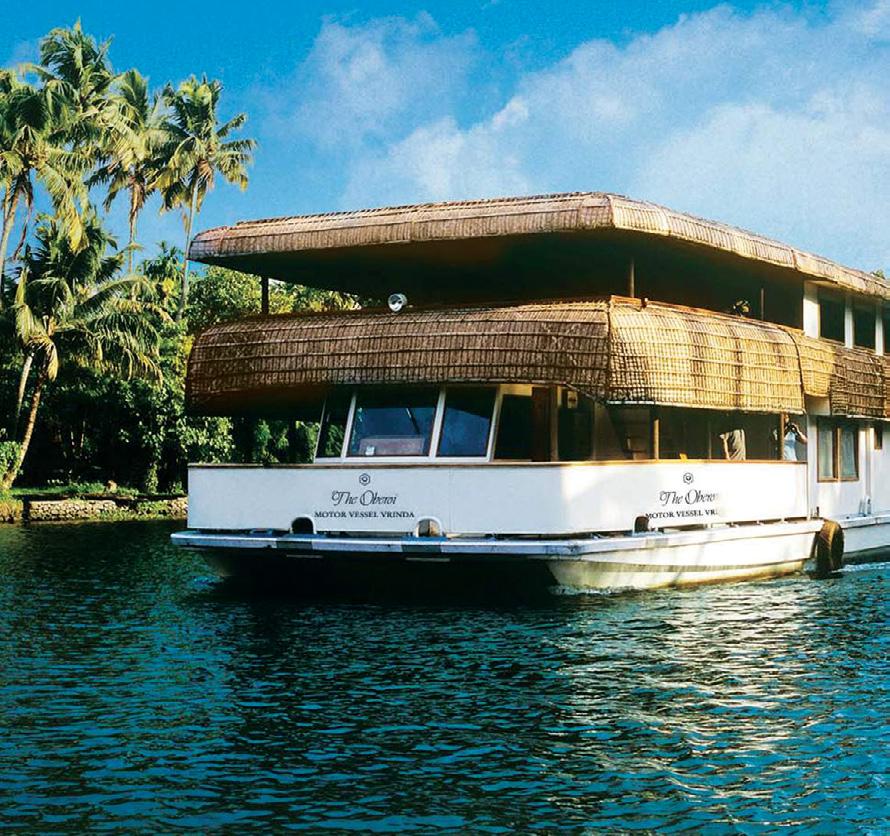
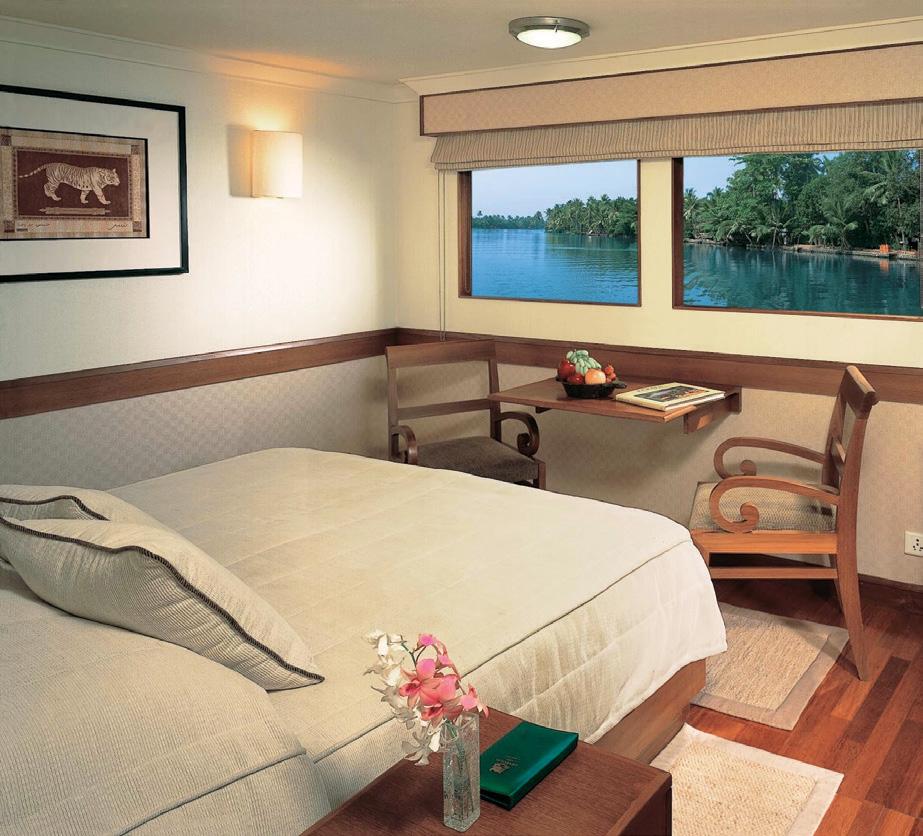
RIVER CRUISE OPERATIONS ON NWS (OPERATIONAL STRETCHES)
NW-1 (GANGA RIVER)
NW-2 (BRAHMAPUTRA RIVER)
NW-3 (WEST COAST CANAL)
NW-27 & NW-68 (CUMERJUA AND MANDOVI RIVERS)
NW-97 (SUNDERBANS WATERWAYS)
INDO- BANGLADESH PROTOCOL ROUTE
NW-5 (MATAI RIVER & EAST COAST CANAL)
NW-8 (ALAPPUZHA-CHANGANASSERY CANAL)
NW-9 (ALAPPUZHA- KOTTAYAMATHIRAMPUZHA CANAL)
NW-1 (GANGA RIVER)
NW-14 (BAITARNI RIVER)
NW-47 (JALANGI RIVER)
NW-73 (NARMADA RIVER)
NW-87 (SABARMATI RIVER)
OUTSIDE NW
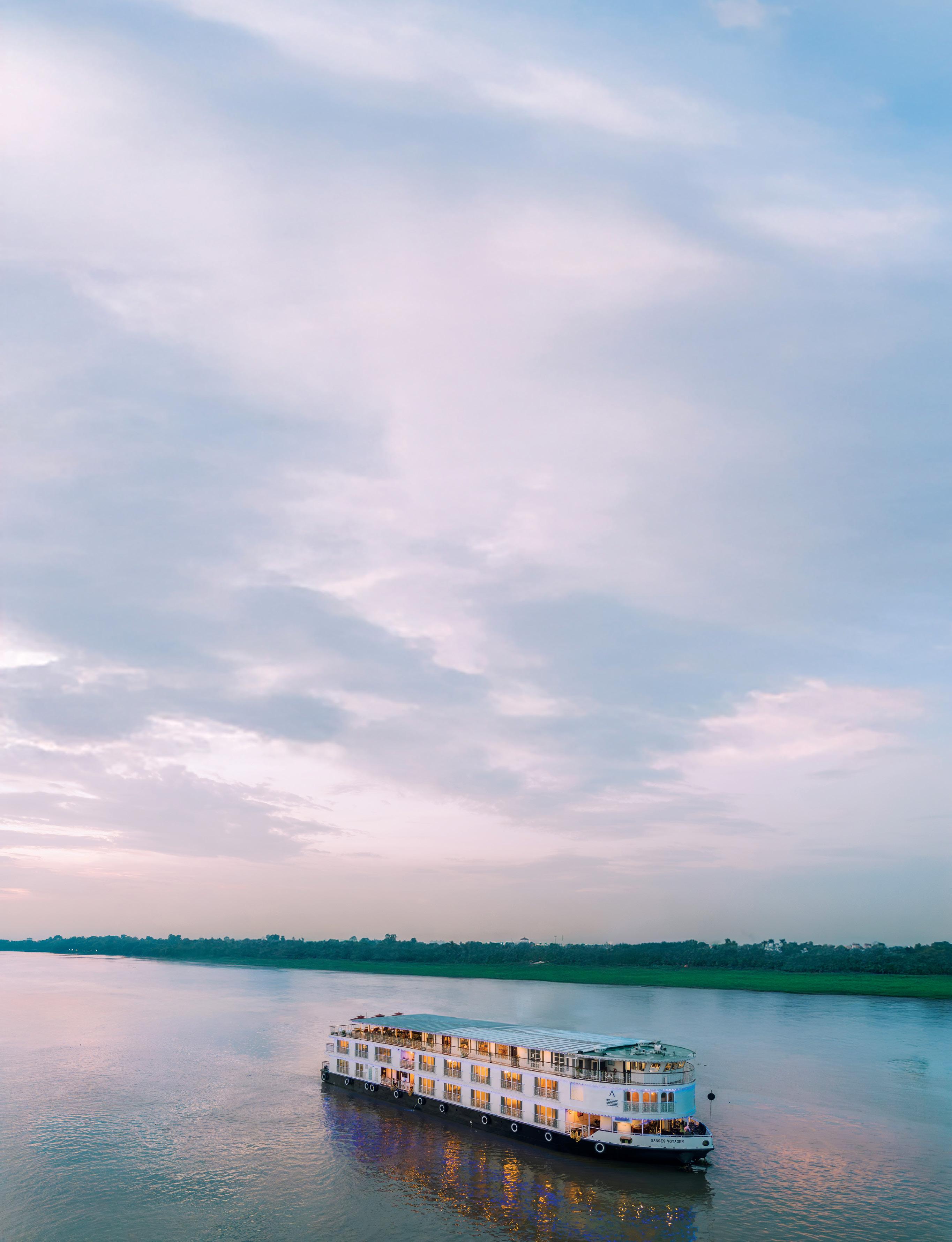
Source: PIB
KOLKATA-VARANASI STRETCH (UP, BIHAR, JHARKHAND & WEST BENGAL)
DHUBRI-DIBRUGARH STRETCH (ASSAM)
KOLKATA-VARANASI STRETCH (UP, BIHAR, JHARKHAND & WEST BENGAL)
TOURISM JETTY PATTO - CHORAO ISLAND - OLD GOADIVAR ISLAND - TOLTO FERRY GHAT - CORTALIM
NAMKHANA - BHAGABATPUR - SAJNEKHALI - HEMNAGAR WEST BENGAL)
KOLKATA-BALI ISLAND
BHITIRKANIKA-HUKITOLA-PARADIP (ODISHA AND WEST BENGAL)
ALAPPUZHA AND CHANGANASSERY (KERALA)
ALAPPUZHA AND CHANGANASSERY (KERALA)
ENGINEERING COLLEGE - DIGHA BRIDGE, PATNA (BIHAR)
ARADI - NALITPATIA - KHOLA (ODISHA)
MAYAPUR - KADAMTALA GHAT (WEST BENGAL)
MAYAPUR - KADAMTALA GHAT (WEST BENGAL)
GANDHI BRIDGE - NEHRU BRIDGE, AHMEDABAD (GUJARAT)
BARKUL - KALIJAI - NALABAN - NAIRI - SATAPADA ON CHILIKA LAKE

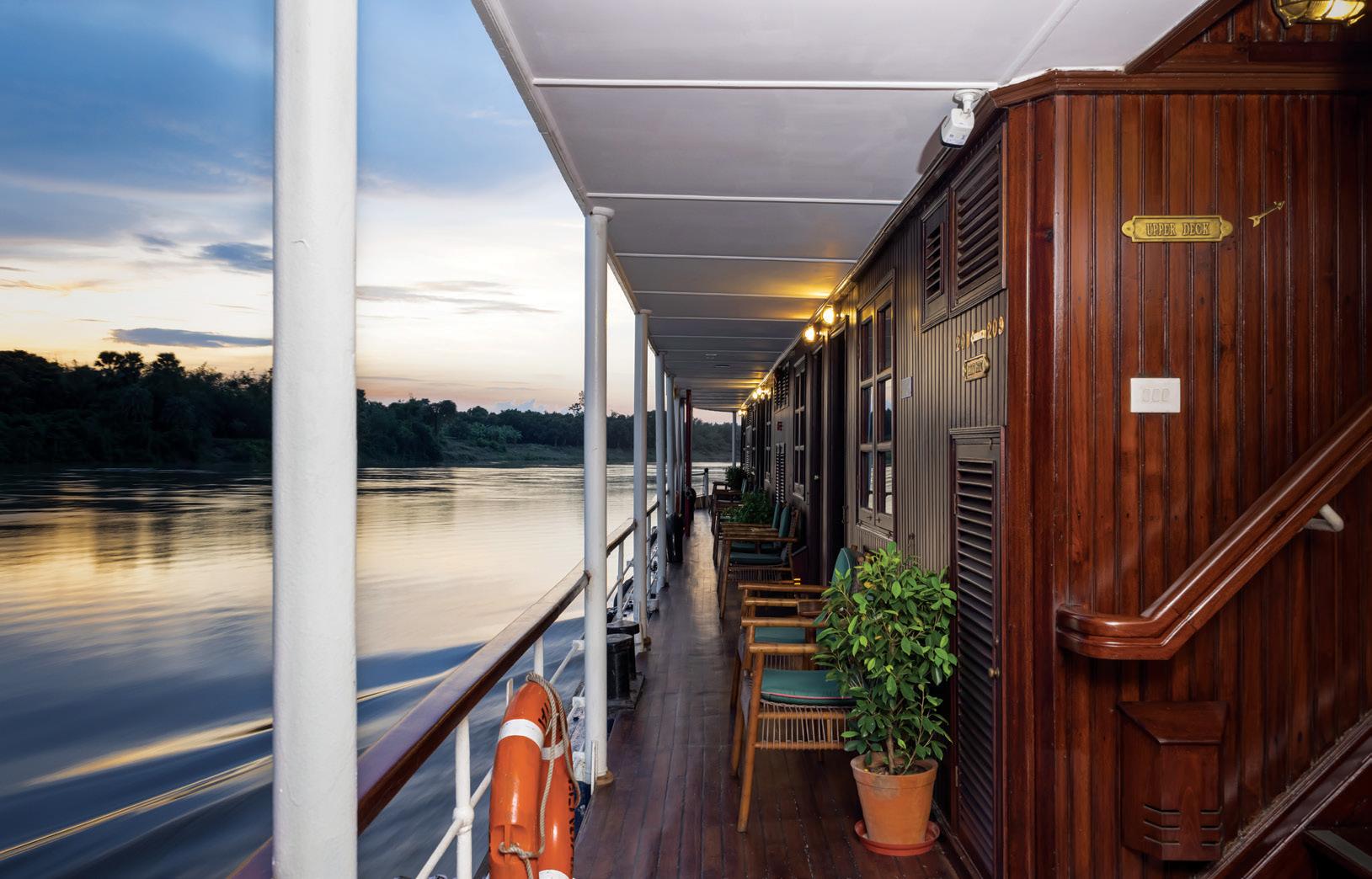
TOURIST MOVEMENT THROUGH RIVER CRUISE ON IWT (INLAND WATERTRANSPORT)
Data for 24 vessels across NW-1, NW-2, N-3 and PIWT&T (Protocol on Inland Water Transit and Trade) Routes
Source: PIB
Ganges Queen in Kolkata. The meet, with an objective to enable inland waterways as channels of economic growth and commerce in the country, committed an investment ₹45,000 crore for the development of river cruise tourism. Of this, an estimated ₹35,000 crore has been earmarked for cruise vessels and another ₹10,000 crore for the development of cruise terminal infrastructure by 2047.
In January, a River Cruise Tourism Roadmap 2047 was launched at the inaugural session of IWDC (Inland Waterways Development Council). This roadmap focuses on four vital pillars, including infrastructure, integration, accessibility, and policy for promoting
LEFT: Antara’s MV Bengal Ganga explores the cultural heritage of Bengal.
BELOW: MV Mahabaahu offers a unique way of experiencing Assam.

river cruise tourism. As a part of the roadmap, over 30 possible routes and tourist circuits along inland waterways have been identified for further development. To ensure sustainability, Harit Nauka, Guidelines for Green Transition of Inland Vessels and River Cruise Tourism Roadmap, 2047, was also launched.
According to an analysis by Statista, one of the key trends in the Indian cruise market is the introduction of shorter cruise itineraries to cater to the preferences of Indian consumers. Cruise operators offer weekend getaways and short trips to nearby destinations to attract first-time cruisers and young professionals. Additionally, themed cruises focusing on wellness, adventure, and cultural experiences are gaining popularity among Indian travellers.
As for the level of increase in the intervening period since my first river cruise on the Hooghly, on the same stretch, Antara now operates luxury cruising where room nights rates are at par with the most expensive ones in the city. India’s modern river journey has just begun, with lots of potential headwinds to aid a fast growth journey.
Investing in in du ence l g
Affluence and aspirations are fuelling a luxury hotel and travel boom. With discerning travellers increasingly seeking authentic, immersive, and personalised experiences, the country’s unparalleled cultural heritage, combined with innovative luxury hospitality offerings, creates a compelling narrative for the future.
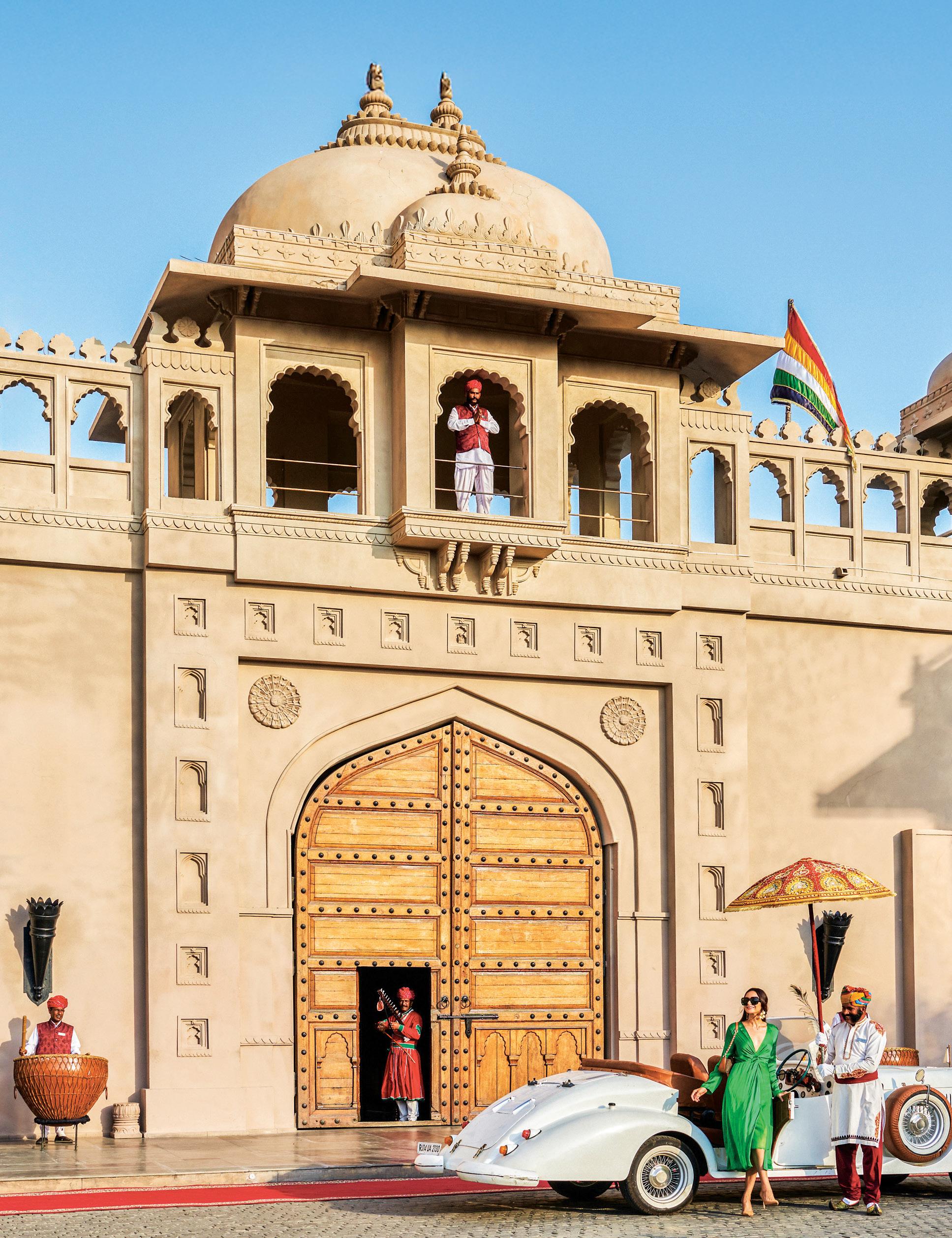
CLOCKWISE FROM LEFT: India’s first Waldorf Astoria, targeted at the wedding market, will open in Jaipur; The Leela Udaipur’s restaurant Sheesh Mahal, with a view of Lake Pichola; Taj Taal Kutir is a luxury haven situated in the heart of New Town in Kolkata.

for years, there was only one Fairmont in India, in Jaipur, India’s new luxury hotel haven. Eleven years after Accor’s luxury hotel brand opened its doors in the pink city, there are now a slew of Fairmonts on the horizon.
Fairmont Mumbai, a homage to Mumbai’s art deco architectural heritage, opened about a month ago. Fairmont Udaipur Palace is opening soon, and so is Fairmont Agra. Fairmont Fagu Shimla has been announced, and so has Fairmont Goa Shiroda, along with Raffles Goa Shiroda, which will bring tourists to the unexplored beach belt in north Goa.
The growth story of Fairmont is indicative of the growth story of India’s travel and hotel segments, which are experiencing a huge boom phase. There are indications that the hospitality industry is placing crucial bets on luxury across all segments—business, resort, and wellness.
India’s luxury hotel sector is experiencing a dynamic upswing, with a surge in investment and development between
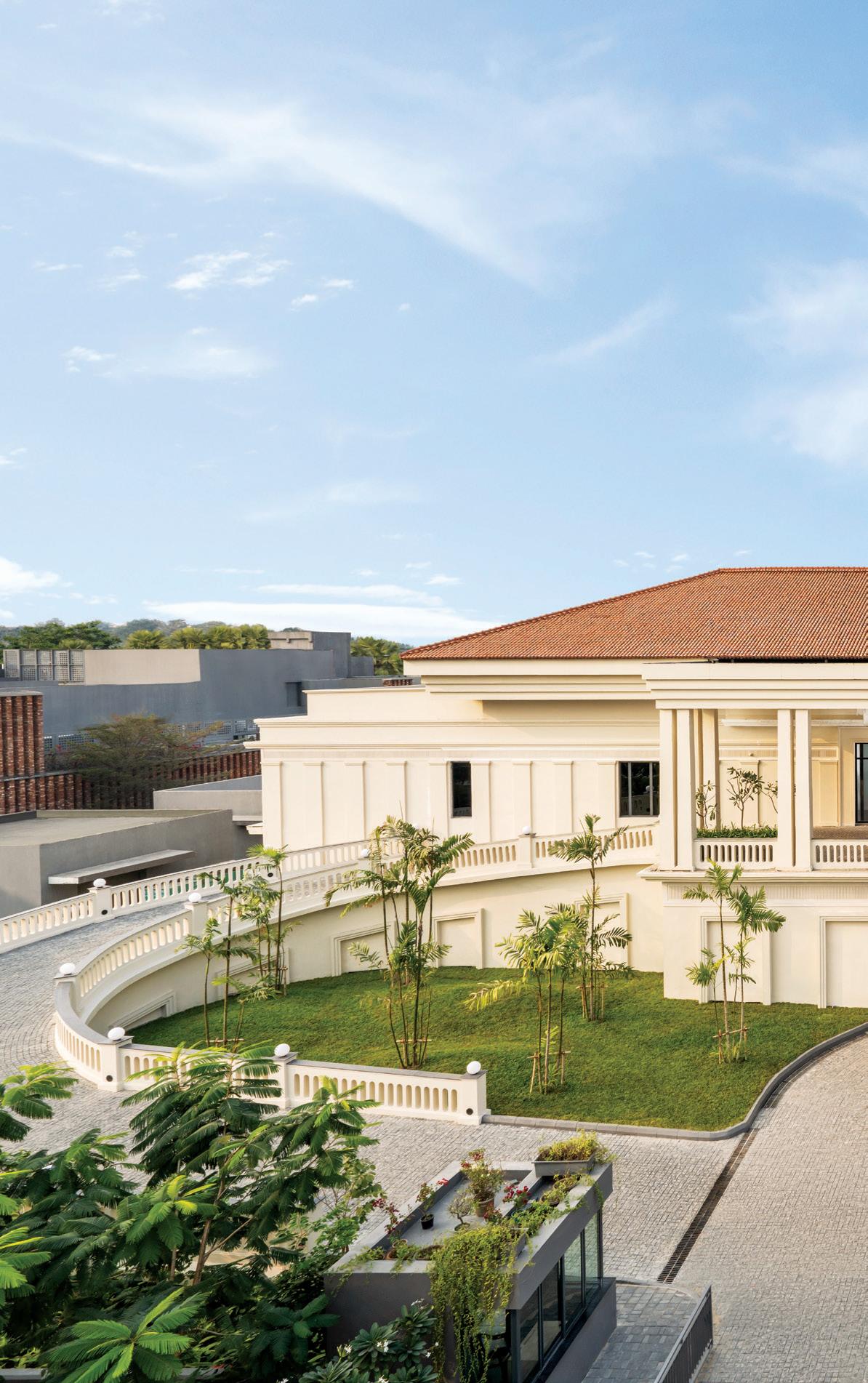

2023 and 2025 reflecting the country's growing appetite for premium travel experiences. Both domestic and international hospitality brands are expanding their footprint to meet rising demand, with industry reports highlighting 481 projects and 57,879 rooms in the pipeline. Notably, the luxury segment accounts for around 20% of rooms signed during this period, signalling a significant shift toward high-end hospitality as India emerges as a key market for luxury accommodation.
Candice D'Cruz, Vice President of Luxury Brands at Hilton, Asia Pacific, notes that India’s 6% yearover-year GDP growth has created a new generation of travellers and a projected 9% annual growth in travel spending through 2030.


“The aspiring luxury travellers are typically younger and have their preferences,” she explains. “They might splurge on special occasions, prefer visibly branded luxury, demand value for their money, and pay close attention to loyalty program points and benefits. They may be willing to spend big on individual components—such as a helicopter tour or fine-dining experience— but not necessarily on every aspect of a trip.”
T HE SIGNPOSTS OF LUXURY RESURGENCE
Raffles has already opened two properties in Rajasthan— Jaipur and Udaipur—while Minor Hotels selected Jaipur as the debut location for Anantara in India. Upcoming Raffles openings include Raffles Ranthambore, a 67-villa ultra-luxury wildlife resort, and Raffles Goa Shiroda.
Waldorf Astoria has announced a 22-acre property overlooking the Aravalli Hills in Jaipur, featuring 51 expansive pool villas,
T HE L EADE R S HI P V O ICE S

Anuraag Bhatnagar
CEO, THE LEELA PALACES, HOTELS & RESORTS
The modern Indian luxury traveller seeks storytelling, heritage connections, wellness that rejuvenates both body and mind and intuitive, anticipatory service. At The Leela, we’re curating luxury that’s deeply rooted—like Leela Ke Phool, which upcycles floral waste into empowerment.”
Candice D'Cruz
VICE PRESIDENT OF LUXURY BRANDS AT HILTON, ASIA PACIFIC
The global perception of India still tends to lean heavily on narratives of budget travel or spiritual exploration, often overlooking the country’s evolution into a destination of design-forward hospitality, curated wellness, and contemporary luxury.”
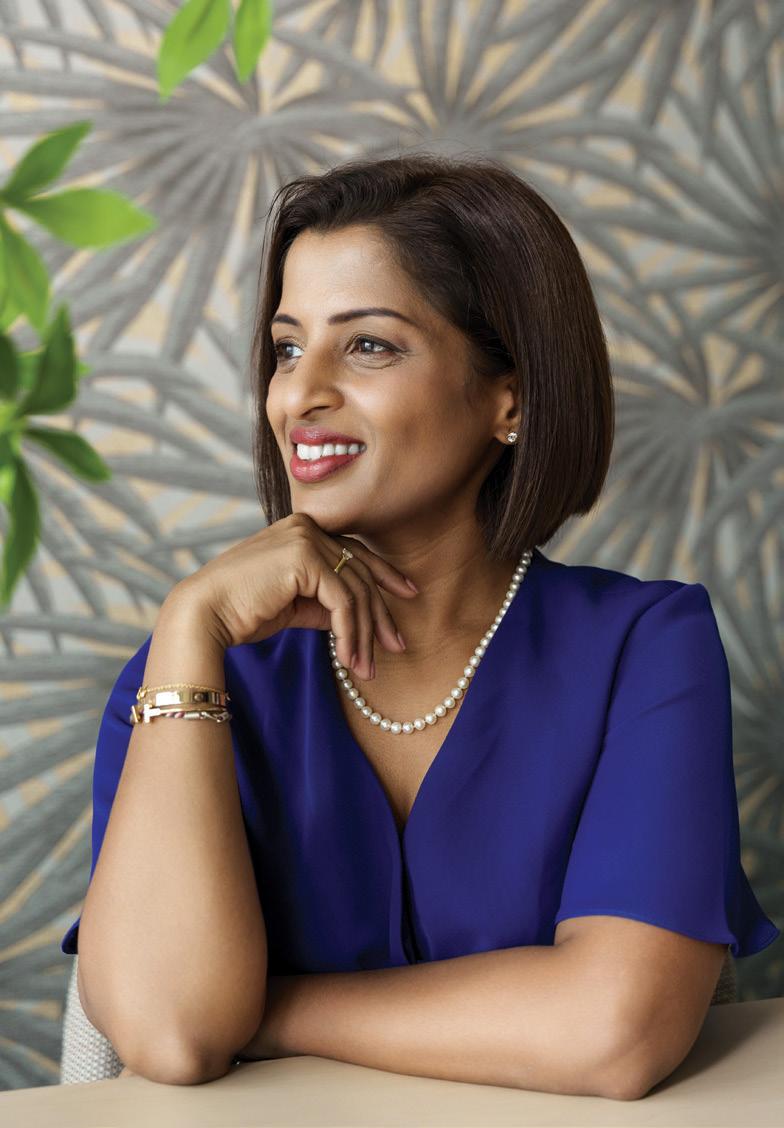
Vikram Madhok
MANAGING DIRECTOR, ABERCROMBIE & KENT INDIA
We’re absent from the customer’s view—both through intermediaries like travel agents and directly. As a result, India doesn’t rank among the world’s top 10 destinations, a gap the Ministry of Tourism must urgently address.”
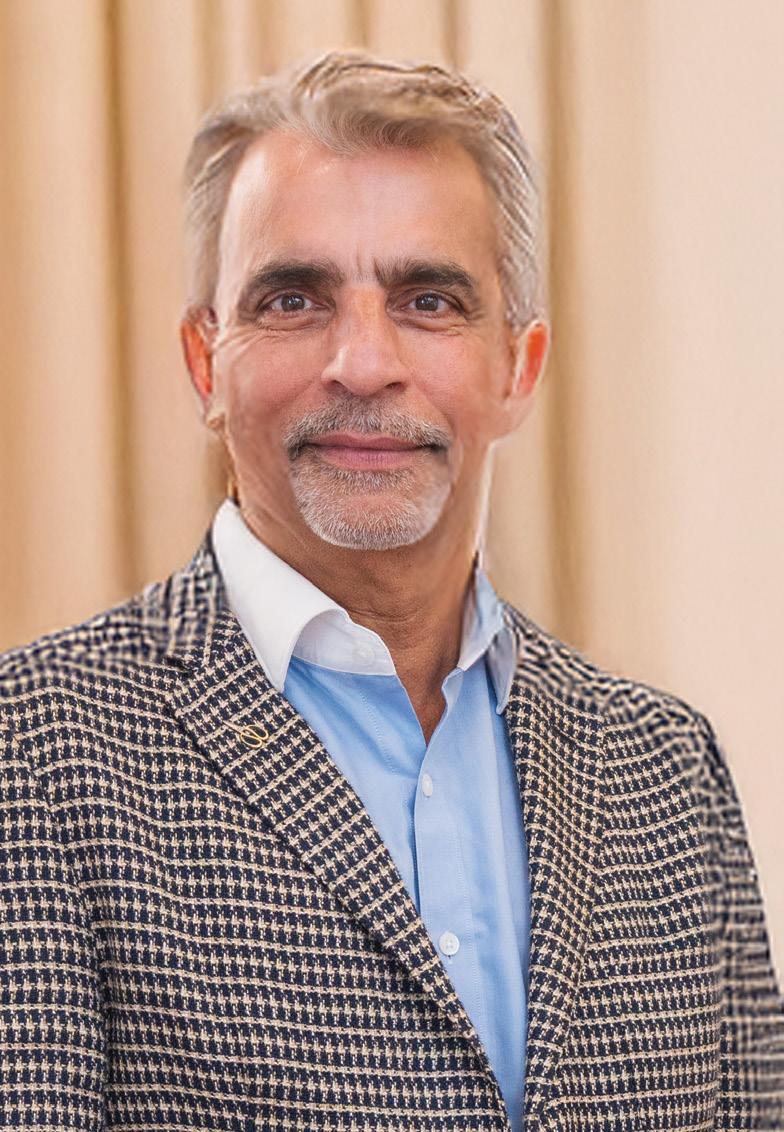
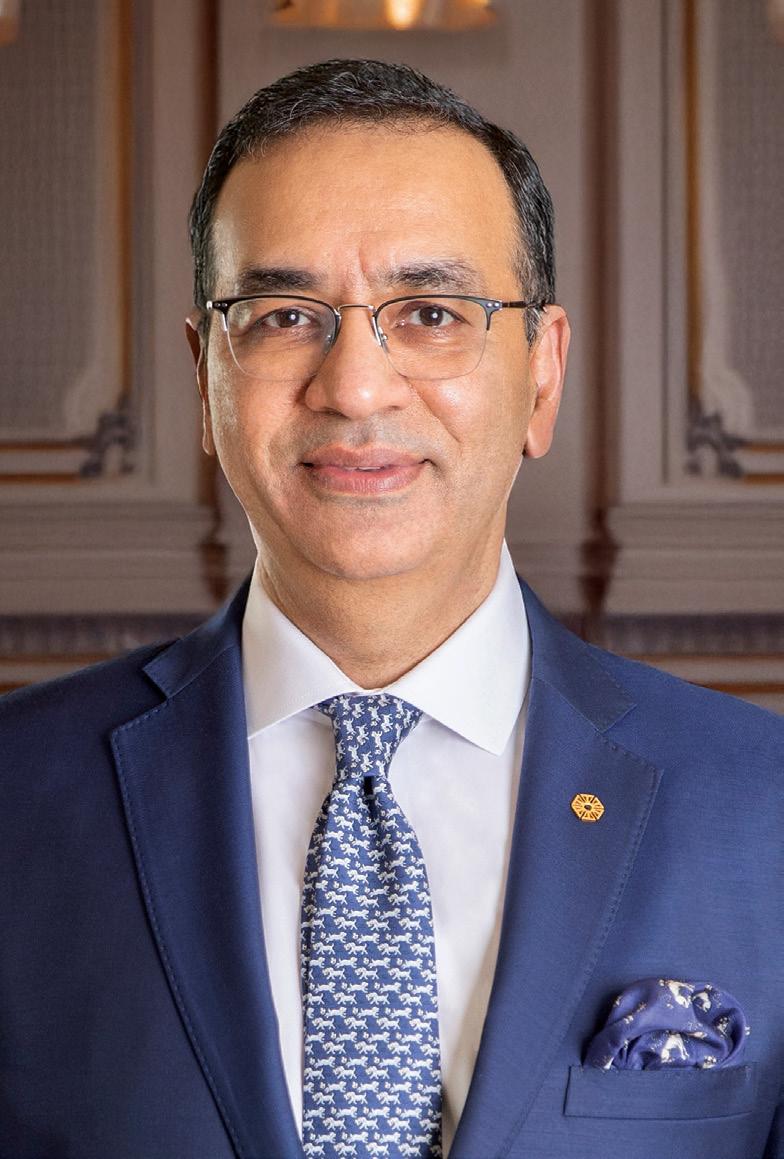
Parveen Chander
EXECUTIVE VICE PRESIDENT – COMMERCIAL, IHCL
The resurgence of luxury hospitality is being fuelled by a new generation of affluent travellers who value authenticity, personalisation, and immersive experiences. At IHCL, we are aligned with this evolution. Earlier this year, we launched the Claridges Collection—a curated portfolio of boutique luxury hotels that blend timeless elegance with historical charm.”
Santosh Kumar
COUNTRY MANAGER FOR INDIA, SRI LANKA, MALDIVES, AND INDONESIA, BOOKING.COM

While mid-range stays remain popular, 39% opt for 5-star properties; 54% choose Indian-branded stays; 51% prefer heritage accommodations; and 47% select international brands. 49% of Indian travellers now choose luxury accommodations, with glamping emerging as a popular premium alternative for over 20%.”
174 elegant guest rooms, and the iconic Peacock Alley lounge and bar. “The upcoming Waldorf Astoria Jaipur is being purposebuilt with Indian weddings in mind,” says D’cruz. “It will offer grand indoor and outdoor spaces, regal design, and a deep focus on personalisation and privacy. We collaborate closely with wedding planners, stylists, and culinary consultants to ensure every element—from rituals and décor to entertainment and guest engagement—meets the highest standards of creativity and care.”
Hilton is also making moves with plans to debut its LXR Hotels & Resorts brand in Bengaluru in 2026. D’Cruz states, “We’re preparing to launch The Den, LXR Hotels & Resorts in Bengaluru, along with new Conrad and Signia by Hilton properties in Jaipur. Earlier this month, at Hilton Asia Pacific’s first-ever brand showcase in Bengaluru, we announced our ambition to double our luxury presence in India over the next five years—deepening our footprint in one of Hilton’s most dynamic growth markets. Our roadmap for growth in India is strategic and selective. Each new opening is designed to elevate the country’s luxury landscape and reflect a more refined, experienceled expression of local luxury.”
Marriott International recently opened the 226-room Udaipur Marriott Resort near Fateh Sagar Lake, offering rooms and suites with mountain or lake views. Soon to open are Marriott Marquis and St. Regis in Delhi Aerocity—part of a single project that will feature the upmarket Astor Bar—along with JW Marriott Alibaug, The Ritz-Carlton Jaipur, and Edition Mumbai. Shimla, too, has emerged as a luxury hotspot, with The RitzCarlton, Amla Hills announced for the region.
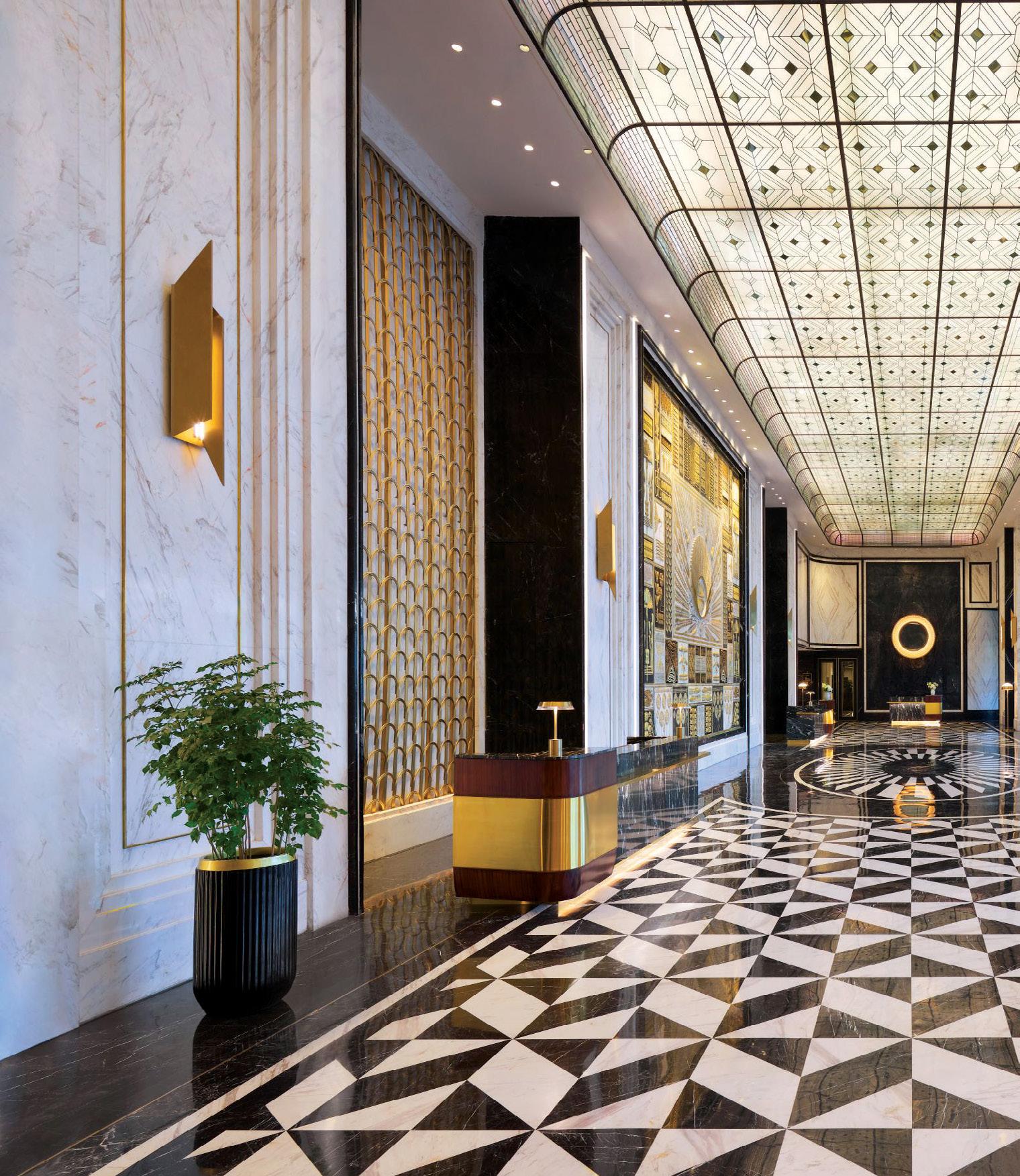
These are primarily international hotel chains, while prominent Indian groups like The Leela Group, ITC, and IHCL have distinct strategies for the luxury hospitality segment.
Of all the IHCL openings in FY’25 (April 2024–March 2025), at least four of IHCL’s hotels were Taj-branded luxury hotels (Cochin International Airport, Dehradun, Patna and Puri). The Claridges, New Delhi, a landmark luxury hotel, will be managed by IHCL starting sometime in 2025, counting as a luxury addition. According to Parveen Chander, Executive Vice President – Commercial, IHCL, the resurgence of luxury hospitality is being fuelled by a new generation of affluent travellers who value authenticity, personalisation, and immersive experiences. “At IHCL, we are aligned with this evolution,” he says. “Earlier this year, we launched the Claridges Collection—a curated portfolio of boutique luxury hotels that blend timeless elegance with historical charm. The collection debuts with The Claridges, New Delhi, and will soon include the iconic Connemara in Chennai and Blue Diamond in Pune, tailored for globally attuned travellers seeking bespoke experiences.”
With a legacy of pioneering new destinations, IHCL continues to broaden the reach of the Taj brand, offering discerning guests fresh, inspiring choices. “From the scenic landscapes of Darjeeling and Gangtok to upcoming properties in Lakshadweep—celebrated for its pristine beaches and coral reefs—Taj is redefining luxury across India.
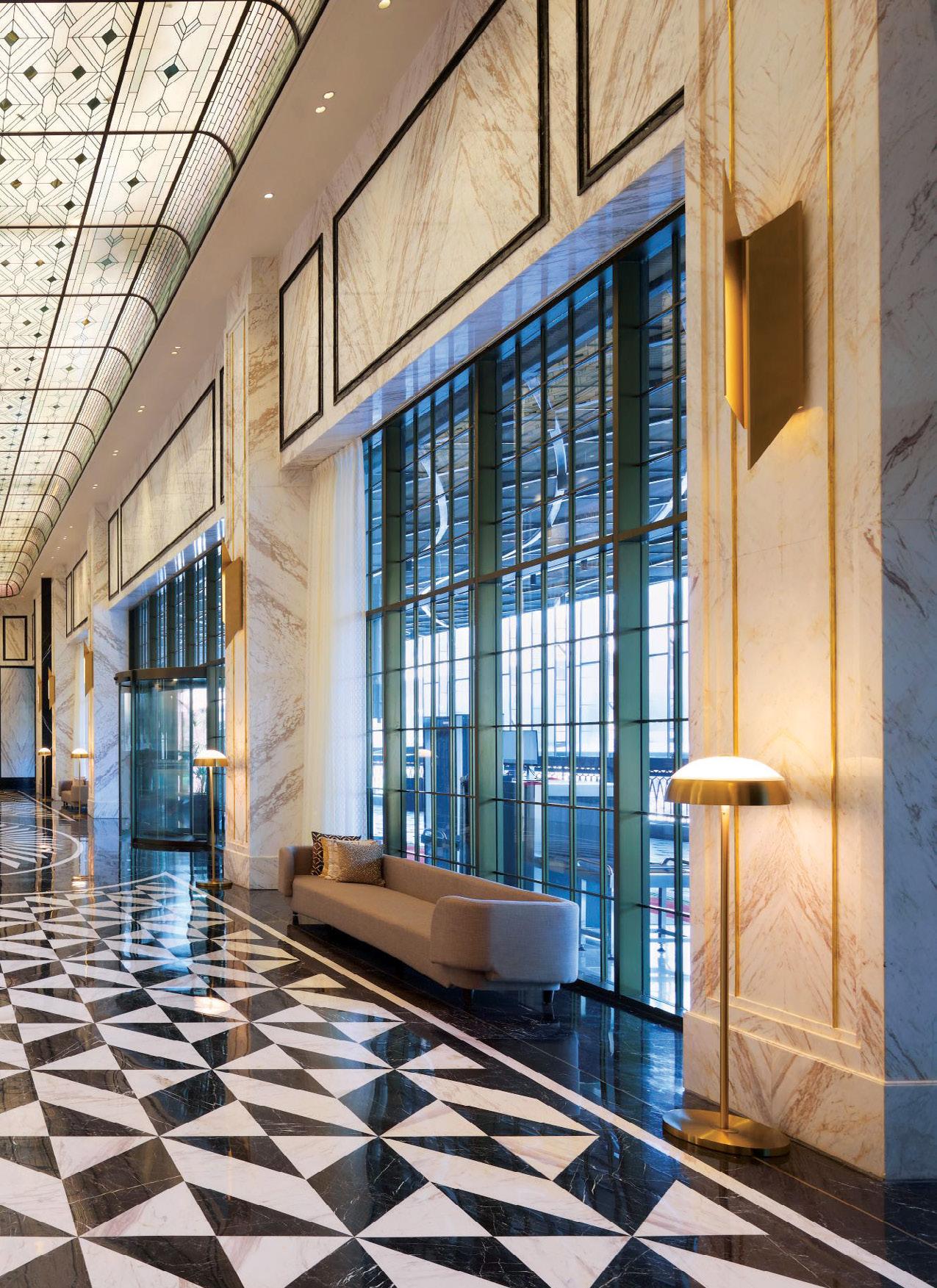

A sh if t is underway. Indi a is poised to be among Asi a Pac if ic’s top th ree contributors to luxu ry travel growth.
Lakshadweep has emerged as a destination that several branded luxury hotels are exploring.
Internationally, the brand is set to debut in Frankfurt, Germany, and in the tranquil settings of Paro and Phobjikha in Bhutan,” adds Chander.
ITC recently launched Mementos by ITC Hotels, Ekaaya in Udaipur, pivoted towards the trillion-rupee wedding market and high-end leisure travellers and signals ITC’s serious intent in the luxury space. The group has one more Mementos property planned over the next four years (223 rooms). Another boutique luxury resort in a key leisure destination may be fast-tracked.
Most recently, The Leela Group unveiled The Leela Hyderabad, which Anuraag Bhatnagar, Chief Executive Officer, The Leela Palaces, Hotels and Resorts, calls “our jewel in the heart of Banjara Hills, redefining luxury in the city. Our pipeline is robust, with a focus on iconic heritage locations and emerging lifestyle destinations, including the muchanticipated The Leela Srinagar, which will further elevate our position in the ultra-luxury segment.”
IHG Hotels & Resorts, which has built a strong luxury portfolio through strategic acquisitions like Regent, Kimpton, and Six Senses, as well as new launches such as the Vignette Collection, is preparing to introduce several of these brands in India. “We are witnessing unprecedented growth in India, driven by a booming economy, rising affluence, and a growing appetite for new-age luxury experiences,”
Sudeep Jain, Managing Director, South West Asia, IHG Hotels & Resorts has said. “India is a priority growth market, and we’re actively exploring opportunities to bring more of our global luxury brands here. Six Senses is expanding with award-winning properties in Rajasthan and Dehradun, and discussions are underway to launch Regent, Kimpton and the Vignette Collection in India with the right partners in the right locations.”
In the boutique luxury space, Postcard Hotel is set to open one of the country’s most expensive hotels next year. Located in Ranthambore, Rajasthan, and targeting discerning travellers, the Postcard Hotel will offer rooms starting at ₹1.95 lakh per night (approximately $2,350).
WHAT IS DRIVING T HE LUXURY TRAVEL AND HOTEL INDUSTRY?
Skift Research describes India’s luxury travel and hotel markets as dynamic sectors driven by a tripling of affluent households, a shift toward experiential and sustainable travel, and strong investments from both international and domestic hotel brands. Leela’s IPO, expansions by Hilton and Marriott, and the rise of lifestyle hotels all underscore India’s growing global influence. “However, challenges like sustainability execution, inbound tourism promotion, and visa issues must be addressed to fully capitalise on this boom. For businesses, success in 2025 hinges on personalisation, cultural immersion, and aligning with evolving preferences for wellness and adventure,” the report states.
This shift is further amplified by increasing global exposure and a heightened appetite for wellness, authenticity, and bespoke experiences. Bhatnagar explains: “The desire for privacy, exclusivity, and authentic cultural experiences has driven demand for bespoke luxury stays. Post-pandemic, we’ve seen a clear pivot from traditional tourism to experiential travel, experiences The Leela has always championed. The growing preference for destinations offering both luxury and a deep connection to local culture aligns perfectly with The Leela’s ethos of merging Indian luxury with modern, contemporary elegance.”
JLL’s Evolution of Global Luxury Hospitality identifies India as a must-watch market, with luxury hotels expanding beyond traditional leisure hubs to heritage and business destinations. India’s growing middle class (approaching 500 million) is fuelling demand for luxury travel experiences, it states.
D'Cruz cites McKinsey’s State of Tourism and Hospitality 2024 report: “It’s not just about where people go—it’s about why and how. Today’s luxury traveller values emotional resonance, personalisation, and transformative experiences over transactional ones. They seek meaning beyond traditional opulence—whether through regenerative Ayurveda wellness retreats, chef-led local cuisine journeys, or immersive cultural tours that capture a destination’s soul.” McKinsey also highlights that most travel remains close to home, with intraregional and domestic tourism driving the majority of spending. “This presents a strong opportunity for brands to offer luxury in proximity—elevated, contextrich experiences that deliver deep emotional impact and local relevance without requiring long-haul travel.”
Mordor Intelligence, in its report Luxury Hotels Market in India –Size and Share Analysis, 2025/2026, notes that a growing number of international sports events, trade fairs, exhibitions, and concerts by global pop stars are expected to boost international tourist inflows and domestic travel. “The rise in the travel and tourism industry, along with evolving lifestyle standards, is driving steady growth in luxury hotel market trends,” the report states. Key drivers include rising purchasing power among domestic travellers, a growing airline industry, increasing foreign tourist arrivals, and relaxed visa norms. Additionally, the GST council’s rate cut from 28% to 18% for luxury hotels is expected to further propel market growth over the forecast period.
Luxury hotels are positioning themselves as premier venues with top-tier amenities, world-class service, and refined ambience—drawing high-profile guests and fuelling further investment in the sector. This
rising demand is driving the development of more high-end properties and contributing to the strong growth of India’s luxury hotel market.
D’cruz emphasises that the luxury boom isn’t about volume— it’s about values. “It’s about understanding nuanced traveller segments and what truly moves them. In a world increasingly marked by excess, luxury is the quiet confidence of a stay that feels deeply personal. At Hilton Luxury Brands, we don’t just craft beautiful stays—we create meaningful memories and foster connection. Our goal is to design
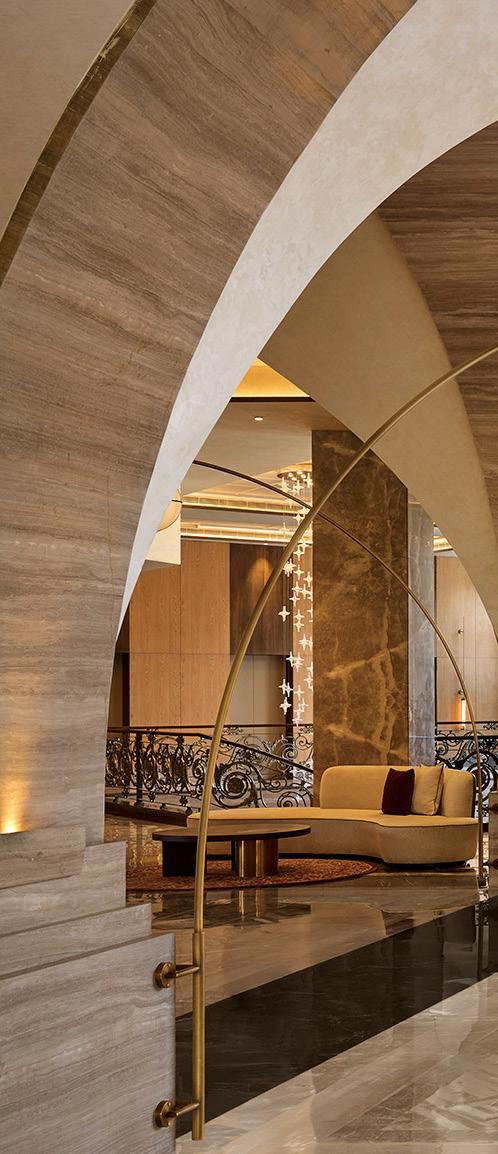
moments that are restorative, intentional, and unforgettable.”
A new report, The Future of Travel 2025: From Dreamers to Doers—India’s Global Travel Generation by US-based FINN Partners and research agency GSIQ, reveals a seismic shift in the Indian travel mindset. Based on a survey of 2,000 Indian international leisure travellers across Gen Z, Millennials, and Gen X, the report highlights evolving motivations, behaviours, and emotional triggers., “Luxury is no longer a trophy of status, but a meaningful indulgence,” it notes. A new wave of travellers—especially from Tier II and III cities—is driving this change, fuelled by greater disposable income, digital access, and a growing desire for cultural immersion, spiritual journeys, beach getaways, and mountain retreats.
JLL’s Evolution of Global Luxury Hospitality report adds that enhanced airport infrastructure and road connectivity are making premium destinations more accessible, accelerating luxury tourism in leisure and heritage cities. The expanding road network is encouraging luxury brands like IHCL, Hyatt, and Fairmont to venture into emerging destinations such as Tripura, Bhopal, and Shimla.
Improved profit margins for existing luxury properties have sparked investor interest in both existing properties and new developments. The luxury segment accounted for 23% of hotel transaction volumes in H1 2024, with upscale (44%) and midscale (31%) segments leading. JLL’s report predicts an additional 46,000 ultra-luxury hotel rooms globally by 2033, with India as a key growth market, particularly in cities like Mumbai and heritage-rich destinations like Jaipur, Udaipur, and Agra.

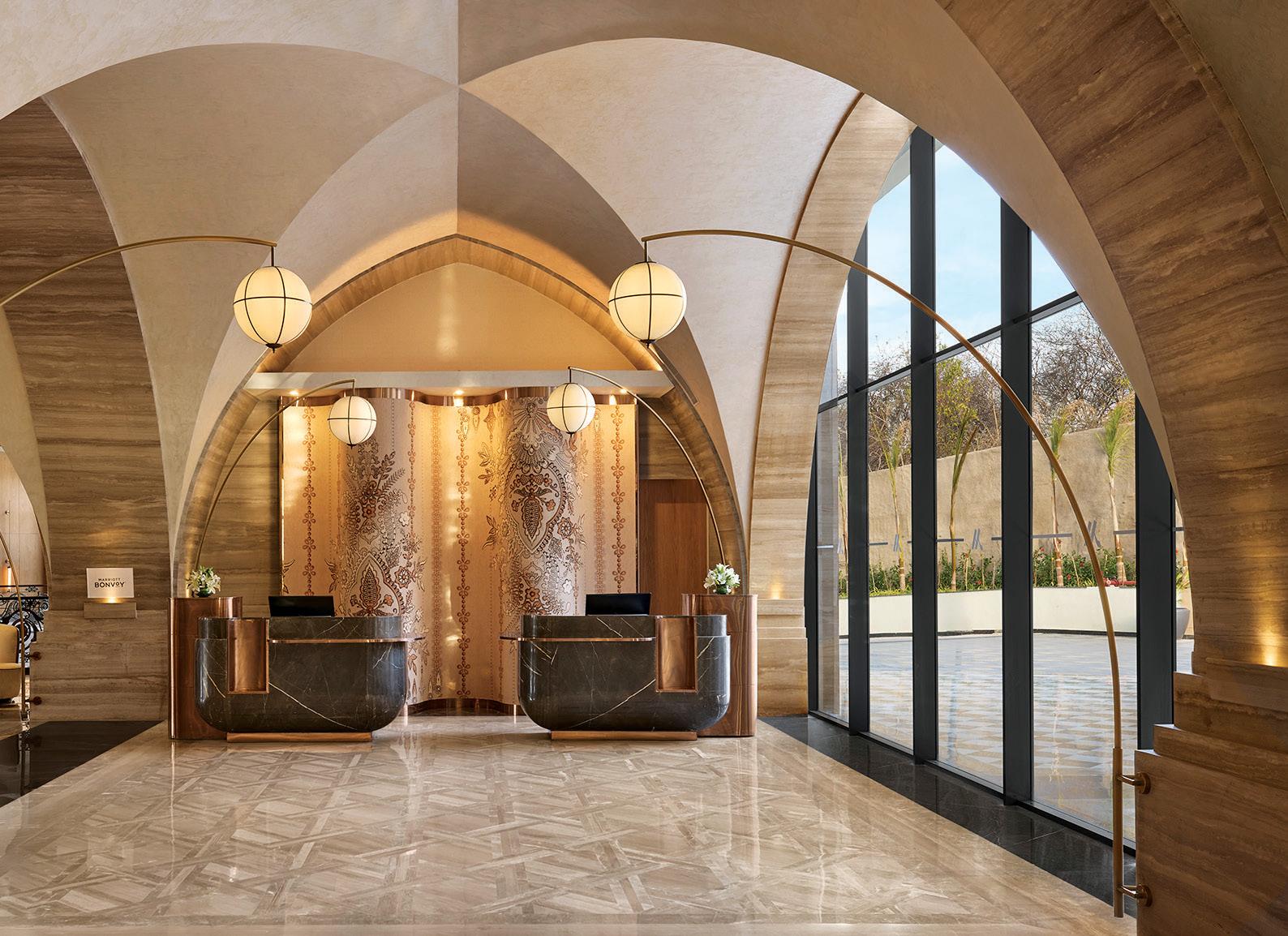
RE G I O N S D RI VI N G
F L U X U R Y
E I S U RE T R A VE L
As the region’s economy grows, a rising affluent class and corporate travel are driving demand for upscale hospitality. Booking.com data shows that 52% of inbound travellers see India as a standalone destination, while 22% include it in broader Asian itineraries— highlighting India’s growing appeal as a primary and complementary stop. Booking.com's Santosh Kumar notes, “Metro cities like Delhi, Mumbai, Bengaluru, Jaipur, and Chennai remain top choices, combining luxury with rich cultural experiences. These hubs feature iconic properties with world-class amenities that cater to evolving global tastes.”
The luxury travel industry is segmented into different categories by reports such as Mordor Intelligence and Custom Market Insights. Among them:
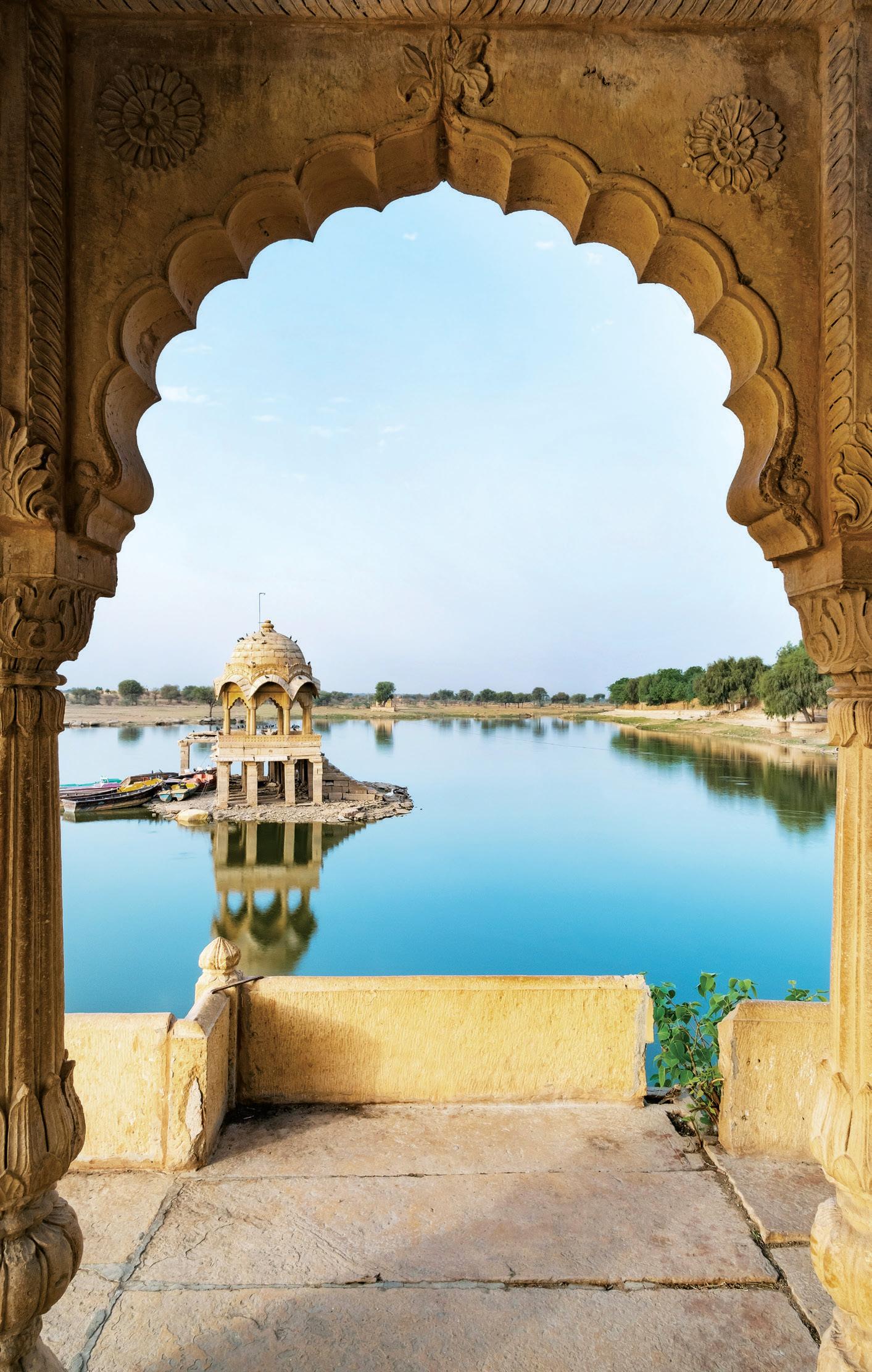
RE G I O N S
Rajasthan is emerging as a key destination for luxury leisure travellers, while the southern states lead in business travel growth, followed by Mumbai and Delhi. According to the Custom Market Insights report, “South India drives India’s luxury hotel market with its rich cultural heritage, diverse landscapes, and expanding economic influence.” Its historic temples and palaces, alongside scenic spots, attract high-end domestic and international travellers. Cities like Bengaluru, Chennai, and Hyderabad, as major IT hubs, fuel business tourism and demand for luxury accommodations.

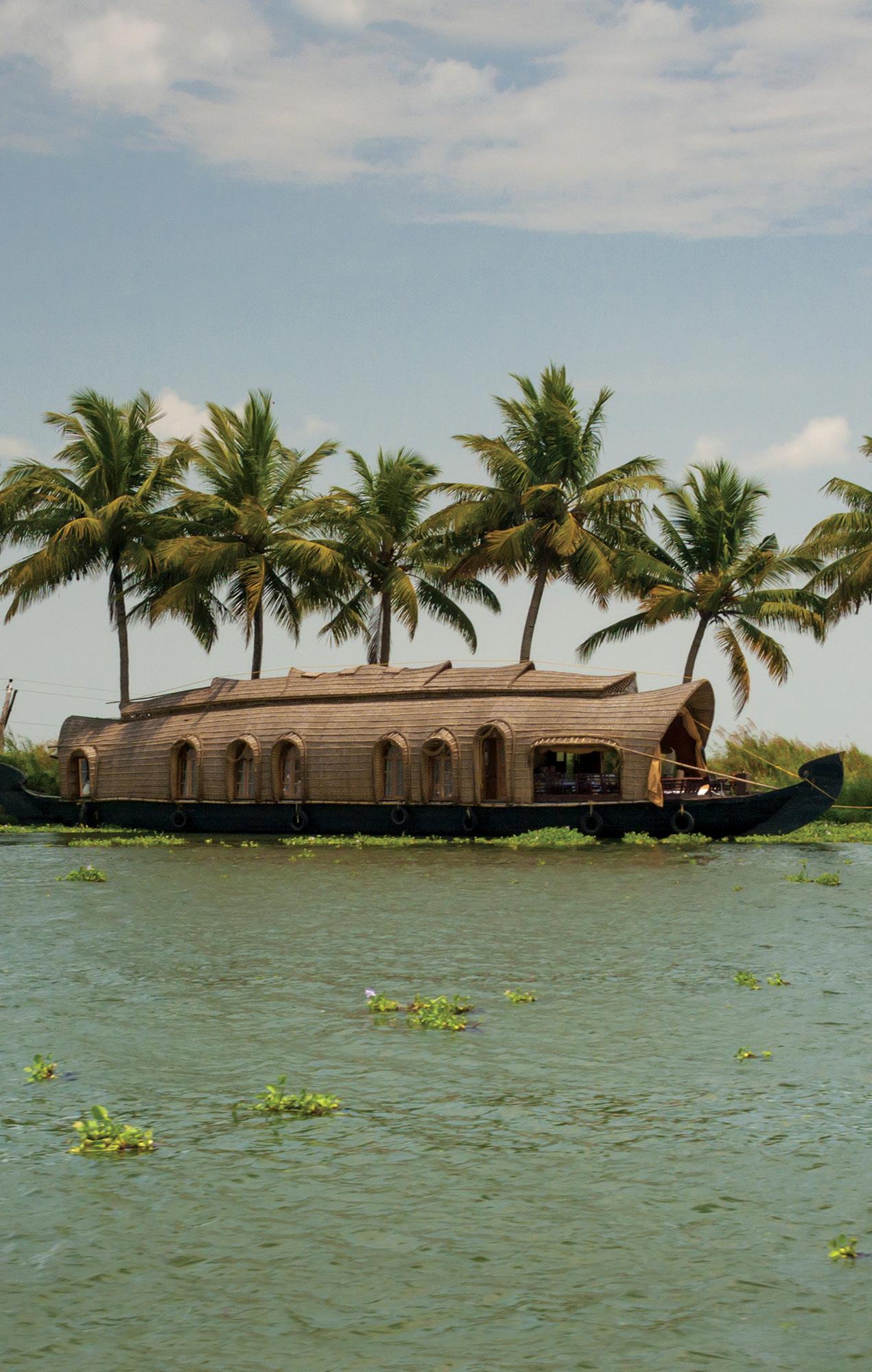
DE S T I NA T I O N S
Luxury travellers in India typically seek destinations that combine heritage, culture, and world-class amenities, says Anuraag Bhatnagar, CEO, The Leela Palaces, Hotels, and Resorts.
“Leela properties are strategically located in iconic cities like Jaipur, Udaipur, Delhi, Chennai, and Bengaluru, as well as serene spots such as Ashtamudi and Kovalam. These travellers crave unique experiences—whether a private dinner at Mohan Mahal or a spa rooted in ancient healing traditions.”
Booking.com data shows luxury travel expanding beyond metros to destinations like Rishikesh, Munnar, Manali, and Darjeeling, attracting growing interest from Indian travellers. “These places offer world-class accommodations and experiences—from wellness retreats to bespoke mountain escapes and heritage stays—blending luxury with meaningful, purpose-driven travel,” says Kumar.
The platform’s How India Travels 2024: The Inbound Edit Report reveals key preferences: while mid-range stays remain popular, 39% opt for 5-star properties; 54% choose Indian-branded stays; 51% prefer heritage accommodations; and 47% select international brands. Kumar adds, “49% of Indian travellers now choose luxury accommodations, with glamping emerging as a popular premium alternative for over 20%, showing comfort and creativity are reshaping travel.”
Candice D'Cruz, Vice President of Luxury Brands at Hilton, Asia Pacific, notes luxury travellers seek rare, authentic, and deeply personal experiences—areas where India excels. “Interest is rising in offbeat destinations—whether the serenity of the Himalayas, private beach enclaves, or immersive cultural and spiritual journeys. The growing appeal of exclusive lodges, wellness retreats, and heritage-driven itineraries reflects a shift: travellers want deeper connections—with themselves, others, and their surroundings.”
While gateway cities like Delhi, Mumbai, and Bengaluru remain vital hubs for business and luxury short stays, Hilton is also focusing on emerging destinations. From Jaipur to Bengaluru, the opportunity lies in crafting experiences that are both elevated and locally resonant.

WHAT ARE LUXURY TRAVELLERS SEEKING OUT?
Authenticity with Intention: Booking.com’s How India Travels 2024: The Inbound Edit reveals that luxury travel in India is evolving beyond indulgence to focus on transformative experiences rooted in authenticity and lasting memories.
Bhatnagar says that the modern Indian luxury traveller is defined less by materialism and more by emotional and cultural depth. “They seek storytelling, heritage connections, wellness that rejuvenates both body and mind and intuitive, anticipatory service. At The Leela, we’re curating luxury that’s deeply rooted in culture yet strikingly contemporary. Initiatives like Leela Ke Phool, which upcycles floral waste into empowerment, and Icons of India, which celebrates changemakers like Sawai Padmanabh Singh, reflect the evolving preferences of today’s traveller.”
D'Cruz echoes the shift: “Indian luxury travellers value authenticity wrapped in comfort. They’re discerning, globally aware, and seek experiences that balance immersion with indulgence. At Hilton, luxury is defined by thoughtful nuance—privacy for multi-generational families, meticulously crafted Jain or vegetarian menus, or wellness journeys inspired by ancient Indian traditions with a modern touch.” Today’s travellers also seek tech-enabled ease and meaningful details that reflect their values. “There’s a growing awareness around ethical luxury,” D'Cruz adds. “Guests want to know their choices matter—that the hotels they stay in support local communities, source ingredients responsibly, and prioritise sustainability.”
LEFT: The Taj Puri Resort & Spa, Odisha is a beachfront retreat nestled along the eastern coast of India in the sacred city of Puri.
BELOW: Pushpabanta Palace, a significant historical and cultural landmark in Agartala, Tripura, is being converted into a Taj by IHCL.

Heritage: According to Mordor Intelligence, India’s heritage trail is projected to hold the highest market share in the luxury segment over the forecast period. Heritage-themed hotels—like The Leela Palaces in Rajasthan or IHCL’s palace hotels—offer immersive luxury rooted in regional art, traditional cuisine, and historical architecture, all wrapped in the warmth of Indian hospitality. In contrast, contemporary luxury hotels focus on high-end IoT-enabled infrastructure and the “relax-inliving” concept. A 2024 survey by the Hotel Association of India (HAI) found heritage hotels enjoy


an average occupancy rate of 80%, significantly above the national average of 65%. The survey also revealed that cultural tourists are increasingly willing to pay a premium for authenticity and deeper connection to India’s past that these properties provide.
Culinary: Chander says luxury travellers increasingly seek out distinctive dining experiences.
“For over a century, we’ve introduced several firsts, from Sichuan and contemporary Japanese to Mediterranean, Thai, and Vietnamese cuisines.”
Expanding this legacy, IHCL recently launched the third outpost of Loya at The Taj Mahal Palace, Mumbai—celebrating the diverse culinary traditions of northern India.
Wildlife: Hotelivate in its report 2024 Indian Hospitality: Trends & Opportunities, states that new supply in the luxury leisure space, especially in wildlife locations such as Pench, Bandhavgarh and Kanha, have contributed to the RevPAR growth in 2023/24.
Wedding and MICE: Properties like Waldorf Astoria Jaipur and Fairmont Mumbai are tapping into India’s ₹1 trillion wedding market and the expanding MICE segment. The Great Indian Wedding industry is valued at $130 billion, with Indians spending nearly 10 times their per capita GDP on weddings, according to Jefferies Research. The surge in destination weddings—especially among affluent families and NRIs—has significantly boosted demand for luxury hotels.
Bhatnagar remarks that travel tied to celebrations goes beyond weddings. “The rise in celebratory travel—anniversaries, milestone birthdays, and festive getaways—is shaping luxury travel. India’s cultural richness offers the perfect backdrop for these experiences. There’s also a growing trend of Indians abroad returning for culturally rooted yet globally refined weddings. Guests are drawn to Jaipur’s palatial charm, Udaipur’s regal intimacy, and the urban elegance of Bengaluru and Hyderabad. Celebrations have become a gateway for many to experience the full depth of Indian luxury.”
According to Chander, IHCL’s Timeless Weddings sets a benchmark for destination weddings, extending across iconic venues, curated themes, and the legendary Taj service to transform celebrations into unforgettable experiences.
The India MICE market is projected to grow from $4.59 billion in 2025 to $14.62 billion by 2032, at a CAGR of 18%, according to Coherent Market Insights. The rise in destination weddings and MICE events is driving demand for luxury accommodations, with brands like Raffles, Waldorf Astoria, and The Oberoi, and IHCL catering to this upscale segment. IHCL’s Innergise Green Meetings, for instance, is a sustainable solution for corporate meetings and conferencing needs offering guests a choice to reduce their carbon footprint and contribute to a more sustainable future.
Religious and spiritual tourism: The Indian government’s initiatives, such as Pilgrimage Rejuvenation and Spiritual Heritage Augmentation
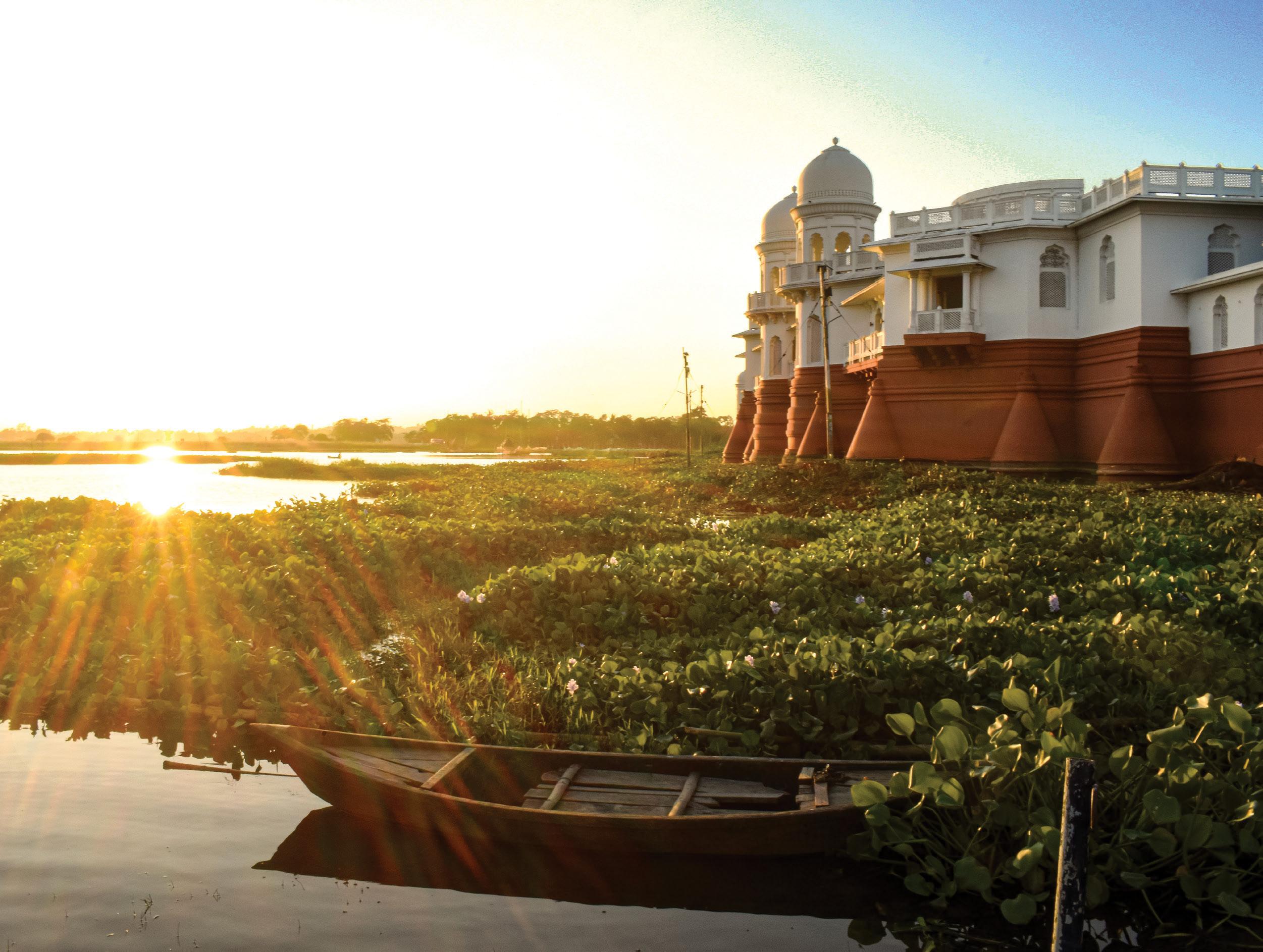
Drive (PRASHAD) and Swadesh Darshan Scheme, have invested $195.43 million to enhance connectivity to 73 pilgrimage and spiritual sites. New airports in Shirdi and Kushinagar, high-speed trains, and upgraded roads like the Varanasi-Ayodhya route have improved accessibility. Ayodhya is set to welcome a 300-key Taj hotel by IHCL and a 100-room palatial Leela Palace, while Puri now features the Taj Puri Resort & Spa. JLL reports a 30% rise in average room rates at luxury hotels in spiritual hubs, driven by affluent domestic and international pilgrims seeking comfort alongside spiritual experiences.
HOW CAN INDIA FURT HER BOOST ITS LUXURY HOTEL AND TRAVEL INDUSTRIES?
While India holds immense potential as a luxury destination, a few systemic barriers continue to limit its ability to capture a greater share of the high-end international traveller market. “Visa processing remains a key friction point, particularly for spontaneous or short-lead luxury travel, where ease and speed are non-negotiable. Infrastructural gaps—especially in remote, heritage-rich, or emerging destinations—can impact the seamlessness that discerning travellers expect,” says D’cruz. Moreover, the global perception of India still tends to lean heavily on narratives of budget travel or spiritual exploration, often overlooking
the country’s evolution into a destination of design-forward hospitality, curated wellness, and contemporary luxury. “To address these challenges, a multipronged, public-private approach is essential.”
Vikram Madhok, Managing Director of Abercrombie & Kent India, said at HICSA 2025, “While people know India’s vast population and rich culture, we haven’t capitalised on the postpandemic momentum. Despite managing the pandemic well and gaining goodwill, that interest is fading. We’re absent from the customer’s view—both through intermediaries like travel agents and directly. As a result, India doesn’t rank among the world’s top 10 destinations, a gap the
LUXURY HOTEL INDUSTRY IN NUMBERS
The Indian luxury hotel segment is projected to grow from $2.99 billion in 2025 to $4.83 billion by 2030, at a CAGR of 10.06% during 2025–2030.
(Mordor Intelligence)
Hotel signings and openings are rising sharply, with 481 projects and 57,879 rooms in the pipeline—about 20% of which are luxury rooms
Domestic leisure travel is the fastest-growing category in luxury hospitality, accounting for 80% of luxury bookings in 2024. This growth is driven by a 10.5% rise in India’s highnet-worth population in 2024 and a projected 60% surge by 2027
The overall leisure segment is expanding at 10–11%, with domestic leisure travel growing even faster.
(Mordor Intelligence)
A study finds that 81% of luxury consumers in India prefer spending on travel over lavish weddings or luxury goods, signalling huge opportunities for travel advisors, airlines, and tour operators.
Indian travellers prioritise immersive experiences over material possessions: 81% prefer luxury travel to lavish weddings, 74% over designer purchases, and 56% choose hotel upgrades over flight upgrades.
(FINN-GSIQ report)
The Hotelivate 2024 report shows India’s branded inventory surpassed 180,000 rooms last fiscal, with upscale-to-luxury segments making up 39% of operating rooms.
Six luxury projects confirmed in the past year include Fairmont Shimla, Waldorf Astoria Jaipur, Radisson Collection Hyderabad, Hyatt Unbound Collection Bhopal, Ritz-Carlton Shimla, and Fairmont Goa Shiroda
Leisure destinations account for 43% of the pipeline, with a 12% rise in projects in religious hubs like Ayodhya.
Growing domestic luxury travel has driven average room rates up by as much as 30% in luxury and upper-upscale segments across India’s top 12 markets—and by up to 40% in key leisure destinations like Goa (JLL)
Premium and luxury hotel occupancy rates are expected to reach 70–72% in FY 2025–26, the highest in a decade, driven by rising demand in Tier-II cities and spiritual tourism destinations (Investment Information and Credit Rating Agency)
Ministry of Tourism must urgently address. Most international travel companies operate in isolation. Ideally, every Indian embassy or high commission should have a dedicated tourism representative, but support is minimal and decisions are often deferred to the centre.” A luxury traveller to India expects more than stunning hotels and palaces—they seek deeper, immersive experiences. They desire to truly understand what makes India unique.
Last-mile connectivity from airports to destinations, too, remains a challenge. “Seamless travel from arrival onward is crucial. India offers history, nature, design, and wellness, but often lacks a cohesive narrative to tie it all together. The Leela Palace Trail addresses this by providing a curated, luxury-led discovery of India, making the country more accessible and appealing to global HNIs. Stronger partnerships with travel advisors, enhanced international connectivity, and smoother travel processes— including e-visas and guided services—will further boost India’s standing as a luxury destination.”
To unlock India’s luxury travel potential, the country must be promoted as an immersive luxury destination—not just a sightseeing spot. “This means telling richer stories, curating seamless experiences, and delivering elevated service at every touchpoint,” says Bhatnagar. “The Leela Palace Trail answers this need—a journey that showcases India through palatial luxury, unmatched service, and cultural immersion. Each palace reflects a unique local flavour, connecting travellers with India’s diversity.”
Though luxury travel in India is still emerging, the potential is vast. With a booming economy and a growing affluent class, opportunities span wellness, design, gastronomy, and nature.
“Yet globally, India is still seen largely through the lens of budget travel or spiritual tourism, often overlooking its rise as a hub for design-led hospitality, curated wellness, and modern luxury. Addressing this requires a multipronged public-private effort,” adds D’cruz.
Equally crucial is reframing the narrative—through storytelling that captures modern India: where ancient heritage meets contemporary sophistication, wellness blends intuition with science, and luxury transcends indulgence to embrace impact, authenticity, and emotional depth.
D’cruz says Hilton aims to double its footprint and grow tenfold within a decade.
“Global travellers often see India narrowly—through yoga, heritage palaces, or cuisine. But the country’s luxury story is far richer, blending tradition with innovation, serenity with sophistication. Unlocking this potential demands more than infrastructure—it requires clear intent. We must reframe Indian luxury through digital platforms, global collaborations, and influencer-led campaigns that resonate with modern travellers. The opportunity lies in how we shape global perception—and how we rise to meet it.”
Talent development will be a key driver. “Luxury hospitality is defined by nuance—service that’s intuitive, anticipatory, and deeply human. Elevating India’s hospitality workforce will be vital to delivering world-class guest experiences,” she adds.
A shift is underway. India is poised to be among Asia Pacific’s top three contributors to luxury travel growth, with outbound trips projected to exceed 13 million by 2026. D’cruz notes, “We’re finally seeing Indian faces and names at major global
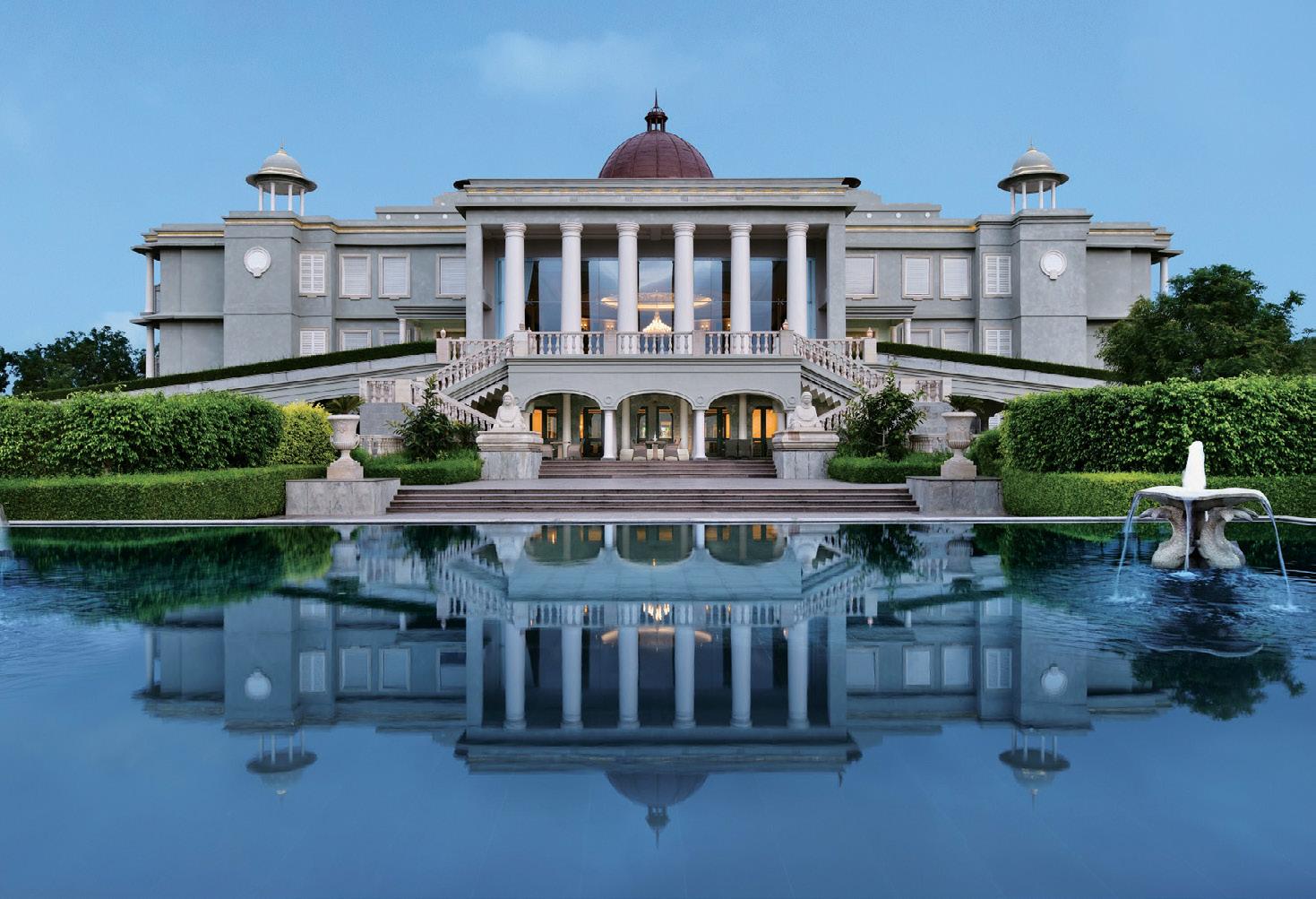
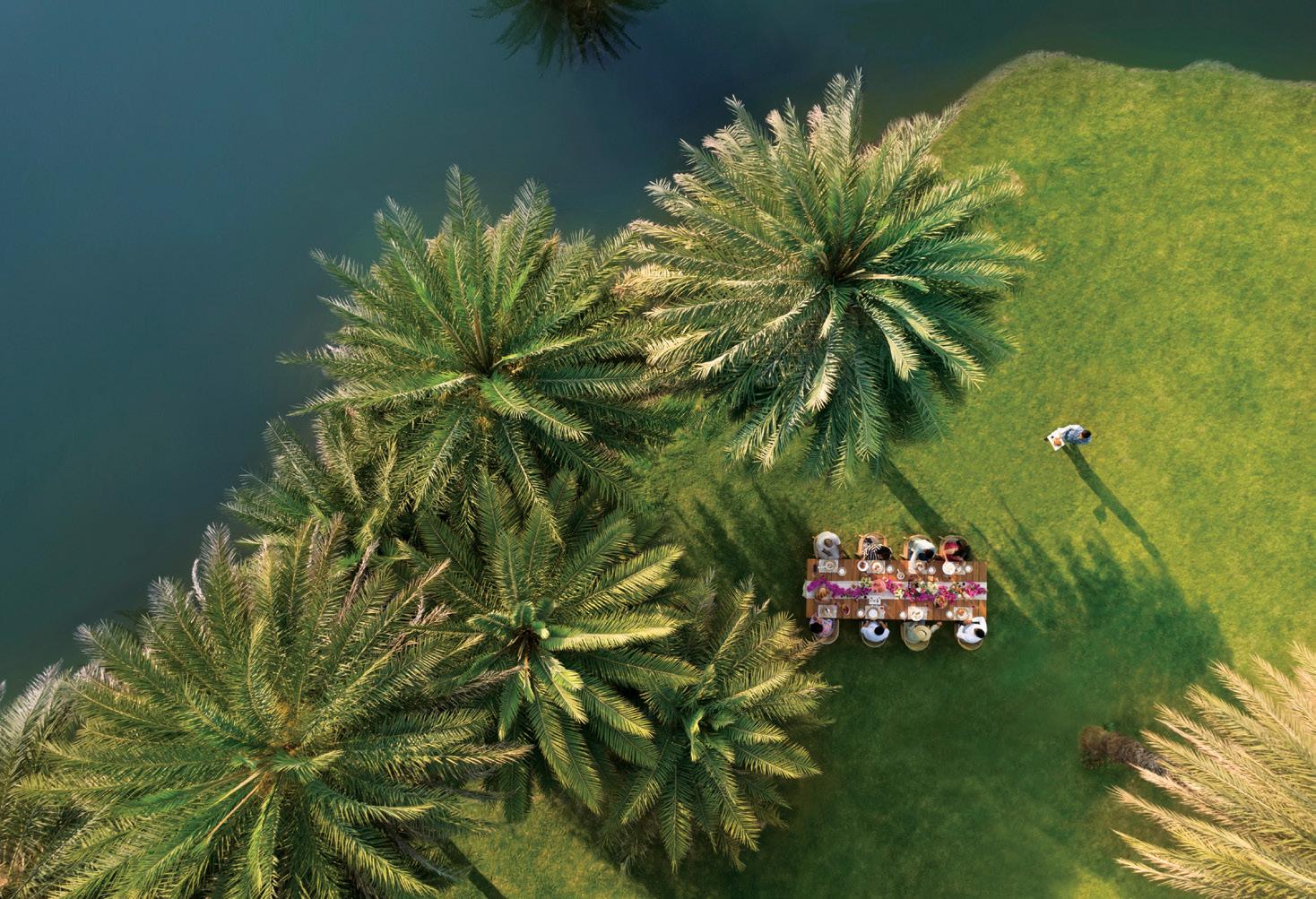
cultural events—Cannes, Milan Design Week, Art Basel—positioning India not just as a heritage destination but as a creative force, reshaping its global image.”
The luxury travel segment is rapidly evolving, driven by transformation, hyper-personalisation, rising purchasing power, and a growing demand for culturally immersive experiences. Santosh Kumar, Country Manager for India, Sri Lanka, Maldives, and Indonesia at Booking.com, says, “Booking.com’s How India Travels 2024 report shows a clear shift from cost-conscious to premium inbound travellers. Luxury accommodation bookings grew 17% in 2024, as visitors seek highly customised itineraries tailored to their passions and preferences.”
India’s luxury hotel and travel sector stands at a pivotal crossroads— poised to transform from an emerging market into a global luxury powerhouse. Success will depend not only on expanding infrastructure and high-end properties but also on crafting seamless journeys that resonate emotionally and culturally with guests.
INDIA’S LUXURY HOSPITALITY SURGE
It is not just anecdotal but hard empirical evidence that indicates that luxury hospitality in India is on an unprecedented growth spree.
What does the rapid, almost dizzying march of global luxury hospitality towards—and from within—India augur for the market in the short and long term? The overt spending in the sector is attracting newfound attention. Indeed, in an unprecedented case, Thai luxury brand Anantara took the unusual route of opening its first 150-room hotel in India only for weddings in the first five odd months of its openings, reporting 40 lavish weddings that had the Minor Hotels citing it as a major success.
At the other end of the country, IHCL has opened its second hotel
SUMAN TARAFDAR
in Bekal, incidentally also with 150 rooms, becoming the hotel with the largest inventory in north Kerala. It is squarely aimed at the wedding/events market. Does data back up this anecdotal evidence? Current signs are encouraging—the Indian luxury hotel market size is estimated at $2.99 billion in 2025 and is expected to reach $4.83 billion by 2030, at a CAGR of 10.06%. While modern luxury hospitality in India has deep roots, its rapid growth in recent years is especially noteworthy. And if the upcoming investments are any indication, this trend is just taking off.
Source: Mordor Intelligence
Source: Mordor Intelligence
INDIA LUXURY HOTEL MARKET 2022-2032 (BY TYPE)
Source: Hotelivate
The rise in disposable incomes, increased high-end domestic travel, a residue of changed travel patterns that emerged post-COVID, greater supply of leisure resorts, and increased connectivity have all contributed in their own ways to this rise.
Indian travellers are splurging like never before. Luxury hotels are reporting sharp rises in the share of revenue coming from domestic travellers. While the overall leisure segment is growing at about 10%, the rate of domestic leisure travel is purportedly
higher. And a significant proportion of this is in luxury hospitality.
According to a report by Bernstein Private Wealth Management, India is projected to be the third-largest nation in tourist inflows by 2027, with expenditures surging to $174 billion.
The Indian hospitality industry is expected to add over 100,000 hotel rooms in the next five years, a 20-30% increase from 2024 levels, according to a report from IBEF. Marriott International reported that 70% of its signings in India were in the luxury segment.
INDIA LUXURY HOTEL MARKET 2023-2032 (BY CATEGORY)
Chain Independent
Source: Custom Market Insights
The major indications:
The Luxury-Upper Upscale segment has 34% supply share of rooms in the country, 37% demand share and 34% pipeline share. It earned 56% of all India room revenue. About 80% of its inventory is in business cities, with about 20% of segmental inventory in key leisure markets.
The Luxury-Upper Upscale segment saw an all-India occupancy of 68.9% in 2024, which is the highest ever for this segment, as is the ADR of ₹12,377. The segment crossed the ₹10,000 mark in 2023 and has grown by 6.4%.
Seven of the top 10 hospitality markets in the country have segmental ADR of ₹10,000 and higher, with Udaipur topping the list at over ₹24,000.
In 2023/24, five-star deluxe hotels achieved an occupancy rate
of 69.2%, while five-star hotels reached 68.3%.
The average rate for five-star deluxe hotels surged to ₹15,655, reflecting a 20.2% increase over the last 12 months. Similarly, five-star hotels saw a notable 19.8% rise in their average rate, reaching ₹8,756.
The overall RevPAR demonstrated a robust increase, with five-star deluxe hotels experiencing a 23.6% rise, and fivestar hotels seeing a 22.1% increase in the same period.
Five-star deluxe hotels stood out with an exceptional 147.4% increase in RevPAR over a 24-month period, the highest among all categories. Five-star hotels followed with a robust 131.0% growth.
While brands such as Raffles and Anantara have entered India, many other global brands
SUPPLY ADDITIONS - 2024
Source: Horwath HTL
The Indian luxury hotel market size is estimated at $2.99 billion in 2025 and is expected to reach $4.83 billion by 2030, at a CAGR of 10.06%.
are exploring the market. Hyatt has announced the group will introduce Standard Hotels, Destination and Unbound Collection to India. Dusit is building its first Devarana in the country. IHCL has introduced the Claridges Collection.
The number of Indian households that can afford luxury travel is expected to triple from 70 million to 220 million in the next five years.
Source: Horwath HTL, Hotelivate, Mordor Intelligence, Bernstein
WE BELIEVE THAT REAL BEAUT Y LIES IN THE DETAILS and many more.
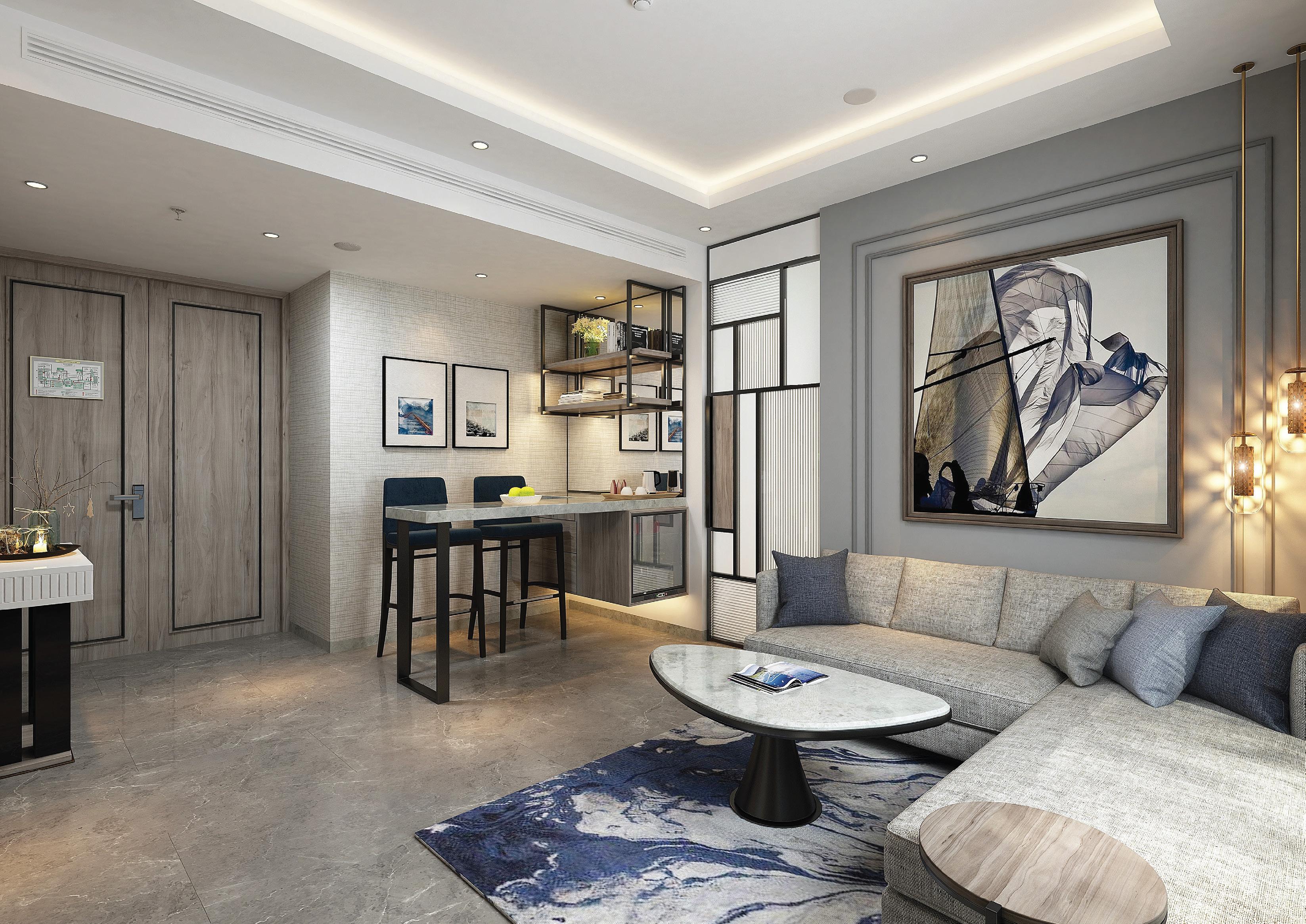






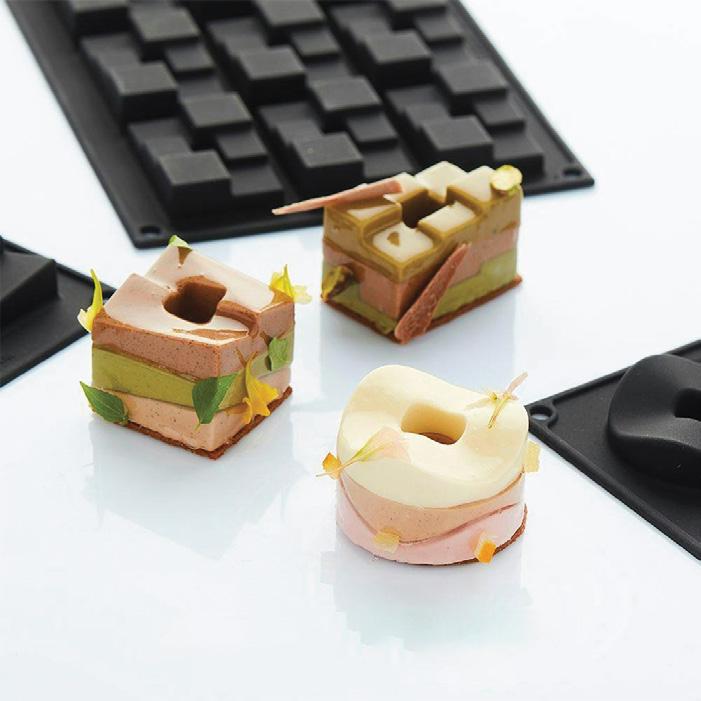
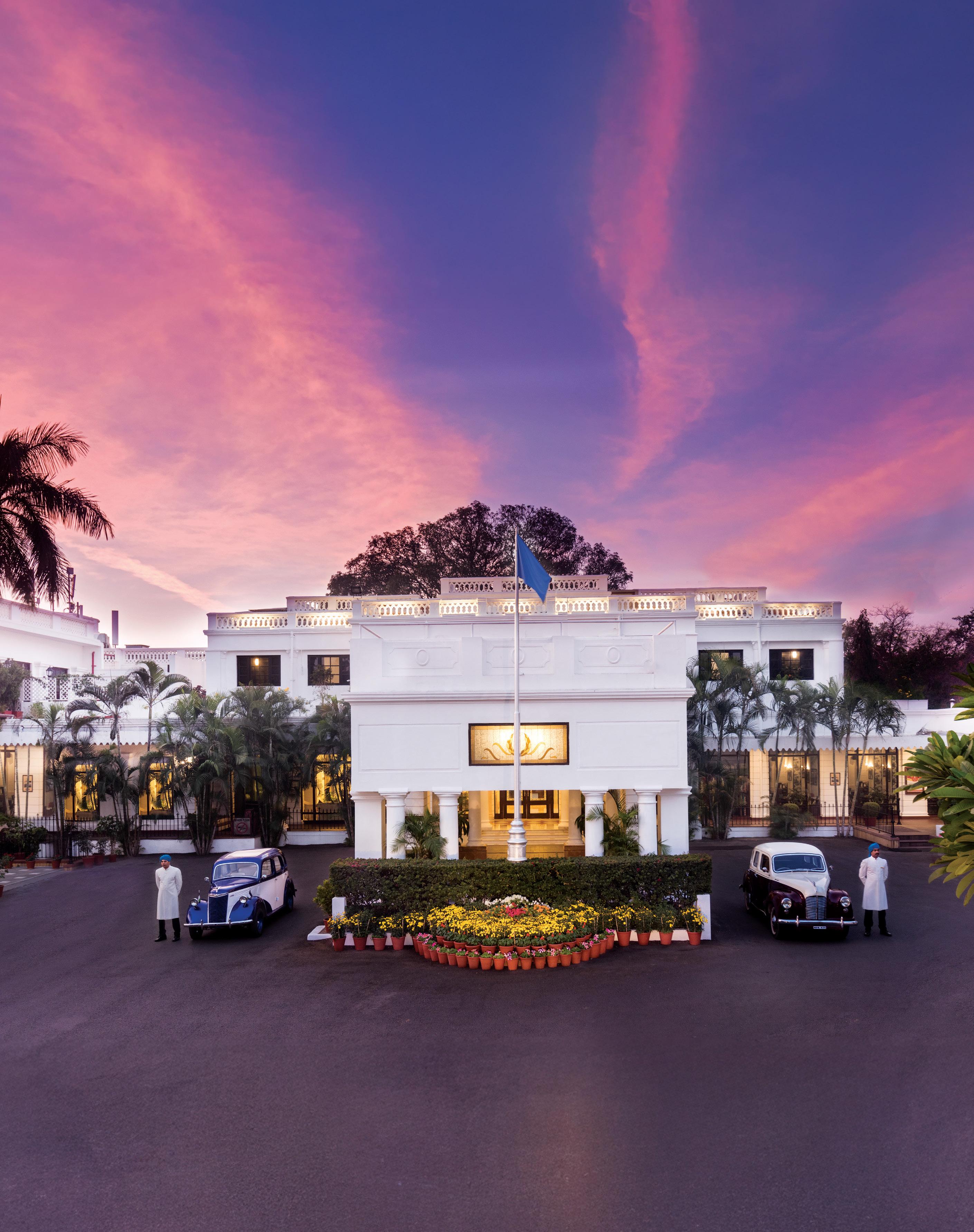


BOUT IQUE
B LUE P RI N T
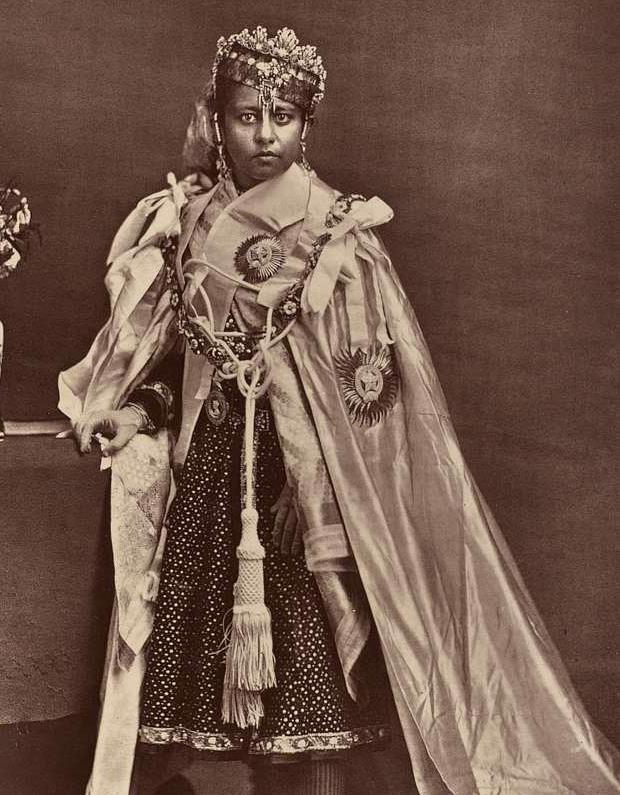
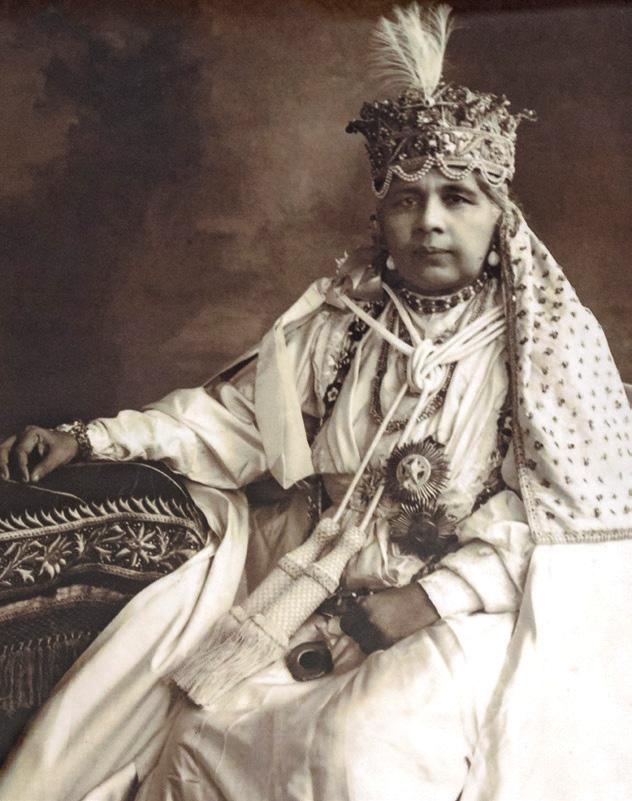
IN THE BEGUMS' FOOTSTEPS
Bhopal was the rare kingdom in India to have been ruled by a series of begums. The regal Jehan Numa Palace is an ode to their legacy, while Reni Pani Jungle Lodge offers a unique wildlife experience that blends luxury with a pristine forest experience.
set enviable benchmarks for hospitality in the
Women rulers. Almost an oxymoron in a land of deep-seated patriarchy. At best, a rarified phenomenon, evidenced only in few and far between cases. Yet India’s one kingdom had four begums ruling in succession (well, almost), collectively reigning for over a century (1819-1926), over a kingdom that not only flourished socially and economically but was even at a point regarded to have the highest GDP for any Indian city.
Whether true or not, the begums of Bhopal—nawabs in their own right—were instrumental in providing a stable and prosperous kingdom. They were prodigious sponsors of buildings—Taj-ul-Masajid, Gohar Mahal, Moti Mahal, Moti Masjid, Minto Hall, Taj Mahal (no, not to be confused with the one in Agra), Ahmedabad Palace, Jehan Numa Palace, amongst a host of others.
The last mentioned is today the cynosure of Bhopal, a growing metropolis and state capital. This flagship of the Jehan Numa Group of Hotels is named after Sultan Jehan Begum (re. 1901-26). A great reformer who founded several educational institutions in Bhopal, started the practice of compulsory primary education in 1918, introduced vaccination programmes to the city, reformed taxation and civil services, and built irrigation facilities. It was in her honour that her second son, General Obaidullah Khan commissioned the palace in 1890.
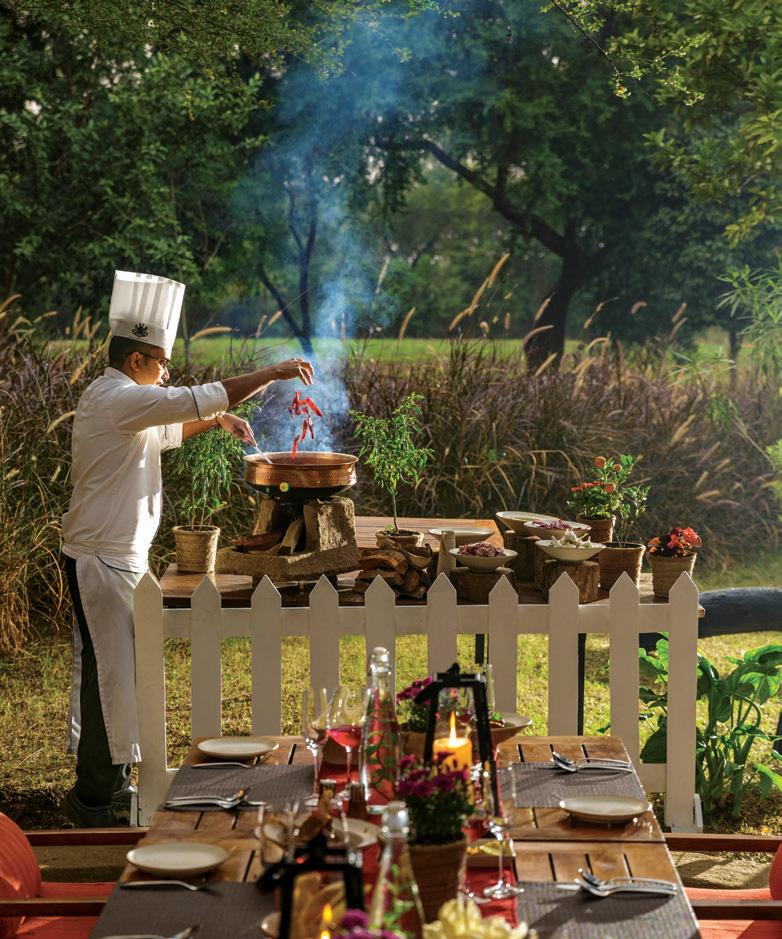
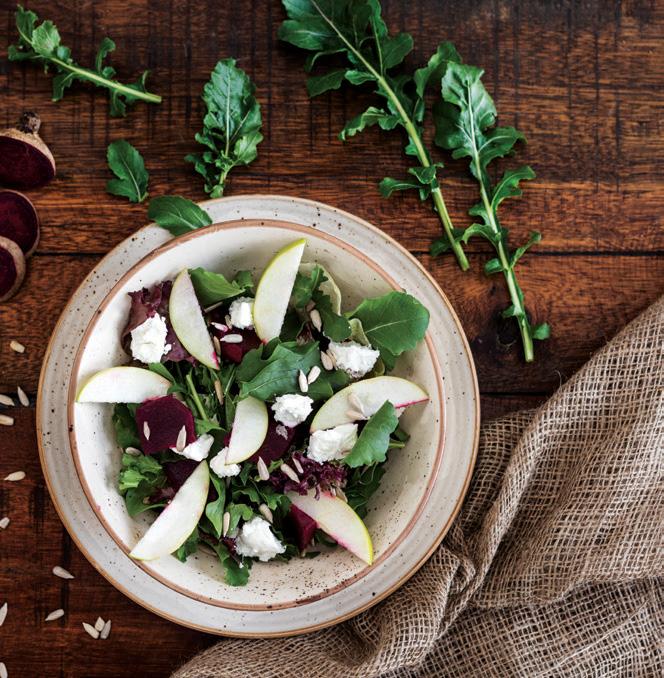
THIS PAGE, CLOCKWISE FROM BELOW: A view of an inner courtyard at Jehan Numa Palace, with the famous mango tree in the foreground; chefs conjure a vast array of dishes; a lot of the ingredients are grown in-house; indulge in a unique dining experience at ‘Under the Babool Tree’ in Jehan Numa Retreat.


It was transformed into a hotel in 1983 and is today a sylvan dream in white, combining Victorian, Italian Renaissance, and Classical Greek architectural styles. Jehan Numa Palace has created a market for leisure and luxury travellers in Bhopal and is at the core of the social life of the City of Nawabs. Weekends are buzzing with guests who travel from cities nearby, Rajasthan and Delhi, and locals who often dine out at one of its restaurants. The family also runs Jehan Numa Retreat on


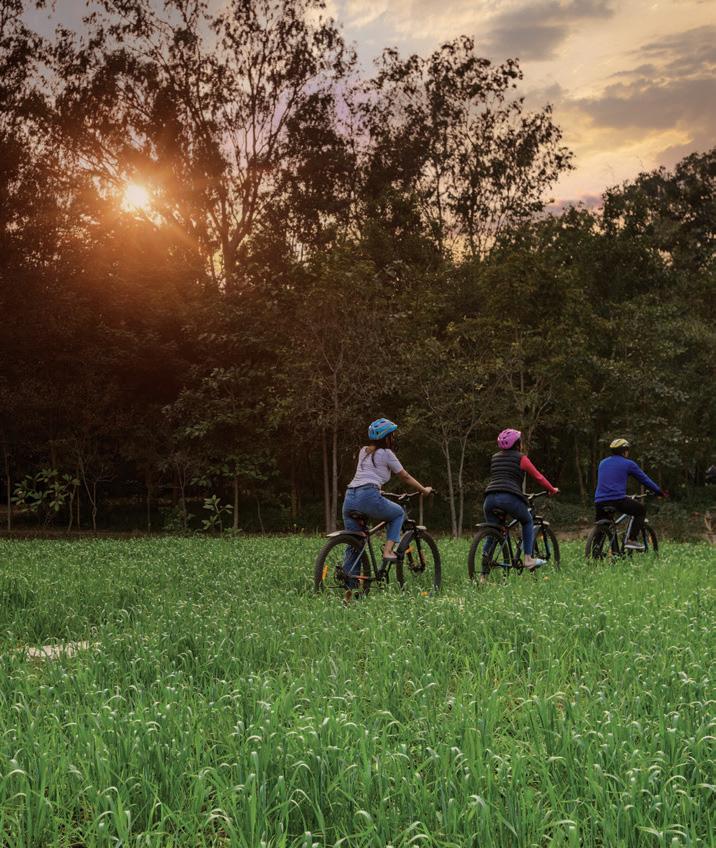
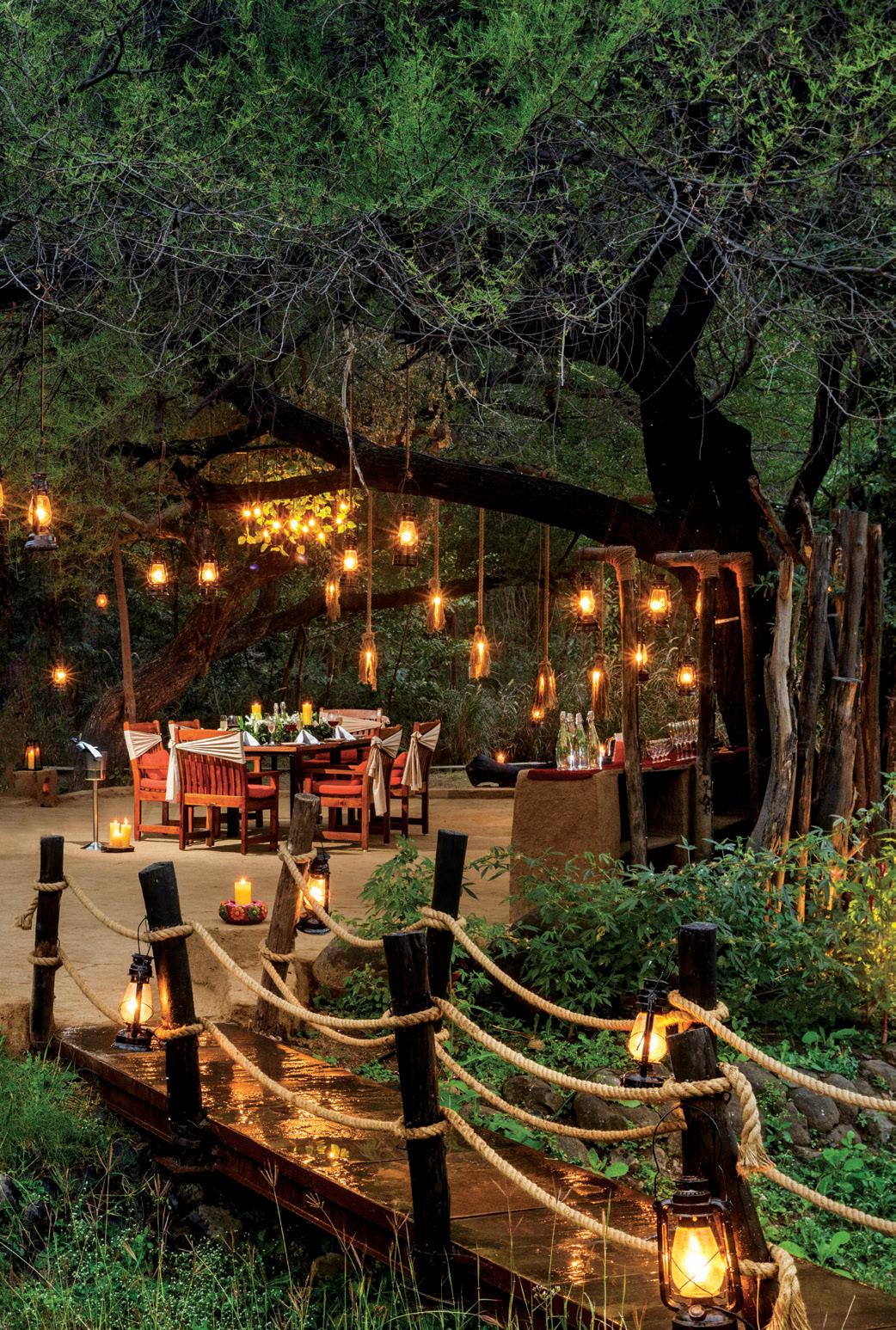
the edge of Bhopal, where its farm-to-table café attracts families and the young on weekends. Reni Pani Lodge and Bori Safari Lodge are their jungle lodges.
The palace stands on a gentle slope of Shamla Hills, on the southeastern side of Bhopal’s Upper Lake. Incidentally, it did not start life as a residence. Instead, it was initially the General's office and later used as offices, a hostel and even the offices of the Geological Survey of India.

The sprawling low-rise property is spread around courtyards that add to the experience akin to being in an English countryside estate. The property wears its architectural heritage lightly though—the white exteriors are interspersed with generous amounts of greenery in the shape of lawns, gardens, iconic trees and plants that add a layer of colour and vibrancy. The white walls are a perfect foil to the generous interplay of multihued bougainvillaeas.
The legacy is just as evident in the diverse dining spaces. Easily the most sought-after is the Under the Mango Tree. Yes, it’s under a century-old mango tree, now almost venerated by regulars. A courtyard restaurant offering signature dishes and regional favourites in an al fresco setting, it is also the repository of some of the legacy dishes of the family. Think Frontier Chapli Kebab, Fiery Jungli Maas, Filfora, and Gulab Ke Kheer.
At a special offering called The General’s Table, some of the dishes served during the general's wedding have been recreated and brought here. Shahnama is an all-day multi-cuisine restaurant while Shergar is a safari-themed lounge offering a relaxed atmosphere for drinks and small plates. Catch some of the most stunning portraits of magnificent wildlife here.

The palace also caters to more contemporary preferences. For a slice of Italy in Bhopal drop into La Kuchina, complete with wood-fired pizzas and handmade pastas. Cafechino is a cosy café with artisanal coffee, fresh bakes, and light bites—and a lifetime away from the heritage. TAO—Pan Asian Restaurant & Bar, better known as Tattenham Corner—is the city’s first lounge bar and offers pan Asian flavours with a selection of wines and cocktails.
While Jehan Numa’s position as the city’s premier hotel remains unchallenged, the chains have entered, including Radisson, Marriott and Taj. Quite a few new hotels are being built, including the renovated NoorUs-Sabah Palace, also built by the former royal family. The city, however, is redolent in its languid charms— lakes, bazaars, mosques, temples, forests, and above all a unique culture, best captured in the 1993 Merchant Ivory film Muhafiz, remarkably spotlighting the clash between modernisation and tradition.
Today, the Jehan Numa Group of Hotels has grown, especially into wildlife tourism, starting with Reni Pani in 2008, adjacent to the Satpura National Park. Jehan Numa Retreat, a nature-centric urban resort within Bhopal, followed in 2017 and Bori Safari Lodge the year after. Incidentally, the group’s next flag will be the picturesque historic city of Mandu.
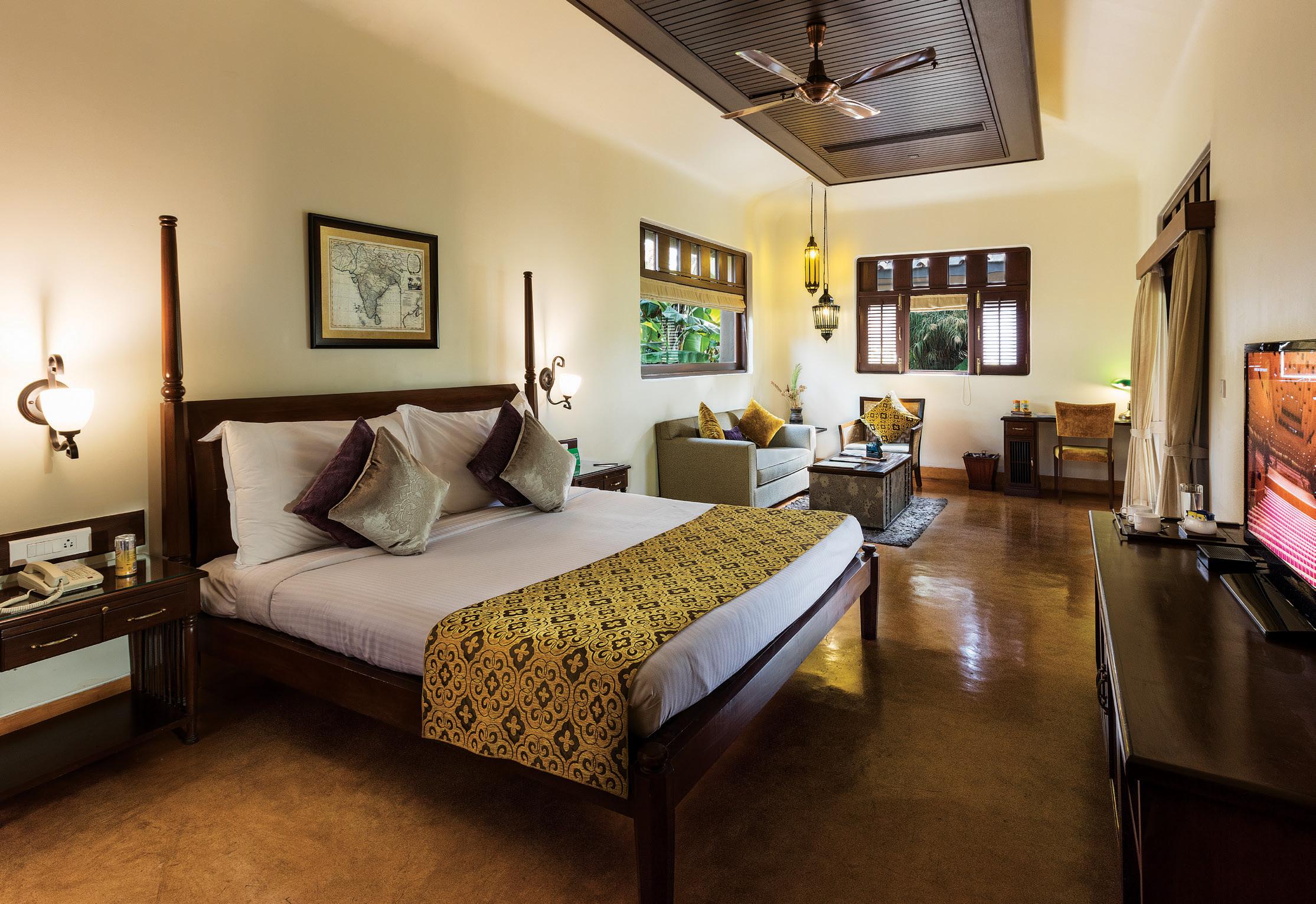

DIRECTOR, JEHAN NUMA GROUP OF HOTELS WITH
Faiz Rashid
He dwells upon the family's entry in to the hospitality business and the uniqueness of its flagship property.
As part of the erstwhile royal family of Bhopal, to what point can the family history be traced?
Dost Mohammad Khan (1660–1726), a Pashtun soldier in the Mughal army, travelled from Afghanistan to Bhopal in the 17th century. However, for us, Bhopal's identity is linked to the begums who ruled for over 100 years and made Bhopal unique in comparison to other princely states in the country.
How did your family get into hospitality?
It started when my father and uncle wanted to showcase their family legacy to the world and thus converted Jehan Numa Palace into a heritage hotel. We (as a family) were into breeding horses and were looking at an alternative business. We had these properties that we wanted to restore. It was very tough to be able to maintain these properties without a fixed income coming into them, especially as they were falling apart. The best way to do that was hospitality. We started with about 16 rooms and gradually have expanded over the years to 100 rooms.
What were the challenges in converting Jehan Numa Palace to a hotel?
It was in a very bad way since it had been rented out to different organisations before it became a hotel. The building existed, but we just rented it out since no one (from the family) was living in it. The family was living in the house next door. We got an architect to restore the main section first. Over the years we have renovated the palace and changed things around. That's how it all began. All the office rooms were converted into rooms. The mango tree area used to be an open garden restaurant.
The initial design, by an English architect, was inspired by houses he had seen in England. The style is similar to that of The Imperial Hotel in Delhi. Some of the extensions came later, and we maintained the architectural style of the original.
An offering fairly unique to the palace is the horses that guests can ride. How does this distinguish Jehan Numa?
In the family, the love for horses (runs deep), so we have
incorporated them into our hospitality offerings. The family has a legacy of breeding horses at the Bhopal Stud, which was established in 1939 by Rashid uz-Zafar Khan, and mainly catered to racecourses in Mumbai and Pune. Incidentally, while the horses—four currently at the Palace—are in Bhopal for the summer, they are usually stationed at Reni Pani, where guests can take them on rides in the forest.
Why did the group decide to venture into wildlife tourism?
The family has always enjoyed the great outdoors, particularly around Bhopal. We got into wildlife lodges with Reni Pani at Satpura. It was not a very popular sanctuary, but we wanted to showcase experiences within the park. Reni Pani and Satpura worked
really well with our model because it's the only park that allows us to conduct different activities and experiences.
Despite its remarkable legacy and scenic geography, Bhopal is not seen as a leisure destination. How can that change?
I feel this beautiful city should be a leisure destination. Whoever travels to the city falls in love with it. People don't understand Bhopal. They don't know where it is. It is a problem when you try to market it. But word of mouth from guests and travellers to the city attracts more travellers. Madhya Pradesh Tourism has also not really marketed Bhopal. They have got a lot of funds and budgets. They have to decide who they are going to cater to, and then focus continuously for four or five years on that segment to get the returns.
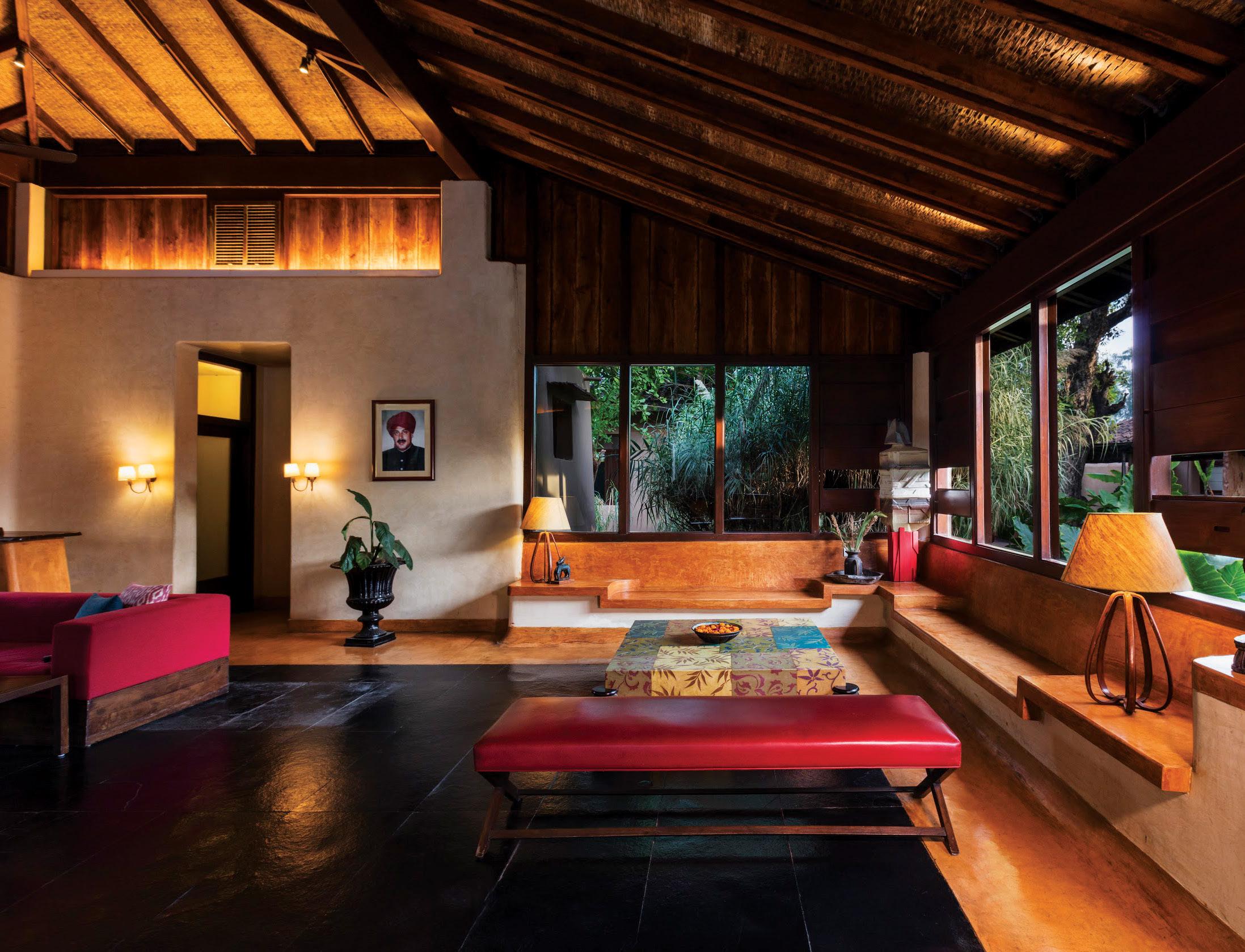
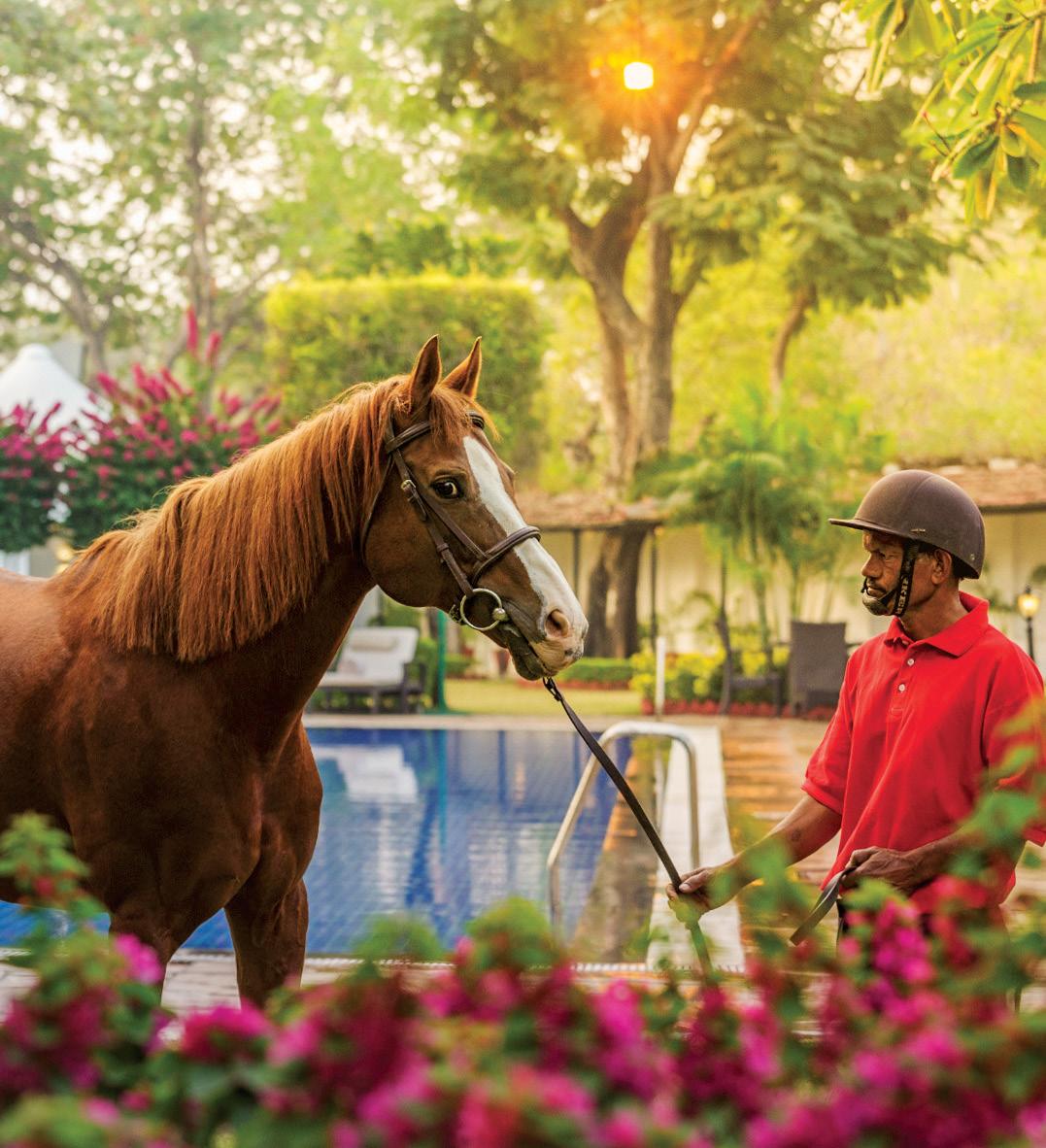
“
In the family, the love for horses (runs deep), so we have incorporated them into our hospitality offerings.”


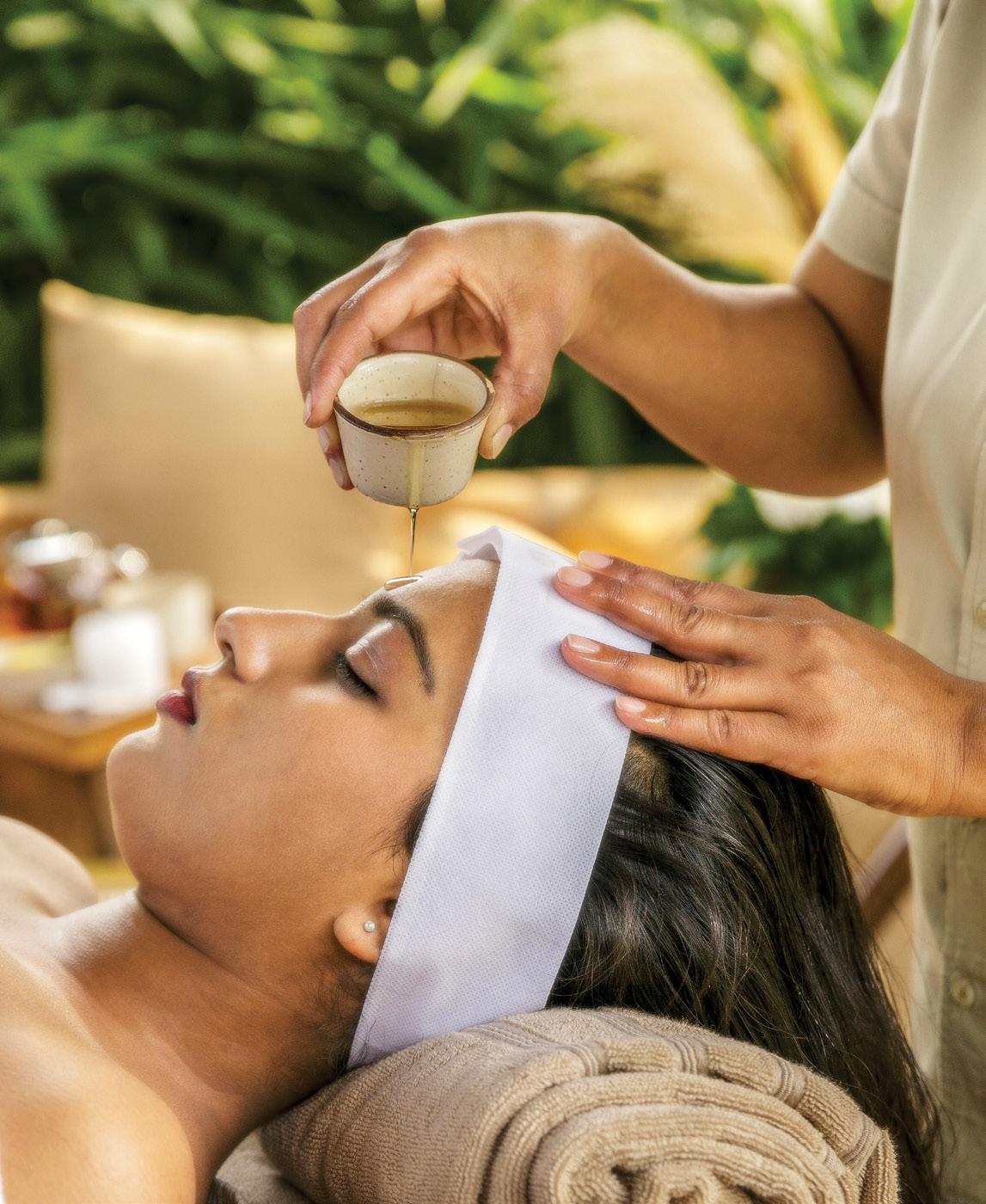
How do you view increasing competition from other hospitality players?
We are happy to see other hotels come up because they will help us market the city. You need more hands to get the leisure market going. The other crucial part of leisure travel is events, including weddings. So unless there is enough room inventory, events and weddings won’t be hosted here. To stand out in a crowded space, we are trying to carve a niche for ourselves with high-end leisure travellers, by focusing on experiences, unlike other hotels opening up with massive banquet halls. We are
focusing on guests enjoying and appreciating Bhopal's legacy.
Indian hospitality is on an unprecedented expansion spree, and heritage properties are on the radar of all the major players in the sector. Have you been approached?
Yes, a lot of chains have approached us. However, we do not want to go down that route. Our guests appreciate us for the personal touches we incorporate in the experience. We want to maintain the mood and the legacy.
RENI PANI JUNGLE LODGE
WALK WITH THE TIGER
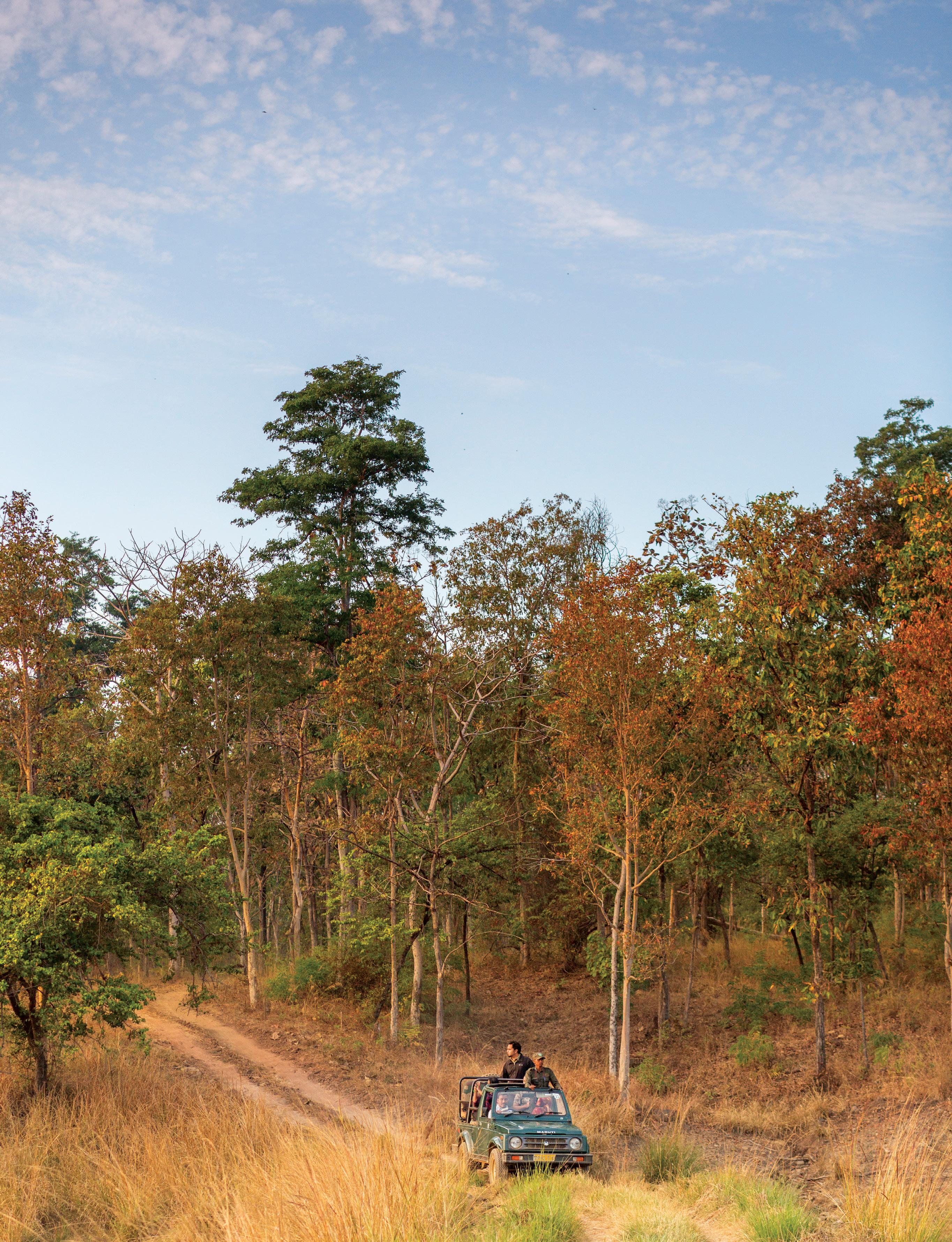
Have you ever stayed in the forest? No, really deep in the forest, where not just the unmanicured jungle flora is in your vicinity, but also the fauna—from the relatively benign spotted or sambar deer could be gazing warily with their liquid obsidian-hued eyes, huge droves of langurs clamouring to get inside your ultra-luxe cottage (more on that later), peacocks dancing within metres or, yes, the occasional leopard or tiger lounging in the river adjacent.
Reni Pani Jungle Lodge, located in the buffer zone of Satpura National Park, has no fencing to keep them out. To add to the elements, not all the 12 rooms and four luxury tents are bunched together (some are, though), giving you a feel of solitude in the jungle. As the big cats could drop in post darkness, and the rooms, beautiful as they may be, are devoid of land phones and have no wireless connectivity, they have been provided with a horn instead! To step out of the cottage after dark, you have to be accompanied by a resort team member—compulsorily. If you are alarmed post-sunset, you blow the horn—that was the first instruction at the start of the memorable stay. Even for a seasoned wildlife enthusiast, the experience is non-pareil, almost heaven-like.
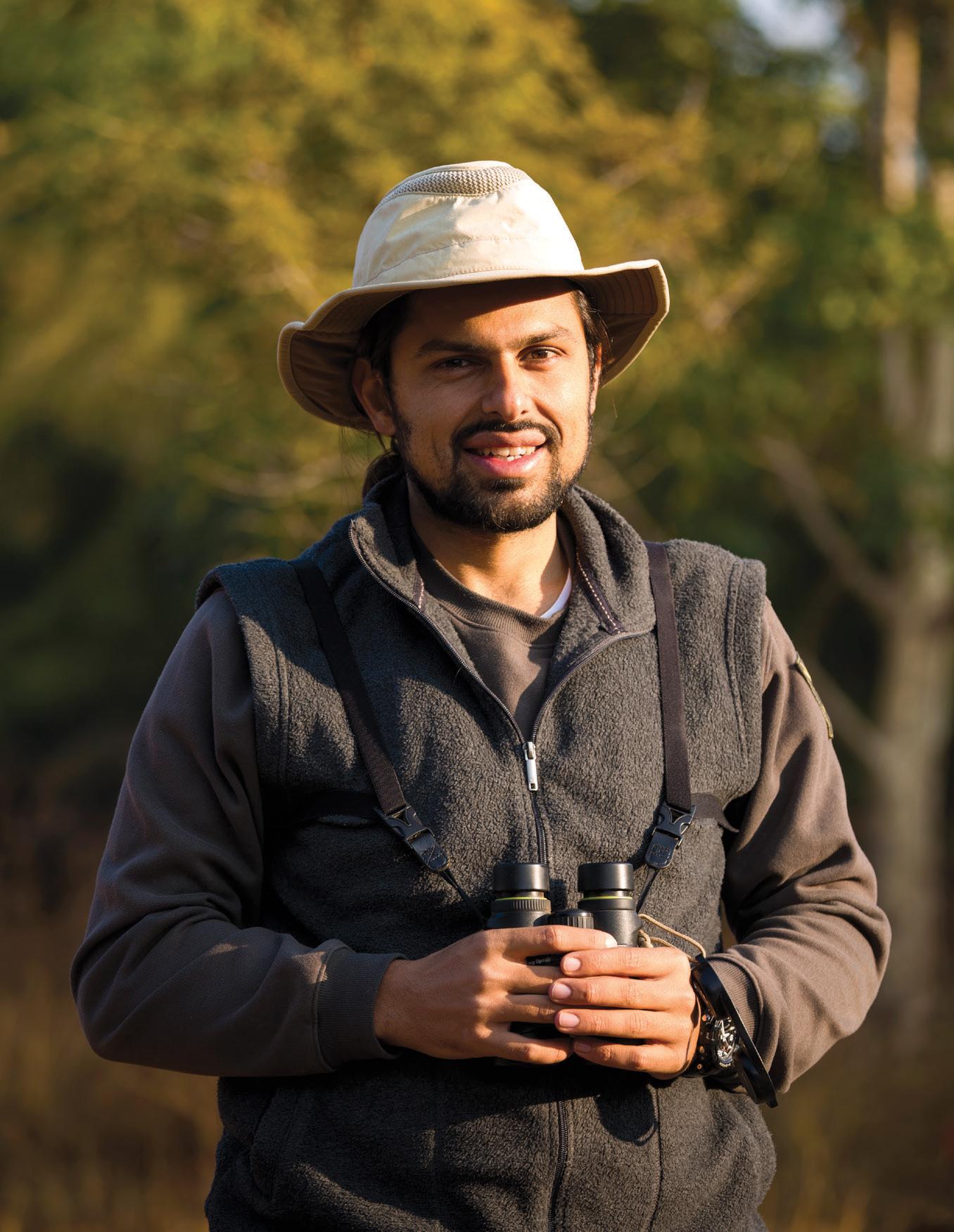
What makes Satpura National Park stand out from the other parks in the region?
Satpura is one of the largest parks in central India. And because it's so large, there are mountains, there are forests, and there are rivers. It boasts a very diverse landscape and that brings about diversity of wildlife. I have explored the park since childhood. It is quite rewarding to see a park that didn't boast of much wildlife initially and was home to a lot of villages within the sanctuary, has now caught up and is regarded as a premium park.
Reni Pani was the group’s first foray into wildlife tourism. How did that happen? How is the experience different here?
When we started the Reni Pani Jungle Lodge in 2009, it was focused on experiencing the diversity of the forest, with river safaris, walking trails and birding. Satpura has a very diverse landscape and that brings about a diversity of wildlife. Because it's large, tourism is also spread out. When they started tourism here 15 years ago, we were one of the pioneering lodges. At that time, the forest department wanted a unique model because other parks such as Kanha and Bandhavgarh
WITH
Aly Rashid
DIRECTOR AND FIELD NATURALIST, JEHAN NUMA WILDERNESS
He tells us how Reni Pani Jungle Lodge brings alive the magic of Satpura National Park.
were known for tiger sightings, unlike here. So, how do we sell or invite tourists without too many tiger sightings? That's why they offered other activities such as boating, canoeing, and walking for a different visitor experience. People know that if you want to see a tiger, there are several parks. But if you want to walk in the core area, Satpura is the only one in central India. However, increasing tiger numbers have meant that walking in the core zone is no longer permitted.
Compared to Madhya Pradesh’s best known national parks—Kanha, Pench, Bandhavgarh and Panna, Satpura flies relatively under the radar. Was that a challenge or an advantage?
Tourism is spread out, there's no mad rush. You get to see great sightings which now include tigers, leopards, wild dogs, and sloth bears. Apart from the jeep safari, you can do the boat safari, the canoe safari, the walking safari (yes, you can walk in parts of the buffer zone now, a total no-no in most national parks in India) and the night safari.
During the last census tabulated, the park had 65 tigers. I think two years down the line we will have
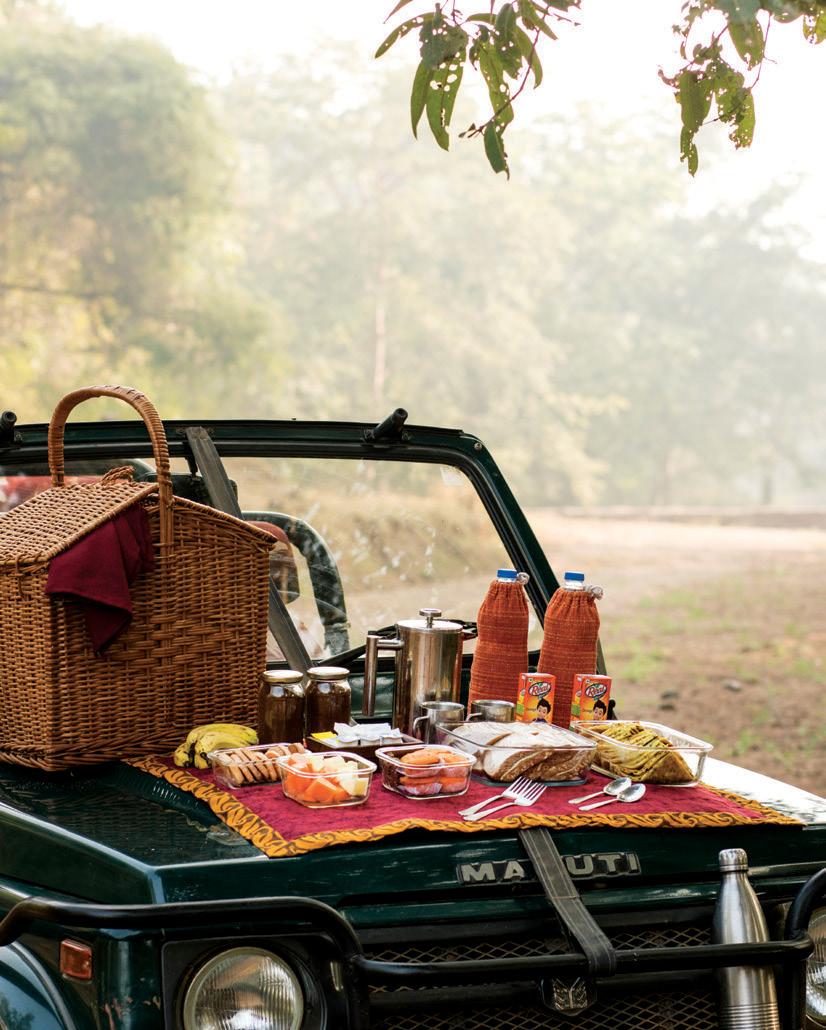
CLOCKWISE FROM ABOVE: The lodge offers sumptuous breakfast during safaris; a meal around the bonfire is an enchanting experience; dining in the wilderness.
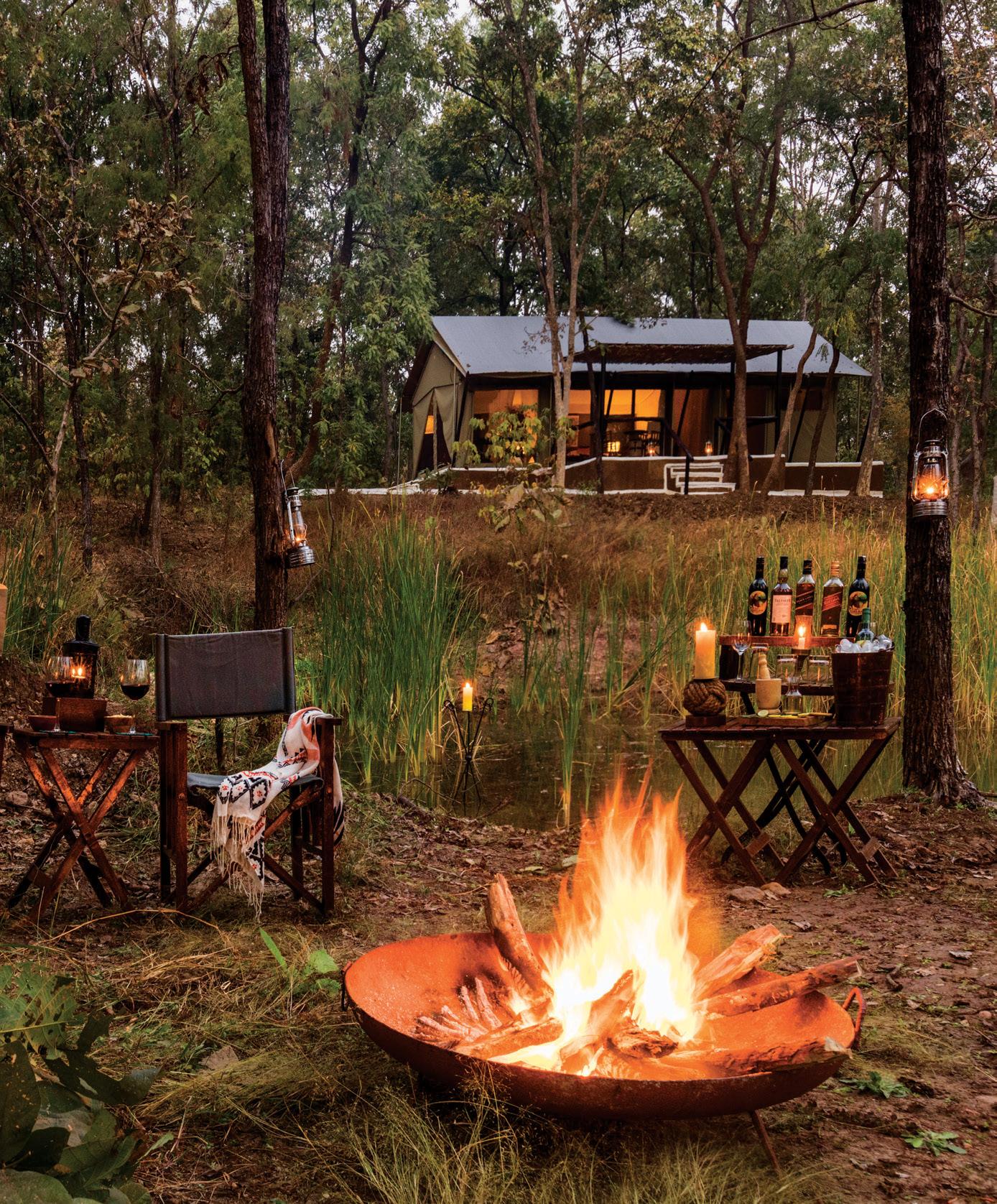
close to 80 to 85 because the numbers have grown in two years; tiger sightings have picked up.
What are some of the challenges for wildlife tourism in the area?
Right now, we have bottlenecks here as 20% of the park is open to tourism. We think that an actually bigger area should be open with lesser footfall. Right now, in most parks, you experience a lot of jeeps in a certain area and resultant bottlenecking. People from the villages at the entry gates are employed and benefit. However, 80% of villages all around the park do not benefit from tourism or employment. Forty villages have been moved out of Satpura in the last 20 years. None of the relocated villages have settled near the tourism gates. We want people from relocated villages to be employed in the lodges. It would be a better model, and more sustainable too.
The excitement also lies in exploring a new destination. When we set this up, no one knew about Satpura. Our newest resort, Bori, was in an almost unknown place. As a first mover, we have a successful



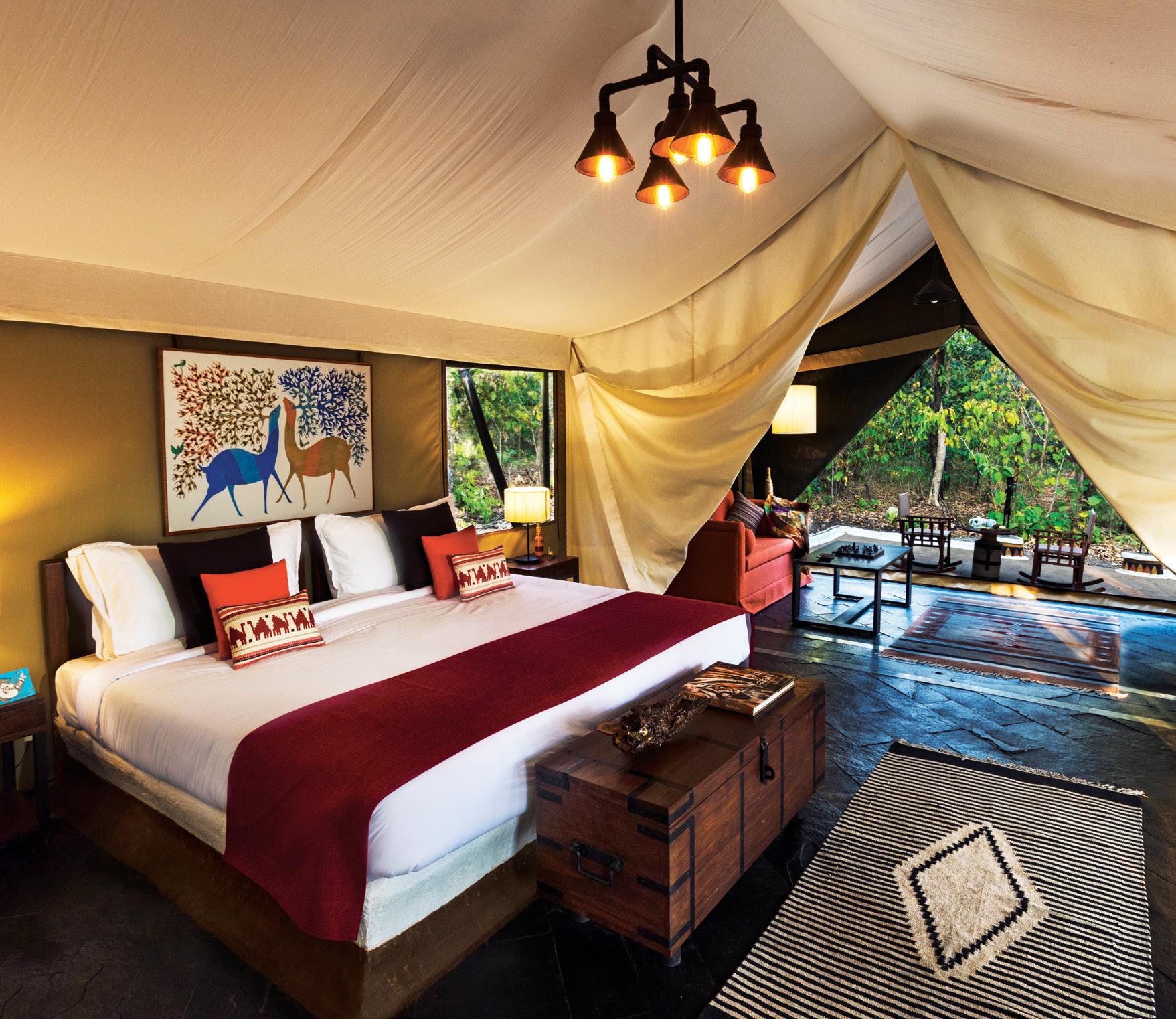
“
None of the relocated villages have settled near the tourism gates. We want people from relocated villages to be employed in the lodges. It would be a better model, and more sustainable too.”
business model. I think other operators and we too should look at newer parks rather than going to the saturated parks.
Staffing is not as much of a challenge as we employ locally and are lucky to have Jehan Numa Palace, from where senior staff come to train. But things like electricity are still a huge issue. We are running a generator for almost 12 to 14 hours a day sometimes. We get the electricity but the voltage is too low to run our equipment. Unfortunately, solar power is not an option here. We have a lot of forest cover and very little open ground.
What is the concept of the lodge?
It is a conservation-driven operation. We try to be
as low impact as possible to the environment, as close to nature as possible. Most of our staff is from within a five-kilometre radius. Tourism plays a big role in conservation because it contributes to the local communities. We don't have to actually actively do conservation management, but by employing locals, by being the eyes and ears of the forest, and by bringing revenue to the park where tourism can be a vital contributor to conservation. When you look ahead, there seems to be an interest in wildlife tourism domestically.
Are you looking to expand wildlife lodges?
We are looking to grow. We are looking at one or two locations and soon hopefully we will zero in on one. We also have wildlife tours and are looking to do more guided wildlife holidays within India under Just Nature Expeditions.
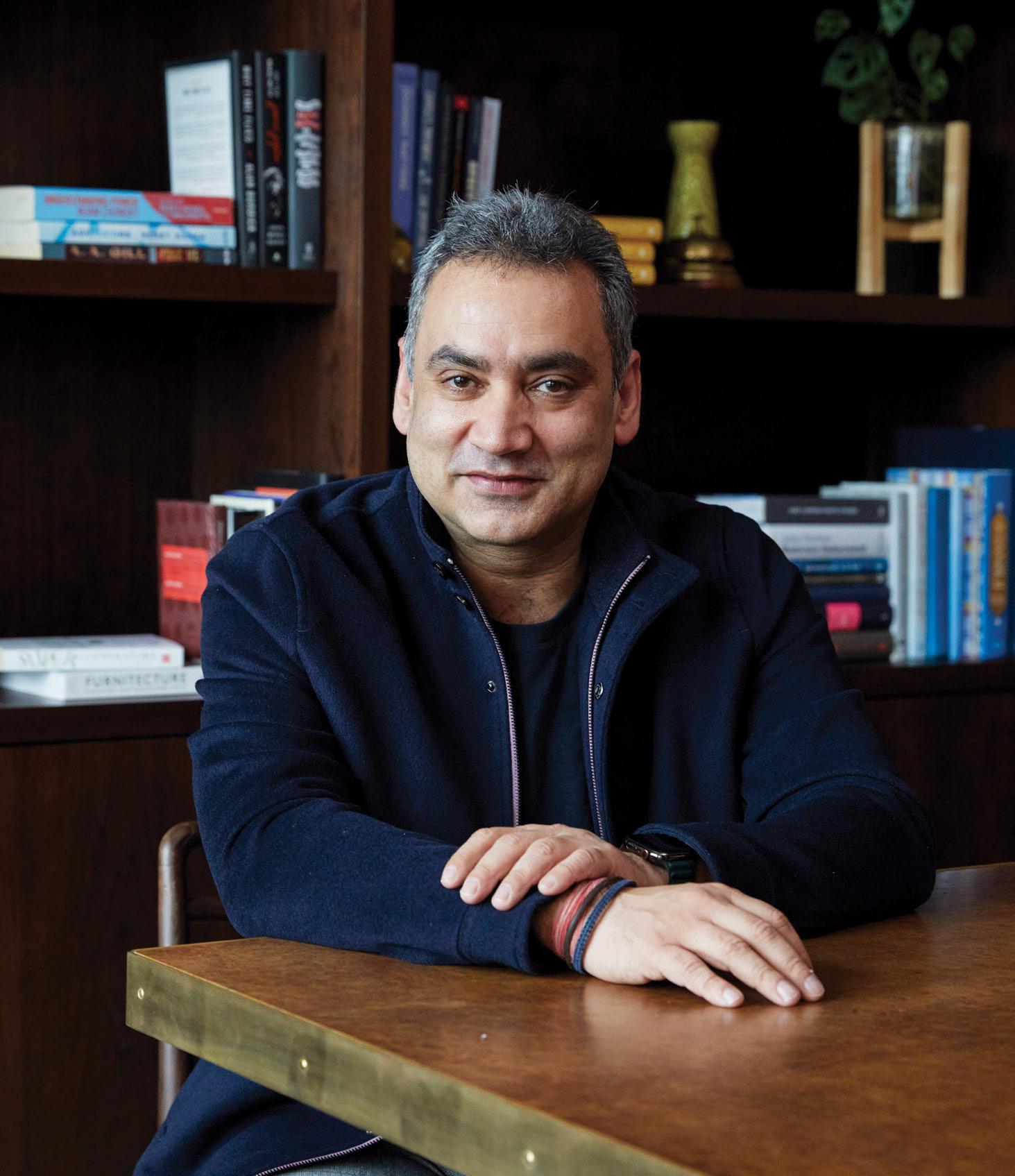
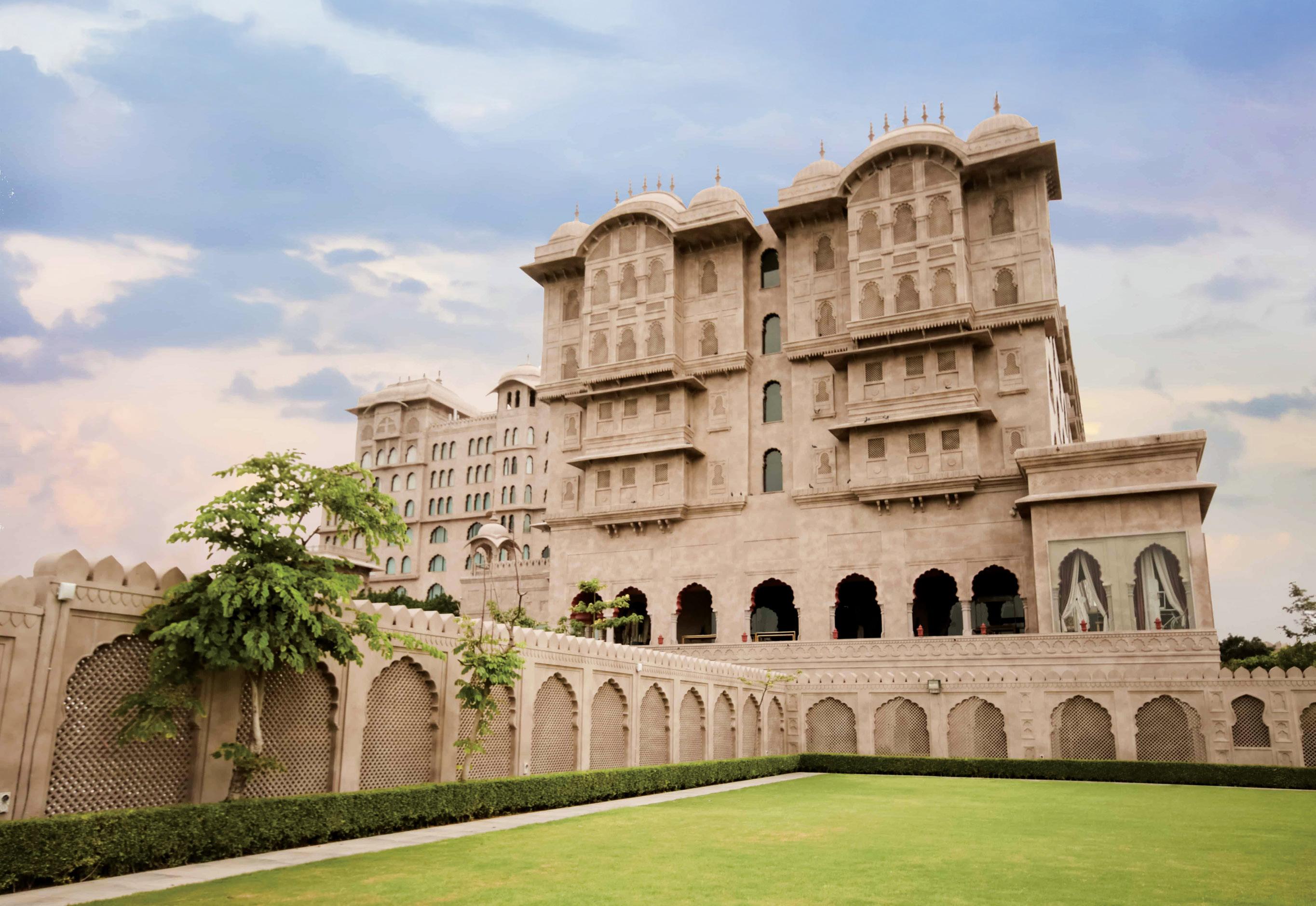
IS THIS INDIA? ACCOR’S DO-OR-DIE MOMENT
Global hospitality major believes its India story needs to accelerate to grow faster. Can a new merged entity do it?
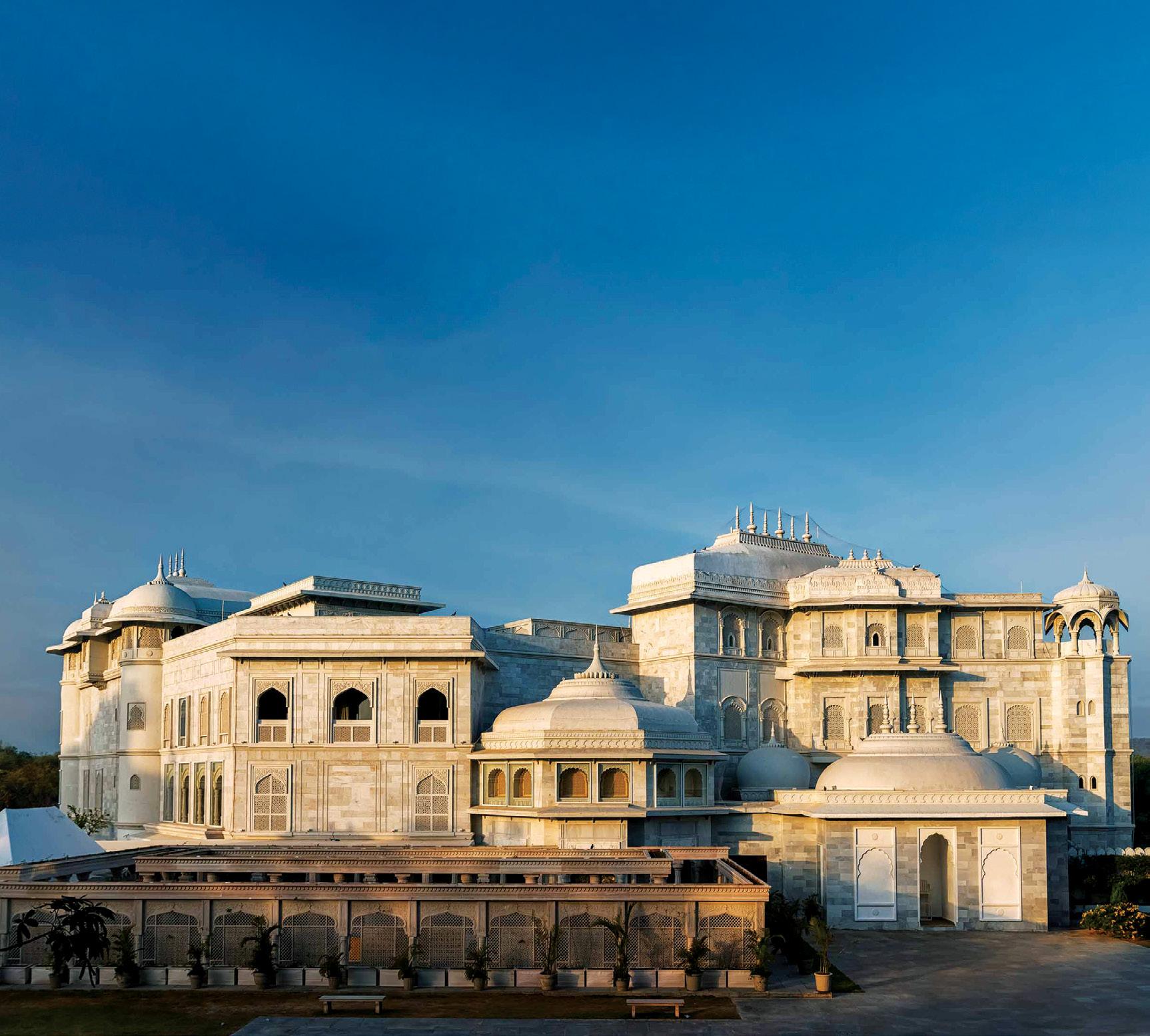
Number of Accor hotels globally: touching 6,000.
Number of Accor hotels in India: 70 odd.
That statistic tells its own story of Accor—one of the largest global hospitality chains—in India. One could go on. Of the 40+ Accor brands globally, India has just nine. About nine-tenths of this portfolio is distributed among Novotel and ibis. There is just one Sofitel in India, just a couple of Pullmans, and two Fairmonts. Although Accor invested in India, its growth has not perhaps kept pace.
Accor CEO Sébastien Bazin, in a rather public dressing down at HICSA 2024, had expressed dissatisfaction at the group’s growth in India, saying that 90% of the success of hotel companies is linked to two things— demography and emerging middle class—and on both parameters, India was perfectly placed.
Well, whatever the reason, Accor has taken a hard look and decided to restructure its India operations. In a major shift, Accor India will now report to a board formed between Accor and InterGlobe, an announcement that had been made last month.
Following up, Accor has announced that this new entity—whose name or exact details are yet to be revealed—will bring together the development, operations, and management platforms of Accor and InterGlobe in India.


The new entity is designed to serve as the exclusive growth engine for Accor’s brands across the country.
“India’s hospitality sector is entering a transformative phase, and this new platform is perfectly positioned to capture its full potential,” says Gaurav Bhushan, who will head this entity as Chairman. He is currently Co-CEO of Ennismore and CEO of Lifestyle & Leisure Brands at Accor. “We are consolidating our leadership team into a single entity and are making

This new entity forged between Accor and InterGlobe is perfectly positioned to capture India's full potential.
progress. While going through the legal motions, we are substantially ramping up development.
The whole intent is to build an autonomous business run by an Indian team with autonomous decision making. Elaborates Bhushan, “Many global hospitality companies have India as part of their Asian region or the Middle East region with teams reporting to Dubai or Singapore. Our approach is quite different. We will have an autonomous leadership team, reporting to a board, but running the business and making all the decisions on the ground. The India head, instead of reporting to EMEA or East Asia, will report to a board made up of interGlobe and Accor representatives. We have what I really believe is the most formidable portfolio of brands, from mid-scale to economy, and lifestyle to luxury. We will bring the entire portfolio of the Ennismore lifestyle brands, the restaurant and F&B brands into that venture.”
Accor and InterGlobe have had a partnership spanning about two decades. As part of this partnership, Accor and InterGlobe will bring together their currently owned assets, development and management businesses in the country to form one autonomous, integrated platform. This new entity will become the exclusive vehicle for growing all Accor brands in India, including luxury and lifestyle brands from Ennismore, Accor’s hospitality portfolio. Accor will continue to lead operations and
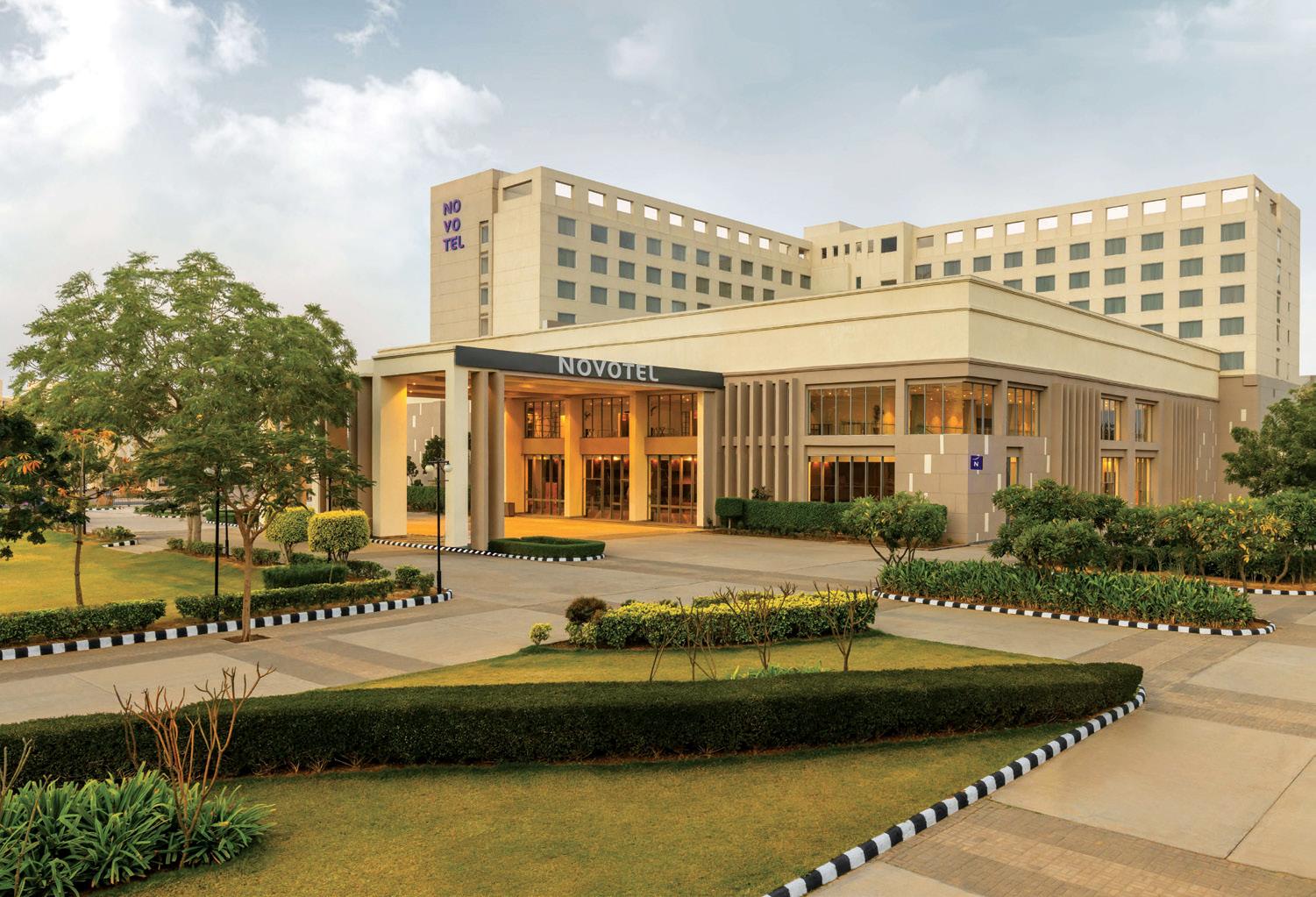
brand management and provide full access to its brands and services.
Bhushan admits, rather candidly, that there has been an examination of the challenges to Accor’s growth in India. “Accor has been growing reasonably well, but not as fast as we would like and not in line with the vision of both the partners, InterGlobe and Accor.”
Back to basics is how he says the operations will refocus on. “Our business as a hospitality platform is 95% execution. It is about the speed of decision making, having quality people and responding to situations. It's an operational business. If you don't make decisions on time, or the ground, it impacts the quality of your business and the confidence of your partners. So, all we are doing is ensuring that the business in every sense of the way is autonomous and local. And that gives us, I hope, an edge over a long period with a lot of other global hospitality players who maybe don't have the same approach.”
Bhushan hastens to add that the business model doesn't change. “The growth of the business is still very much intended to be asset-light. So, there's no change fundamentally in how the business model is. It's about executing
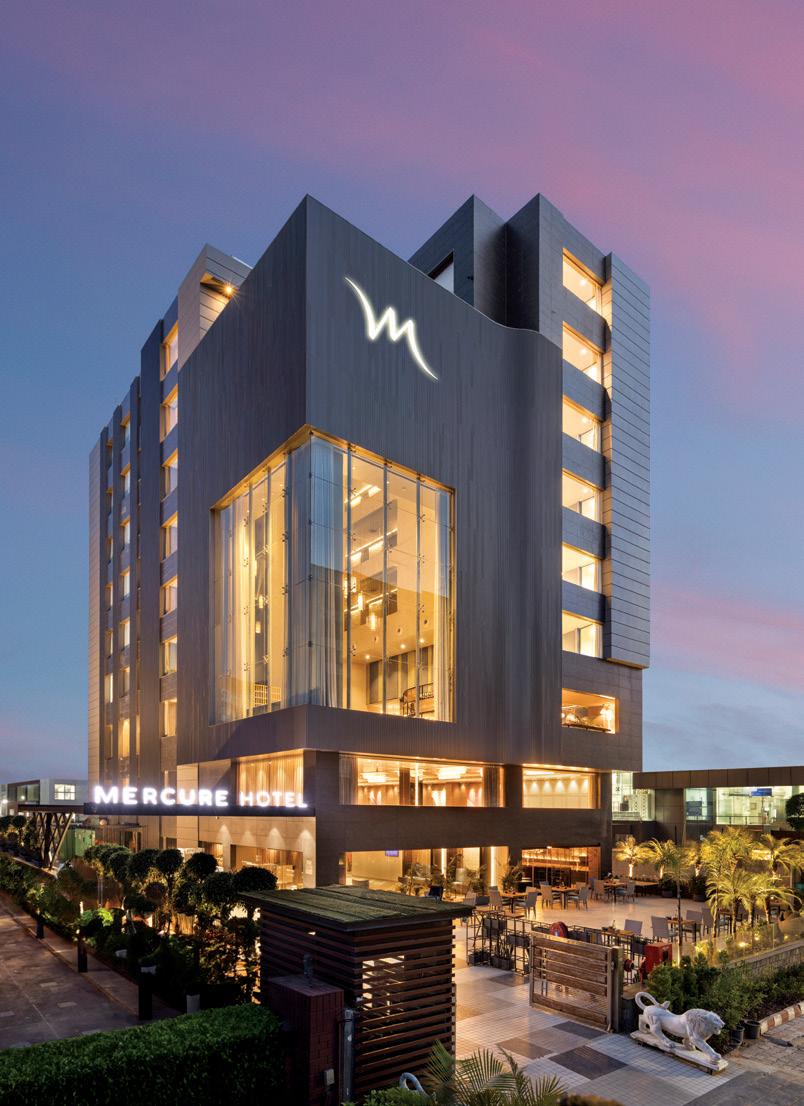
it smarter, with a much bigger portfolio of brands and a newly forged partnership with Indigo that will help drive a big loyalty piece, which is so important in a market like this.”
This alliance between InterGlobe and Accor is poised to turbocharge Accor’s presence in India with a target of 300 hotels by 2030, a statement from the hospitality major said. “The collaboration will help us drive our distribution and loyalty in the country. This joint venture will have a strategic partnership with Indigo in terms of loyalty and marketing. We are not going into the details of the equity ownership but it's very much joint decision making.”
Bhushan also points out that this consolidated joint venture will “have a big focus on luxury and lifestyle, and will continue to drive the mid-scale and economic growth that it's already been doing. Over the last 10 years, the scale of growth in India has been slower than the markets in the Middle East or Southeast Asia. But again it comes down to the GDP per capita
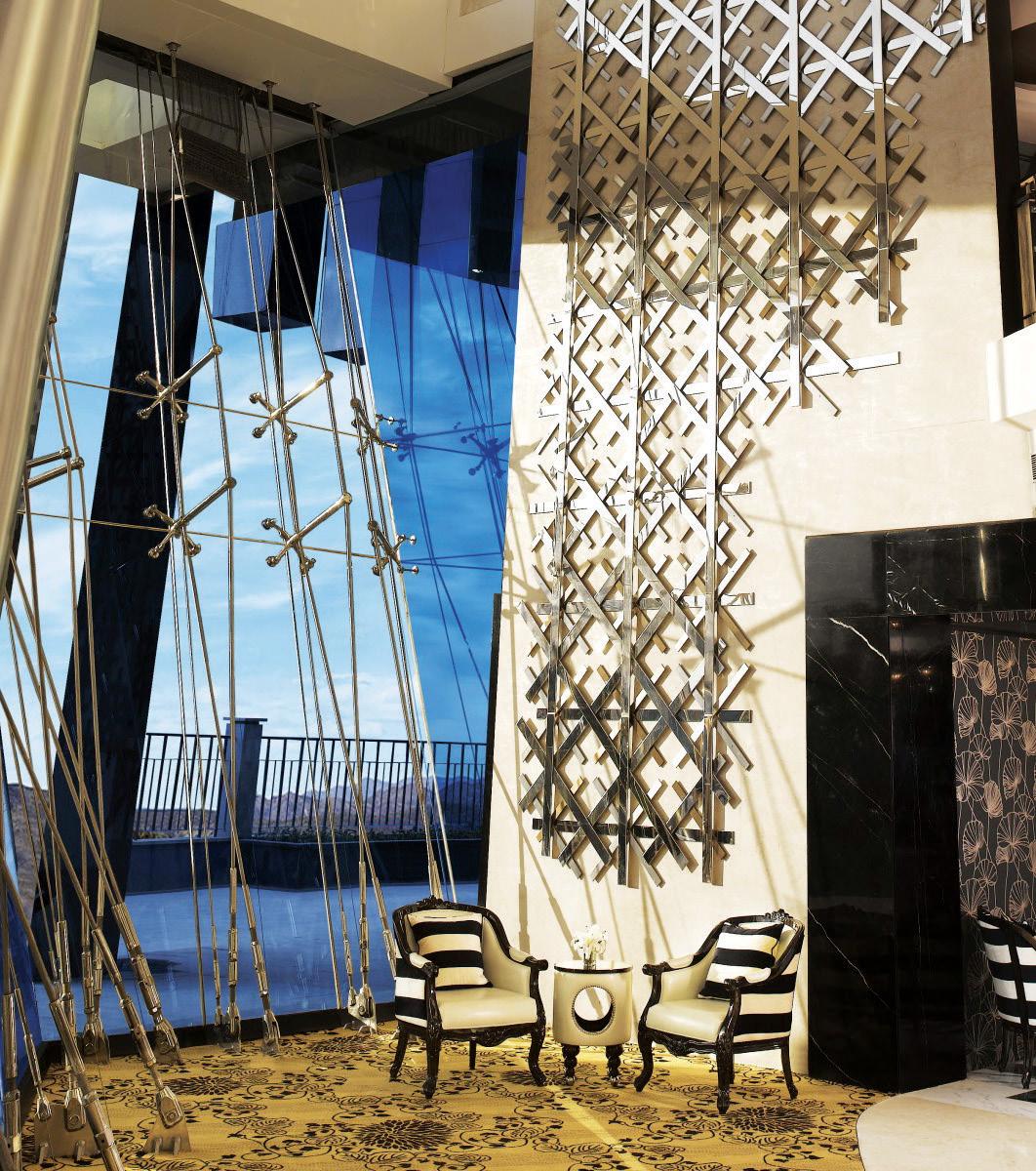
LEFT: Sofitel has only one address in India, but with Accor focusing on the luxury segment, could see faster growth.
BELOW: ibis Styles offers affordability with lifestyle.
and spending patterns and, as incomes grow, that will evolve. I can't tell you today exactly how that would play out. But the mid-to-long term trend is positive and we are betting on the growth of that.”
At the moment, 95% of the demand for that luxury end is coming from the domestic market, rather than from overseas travellers. There is an increasing propensity for local consumers and travellers to spend in India. “The leisure segment is probably the most underserved and under-resourced today and will experience the highest growth. People go overseas because they don't find the right experiences in the country.”
The group’s recent investment in Treebo is designed to address the economy end of the market, the sub-100-room hotel space. “The unified joint venture now has made a strategic partnership with Treebo, where the latter will take on a master license for the ibis and Mercure brands and develop that nationwide,” explains Bhushan.
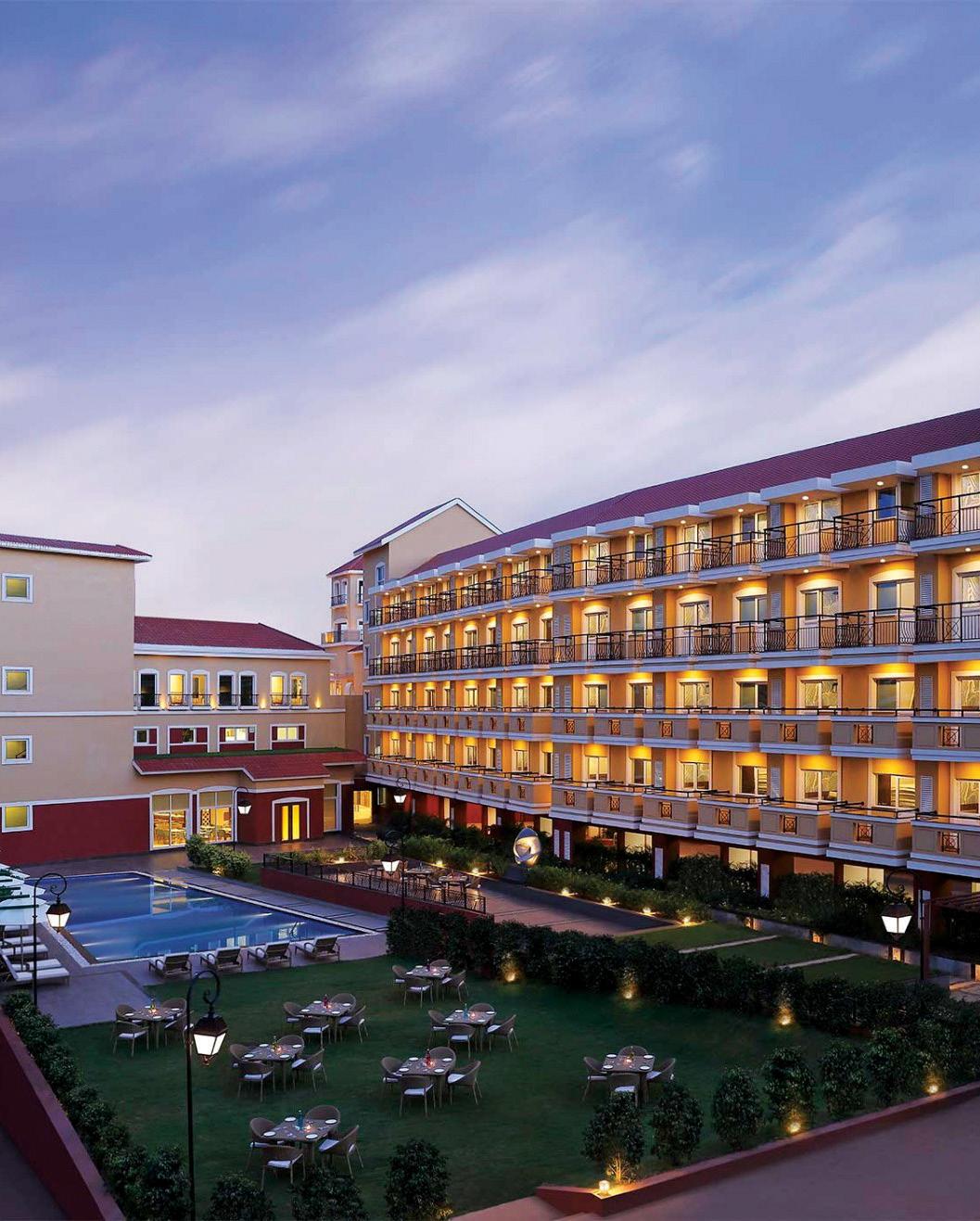
Contrary to wider economic headwinds that indicate a slowing of the Indian economy, Bhushan is confident in the Indian growth story. “The performance of the business this year continues to be a strong year in terms of RevPAR growth. The revenue per available room continues to grow in double digits. The fundamentals and economy are strong, there’s more and more travel driven by the domestic market, and the consumer is willing to pay for experiences provided they get the right product and quality. Household incomes are still growing. The disposable income in many markets is enough to drive discretionary spending. So the KPIs of hotels in Tier 2 and 3 cities are positive. And that, in the end, is the litmus test. Are people spending money? Is supply growing? Yes. Are RevPARs growing? Yes. Is spending growing? Yes. I can just tell you that's the reality. So when you take a step back and look at all the basics, structurally this business should have a very good growth cycle over the next five to 10 years.”
An Accor veteran, Bhushan has previously served as Global Chief Development Officer at Accor, overseeing the expansion of the Group’s portfolio from 12 to over 45 brands, and spearheading more than 500 hotel signings annually. His new assignment will probably be the most challenging yet. The potential is immense though.

INDIA CALLING
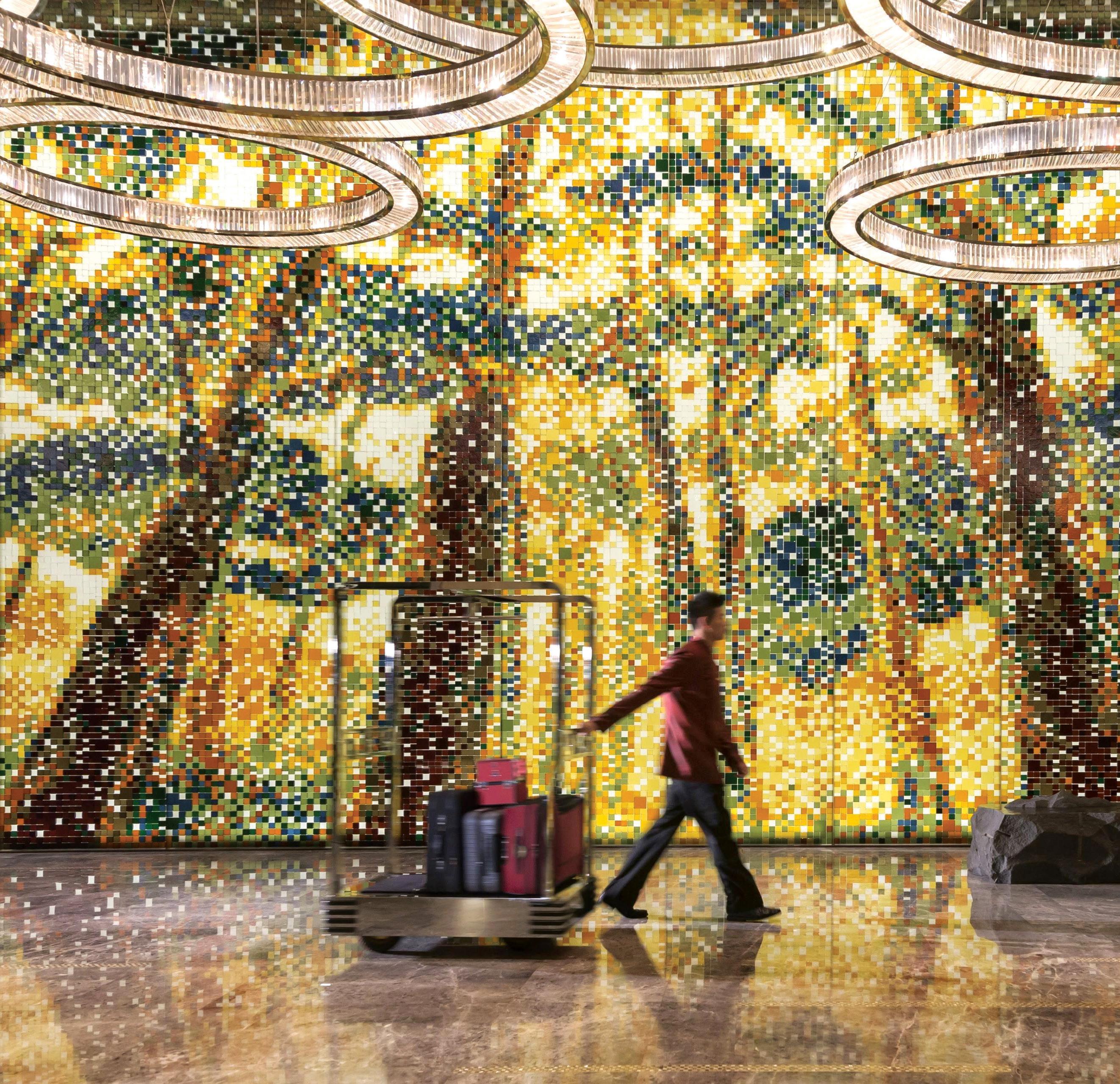



Will Mandarin Oriental finally pay heed and make it to India?
James Mabbutt, Vice President, Development Asia Pacific, Mandarin Oriental Hotel Group, weighs in.
James Mabbutt is the Vice President, Development, Asia Pacific for Mandarin Oriental, headlining the expansion of the Group’s portfolio of luxury hotels and residences across the Asia Pacific region. Based in Singapore since 2022, he relocated from London, where he previously led development initiatives across Europe, the Middle East, and Africa (EMEA). In his current role, Mabbutt drives strategic growth by identifying prime locations and overseeing the development
of new properties that align with Mandarin Oriental’s brand standards of luxury and excellence.
Since moving to Singapore, Mabbutt has played a key role in advancing Mandarin Oriental’s footprint in Asia Pacific—a region experiencing strong demand for high-end hospitality. He is a pivotal figure in the brand’s global expansion, bringing a rare combination of financial acumen, development expertise, and cultural insight. With a
background in corporate finance, Mabbutt approaches each project with vision and financial discipline, ensuring long-term viability alongside brand integrity. I ran into James Mabbutt at HICSA 2025 quite by chance, over lunch, where we discussed everything, from Indian food to tigers and my love for the brand.
An invite for a quick interview got him to the SOH media lounge for a conversation on India and its growing appeal as a tourism market for international travellers.
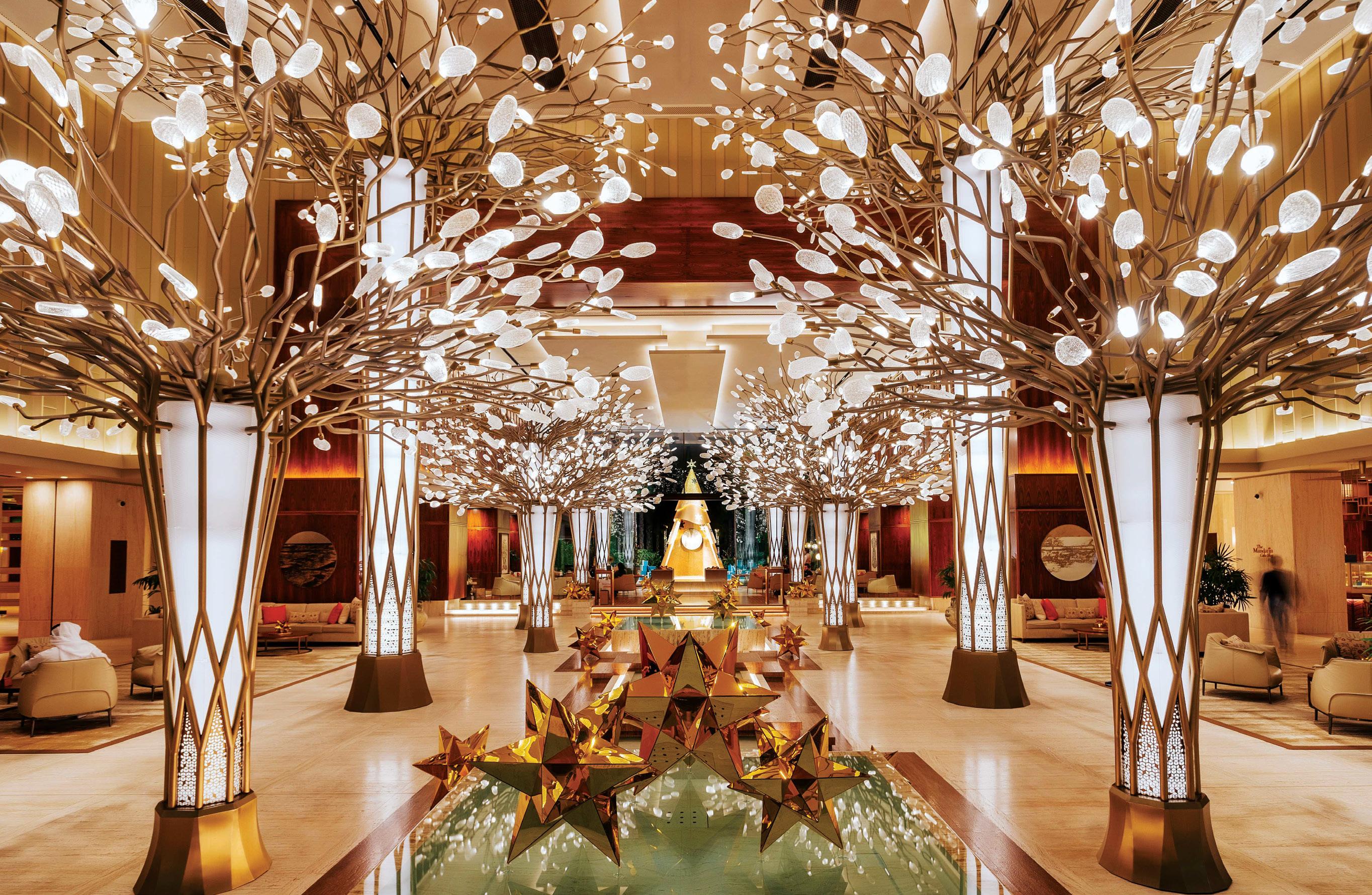

James, you’ve attended several sessions at HICSA over the last two days. What have you picked up about the Indian hospitality industry—its pulls and pushes? Did anything in particular excite you about what you heard?
What I’ve heard and seen over the last two days—the excitement for me is that the time is now for luxury hospitality in India. In particular, as we look at the statistics around the growth of the wealthy population, the rise in high-net-worth and ultra-high-net-worth individuals, the ongoing development of infrastructure, and the increasing demand—both domestic and international. We believe Mandarin Oriental, with its heritage of curating exceptional experiences and deep cultural appreciation, is uniquely positioned to contribute to and thrive within this evolving landscape.
Is there a game plan for India for Mandarin Oriental? Is this a market that excites a brand like yours?
I think the fundamentals are definitely there. The scale of ambition, the demographic trajectory and the depth of cultural heritage make India an extraordinary landscape for luxury hospitality. India is very much top of mind for us as a luxury brand. We are a one-brand company, yet we see huge potential for Mandarin Oriental in this market. Ideally, I would hope that we can have a portfolio of five or six properties across India within the next 10 years—each one thoughtfully positioned to reflect the spirit of its destination.
Have you identified any city or destination?
I think we see great potential, obviously in the key cities, where business, culture and connectivity converge—but also the resort markets, where guests increasingly seek serenity, wellness and immersive local experiences. And finally in the concept of a circuit, looking at some smaller, very experiential offerings in places of beauty.
When you're talking about circuits, particularly for international travellers, the most popular circuit is the northern India circuit—comprising Agra, Delhi, and Rajasthan. Has Mandarin Oriental identified any potential markets beyond this?
For me—and for international travellers in general— I think there’s significant potential in a Rajasthan itinerary. It offers history, architecture and regal hospitality that aligns beautifully with the sensibilities of our guests. I also see great potential in
“
The scale of ambition, the demographic trajectory and the depth of cultural heritage make India an extraordinary landscape for luxury hospitality. We are a one-brand company, yet we see huge potential for Mandarin Oriental in this market.”
a Himalayan journey and I’m intrigued by the concept of wildlife exploration.
Beyond the well-trodden paths of Agra, Delhi and Rajasthan, we are actively exploring destinations that speak to the heart of the Indian narrative— places that allow us to offer our guests something truly transformative and quintessentially Mandarin Oriental.
I think the potential for wildlife is vast, but unfortunately, it is not very well explored by international travellers.
I recently experienced Indian wildlife first-hand, and it was truly phenomenal.
Where did you go?
I was in Ranthambore.
Did you see any tigers?
I saw three tigers. I saw tigers catching a deer. So, I was lucky, it was a beautiful experience.
What are the challenges of the Indian market? One challenge, I think, is destination management. Internationally, destinations— even in South Asia—are often very well managed. We unfortunately lack that level of destination management here. How does a group like Mandarin Oriental navigate that? Ultimately, the luxury experience isn’t just about the hotel; it is also about the destination.
Well, I think there’s definitely a challenge. Honestly, the biggest one for us is finding the right projects.


The challenge lies in identifying the right sites, the right locations, and the right owners who share our commitment to excellence and the ambition to deliver something that truly reflects the Mandarin Oriental experience. For us, this is a new market, and it’s a vast one, so we’re still in the learning phase. But yes, the key challenge remains careful curation and alignment of projects that meet our brand’s standards and longterm vision.
You have a marketing and sales collaboration with The Oberoi. Would you consider Oberoi as a potential partner when you bring the brand to India? What would your strategy be?
I think Oberoi is a hospitality group that we at Mandarin Oriental hold in the highest regard. Their approach to hospitality, the way they treat their colleagues, and their dedication to the guest experience resonate with our own values. Over the past few years, there’s been a strong alignment at the senior level, a mutual recognition that this is a company with whom we share a philosophy of service excellence and a commitment to craftsmanship in hospitality. That’s how the collaboration began. It started during COVID, when international travel was limited. We wanted to establish a presence in India, to remain connected with our guests in a meaningful way. And I believe Oberoi was also looking to strengthen their recognition beyond India. Moving forward, we’ll have to see how the partnership evolves. But the spirit of the alliance, us supporting
their global ambitions and them supporting our exploration of the Indian market remains a compelling and valuable relationship.
In comparison to other South Asian countries, which perform better in tourism, what would you say are the strengths and weaknesses of the Indian market? We do struggle with inbound travel.
Yes, when you look at the inbound travel statistics for India compared to Thailand or Japan, the numbers are relatively low. There’s a real need to drive efforts to open this up, whether that’s through government marketing initiatives, simplifying visa policies, or improving infrastructure to make travel easier. These are key areas that could help elevate India as a destination.
That said, I truly believe it will come. India offers an incredible variety of experiences and people are eager to explore them. In the post-COVID world, travellers are becoming more adventurous again, and I like to think that India will be a big part of that global trend.
Do you see a possibility of global investors being interested in investing in India? By global investors, I mean beyond management companies or brands like yours—perhaps those looking to partner with local hospitality groups or invest independently.
I believe that if the fundamentals are right,

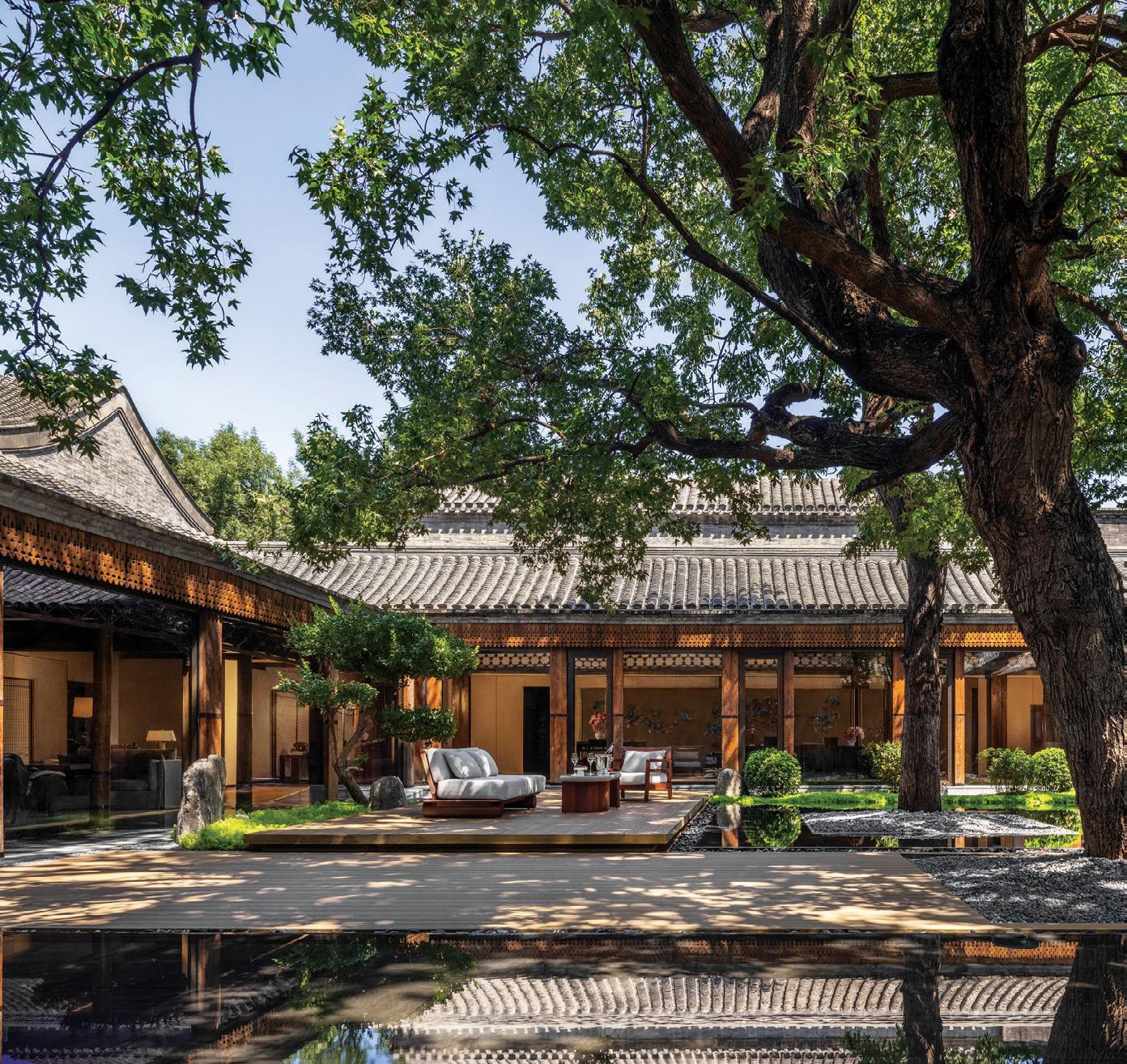

international investors should be attracted to the market. We are starting to see it on a large scale, particularly on a group or multi-asset basis. Whether it will develop further, I’m not sure. But when you look at the Asia Pacific region, most hospitality investors at the Mandarin Oriental level are investing in their local markets.
Given the trade tariff wars that are going on and what's happening in stock markets across the world, how do you see that affecting travel sentiment? And how do you also see that affecting investment?
For me, my biggest concern is not a passion for travel and a demand for travel—I think that will continue. I'm worried about the cost of building, because materials for building properties are global, and they travel through global supply chains. So that’s what I’m most concerned about. But I think a passion for travel, for exploration, for experiences outside of your own country—that's here forever.
Mandarin Oriental is synonymous with luxury. What is the evolving definition of luxury today? There was a time when it was all about grand lobbies and fine dining. While that remains important, is there now a shift towards more immersive experiences—even, perhaps, a boutique-like offering within a big brand?
I think you can almost see the shift reflected in our
new mission statement: to craft time-enriching experiences, to transform the ordinary into the exceptional, and guests into fans. When you break that down, it’s really about experiences, ultimately. Luxury hospitality is already evolving in the direction of experiences, and I believe that will only deepen.
Today’s definition of luxury goes beyond opulence, it’s about meaning, intentionality and the ability to create moments that resonate long after a stay. That could mean immersive cultural engagement, highly personalised service, or a wellness journey tailored to the individual. That’s truly what we aspire to deliver at every touchpoint a guest has with our brand. It’s less about the scale of a space and more about the depth of the experience.
What would those experiences be?
Well, for us, an experience can be anything. It could be someone visiting one of our cake shops to pick up a beautifully crafted pastry, where even a brief interaction is made memorable. It might be a guest joining us for a special dinner, or a couple choosing one of our hotels to host their wedding. Then there are those staying with us, whether for business or leisure, or even choosing to buy a branded residence and make us part of their everyday lives.
What ties all of these moments together is the care and consideration we bring to each one. We see it as a continuum, from the everyday to the exceptional and we aim to make every experience feel thoughtful and personal.
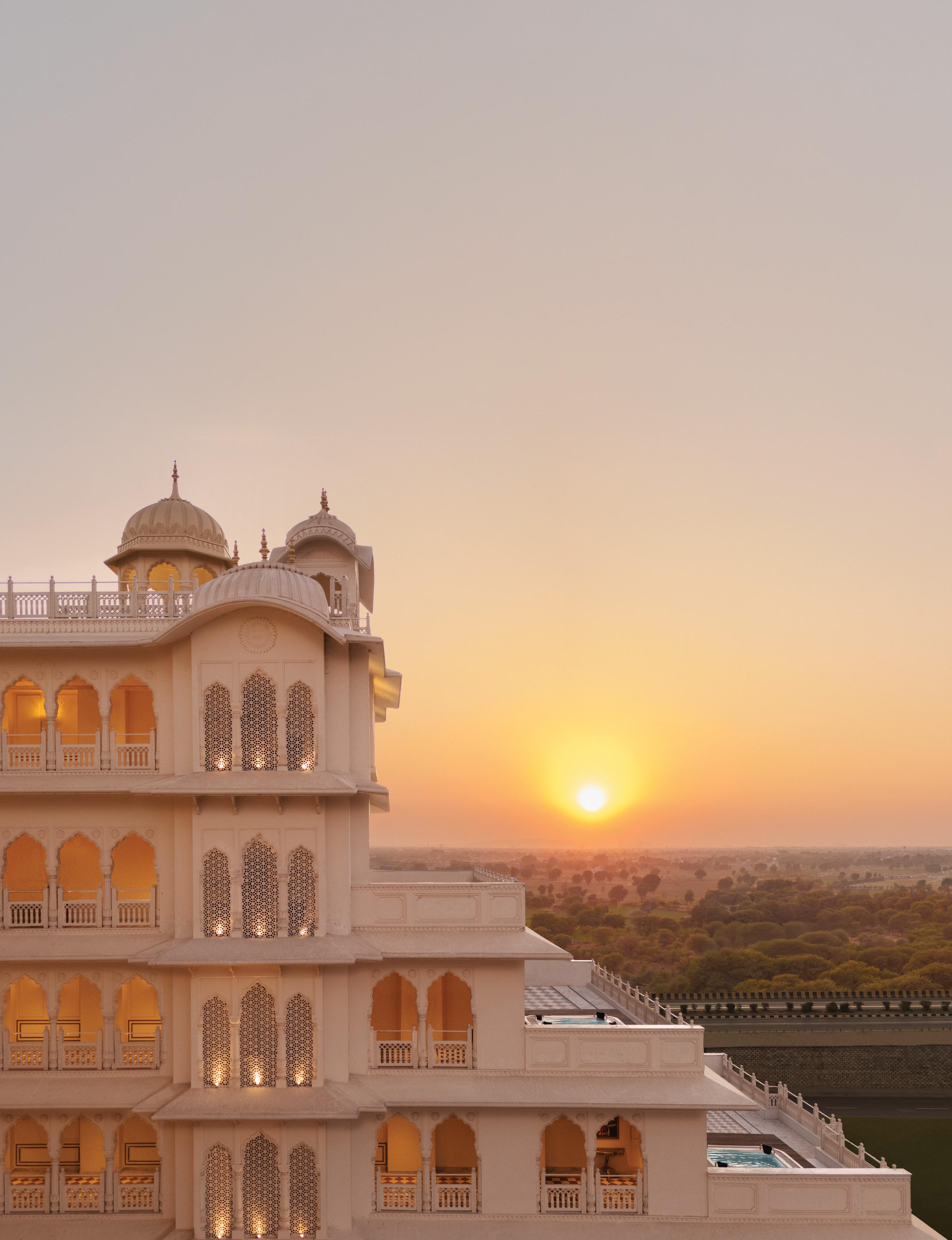
PINK CITY’S NEW LUXURY ADDRESS
Anantara, the best-known brand of Minor Hotels, has made a splashy entry into India with the launch of Anantara Jewel Bagh Jaipur.

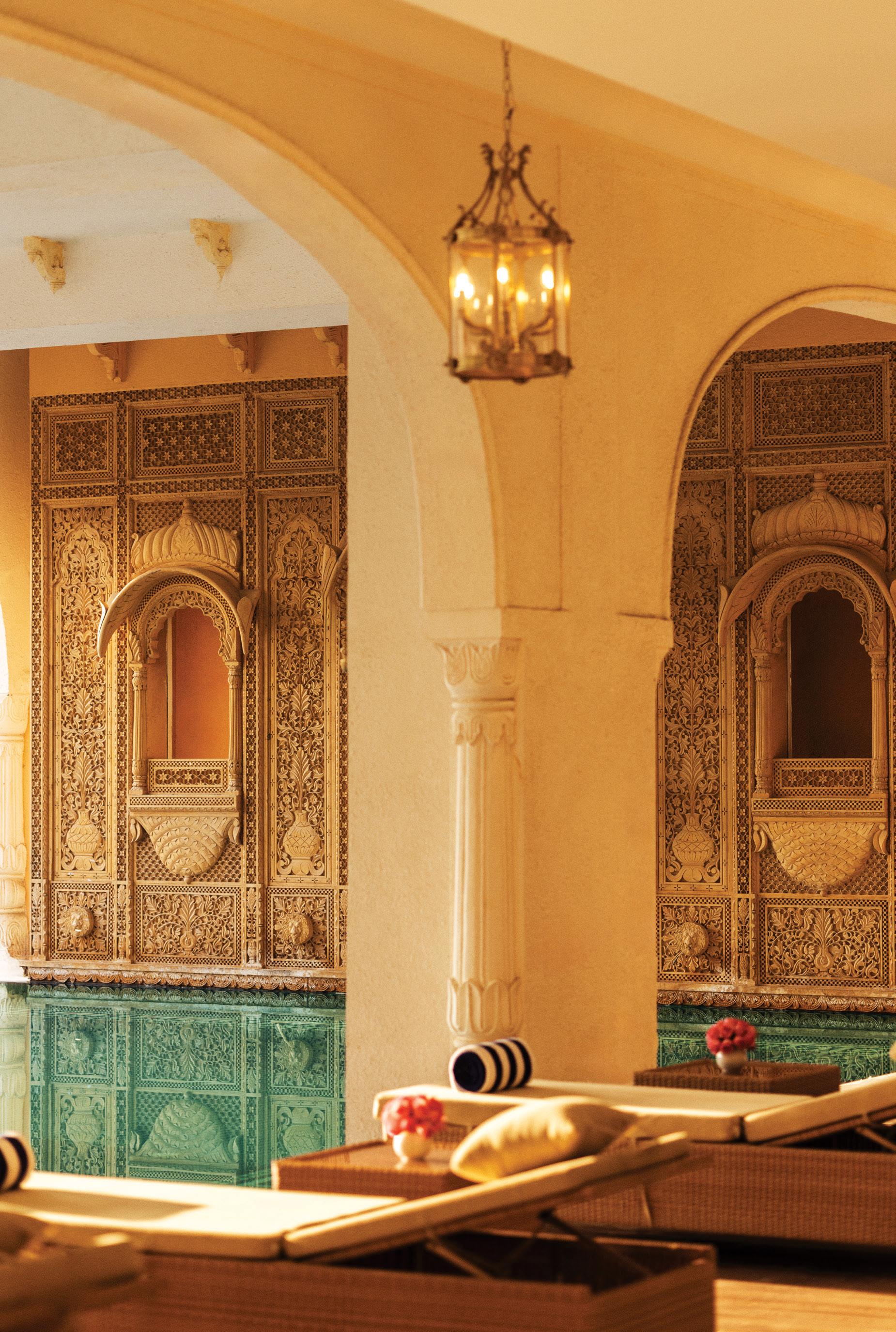

CLOCKWISE FROM LEFT: Elements of local architecture, such as jharokhas and jaalis, adorn the interiors; a view of evocatively aesthetic Rang Mahal; the rooms are especially reminiscent of local palace residences; the hotel offers experiences of local crafts over high tea.



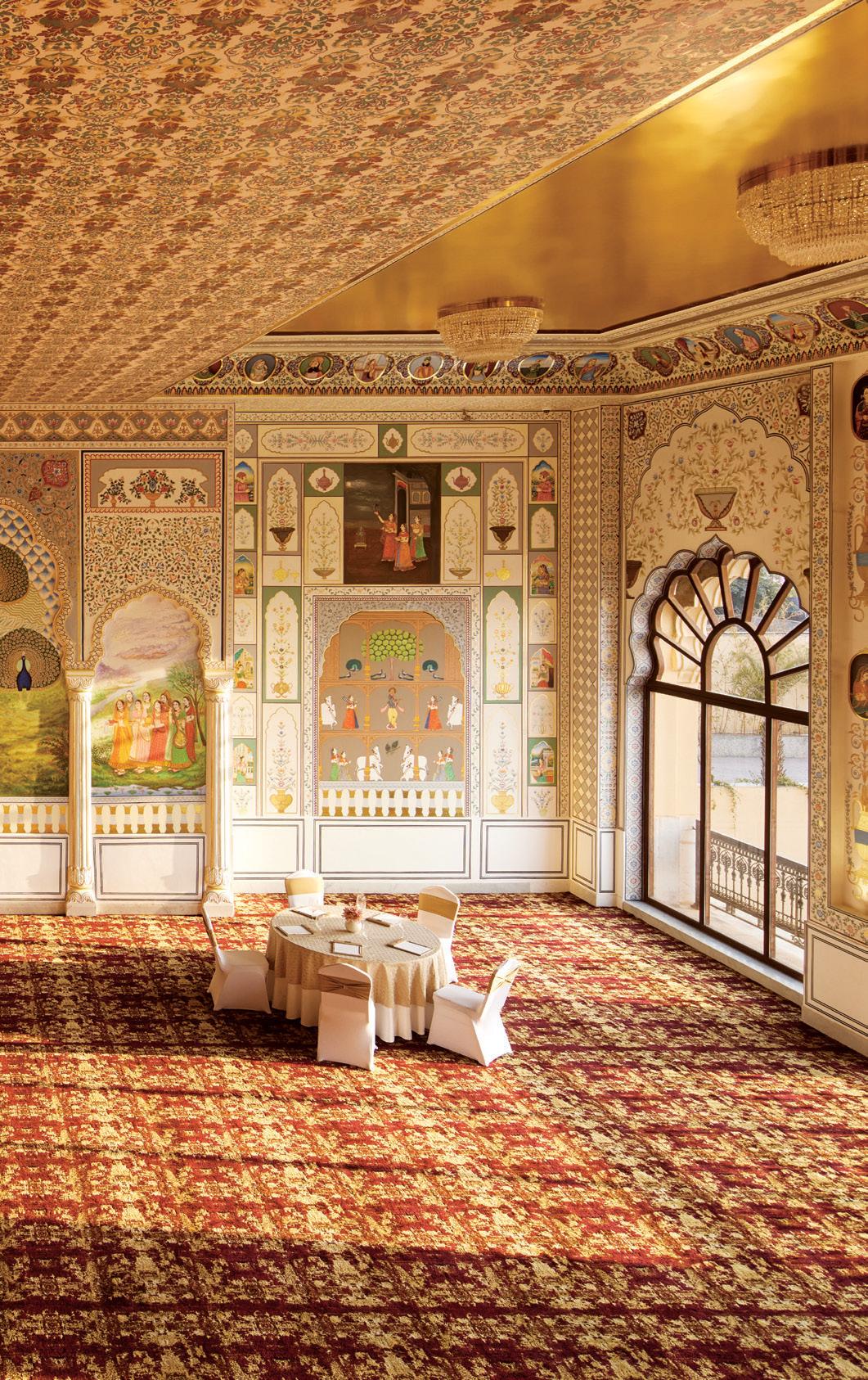

If it’s a wedding in Jaipur, does it count if it is not at Anantara Jewel Bagh Jaipur? That seems to be the most pressing question for weddings in the offing for this year, as Minor Hotels' Jaipur property has emerged as the favourite destination for weddings in the city. But more on that later.
As you drive south from Jaipur airport on Tonk Road, you cannot miss the shimmering, glowing marvel that is the new Anantara. With a façade that is brightly lit, it is a sight that gets seared in your memory, especially when you glimpse it post-sunset. Literally translated as a garden of jewels, Anantara Jewel Bagh Jaipur, it’s a name that seems straight out of some paradisiacal vision.
The famed Thai hospitality brand, Anantara, best known for its wellness quotient, has started its India journey with a hotel that is at once rooted in its brand identity, pays homage to the city’s rich cultural legacy and yet weaves in contemporary touches with élan. The brand, almost a quarter of a century old, has 50 luxury addresses around the world, each special, often on the must-visit lists of the contemporary traveller seeking experiential luxury stays that incorporate wellness and local culture in unique ways.
Anantara brings in high-end experiences to Jaipur and elevates the city’s appeal to international travellers seeking world-class hospitality, complementing Jaipur’s status as a UNESCO World Heritage City. A hotel like Anantara, geared up for high-power weddings, fits right into Jaipur’s fame as a city of royalty, glamour and the arts. Jaipur is a prime wedding and event destination, and Anantara addresses this demand with expansive venues like the 9,250sq.ft. Kohinoor Mahal ballroom, 40,900sq.ft. Amer Bagh garden (up to 1,000 guests), and smaller spaces such as Darbar and Swarn Mahal. These cater to large-scale Indian weddings, corporate events, and MICE (Meetings, Incentives, Conferences, Exhibitions) tourism, competing with more established venues.
Anantara Jewel Bagh Jaipur is a stunner, whichever way you look at it. The 150-key resort, spread over five acres, had an unusual start in that for the first four odd months, it was only open for weddings, with leisure guests starting to come in only in March 2025. In a city chock-full of luxury hotels, from erstwhile palaces with royal lineage to newer ones that epitomise the heritage and wealth of a city built on the riches of trade,
Anantara already stands out for its grandeur and experiences on offer. “It's a very guest experience-centric brand, very much a wellness brand and also heavily driven on the quality of food and beverage," points out Vimal Verma, the General Manager of the hotel. Dillip Rajakarier, CEO, Minor Hotels, states: “If you look at Anantara, Jaipur, it brings Indian culture into the hotel. It's not a cookie-cutter approach. Creating those experiences and the storytelling makes us very different from the other brands. People love Anantara as a brand. Maybe 10 years ago, not many people in India knew Anantara, but today everyone knows (the name), and the challenge we have is that most of the owners now want Anantara as a brand, but we cannot do Anantara in all the cities.” Ajay Gangwal, Managing Director, Anantara Jewel Bagh Jaipur, adds, "This partnership has allowed us to blend local character and charm with world-class service, resulting in a hotel that is both a reflection of Jaipur’s rich history and a symbol of forward-thinking hospitality.”
Heritage-driven grandeur
One of the most striking aspects of the hotel is its design. The structure of the building is unique, a broad U, with its two ‘arms’ tapering towards the base. The architects have drawn generously on the region’s architectural
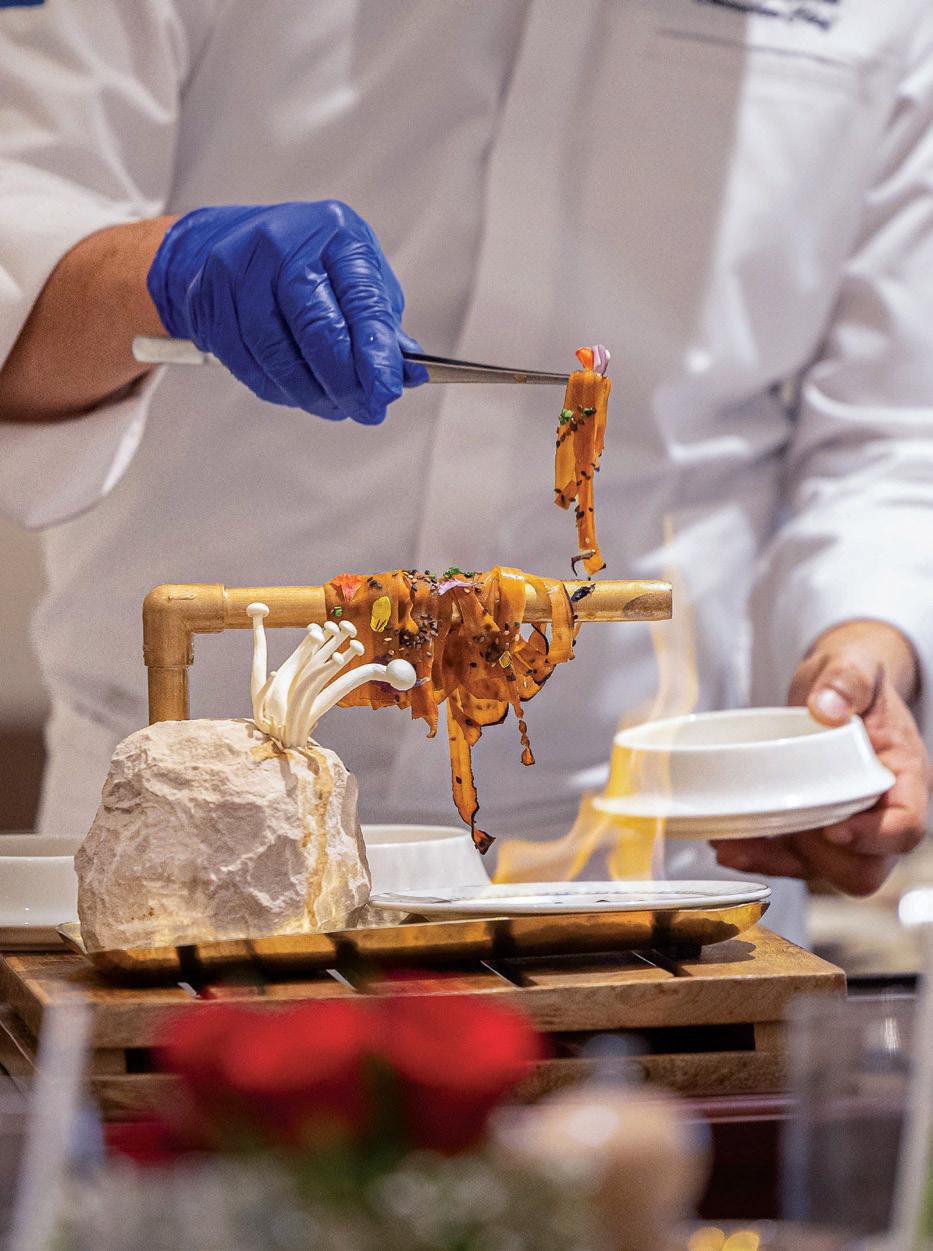
THEMATIC DINING AND LOST RECIPES
Anantara Jewel Bagh Jaipur has made a special effort to stand out for its food. Over the stay, I was treated to a vast range of dishes, with Executive Chef Sunil Jajoria going out of his way to treat each meal thematically, each more stunning than the other. The beginning was a South Indian platter with dishes, in which dishes such as deconstructed Sambar or Coconut Panna Cotta With Jasmine Payasam starred.
With its spacious layout, a combination of indoor and outdoor

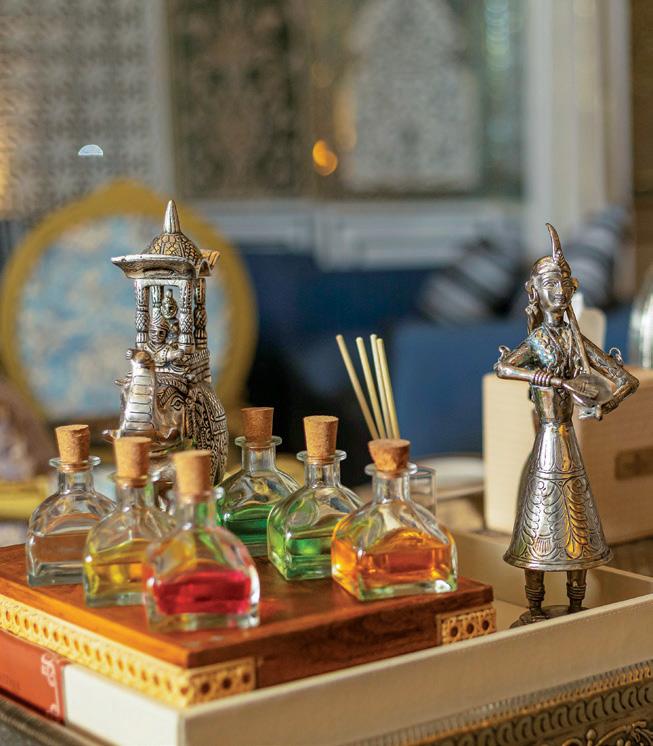
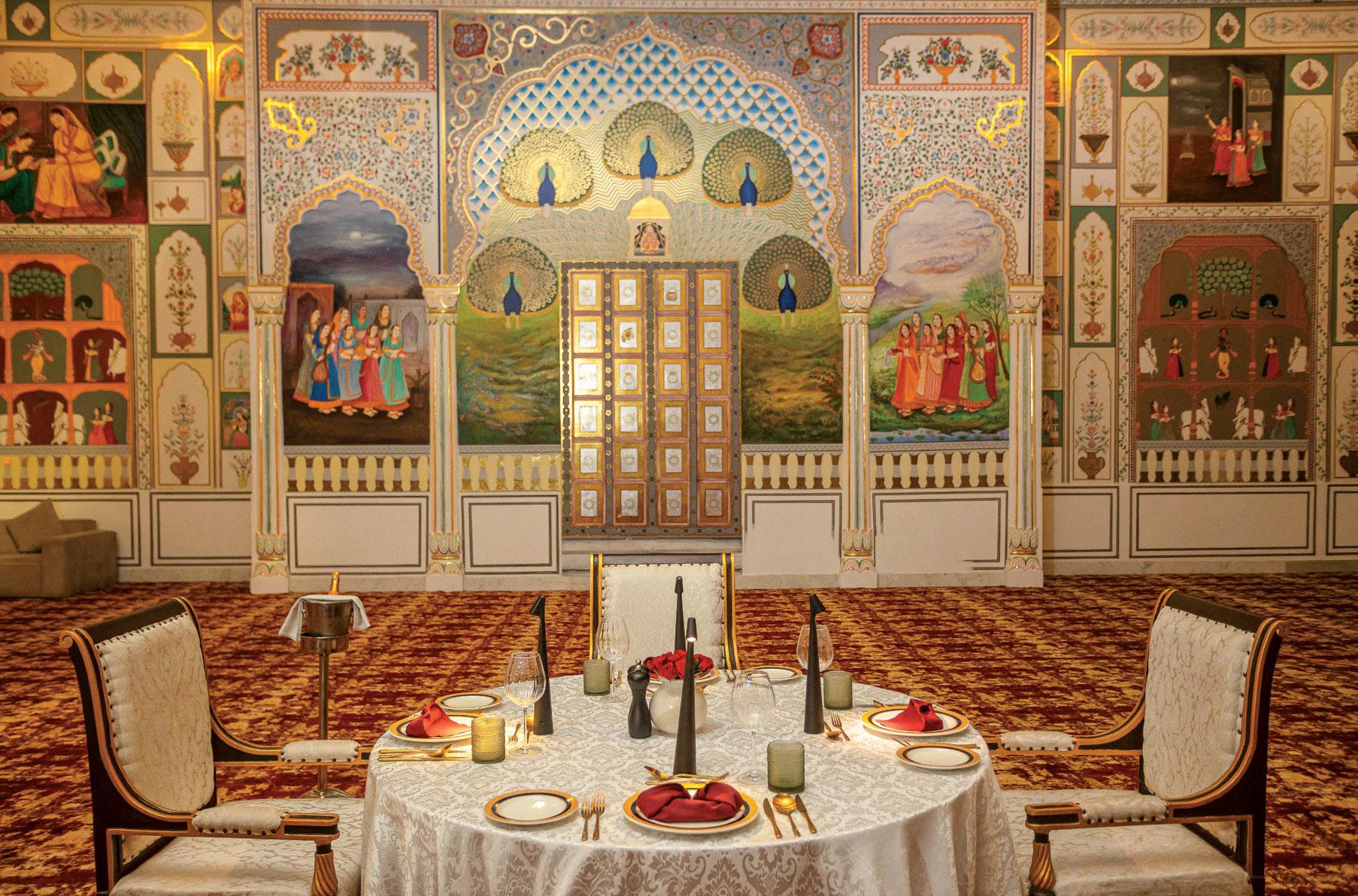
seating amidst design nods to the city’s heritage, Amrit Mahal, the allday dining venue, is an absolute pleasure to be in.
The real stunner is the hotel’s signature restaurant, Sheesh Mahal, effectively a jewel box adorned with mirror mosaics and coloured glass. For the meal I had there, the chef conjured up a menu of ‘lost recipes’ from the region,
essentially dishes that are no longer easily prepared, such as Shikari Boti or Mathania Murgh Tacos, Mewati Gosht Baajri Ki Tahiri or Rasgulle ki Sabji.
Sheesh Mahal also serves craft cocktails such as Jewel of Jaipur (a Whisky Sour twist), Pink City Punch (Guava Lemonade with Tequila) and Royal Tea (Captain Morgan with Masala Chai and Plum).
CLOCKWISE FROM LEFT:
The Anantara high tea ritual is not to be missed; the use of traditional trunks full of liquor bottles adds an element of whimsy; cocktails are colourful and inspired by the locale; beautifully decorated environments ensure every meal is a memorable one.
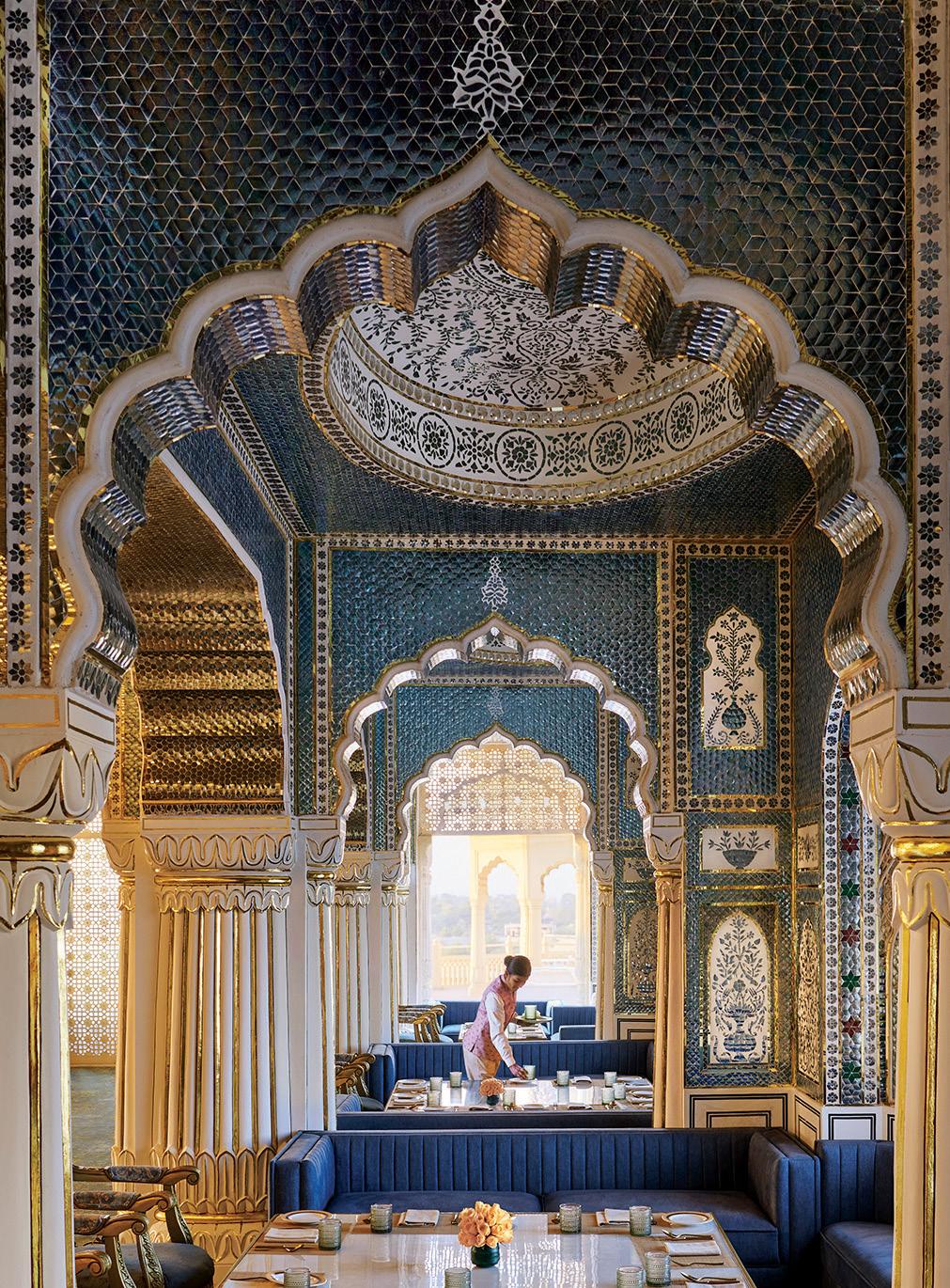
vocabulary, paying homage with the façade of jaalis (lattice work) and jharokhas (bay windows). The front façade with 86 open and 50 closed jharokhas has been directly inspired by Jaipur’s most famous landmark— the Hawa Mahal in the City Palace. The city’s palatial heritage is also referenced in the chhajas (overhanging eaves), chattris (cupola-like structures) and thikri (glass inlay) work on imposing wooden doors with saankal (traditional lock system), shaded corridors, gurgling water channels, lush palm trees, et al.
There is ample use of art, especially in Rang Mahal, where every inch of the walls, floor and ceiling is covered in an intoxicating, heady combination of traditional local paintings and architectural motifs. Just as notable is a veritable portrait of notables in Diwan-eKhaas, which has hand-drawn paintings in the regional style by S.S. Pandit.
The property is especially noteworthy for its ample meeting and events spaces, all designed to fit in with the larger aesthetic. From the expansive outdoor Amer Bagh, which can accommodate up to 1,000 guests, to the pillarless Kohinoor Mahal ballroom which can host up to 300 attendees, the more intimate venues such as Darbar, the choices are designed to meet any
requirement. Especially noteworthy are the poolside Bawdi Bagh, Mor Bagh and the Jai Bagh and the adjoining Rajputana Chowk, effectively the heart of the hotel.
Anantara as a brand is best known for its superlative wellness experiences. The Anantara Spa, where Thai wellness traditions meet local expertise, features an on-site beauty salon and five treatment rooms for guests to rebalance with classic Ayurvedic therapies and indulgent body treatments. Signature offerings range from exotic, like the Pao Ya fire therapy, to beloved spa classics like romantic couples’ journeys. While daily yoga sessions in the serene Amer Bagh and a 24/7 fitness centre ensure routines continue uninterrupted.
A taste of luxury
Of course, the most telling experience of a luxury hotel stay is the room experience. Needless to say, the rooms are spacious and generously stocked. Right from the base category, i.e, the 334sq.ft. Premier Room to the massive 1,861sq.ft. Presidential Suite, each is perfectly tailored to make memories. Perhaps the most noteworthy are the one-bedroom suites, which come in two configurations: the 753sq.ft. Jewel Bagh Suite and the 699sq.ft. Terrace Suite.
The terraces are a huge charm of the Terrace Suites. Winters on these decks are especially magical, perfect to enjoy views right from the thoughtfully provided jacuzzi on the terrace. The interiors are rich in touches of Jaipur’s famed opulence. Think patterned white and gold hued stone floors, a spacious and well-appointed and oh-so-luxurious living room, a king bed in a massive bedroom, all the accoutrements that one could expect at this level… The added charm comes from the special touches. Note for example, the two huge window seats—complete with jharokhas for the perfect framing. Or the inlay work mirrors, the uniquely Sanganari style upholstery, the framed art all around— there is much to take in without stepping out.
The road ahead
Rajakarier is confident about the fast growth of the brand in India. “Some of our hotels are outstanding compared to some of the other concepts. Because we talked about experiential travel, authentic experiences and are indigenous to the culture. If you look at Anantara, Jaipur, it brings Indian culture into the hotel.” Anantara is planning to sign a couple of more properties in the leisure and city destinations. By entering a market with established players, Anantara Jewel Bagh Jaipur raises the competitive bar. It's design references to the destination, and global brand cachet will likely attract high-spending tourists, further boosting Jaipur’s profile as a luxury destination.
DRINK
CRAFTING INDIA’S WINE STORY
How Sula Vineyards cultivated India's wine culture, pioneered wine tourism, and created a company that enjoys 50% of India’s wine market share.
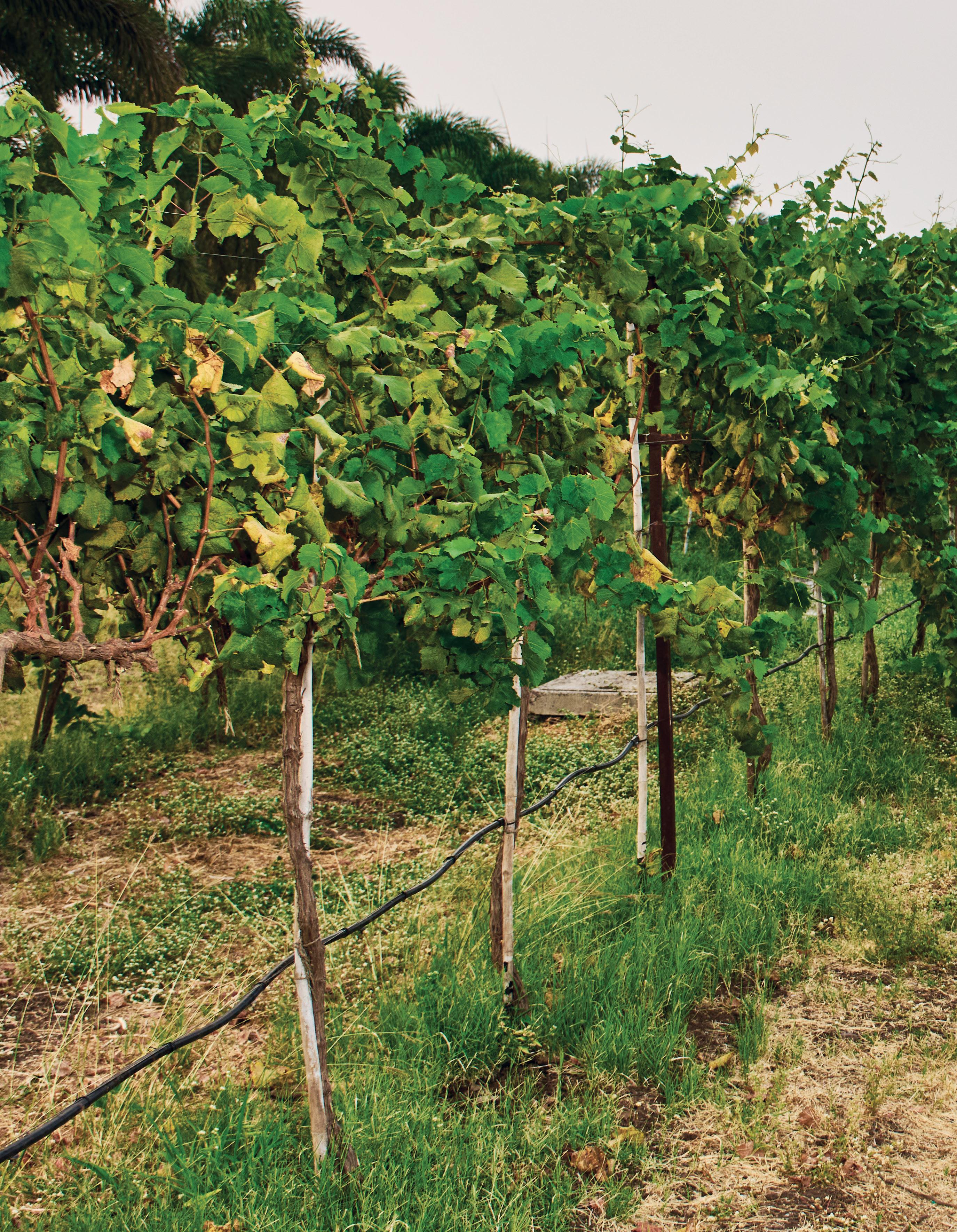
CREATIVE DIRECTOR TANVI SHAH | PHOTOGRAPHED BY BHUSHAN

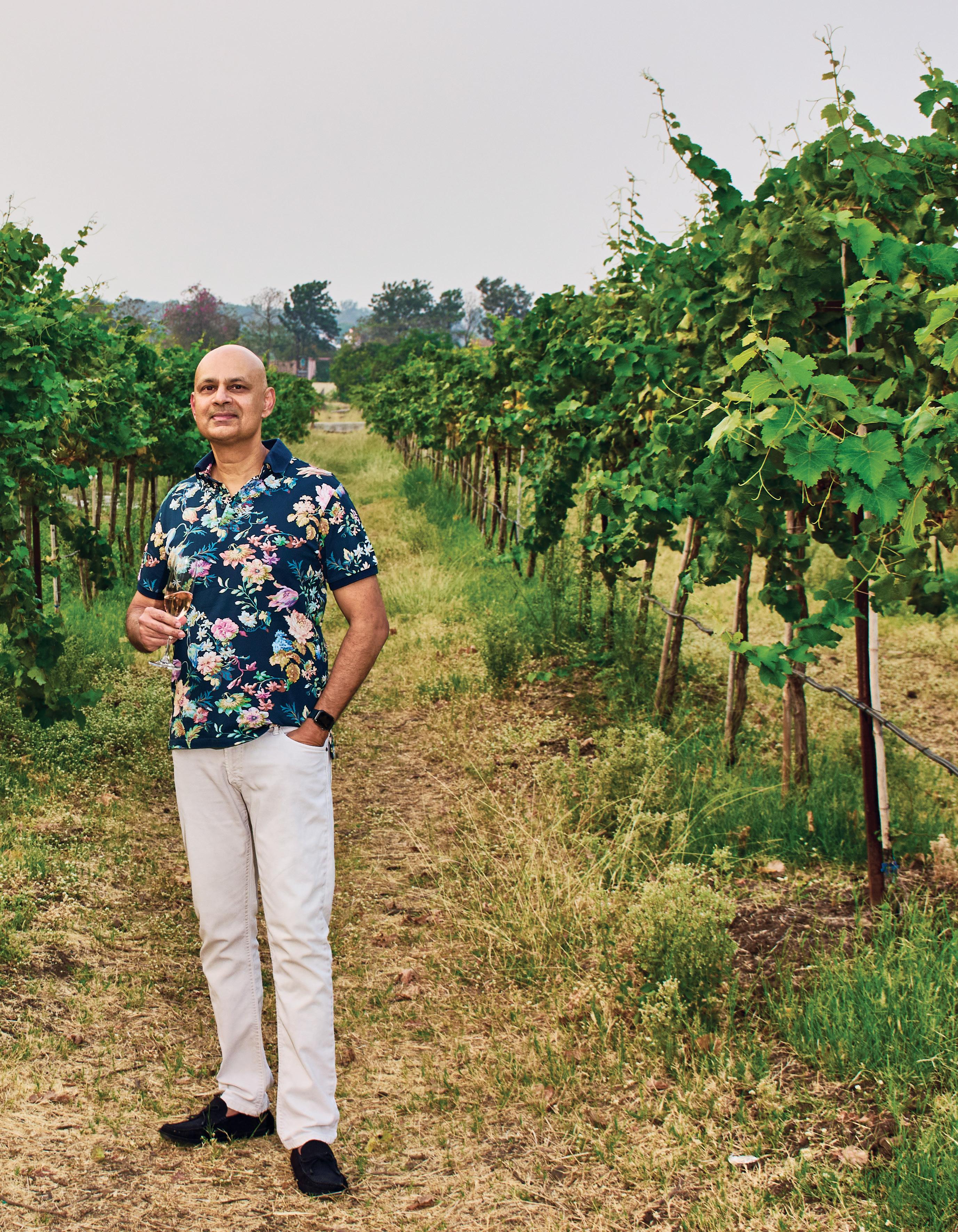
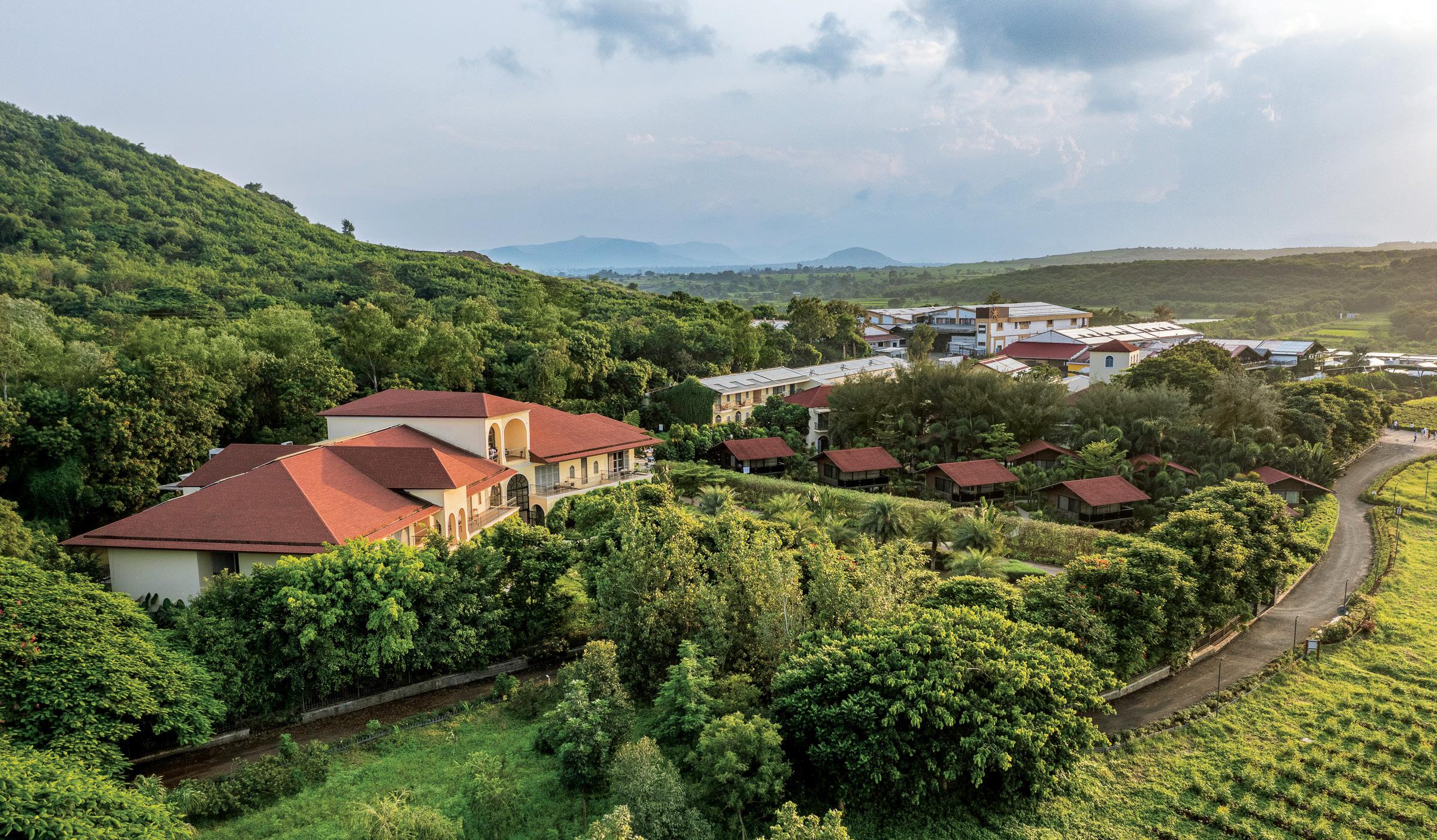
premium wine segment, it remains the country’s largest wine company. In a candid interview, Samant traverses a wide range of topics—from winemaking innovation and storytelling through wine to Sula’s growing hospitality business.
It isn’t everyday that a highly successful engineer, who migrated to San Francisco in search of the eternal American dream, heads back home. But then, Rajeev Samant, the CEO and founder of Sula Vineyards—one of India’s largest wine-making companies, was just following his heart’s dictat.
As Rajeev Samant scans the vineyard he created, and the new tourism and hospitality model he pioneered in India, you can sense him reflecting on the years of sheer grit and an audacious dream.
Today, Sula sells over a million cases annually, manages more than 2,800 acres of contracted vineyards, and crushes upwards of 11,000 tonnes of grapes. With over 50% market share in India’s
Let’s go back to where it all began. When you look back on the idea that sparked Sula, how does it feel today to be at the heart of what’s become a pioneering wine tourism movement in India?
It feels incredible. Looking back, I think—wow, what have we created? It’s truly something remarkable. The entire Sula campus in Nashik is extraordinary. This is now the world’s most visited vineyard. Who would have imagined that back in 2000 when we sold our first bottle? By 2005, we opened India’s first winery tasting room. And today, to be the most visited vineyard globally—that’s an amazing legacy.
If that’s what I leave behind, it’s already something to be proud of.
Do you see your legacy as having created a market for wine in India, where none existed before? Or do you see it more holistically—as the entire journey?
There are so many things we've achieved, so many milestones we've pioneered over the years. One of the most significant achievements is being the person—and Sula being the brand—that truly brought wine to India. For so many Indian wine drinkers, Sula was the first glass they ever tasted. That’s something we will never lose—that sense of pride and accomplishment.
Wine is such a beautiful beverage. And what's even more special is that it's made right here—in the vineyards of Nashik, Maharashtra, and Karnataka. Who would have thought, back then, that we could grow such

“
“The entire Sula campus in Nashik is extraordinary. This is now the world’s most visited vineyard. Who would have imagined that back in 2000 when we sold our first bottle?”
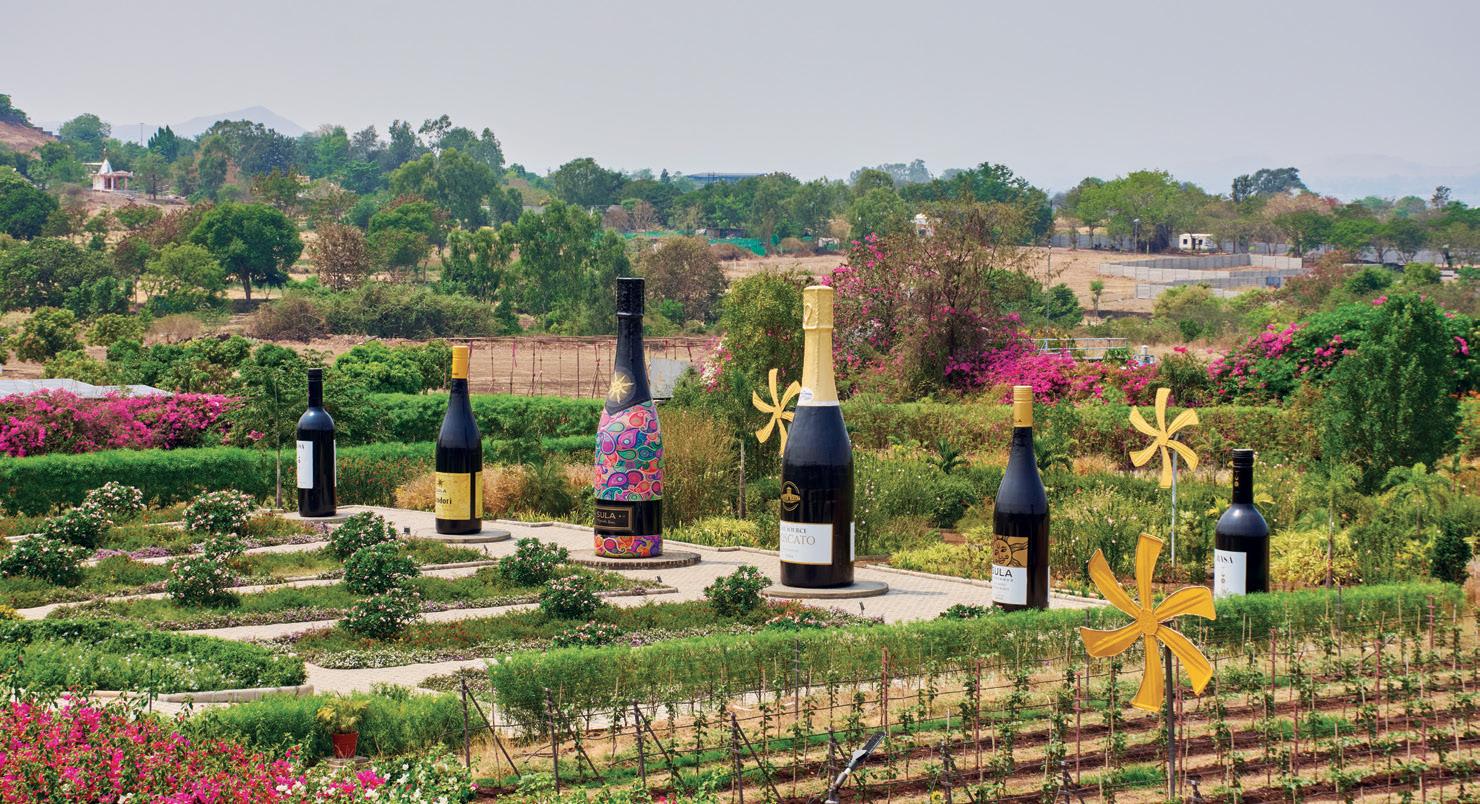


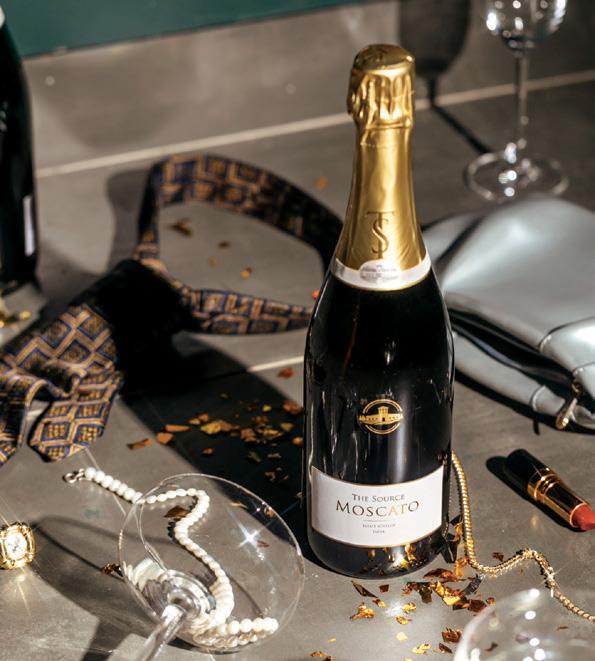
exceptional grapes and produce award-winning wines—wines that are now sold all over the world?
And what were the turning points in your journey as a winemaker?
The first bottle we ever opened—with my wine mentor Kerry Damskey— was a landmark moment. It was a bottle of Sauvignon Blanc. The harvest was in 1999, and we sold our first bottle in 2000. We sat on the porch of my home, just five minutes from here, and tasted the moment of truth.
From that first sip, we knew we had created something special—a wine better than anything produced in India before. That was a huge ‘aha’ moment. It gave us the confidence to push forward, especially after the long, hard journey of setting up the winery, planting vineyards, and navigating permissions—all without
knowing what the final result would be.
What would you consider the stumbling blocks along the way?
Stumbling blocks remain— especially bureaucracy. India’s excise system is mind-boggling. As a producer, you’re always on the back foot. You never know when someone might suddenly deliver a huge thapad (slap) in some state—overnight, the rules can change—taxes or label fees can double, or imported wines get favoured over Indian ones. It is the regulatory environment that holds us back. That said, we do see green shoots and remain hopeful that the regulatory environment will improve.
2022 was a significant year for you with the IPO. Three years later, how has becoming a listed company affected your business strategy?
The 2022 IPO was a major milestone—we were India’s first publicly traded pure-play wine company, so all eyes were on us. Listing during a tough market window, before the IPO floodgates opened in mid-2023, made it challenging—but we led the way.
Today, we have over 100,000 shareholders, which is rewarding. That said, wine is a long-term business, unlike spirits or typical consumer products. It took 22 years to reach the IPO stage. Developing a wine like our Tropical Rosé takes years, and scaling production isn’t as simple as flipping a switch—it’s a five-year grape-growing cycle. So, quarterly results don’t capture the full picture. We remain optimistic about the future and focus on communicating that vision and delivering consistent results over time.
Looking at some figures—Sula delivered an ROE of 16.96% in the year ending March 31, 2024—outperforming your last five or six years of performance. What does 2025 look like for you?
I’m not the one to comment specifically on financial performance. I’d much rather focus on the kinds of things we’ve achieved—like winning awards for our wines across the world, and continuing to innovate with every wine we create. Sure, financial performance and metrics are very important to us. But ultimately, we’re looking at the long term—where are we going to be in five or ten years? That’s the real question.
And I certainly see a future—not too far off—where we’ve doubled in size, where we’re producing wine in a few more states across India, and where Indian wine has firmly established itself on the global map.
The Indian consumer is generally quite price sensitive. Yet, you've launched a number of premium wines. How do you balance affordability with the premium end of your business? I’m quite pleased to say that we still hold true to our original promise to consumers: to offer the best quality wine at every price point. Definitely the premiumisation story is an important one. But as a public company, we’re mindful of the need to show growth—but also of the price sensitivity among Indian consumers. You can’t keep launching higherpriced wines without ensuring accessibility. And I believe we’ve struck the right balance.
For example, our most premium offering, the Rasa Cabernet, is priced at about ₹2,000—and in the broader context of the global wine world, that’s not an especially high price. Imported wines typically start at ₹1,300–1,400 and go up significantly, while our wines remain far more approachable. The classic Sula range is priced under ₹1,000 in states like Maharashtra and Karnataka—often as low as ₹700 by the case. Our Source range sits between ₹1,000 and ₹1,400, and we even offer wines like Madeira starting at ₹500.
We want people to walk into a wine shop and feel welcomed—not intimidated by price.
Which wine in your portfolio would you consider groundbreaking—one that truly propelled your brand and business forward?
That would be our very first wines—the Sula Sauvignon Blanc and Chenin Blanc. They were India’s first true varietal wines, allowing Indian consumers to identify and appreciate distinct styles. Until then, most wines in the market were generic and lacked character.
These wines also represented real innovation. We were the first in India to use refrigerated stainless steel tanks, preserving freshness, acidity, and complexity—qualities that were otherwise lost.
We were the first to produce wine in a can, starting with our more affordable Dia range. Today, we also offer our Sula Chenin Blanc, Zinfandel Rosé, and Red Zin in cans—again, a pioneering move.
This bottle in front of you—our Rosé Tropical—is another breakthrough. It’s India’s first Prosecco-style wine, made using a more immediate, less labour-intensive method than the traditional méthode champenoise, which can take up to a year. This approach lets us release the wine just four months after harvest. It’s lighter, fresher, and fruitier—and made possible by cutting-edge technology and significant investment.
Do you think the Indian palate has become more sophisticated over time?
We have a broad spectrum of consumers today—some have been with us for over two decades, and naturally, their palates have evolved. What’s always fascinated me is how well India lends itself to white and rosé wines. Our warm climate and bold, spicy cuisine pair beautifully with crisp, aromatic whites like Sauvignon Blanc and Riesling.
Yet, over the past 7–8 years, the market has tilted heavily toward reds. When we started, the split was roughly 50-50 between reds and whites, with rosé barely in the picture. Today, reds account for about 65–70% of the market, whites around 25%, and rosés between 5–10%. It reflects global trends to some extent, but red wine has really taken over in India.

Still, I often urge people to revisit whites. They’re incredibly wellsuited to our food and climate. The joy of sipping a chilled glass of white wine in our climate is worth exploring. Chilled white wine, like beer, pairs beautifully with Indian cuisine.
That said, lighter, fruitier reds that can be slightly chilled—like our Source Pinot Noir or Source Cabernet Sauvignon—are gaining traction. It’s a trend we’re watching closely.
What do you think is the perception of Indian wine?
Globally, Indian wine is still in its early days—but within India, Sula has become a household name. In wine, brand matters, and we’re proud to be the most recognised wine brand in the country.
About a decade ago, we launched The Source to cater to evolving consumers with more disposable consumers—those who began with Sula and later sought more premium or international experiences. The Source and Rasa were our way of bringing them back into the fold. Today, wines like our Source Grenache Rosé—widely regarded as the best Indian rosé— are flying off the shelves at ₹1,200.
There’s clearly an audience willing to spend ₹2,000, ₹2,500, even ₹3,000 on a bottle. But at that price point, we’re competing head-to-head with imported wines. That pushes us to continuously raise our game—and I believe we’ve delivered.
“
“Stumbling blocks remain—especially bureaucracy. As a producer, you’re always on the back foot. You never know when someone might suddenly deliver a huge thapad (slap) in some state.”

Imported wines, of course, will always be part of the Indian market. Many producing countries export aggressively because their domestic markets can’t absorb all they make. So yes, there’s intense competition, deep discounting, and plenty of incentives. That said, our wines are now on the wine lists of leading restaurants in New York, London, and Singapore. That speaks volumes—but we know the global journey is still ahead.
As for the influx of international brands into India, we actually see it as a positive. It builds awareness. Every importer runs promotions, events, and tastings—and all of that helps grow the category.
We haven’t been significantly impacted—touchwood—but imported wines are here to stay. They’ll always have a share of the market, and that’s fine. Ultimately, we’re all part of the same ecosystem. Whether you’re an Indian producer or an importer, we should be working together to promote wine culture in India.
What is the most recent innovation within Sula that has excited you?
One key thing we’ve clearly
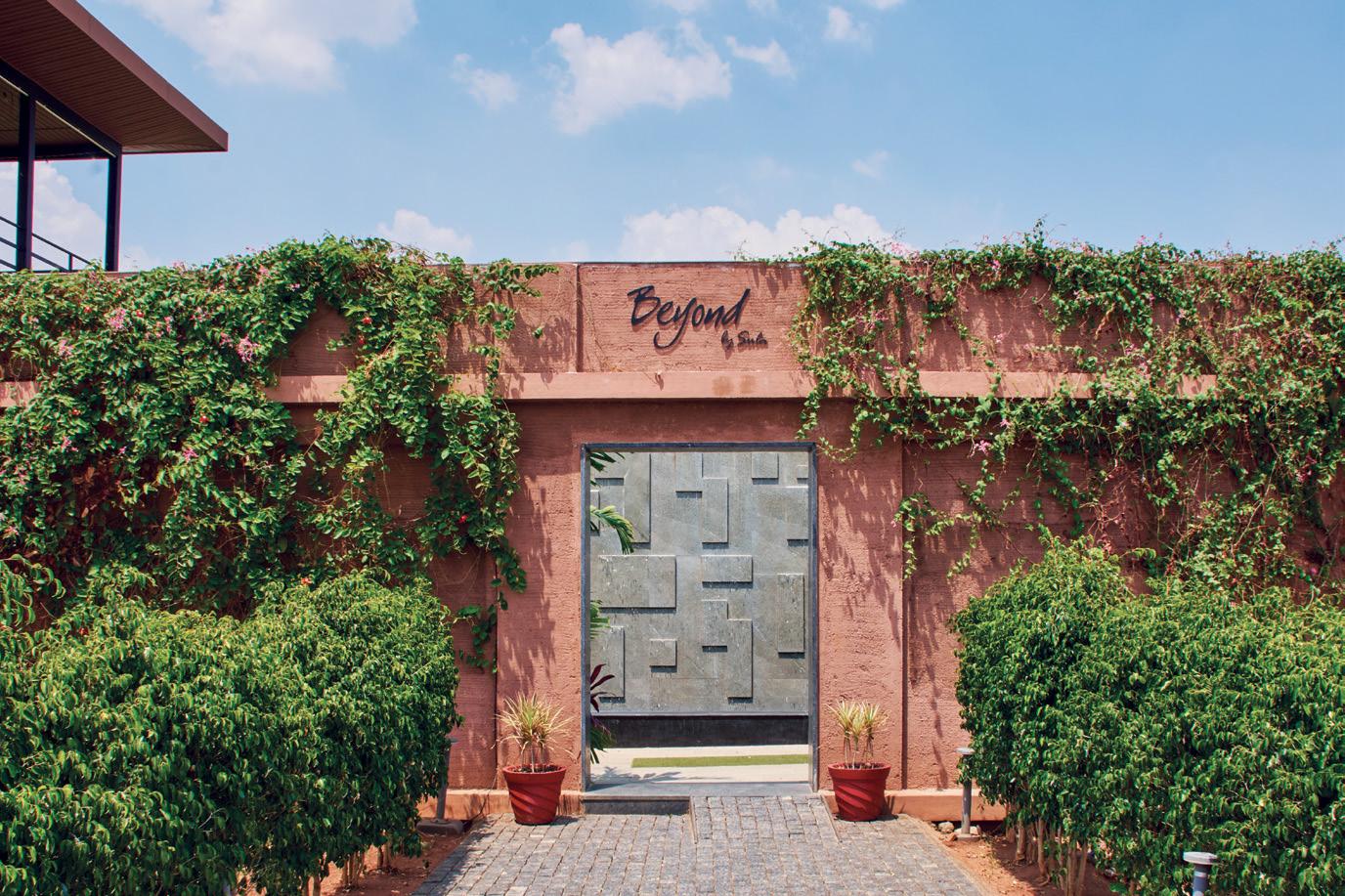
understood is the need to cater to diverse palates—something true of wine drinkers everywhere. Our Sula range, priced around ₹800 and under ₹1,000, leans toward the New World style. With our wine mentor Kerry from Napa, that influence is natural.
Interestingly, Indian and American preferences are quite aligned— both tend to favour a touch of sweetness and fruit-forward profiles, unlike the drier, more austere wines preferred in Europe. You’ll see that fruitdriven character across our Sula portfolio, and especially in our Source range, where we’re introducing a slightly more Old World sensibility.
That said, the old New World vs. Old World divide is becoming less rigid. Take Rhône-style Syrahs, for instance—producers now focus more on letting the fruit shine rather than on heavy oak or tannins. We aim for fresh, vibrant wines that highlight the fruit—not big, heavy styles that overwhelm. In India’s climate, a bold wine might work for a single glass, but it can quickly feel tiring. We want wines that stay light and enjoyable—even after two or three glasses.
Do you think India will ever develop a terroir-driven wine culture like France?
Perhaps someday. But right now, our approach is more aligned with the New World wine philosophy. France has a deeply complex, rigid classification system dating back to 1855. It’s historically rooted, but with climate change, even France is re-evaluating that model. We’ve chosen a different path—one where the grape varietal is the focal point. Indian consumers are still learning, and they tend to choose wine based on the grape—Cabernet vs Pinot, Merlot, or Chardonnay vs Sauvignon Blanc—rather than terroir or specific regions. That kind of terroir-driven sophistication might take time to develop here, if it does at all.
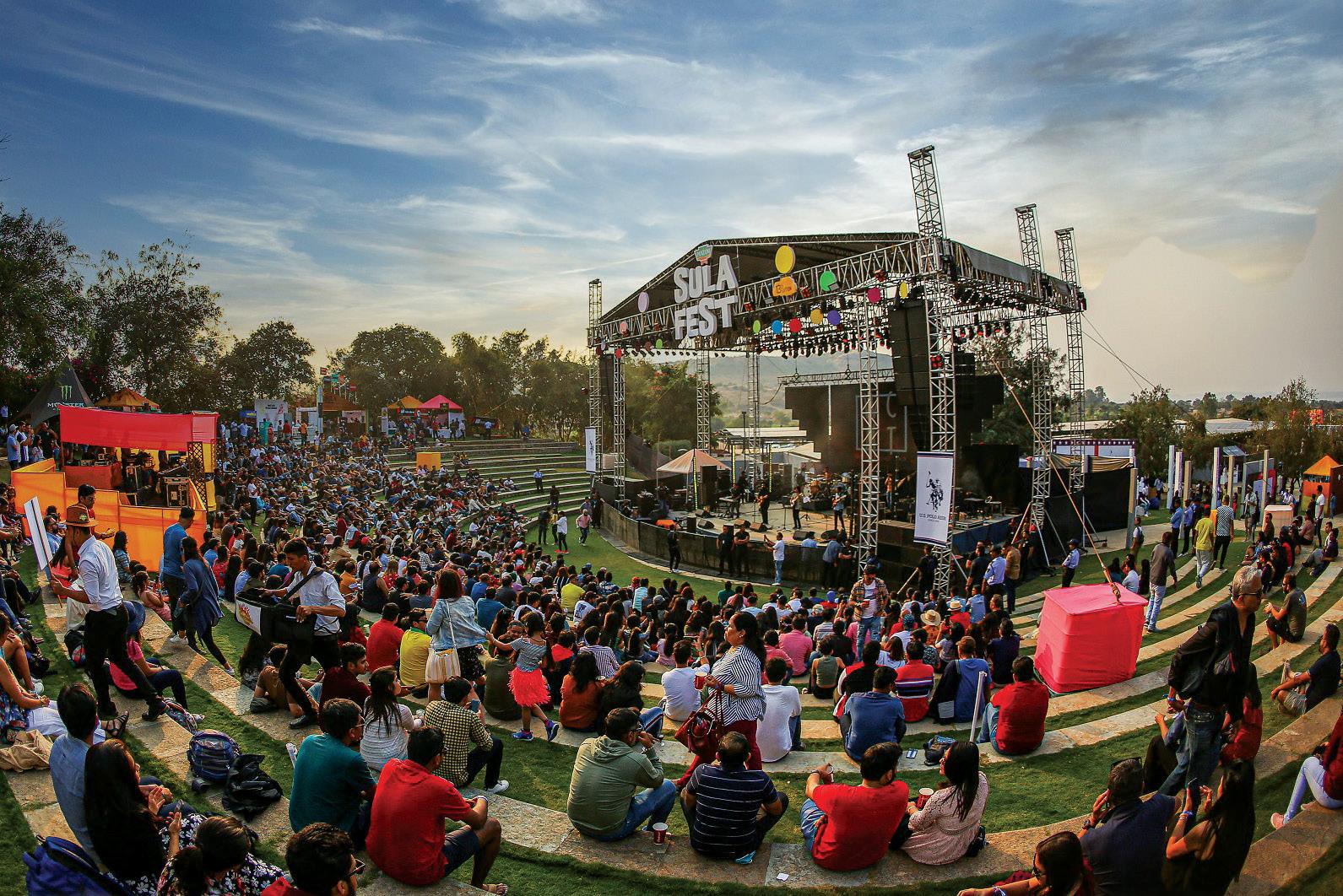
Sula has a well-established hospitality business. I’d love to get your perspective— especially on how destinations like California have influenced your thinking.
I studied in California and had the chance to visit Napa Valley years ago. Napa itself was a trailblazer in the world of wine tourism, and what they had built there left a deep impression on me. Seeing what they were doing—especially at Robert Mondavi Winery, a true pioneer in global wine tourism— left a lasting impression on me. Napa was ahead of its time, and it showed me the power of welcoming people to the vineyard, letting them experience the wine where it’s made, and building a cultural ecosystem around it. That vision—of combining wine with food, music, and celebration— has stayed with me ever since. Wine has always been tied to culture and community, going back to ancient times. So for me,
“
“Definitely the premiumisation story is an important one. But as a public company, we’re mindful of the need to show growth— but also of the price sensitivity among Indian consumers.”
The Sula Fest returned in 2025 after a five-year hiatus, marking its 14th edition, and is considered a major music-meets-wine festival in India.
IF YOU COULD HAVE A WINE TASTING SESSION WITH ANY ONE OR THREE HISTORICAL FIGURES, WHO WOULD THEY BE—AND WHAT WINES WOULD YOU SHARE? That’s a quirky one—but I like it! I think some of the Rajput kings and Mughal emperors were known to enjoy their wine. I’d love to have a tasting session with someone like Emperor Humayun, and maybe Raja Jai Singh or Man Singh. A Mughal emperor and a couple of Rajput royals—now that would be an evening.
THREE VINEYARDS AROUND THE WORLD THAT ARE ABSOLUTE MUST-VISITS?
Top of my list: South Africa’s Western Cape. It’s breathtakingly beautiful, the wines are outstanding and affordable, and the foodwine pairing culture is just exceptional.
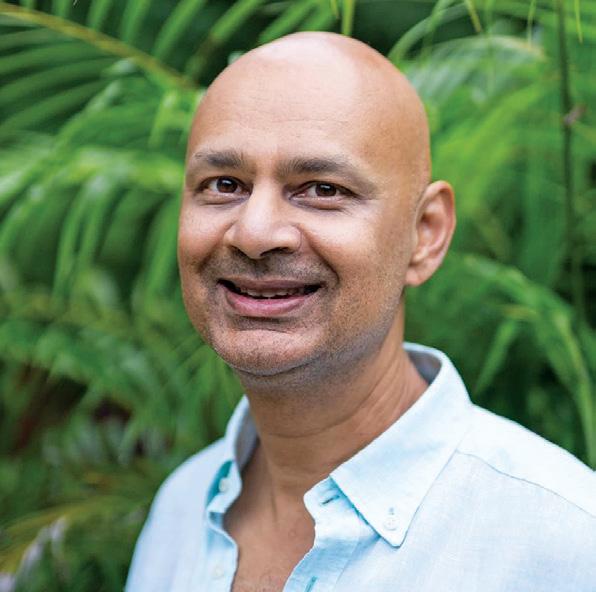
THE BEYOND B IO

Next, Italy—any region, but particularly the hills of Piedmont and Tuscany. Rolling vineyards, historic cellars, Barolos... it's all magic. And in the U.S., while everyone knows Napa, I’d recommend Sonoma. It's more intimate, charming, and less crowded—a truly personal wine experience.
FAVOURITE FOOD AND WINE PAIRING? I love my bubbles. Fried food and sparkling wine is an underrated match made in heaven. Think golden-fried prawns with a chilled glass of our Brut Tropical Rosé. Absolute perfection.
A DESI FOOD AND WINE PAIRING THAT SURPRISED YOU? Gujarati food. Many of the dishes are slightly sweet, with subtle spices, and our Chenin Blanc works beautifully with it—especially with a traditional Gujarati thali or undhiyu. It was an unexpected but delightful pairing.
MOST UNUSUAL PLACE
YOU’VE EVER HAD A GLASS OF WINE? That would be Nepal, high up in the Annapurna region, around 3,000+ meters. We were at a remote guesthouse run by a retired British Gurkha officer— an absolute wine lover. Everything had been carried up on horseback or by porters. At the end of a long trek, sitting at that altitude with a glass of Australian red—it wasn't a Grand Cru, but it really hit the spot.
A LESSER-KNOWN WINE REGION THAT FASCINATES YOU? Bhutan, hands down. I just read that they’ve bottled their first wine. I’m incredibly curious to try it—and major kudos to whoever made it happen. I hope to meet them soon.
IF SULA WERE TO CREATE A WINE INSPIRED BY AN INDIAN CITY, WHICH ONE WOULD IT BE? It would have to be Jaisalmer. The name’s already taken by a whisky, unfortunately, but that city—especially the way it rises from the desert—left a lasting impression on me. I visited it 30 years ago, and it was like stepping into another world. I'd dedicate a wine to that magical place.
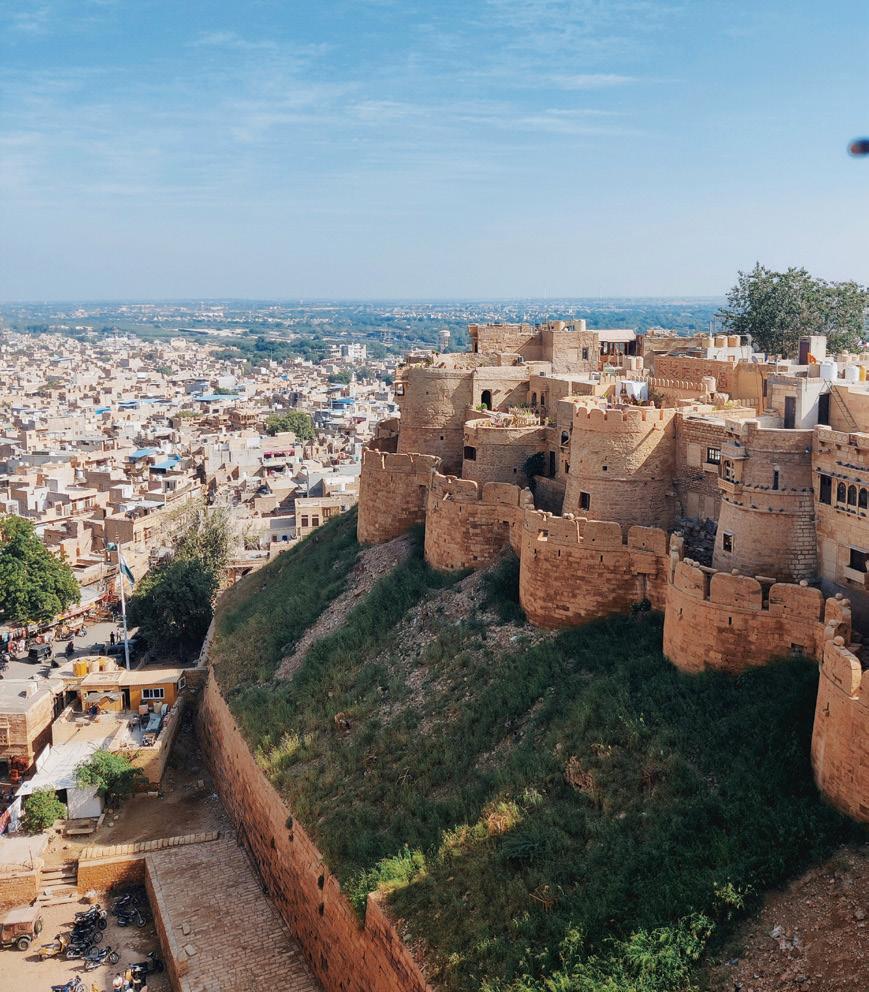
those experiences aren’t optional— they’re essential.
It was a landmark moment when the Maharashtra government allowed every qualifying winery to automatically receive a license for tourism-related facilities: tasting rooms, bottle shops, even hotels. We worked closely with the government to help shape those policies.
At Sula, wine tourism isn’t an add-on—it’s a core part of who we are. It drives awareness, builds loyalty, and fuels growth. For many people, their first taste of Sula comes at our vineyard. They visit, enjoy, and leave as brand ambassadors.
What have been the learnings over the years?
We’ve definitely made some mistakes or missteps and had to pivot over the years. One key area was our imports business. At one point, it contributed nearly 20% of our revenue, but over the past five years, we realised it was largely unprofitable and unsustainable.
Many enter the space without understanding India’s structural challenges. Someone might visit a Tuscan winery, taste a €7 bottle, and think, “This could sell for €30 in India—I’ll make a fortune.” But that overlooks the complexities of import duties, distribution, and price sensitivity here.
At Sula, we’ve come to truly appreciate the strength of our own portfolio. We’ve shifted focus to building and promoting our own labels rather than importing others. That transition has been a turning point. Was the import push a mistake? Not exactly. It was part of our evolution—what didn’t work shaped what ultimately did.
Now, our focus includes long-term sustainability. Climate change is already impacting the global wine industry—from Napa to Nashik—and we’re thinking about how to adapt.


Climate change has affected the wine industry worldwide. At Sula, how are you dealing with it?
Sustainability and climate change are no longer future concerns—they're immediate realities. We’ve all seen what it’s doing to Napa Valley and to the global wine industry at large. And yes, it’s certainly having an effect here in Nashik as well. While the world talks about the 1.5°C threshold, many grape-growing regions in India, including ours, have already crossed 2°C. The effects are tangible and growing.


At Sula, sustainability is a core, non-negotiable pillar of our business. We’re constantly adapting—rewilding the areas around, planting more climate-resilient grape varieties, harvesting earlier to preserve freshness, and integrating renewable energy across our operations. Solar panels now power much of what we do, and we track every drop of water and every unit of energy we use.
Our sustainability goals are embedded into our team’s KPIs—reducing water and energy consumption per case isn’t aspirational; it’s operational. To mark our 25th anniversary, we planted 25,000 trees just five minutes from here—a small but meaningful step.
In the vineyards, we’re also shifting to gentler practices: fewer chemicals, smarter irrigation, and deep collaboration with our growers. It’s an ongoing effort. The wine industry is changing fast, and we’re committed to leading that change in India.
Which regions excite you in terms of future growth?
If I had to pick one region that’s shown the most exciting growth over the past three to five years, it would be Hyderabad in particular, and Telangana in general. Hyderabad is now one of the fastest-growing
wine markets in India and may soon rank just behind Mumbai in per capita consumption.
We’re also seeing momentum in regions like the northeast, Pondicherry, and more recently, Kerala—where policy changes are creating new opportunities. Much of this growth is shaped by excise and taxation policies, which is why we stay actively involved in public affairs and advocacy. Some efforts succeed, others don’t—but wherever policy improves, consumption follows. And when taxes rise, demand shifts elsewhere.
In Maharashtra, second-tier cities beyond Mumbai and Pune are also on the rise. While Nasik remains a key market, places like Nagpur, Aurangabad, and Sholapur are seeing steady growth in wine consumption.
Do you believe wine can tell a story? And how do you bring that narrative to life? Absolutely. Wine must tell a story. I’ve been hosting fireside chat tastings—intimate gatherings of 60–70 people—at clubs and venues like Soho House, Bombay Gymkhana, Willingdon Club, and The Quorum. We’re also starting to do these with corporates.
During these events, I tell the story behind each wine. Luckily, as pioneers, we have many stories to tell—how Sula was named after my mother, Sulabha; how we discovered that Grenache thrives in Nashik; which grapes didn’t work; how we collaborate with grape farmers; and why certain wines pair well with regional Indian cuisines.
People connect with these stories. For instance, someone might ask, “What wine goes best with Gujarati food?” You need to have thoughtful, authentic answers—your stories—ready to share.
BY TRAVEL C O LO U R E D
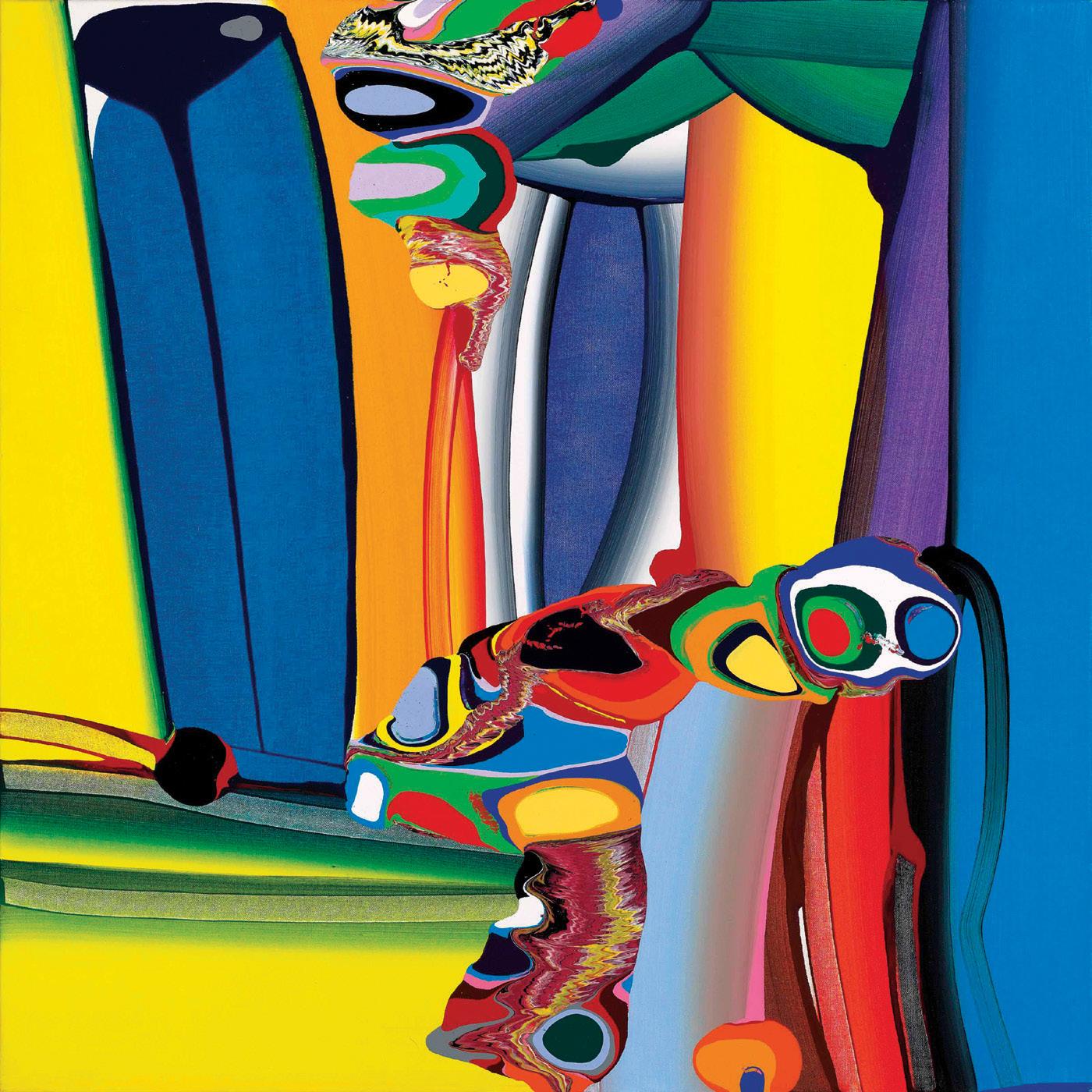
Bose Krishnamachari has come a long way from walking almost seven kilometres twice a day through paddy fields with his knapsack of school-books on his back. Join the artist and creator-curator of the Kochi Muziris Biennale (among other pioneering forays in the realm of art) on his meandering stroll down memory lane, as he muses about where his life’s journey has taken him and how travel has left an indelible imprint on his spirit.
AS TOLD TO MARIA LOUIS






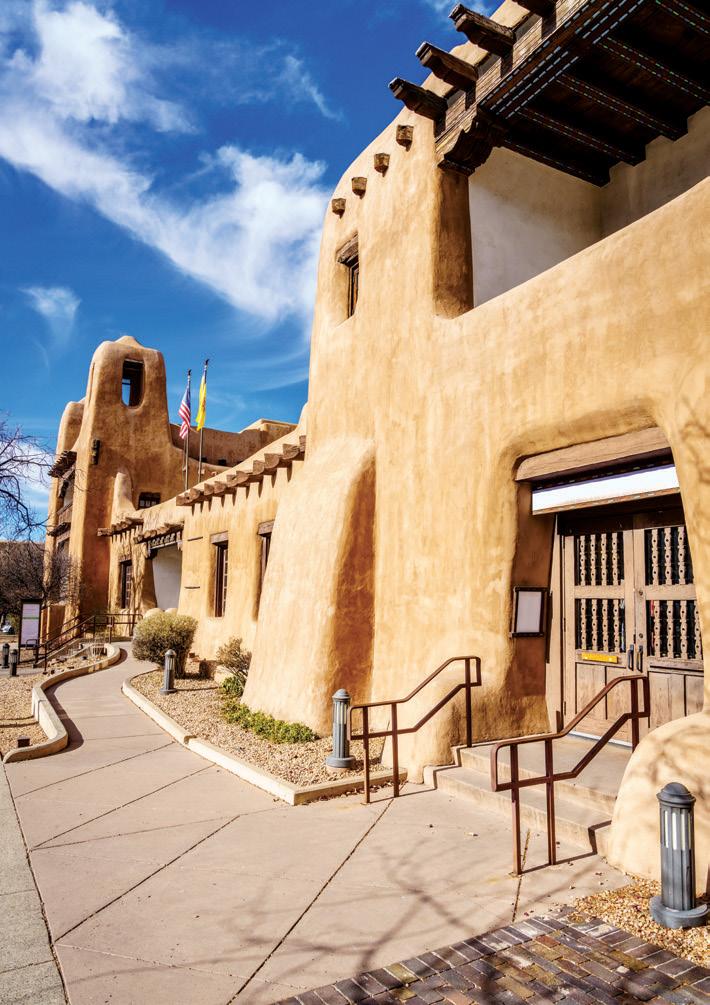

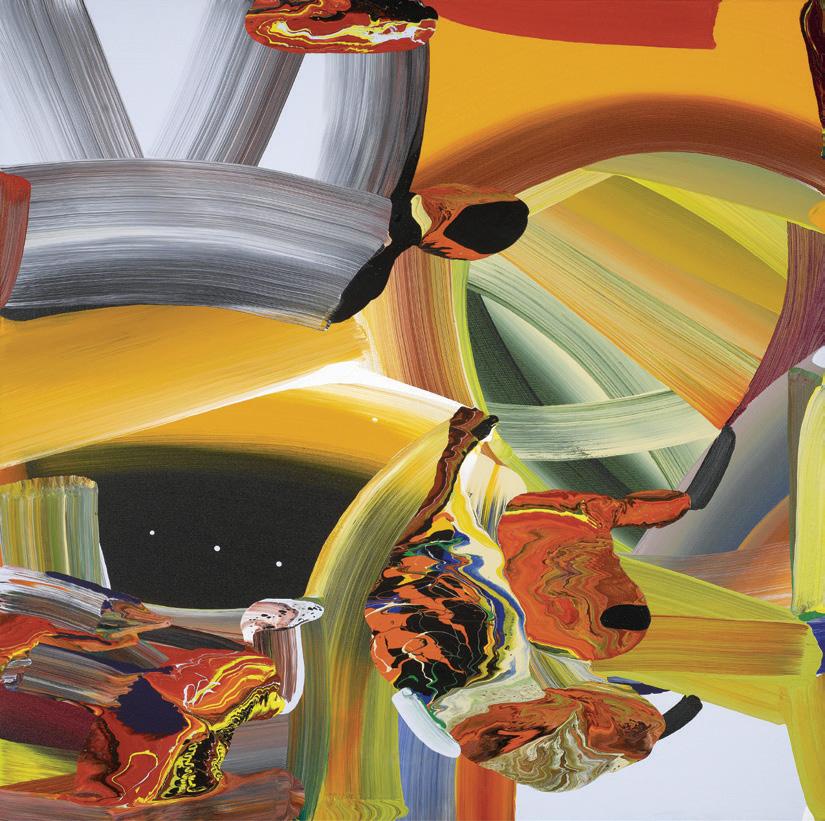
I became aware of the concept of travel as a child in my village, Mangattukara, Angamaly, in Kerala. For us, distance was first measured by the sound and sight of an Ambassador car—it was like an alien visiting our world! We would reach out just to touch it. Then, there was the train—Jayanti Janata—that passed right next to my home. I remember waving at the travellers, fascinated by the speed, the sound and the rhythm, the goods trains with a seemingly endless number of bogies, and the idea that people were going somewhere far beyond what I could imagine.
Coming from a middle-class family in rural Kerala, my earliest memories of travel were not of trains or planes… but of walking. Every day, I would walk six to seven kilometres, carrying school-books, through narrow paths that divided paddy fields, across small creeks, and over muddy, waterlogged ground. The terrain was clay-like and slippery during the monsoons. That journey—both beautiful and difficult—was my first relationship with movement and distance.
Those early travels were about access to education. To reach my upper primary school, and later college, I relied on unreliable and rashly-driven private transport. Getting to SreeSankara College in Kalady meant navigating not just geography, but the unpredictability of roads and vehicles. But those journeys shaped my resilience. They taught me to observe, to adapt, and to dream beyond the horizon of my village.
My professional voyage began with a long train ride from my village in Kerala to Mumbai—a journey that didn’t just cover distance, but transported me into an entirely new world. Mumbai gave me everything. I worked in a restaurant called Mela in Worli, and my late-night commutes on the local train became a part of life’s rhythm. This local train is not just transport— it’s a theatre of life and, for me, it was a space of observation and reflection. The freedom I felt seeing people, especially women, returning safely at night, shaped my sense of the city’s modernity and openness.
Travel has been my teacher, deeply shaping my way of seeing, thinking and making.” “
Later, I received a British Council award that took me to London. That first trip abroad was unforgettable. I had read about artists, galleries and institutions; but to see them in person—to stand before the works—was transformative. I visited Anish Kapoor’s studio in 1993, where the scale of ambition overwhelmed me. Cranes, assistants, books, pigments, scribbled notes on walls—it was a world of its own.
In 1996, I received the Mid-America Arts Alliance Award from the USIS, which allowed me to travel extensively across the United States—from Washington to Chicago, Atlanta, Santa Fe, LA, San Francisco and New York. I met legendary artists, architects and writers. Frank Gehry studio in Santa Monica. Linda Benglis in her Santa Fe studio. I stood inside Frank Lloyd Wright’s home in Chicago. I experienced Frank Stella’s vast material and physical studio and Joseph Kosuth’s conceptual-based practice.
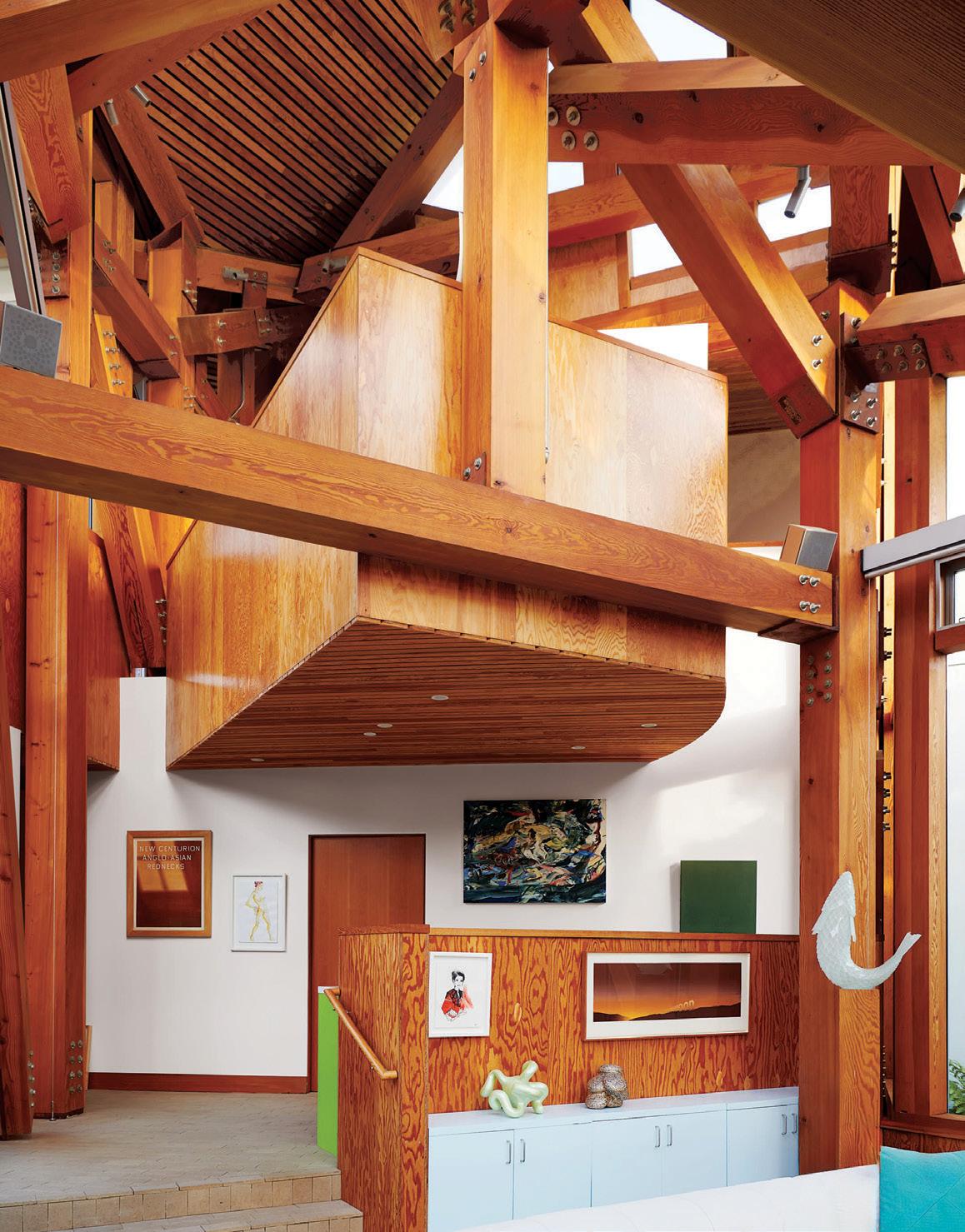
Every space revealed a different language of creativity. But one of the most consistent and profound inspirations have been Francesco Clemente. I’ve visited his New York studio many times, and each visit has been an experience of wonder—hundreds of drawings spread out like a visual diary of the mind.
I still remember my first extraordinary night in New York. Francesco took me into the heart of the art world. We went to a Damien Hirst opening, and I found myself in the company of artists like David Hockney, Roy Lichtenstein—icons whose works I had only known from books. The room flashed with camera lights, media buzzed, and the sheer glamour and scale of it all made one thing clear: this world of art was bigger than Bollywood, bigger than cinema—it was global, intellectual, and full of possibilities.
Travel, for me today, is no longer just about movement—it’s about exploration, learning, and deep seeing. As an artist and curator, I travel not to escape, but to immerse myself in new ways of perceiving the world, to encounter different ways of thinking.
There are places that have completely transformed my understanding of art and life. One such is Naoshima, a small island in Japan. It’s home to the Benesse Art House and other museums whose architecture, designed by Tadao Ando, is a revelation in itself—minimal, meditative, in harmony with land, light and sea. There, I encountered Claude Monet’s water lilies like never before—enveloped by natural light in a space that seemed to breathe with the paintings. I experienced James Turrell’s work, where light becomes a material, a presence, a spiritual offering. Naoshima is a place where art and nature don’t just coexist, they converse. It made me realise that travel is not about ticking places off a list, but about being open—to transformation, to silence, to wonder.
Travel has been my teacher, deeply shaping my way of seeing, thinking and making. One important aspect I’ve learned through travel is how space is handled in galleries and museums internationally. I began to observe not only the artworks on display, but the entire scenography—lighting, placement, architectural design, circulation and atmosphere. How a sculpture is lit, how a painting breathes in its surroundings, how an installation interacts with the viewer—all these elements became crucial to my practice.
Architecture has been a curious and compelling space for me. During my travels, I was often more interested in the spatial choreography of a museum than the objects. Be it a Tadao Ando-designed museum in
Japan or a contemporary space in the USA, I paid close attention to how form, light and material informed the experience of art.
Another powerful influence is the people I travel with. At times, I travel with fellow artists, and those journeys are filled with critical conversations and mutual learning. At other times, with collectors or architects, which adds layers of insight into art and design. Family travels—with my children, especially from a young age—brought another kind of learning: seeing through their eyes, encountering wonder without filters.
One of the most extraordinary archaeological sites I’ve seen is the Terracotta Army in Xi’an, China. Housed within the Emperor Qinshihuang’s Mausoleum Site Museum, this vast underground formation of life-sized terracotta soldiers, horses and chariots was created to guard the first Emperor of China in the afterlife. Its scale, detail and vision are astonishing. You feel like you are standing inside a living archive of power and legacy.
Ultimately, travel has taught me that art doesn’t live in isolation. It lives in dialogue—with architecture, with people, with place, and with the world.
What unsettles me while travelling, is the impatience and loudness of human behaviour in public spaces— what I sometimes call ‘noise-making human traffic’. It’s not about sound alone, but about a disregard for others. It’s especially disheartening when you’re in a space meant for reflection. I often feel
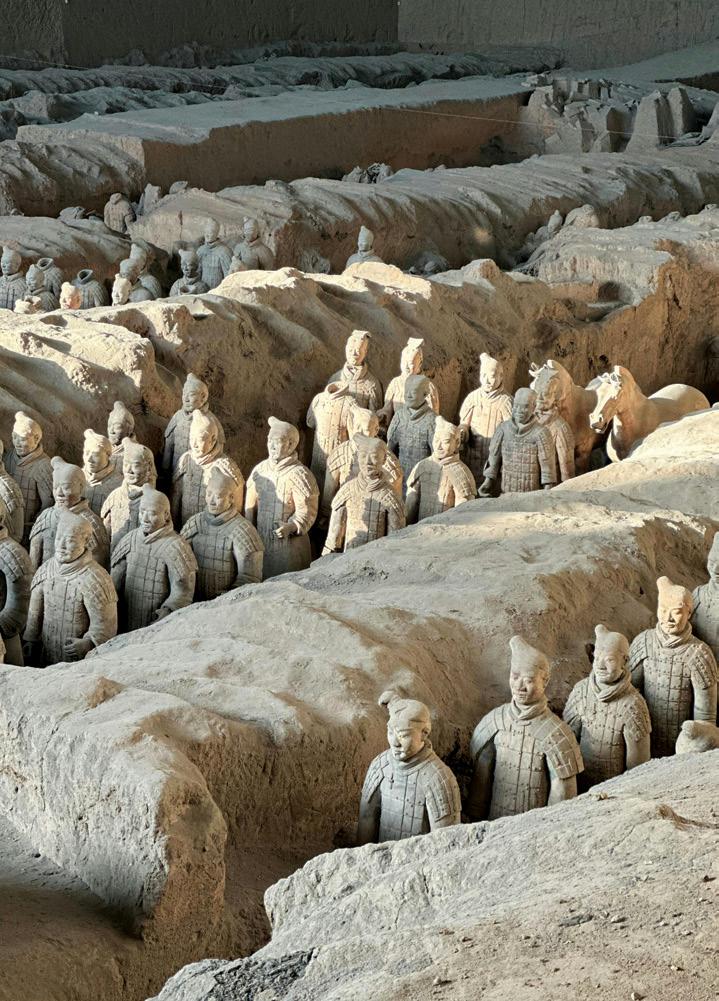
embarrassed, particularly when I see such behaviour in international contexts where it reflects poorly on where we come from.
What I like most about travel is people of the region, their culture, rhythms, stories. Art exists in people before it exists in objects. So, every journey becomes a chance to encounter not just new places, but new ways of being, thinking and creating.
I also live for those moments of surprise—those quiet Eurekas that arrive when you’re least expecting them. Every unknown space has something to reveal. That sense of not knowing what next—it’s incredibly beautiful. Whether it’s stumbling into a local festival, discovering an artist’s studio tucked away in a corner of a city, or sharing a conversation over tea with someone I’ve never met before—it’s what makes travel magical.
One of my most unexpected experiences was being the guest curator at ARCO 2009 in Madrid. I hadn’t anticipated the sheer vitality of the city during the fair—it was more than an art event; it was a full-bodied celebration of life, culture and creativity. What stood out was the energy of the people—the way the Spanish and Latin American communities come together with such spirit and passion. The conversations spilled out

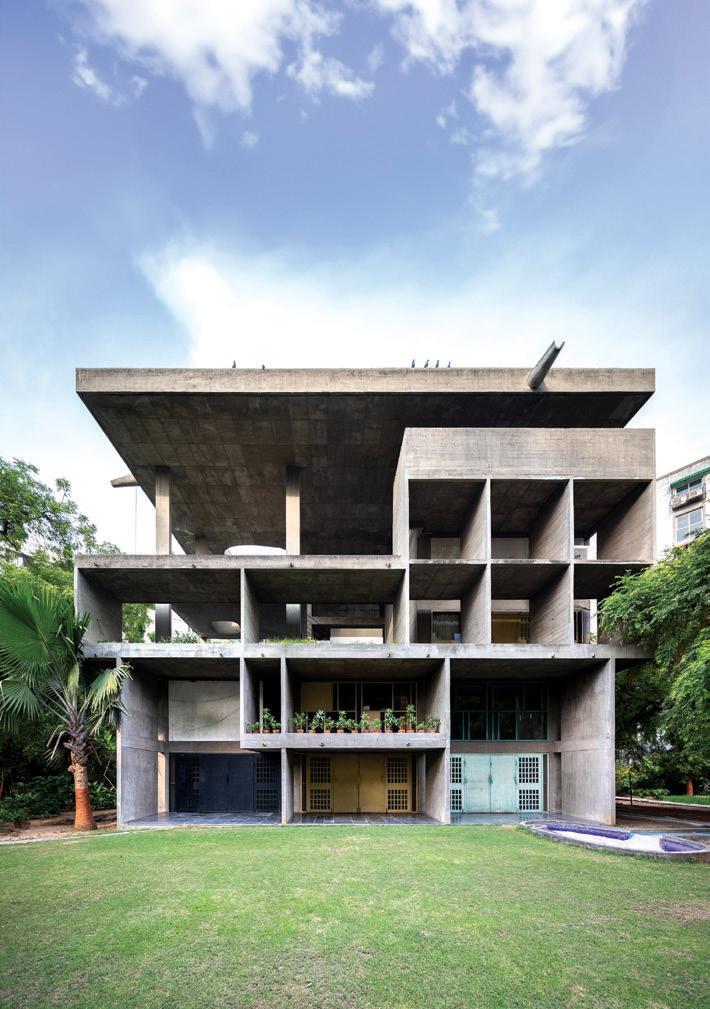
Travel for me is no longer just about movement—it’s about exploration, learning, and deep seeing. I travel not to escape, but to immerse myself in new ways of perceiving the world.” “
Travel has taught the artist how space is handled in galleries and museums internationally.
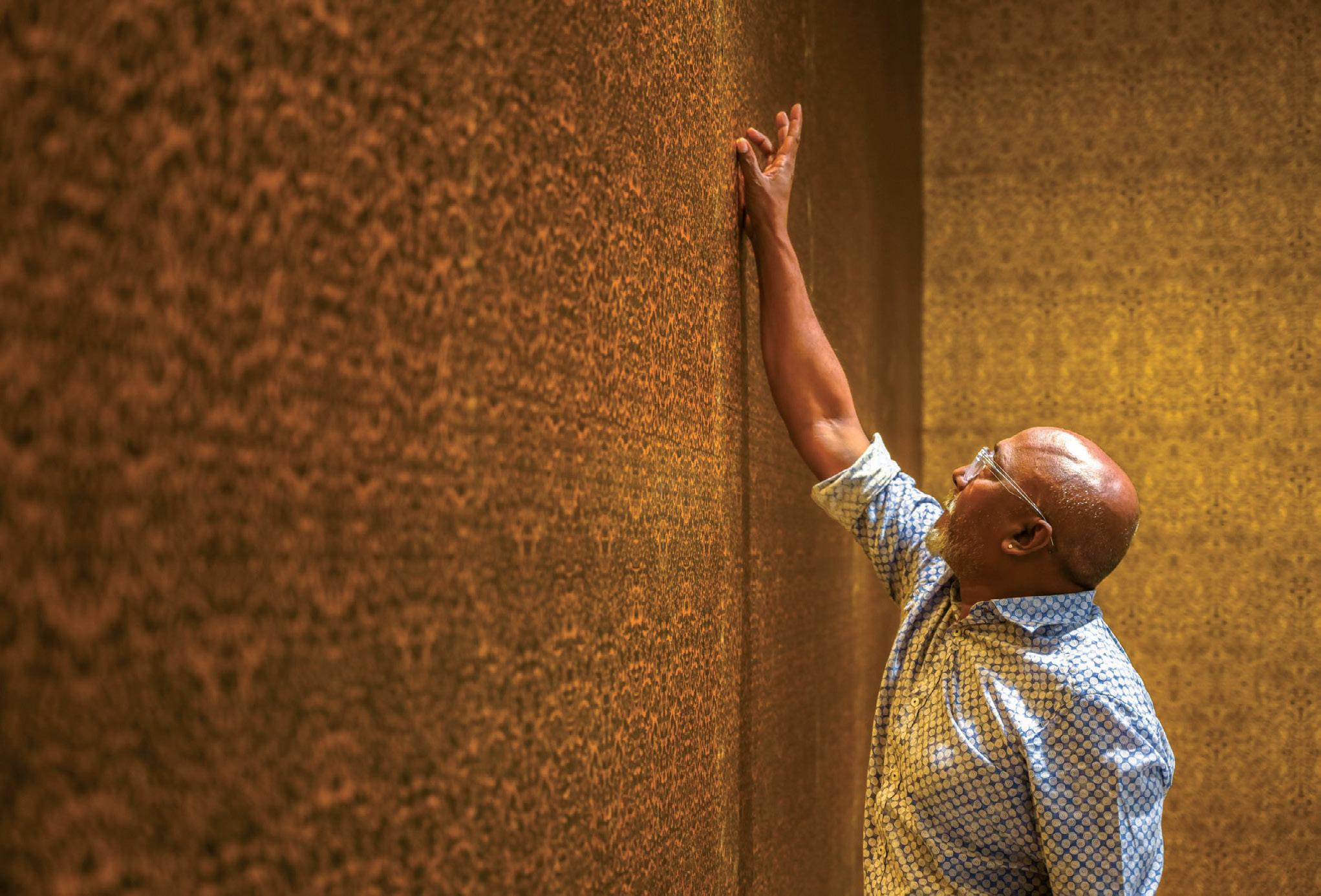
into the streets, into the evenings, into shared meals and spontaneous performances.
I’ve loved many countries, cities and rural landscapes—each for different reasons. But the one that stands out is the Naoshima Island in Japan. There’s a profound serenity there, shaped by a rare harmony of art, architecture and life—curated through the vision of Soichiro Fukutake and his foundation. The placement of artworks, like Yayoi Kusama’s piece reaching toward the sea, remains unforgettable.
Japan feels like a land of beautiful contradictions. Deep-rooted traditions coexist with radical contemporary design—in fashion, in architecture, in everyday life. There’s maximalism in its aesthetic language, yet its living spaces are often deeply minimalist. That tension, that balance, fascinates me. I find a similar spirit in parts of Kerala.
Another place close to my heart is the home of Frida Kahlo in Mexico. That small, vibrant space—washed in blue and pink, surrounded by nature—still holds her presence. It’s not just a house, but a living memory of the artist herself.
The home Le Corbusier designed for the Sarabhai family in Ahmedabad is another space I return to in thought. That house became a haven for greatness—where artists, musicians, thinkers lived, created and shared ideas. That atmosphere still resonates.
There are so many places I hold close. For me, it’s never just about geography—it’s about memory, emotion, and the way certain spaces seem to breathe.
I’ve travelled several times for academic and professional reasons—whether studying in London, or through scholarship and travel awards in the US and elsewhere. But the most meaningful journeys have been those shared with friends and family. It’s in those travels that memories are made—through conversations, laughter, unexpected incidents, small accidents. That shared experience becomes a kind of living archive.
I’m deeply drawn to places that are rich in natural beauty and cultural heritage—places that feel untouched yet profoundly soulful. The Andaman and Nicobar Islands, with their crystal-clear waters, coral reefs and quiet beaches, offer a kind of elemental solitude that’s hard to find elsewhere. Bhutan, on the other hand, is a country that breathes philosophy— with its monasteries perched on cliffs, traditional architecture, and a people deeply rooted in values of happiness and harmony. In both places, I find the kind of simplicity and grace that stays with you long after you’ve left.
Lunuganga, Geoffrey Bawa’s country estate in Sri Lanka, remains one of the most enchanting places I’ve visited. It’s an atmosphere, a philosophy made tangible. Nestled atop a hill and unfolding gently toward serene waters, the estate is a masterclass in architectural
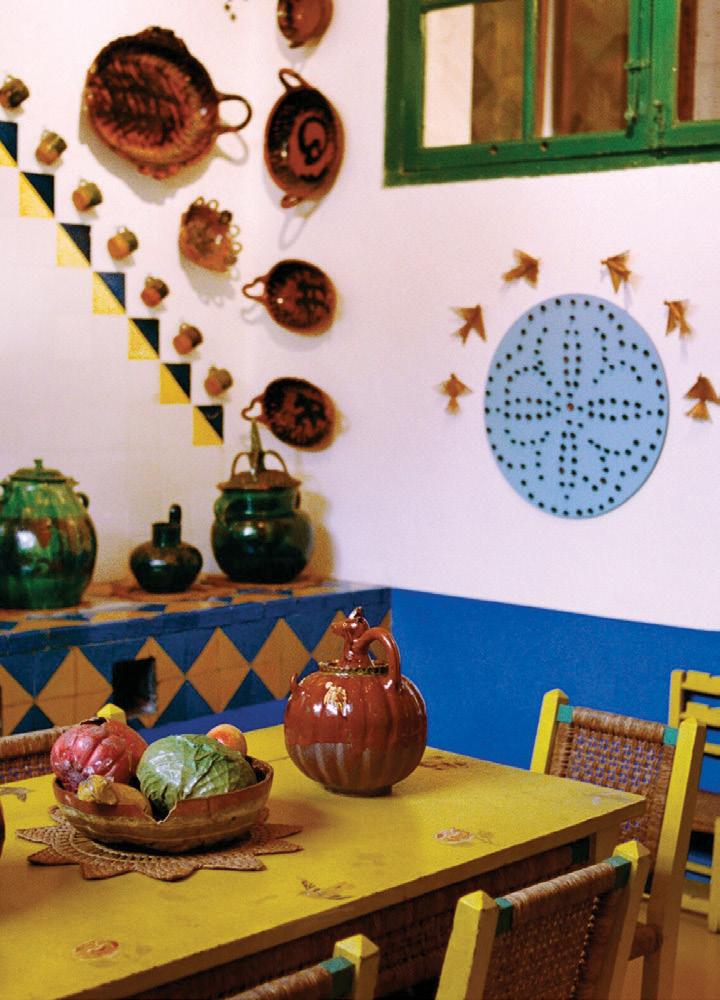
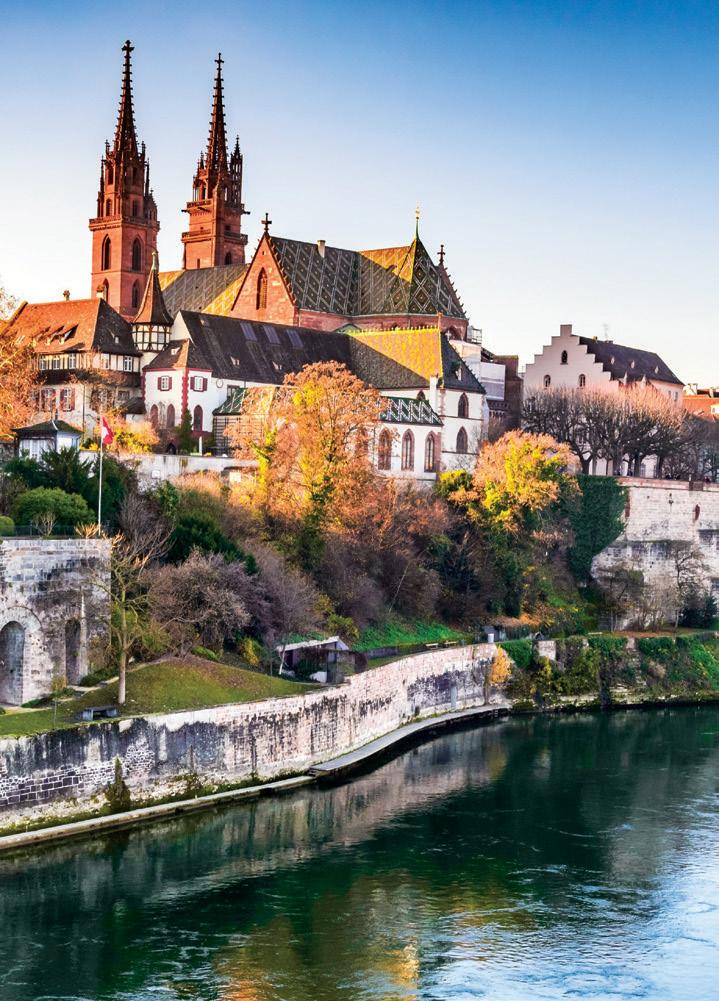
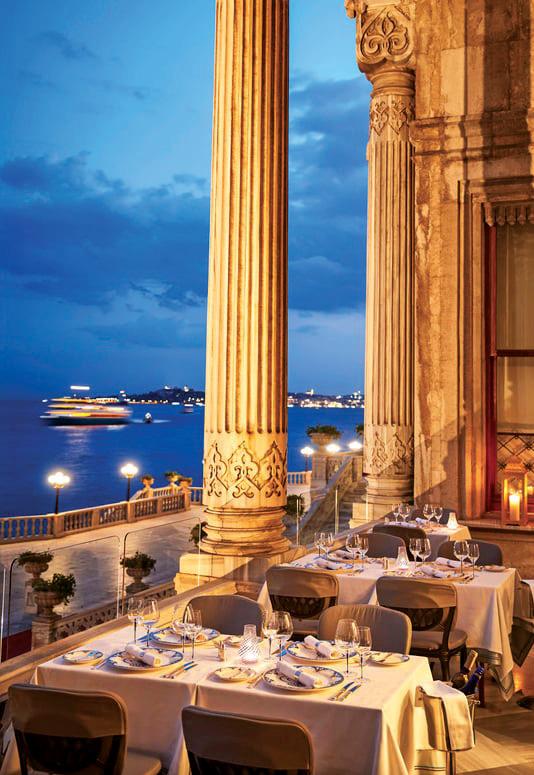
storytelling. The experience is heightened by the open veranda restaurant—simple, elegant, and deeply connected to its surroundings. Every perspective— across land, water and sky—feels intentional yet effortlessly poetic. Being there is like stepping into Bawa’s mind: a space where architecture dissolves into landscape. For anyone who loves architecture, it’s a pilgrimage worth making.
And if you want a heightened experience of art, head to Japan for the Sakura or cherry blossom season from late March to early April, to Basel during Art Basel in June, to London and Paris in October, to Miami Basel in December and, finally, don’t forget the Kochi-Muziris Biennale (from mid-December) until March 2026. See you there!
Memorable museums
You must visit Basel, Switzerland, during its Basel Art Fair; but even otherwise, the city’s cultural fabric is extraordinary. The Fondation Beyeler, designed by Renzo Piano, is an exceptional space—where art, architecture and landscape are in perfect dialogue. The Kunsthalle Basel, along with numerous smaller museums and institutions, makes Basel one of the most culturally vibrant cities in Europe.
In Paris, the Centre Pompidou remains a longstanding favourite—for its radical architecture and the way it democratises access to contemporary art. The Palais de Tokyo stands out for its openness to experimentation and scale, while Lafayette Anticipations offers a bold, forward-thinking curatorial program in the heart of the city.
I have a deep admiration for architectural museums. The Vitra Campus in Germany is a pilgrimage site in this regard. The Vitra Design Museum, designed by Frank Gehry, and other buildings on the campus—including those by Herzog & de Meuron—are as inspiring as the exhibitions they host.
In Japan, the Chichu Art Museum on Naoshima Island, designed by Tadao Ando, is unforgettable. It’s a spiritual space. The use of natural light and geometry, the presence of works by Monet, James Turrell and Walter De Maria, create a profound experience.
In Madrid, I was moved by the Museo Reina Sofía especially by the presence of Picasso’s Guernica, which stands as both an artwork and a political statement.
The Louisiana Museum of Modern Art in Denmark holds a special place in my heart for how beautifully it blends art; most part is underground galleries,

LEFT TOP: Frida Kahlo's small, vibrant home is close to Bose's heart.
LEFT CENTRE: The artist recommends visiting Basel, Switzerland, during the Basel Art Fair.
LEFT BOTTOM: Staying in a palace hotel in Istanbul overlooking the Bosphorus, was one of the most luxurious experiences Bose has had.
ABOVE: Beautifully presented dishes are photographic fodder for Bose.


architecture, and nature, sea shore—creating a contemplative environment that stays with you.
Closer to home, I greatly value the Kiran Nadar Museum of Art in Delhi for its dedication to Indian modern and contemporary art, and Calico Museum of Textiles in Ahmedabad, which is quietly building an important presence in the Indian art ecosystem.
Then there is Museo Frida Kahlo in Mexico City an extension of the artist herself. Every corner of the house still pulses with her memory, her colours, and her life force.
These are not just institutions. They are spaces of memory, imagination and deep resonance—each one continuing to live with you long after you leave.
Memorable stays
I personally love staying in boutique hotels—whether I’m travelling solo or with friends. There’s usually an intimacy to the space and, often, a quiet area where conversations can naturally unfold. Boutique hotels
tend to reflect the spirit of the place—they’re designed with thought and a sense of place, which I appreciate.
That said, I don’t mind staying in small, simple accommodations—especially when the destination is the main focus. Take Venice, for example: when you’re immersed in art, gondolas, architecture, parties and events, you don’t need a luxurious stay. The city itself offers the richness. But often, gatherings do happen in luxury hotels—those spaces become social hubs, which also have their charm.
One of the most luxurious experiences I’ve had was in Turkey—four unforgettable days and three nights during a friend’s wedding celebration. We stayed in a palace hotel in Istanbul overlooking the Bosphorus, where each room felt like a chapter from a different story. The days were filled with music, dance, conversations, and a kind of international camaraderie that’s rare. On the last night, we were on a yacht, gently gliding along the strait, watching minarets glow under moonlight. It felt timeless, a blur of history, emotion and joy. True luxury, for me, is not just comfort—it’s emotional resonance and freedom.
Memorable meals
While I enjoy experiencing the local cuisine wherever I go, it’s not the deciding factor for choosing a destination. I find the most comfort in simple, homecooked meals. That said, I do appreciate the artistry of food. I often take photographs of beautifully crafted dishes—especially when chefs treat the plate like a canvas. Aesthetics matter to me, even in food. But the real joy is in sharing meals at home—with my wife, with family.
One of the most unforgettable meals I’ve had while travelling, was in Oaxaca, Mexico. It wasn’t in a highend restaurant, but in a humble courtyard where local women were preparing tamales, wrapped in banana leaves, over open firewood. The fragrance of maize, the texture of the masa, and the warmth of the community around the table—it was unlike anything I had ever experienced. It wasn’t just about taste—it was about a moment, about generosity, about place. I remember how time seemed to slow down, and every bite felt like a connection to something ancient and alive.
Another memorable meal was in Kerala, at a toddy shop near Alappuzha, Kerala where I had freshly caught karimeen (pearl spot fish), spiced and wrapped in banana leaf, with tapioca and fiery red chutney. It reminded me that luxury can be deeply local—found in memory, in tradition, and in the hands of those who cook with soul.
THE DIGITAL BACKBONE
Elevating experiences and optimising operations—how data is transforming the travel and hospitality industry.
In today's digitally driven world, the travel and hospitality sector stands at the cusp of a profound evolution, fuelled by the intelligent application of data. Beyond mere operational efficiency, data-driven strategies are now the cornerstone of exceptional guest experiences and optimised business models. For hotels, airlines, and travel agencies alike, embracing these technologies is no longer optional—it's the key to unlocking unprecedented growth and fostering lasting customer loyalty.
1
UNDERSTANDING THE FUEL: WHAT EXACTLY IS DATA?
At its core, data comprises the raw, unorganised facts and figures generated daily. Within our industry, this encompasses a rich tapestry of information, including guest preferences (from dietary restrictions to preferred pillow types), booking histories, website interactions, social media sentiment, loyalty program activity, and even operational metrics such as room occupancy rates and energy consumption. When this raw data is meticulously processed and intelligently analysed, it transforms into invaluable insights, capable of reshaping every facet of how we operate and interact with our guests.
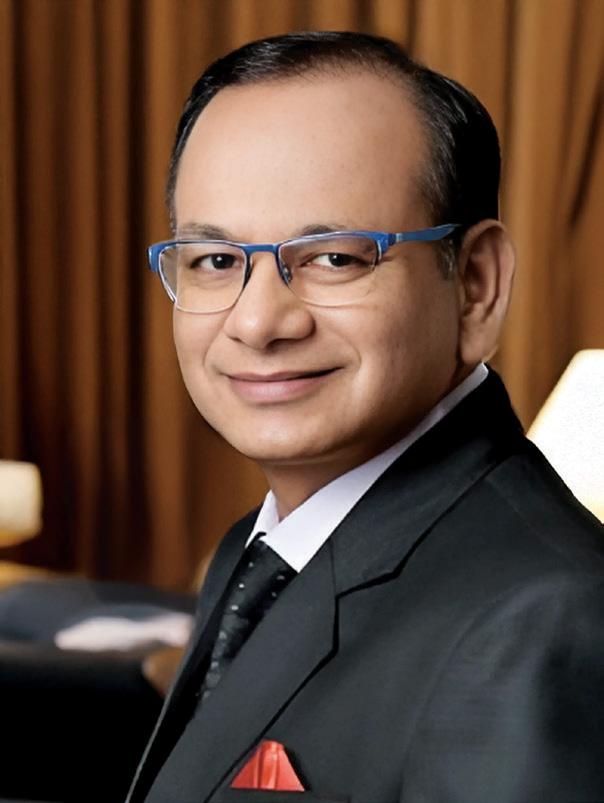
HARISH CHANDRA, FOUNDER OF GHTP-GLOBAL HOSPITALITY TECHNOLOGY PROFESSIONALS
2
LAYING THE DIGITAL FOUNDATION: THE IMPERATIVE OF DIGITISATION
The initial yet crucial step in harnessing the power of data is digitisation: the conversion of traditional, often paper-based information into digital formats. Imagine a hotel transitioning from handwritten guest folios to a comprehensive property management system (PMS). This fundamental shift enables seamless access to information, accelerates data processing, and provides a secure repository, forming the bedrock upon which more sophisticated digital strategies can be built.
3
STREAMLINING OPERATIONS AND ENHANCING EXPERIENCES THROUGH DIGITALISATION
Building upon digitisation, digitalisation involves leveraging digital technologies to automate and refine existing processes. Consider how loyalty programmes of hotel chains like Marriott Bonvoy have implemented mobile check-in and keyless entry. This not only streamlines the arrival experience for guests, eliminating queues and manual paperwork but also enhances operational efficiency by freeing up front desk staff. Similarly, automated booking confirmations and real-time flight updates offered by airlines demonstrate how digitalisation elevates efficiency and customer satisfaction by replacing cumbersome manual workflows.
6
4
UNCOVERING HIDDEN GEMS: THE ART OF DATA MODELLING AND ANALYSIS
With a multitude of diverse data streams—ranging from online reviews on platforms like TripAdvisor to real-time data from in-room sensors monitoring temperature and usage—data modelling becomes paramount. This involves structuring disparate data points to identify meaningful relationships and patterns. Subsequently, data analysis takes centre stage, examining and transforming this structured information into actionable intelligence.
For instance, analysing booking patterns allows hotel groups like Hilton to dynamically adjust room pricing based on anticipated demand, maximising revenue. Furthermore, by analysing guest feedback and preferences, they can tailor personalised offers and promotions, enhancing the likelihood of repeat bookings.
5
GAINING A COMPETITIVE EDGE: THE POWER OF DATA ANALYTICS
Data analytics extends beyond understanding past trends; it empowers businesses to predict future behaviour and gain a significant competitive advantage. Identifying peak booking periods for specific destinations or understanding the preferred amenities of different guest segments allows for strategic resource allocation and highly targeted marketing campaigns.
TRANSFORMING THE GUEST JOURNEY: DIGITAL TRANSFORMATION IN ACTION
Digital transformation represents the holistic integration of digital technologies across all business functions, fundamentally reimagining the guest journey. In the travel and hospitality sector, this manifests in various innovative ways. Think of AIpowered chatbots providing instant customer support and personalised recommendations, as seen on the Accor ALL app.
Personalised recommendation engines suggest local experiences or dining options based on a guest's past behaviour. Innovative room technologies, allowing guests to control lighting, temperature, and entertainment via voice commands or mobile apps, further enhance the in-stay experience. Digital transformation is about leveraging technology to deliver unparalleled value at every touchpoint, creating memorable and seamless experiences that foster loyalty.
For example, IHG Hotels & Resorts might analyse data to identify a surge in family bookings during school holidays in a particular region, enabling them to create tailored family-friendly packages and allocate resources accordingly. This proactive approach ensures businesses remain agile and ahead of their competitors.
7
BUILDING TRUST AND ENSURING SECURITY: DATA GOVERNANCE AND PROTECTION
Handling vast amounts of sensitive guest data requires robust data governance frameworks. This involves establishing clear policies and procedures to manage data quality, security, and regulatory compliance, such as GDPR or CCPA. Simultaneously, stringent data protection measures are crucial to ensure it is safeguarded using fundamental principles: lawfulness, transparency, accountability, integrity, and confidentiality. Hotel chains invest heavily in secure data infrastructure and employee training to maintain guest trust and avoid costly data breaches, recognising that data security is paramount to their reputation and long-term success.
By embracing the power of data, the travel and hospitality industries are not just adapting to the digital age; they are actively shaping its future. From personalised guest experiences to optimised operational efficiency, data-driven insights are paving the way for a new era of innovation and customer-centricity, ultimately leading to greater profitability and lasting relationships with guests
THE INTELLIGENT PANTRY
Globally, hotel kitchens are leveraging AI to enhance sustainability, reduce waste, and foster culinary innovation. In India, a few hotels and restaurants have begun to explore this technology, though the cultural emphasis continues to favour personal touch.
DEEPALI NANDWANI
Think of a kitchen that blends the genius of Artificial Intelligence (AI here onward) and the creativity of a fantastic chef. AI is no longer a futuristic fantasy; it's rapidly becoming a cornerstone of modern professional kitchens in restaurants and hotels across the globe. The technology will reshape how these culinary spaces operate in the future, as hotels and restaurants struggle with managing food wastage and promoting sustainability.
At the core of this revolution lies AI's capacity to reshape fundamental kitchen operations. Imagine the rhythmic precision of robotic arms deftly chopping vegetables, or intelligent systems artfully plating dishes with an unwavering consistency that speaks of automation. AI-powered robots and smart appliances are stepping into roles that once demanded countless human hours, equipped with an array of sensors, cameras, and sophisticated machine learning algorithms. These systems don't just perform tasks; they learn and adapt, meticulously monitoring cooking processes to ensure quality and consistency previously unattainable. This automation naturally translates to a significant reduction in labour costs, freeing up human chefs to focus on the more creative and nuanced aspects of their craft.
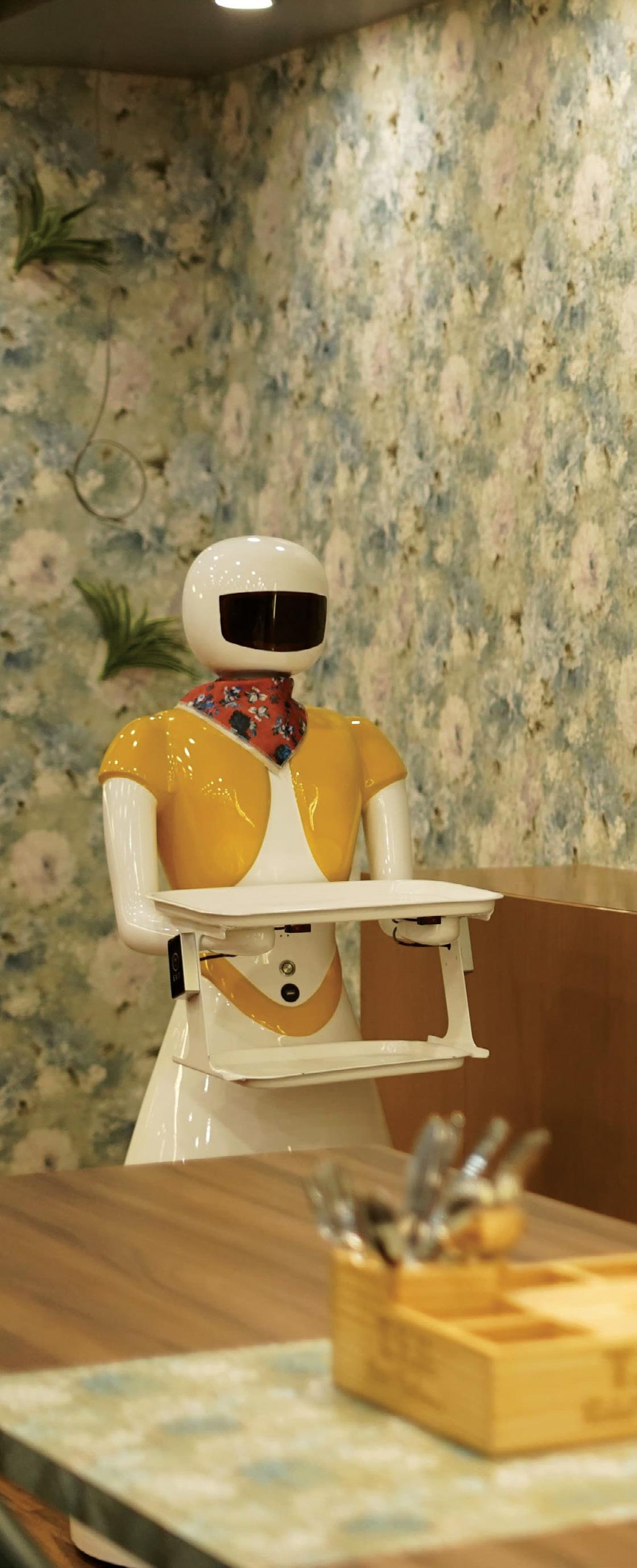


AI helps deal with the perennial challenge of inventory management and food wastage, as these intelligent systems act as astute forecasters, analysing a wealth of data—from past sales figures and reservation patterns to the subtle ebbs and flows of historical consumption trends. By discerning these patterns, AI can accurately predict future stock requirements, effectively minimising the occurrence of overstocking and the subsequent waste of precious ingredients. This proactive approach not only makes sound economic sense but also aligns perfectly with the growing need for adopting sustainable practices.
Across the globe, innovative establishments are already leveraging the power of AI to redefine their kitchen operations.
At Hilton Hotels in the United Arab Emirates, artificial intelligence is playing a transformative role in tackling food waste, particularly at breakfast buffets. The group has adopted Winnow Vision, an AI-powered system with motion-sensor cameras and scales, to meticulously monitor discarded food items. This technology identifies commonly wasted items such as bread, pastries, and eggs, and generates actionable data that chefs use to fine-tune portion sizes and adjust menu offerings accordingly.
In 2023, Hilton piloted a ‘Green Breakfast’ initiative across 13 UAE properties. Over four months, the results were striking: pre-consumer (kitchen) waste was reduced by 76%, and post-consumer (plate) waste dropped by 55%. These transformations were achieved through thoughtful changes such as offering smaller croissants, pre-cut fruits, and scaled-down portions of salmon.
Hilton’s focus on waste reduction is rooted in leveraging AI-generated insights to help culinary teams avoid over-preparation and enhance the presentation and portioning of buffet items—two key contributors to the high levels of waste typically associated with buffet service.
Globally, Accor Hotels has embarked on a multi-pronged AI strategy through partnerships with startups such as Winnow Vision, Orbisk, and Fullsoon. Each platform contributes uniquely: Winnow Vision scans and quantifies food waste, Orbisk analyses leftovers to guide menu changes, and Fullsoon forecasts customer demand and ingredient needs. These technologies have delivered measurable results across Accor properties.
At Fairmont Jakarta, food waste dropped by 16% (1.6 tons) in a year. Novotel London Excel achieved a 39% reduction (12 tons), Sofitel The Palm Dubai cut waste by 13% (3 tons annually) in five months, and Novotel Amsterdam Schiphol Airport recorded a 35% drop (8 tons over two years). In collaboration with Too Good To Go, Accor also saved 137 tons of uneaten food in 2023 through redistribution. The chain uses its Gaïa reporting tool and AI-generated data to guide procurement and menu planning, to halve food waste by 2030.
The Iberostar Group, operating over 100 hotels globally, also relies on Winnow’s AI to combat food waste. By integrating cameras and scales to monitor food disposal, the system generates data that informs menu optimisation and purchasing decisions. Since January 2023, Iberostar has saved 735,000 meals and reduced waste by 11%, the equivalent of 1,264 tons of CO₂. With an annual target of saving 1,600 tons of food, the initiative also projects over $7 million in cost savings. The group aimed for a 50% reduction in food waste within the first year and a goal of sending zero waste to landfill by this year.

InterContinental Hotels Group (IHG), which spans Europe, the Middle East, Asia, and Africa, has partnered with Winnow Solutions as well to deploy its Winnow Vision technology. The system collects data from food preparation and plate returns, helping chefs and managers make informed decisions about inventory and menus. At InterContinental Fujairah Resort in the UAE, food waste dropped by over 50% in just six months. Seven IHG hotels in the EMEAA region currently use this technology, with another 30 properties in the pipeline. IHG has set a target of reducing food waste by 30% across its portfolio.

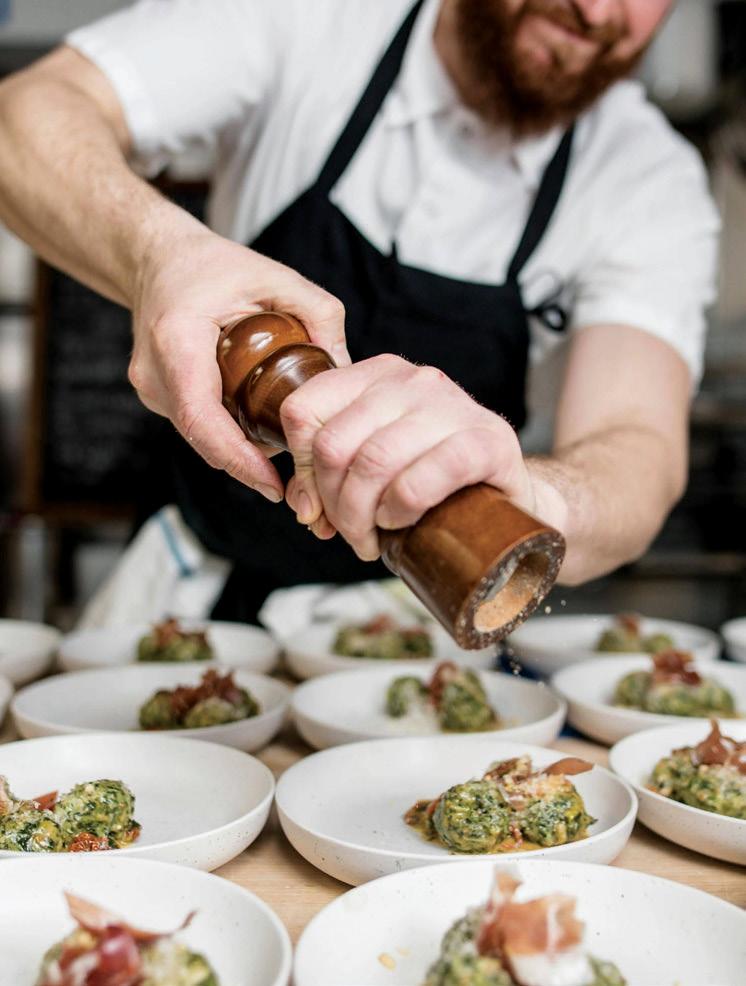
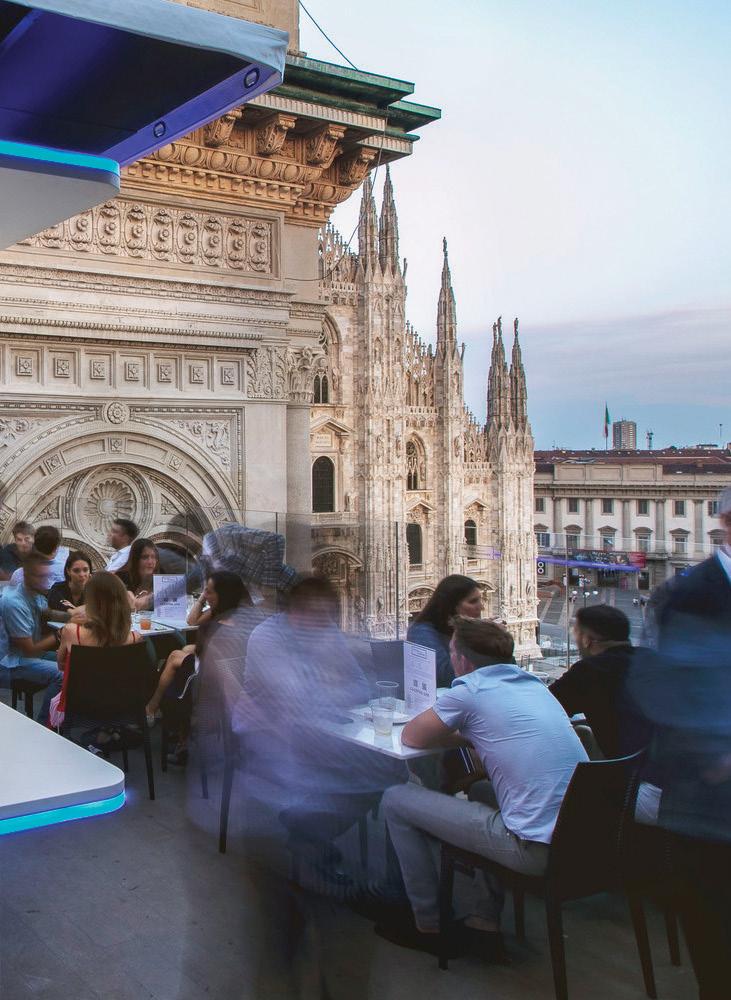
CLOCKWISE FROM LEFT: An automated bar dispenser; AI can free up humans for creative tasks; The Second House in Goa uses AI for its design needs, but keeps it out of the kitchen; smart ovens such as Rational cook with precision, negating the need for intensive human intervention.


AI's proactive approach not only makes sound economic sense but also aligns perfectly with the growing need for adopting sustainable practices.
In the Middle East, Emaar Hospitality Group, which operates 12 properties, uses Winnow Vision to identify and quantify discarded food. Kitchen teams receive AI-driven insights to help streamline operations. This approach has yielded a 72% reduction in food waste and approximately $350,000 in savings in a relatively short period. These efforts not only align with customer expectations but also support government sustainability mandates.
While some hotels focus on minimising food waste, others are using AI to explore the creative frontier of food innovation. At Grand Mercure Mysore in India, AI is used to personalise menus based on guests' dietary needs and preferences. The hotel also employs 3D food printing for customised desserts and garnishes, and uses smart ovens like Rational’s Self Cooking Centre, which leverage AI for consistent cooking results. The hotel grows herbs and vegetables through vertical farming, reducing its supply chain footprint. These innovations not only cater to diverse tastes, especially for banquets, but also help control portions and ingredient usage.
In Las Vegas, The Cosmopolitan has deployed an AI chatbot named Rose to offer personalised dining recommendations to guests based on their preferences and past interactions. Behind the scenes, kitchen AI systems analyse guest data to experiment with new menu items and optimise food preparation. This data-driven experimentation aligns menu offerings with demand, reducing waste and boosting guest satisfaction by highlighting trending dishes.
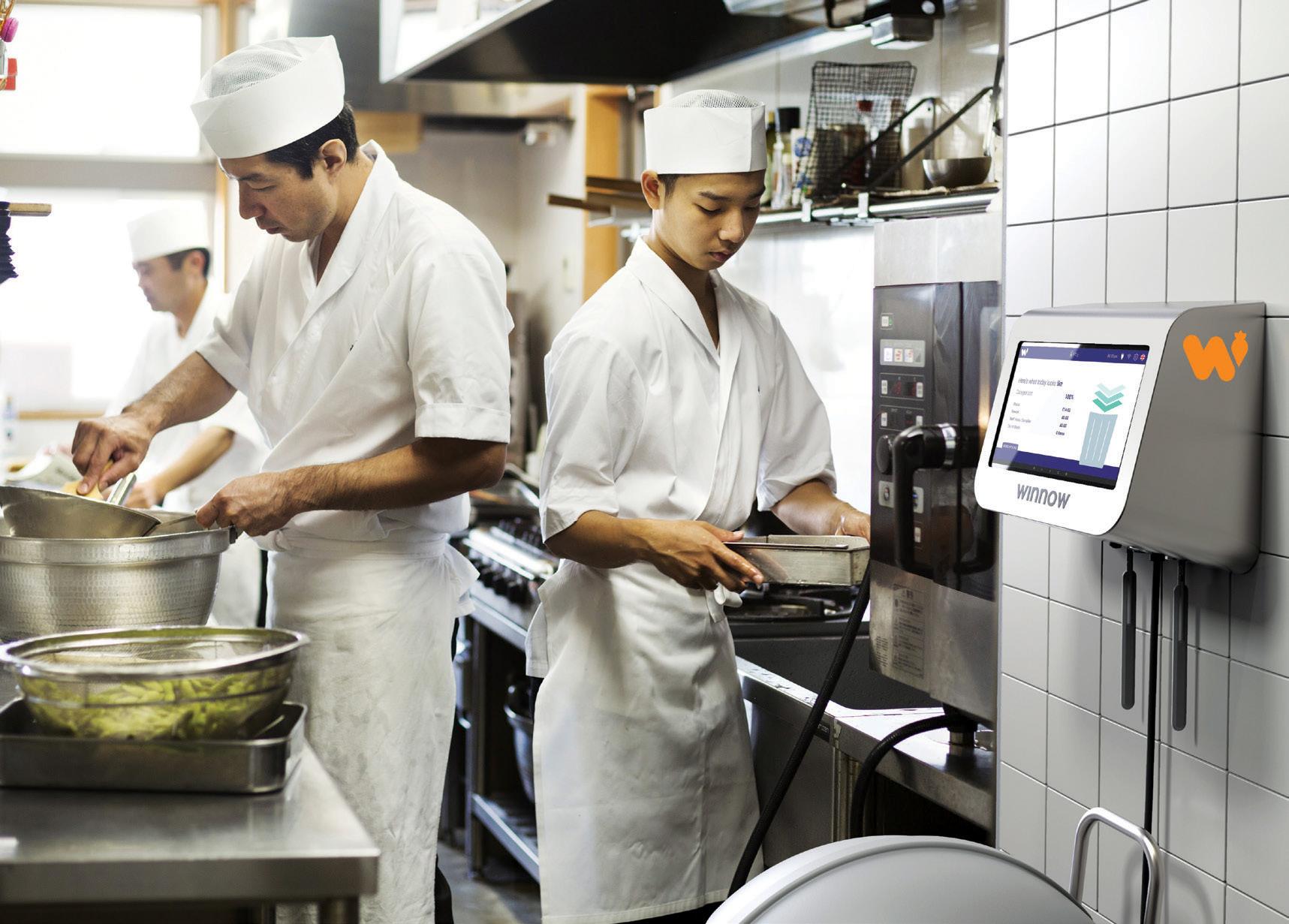
The Dorchester Collection, with properties in the UK and beyond, applies machine learning to comb through guest reviews across digital platforms. Insights from these reviews have revealed preferences such as customised breakfast offerings, prompting new menu directions. AI also supports chefs experimenting with novel flavour combinations, ensuring new creations align with guest expectations. This approach streamlines production by focusing on high-demand items and minimising ingredient waste.
At Henn-na Hotel in Japan— known for its robotic staff—AI takes on an even more futuristic role. The hotel uses AI for automated food preparation and delivery, deploying kitchen assistants and robotic couriers. Data analytics inform menu experimentation, ensuring only the most popular dishes are scaled for broader service. This model reduces labour costs and waste through precision portioning while offering guests a high-tech dining experience.
Key trends emerge across these varied efforts. Hotels such as Hilton, Accor, Iberostar, IHG, Emaar, and TUI Blue are focused on waste reduction through AI platforms like Winnow Vision and KITRO. These tools enable realtime tracking, menu optimisation, and inventory management, leading to food waste reductions ranging from 13% to 76%. On the other hand, properties such as Grand Mercure Mysore, The Cosmopolitan, Dorchester Collection, and Henn-na Hotel use AI to explore food personalisation, automation, and 3D printing— creating memorable guest experiences while keeping waste in check.
These strategies are often tied to ambitious sustainability goals, such as Iberostar’s target of zero
THE MULTIFACETED IMPACT OF AI IN KITCHEN OPERATIONS
Globally, AI's influence permeates various critical aspects of kitchen management. Here are some:
Kitchen Automation and Robotics
Imagine robots adeptly chopping vegetables with unwavering precision or automated systems plating dishes with artistic consistency. AI-powered robots and intelligent appliances are stepping into these roles, considered mundane and repetitive, equipped with sensors, cameras, and sophisticated machine learning algorithms. They not only meticulously monitor cooking processes, ensuring consistent quality, and significantly reduce labour costs.
Inventory and Waste Management
Every professional kitchen struggles with food wastage due to overstocking and food waste. AI offers a smart solution by analysing a wealth of data—sales figures, reservation patterns, and historical consumption trends—to accurately predict stock requirements. This proactive approach minimises surplus inventory and drastically cuts down on food waste, contributing to both economic and environmental benefits.
Menu Personalisation and Recipe Development
Gone are the days of onesize-fits-all menus. AI algorithms are now capable of dissecting customer preferences, understanding intricate dietary needs, and identifying emerging market trends. This insightful analysis empowers chefs to create highly tailored menus and develop innovative recipes that resonate with their clientele.
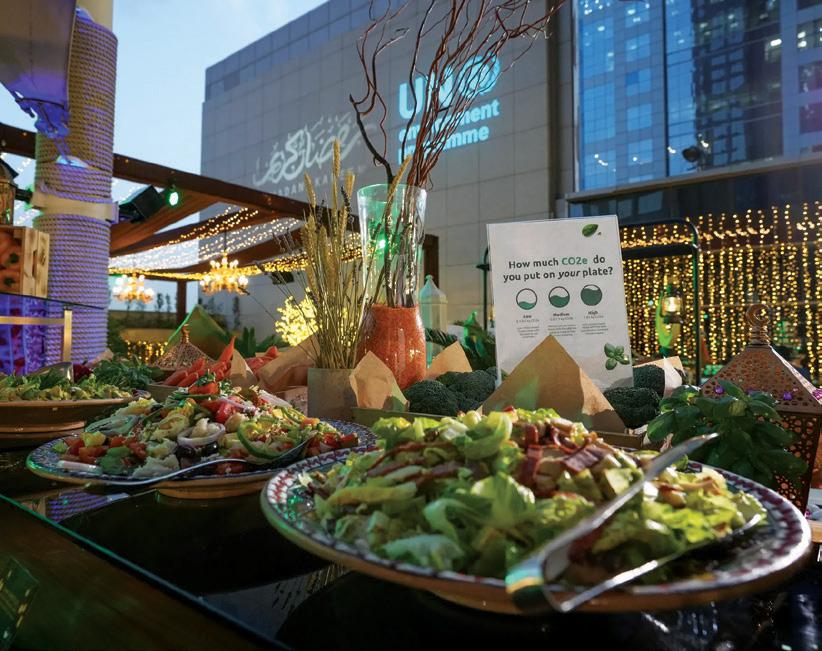

Sustainability
In an increasingly environmentally conscious world, AI is a powerful ally in promoting sustainability within professional kitchens. By optimising resource utilisation, supporting the integration of vertical farming initiatives, and meticulously tracking waste, AI contributes to a significant reduction in the environmental footprint of food service operations. Energy-efficient smart appliances further amplify these positive impacts.
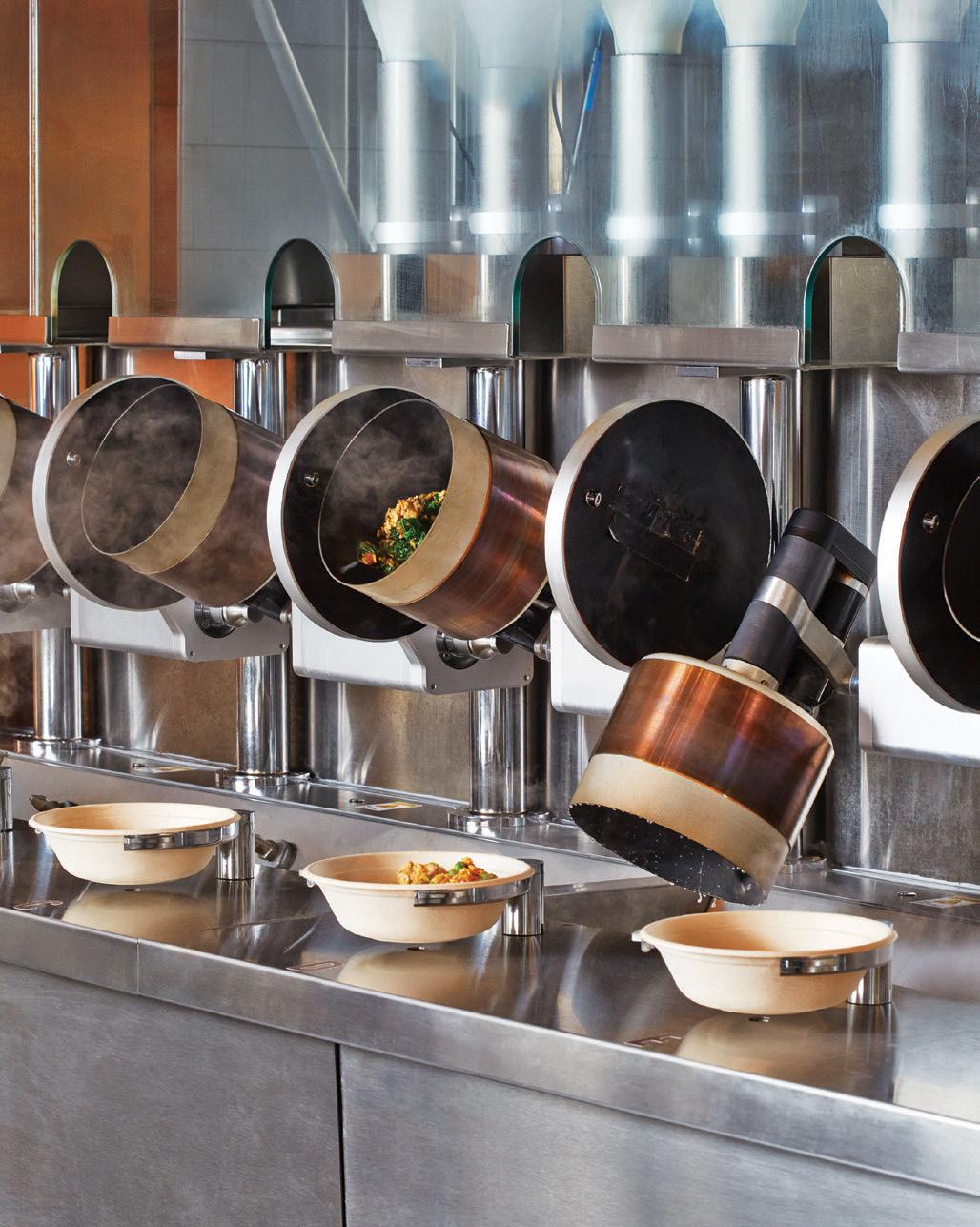

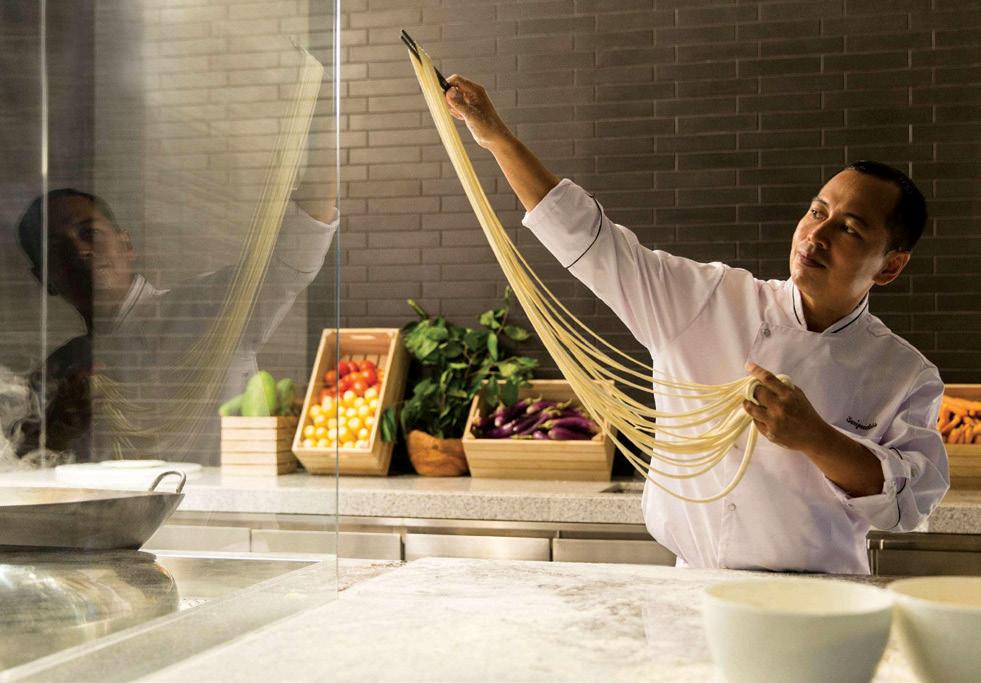


landfill waste by this year and Accor’s commitment to halving waste by 2030. Despite challenges such as upfront investment and the need for staff training, major hotel chains are proving the scalability and effectiveness of AI systems across diverse properties.
Why is Indian hospitality still on a slow adaptation route?
AI-driven innovation in Indian luxury hotels is focused on menu personalisation and enhancing guest engagement. The Yellow House, a robot restaurant in Jaipur, offers a unique dining experience with AIpowered robotic servers named Ruby and Diva. While human staff handle order taking, these robots efficiently deliver food to tables, seamlessly integrating table data. This novel approach attracts customers, reduces service time, and addresses labour shortages, although human chefs remain essential for preparing the diverse range of Indian dishes.
The Bombay Canteen in Mumbai has tangentially utilised AI to enhance the dining ambience. For their ‘Raja Ravi Varma’s Feast of Wonders’ Onam event, they employed AI-generated art to create an immersive experience. Additionally, AI chatbots assist with menu planning and customer engagement, demonstrating how technology can elevate the overall dining experience, even while chefs emphasise
CLOCKWISE FROM TOP LEFT: The Cosmopolitan, Las Vegas, has a chatbot named Rose to offer personalised dining recommendations; a 3D-printed dessert; at Fairmont Jakarta, food waste dropped after Accor Hotels embarked on a multipronged AI-led strategy.
the irreplaceable cultural and emotional significance of human cooking.
Full-scale kitchen automation, however, is progressing more cautiously due to the deep-rooted cultural appreciation for the haath ka swad—the unique flavour imparted by the human touch. Restaurants such as The Second House in Goa use AI for their design needs, but keep it out of their kitchen. The restaurant does have an AI device in the kitchen in the form of the Rational oven, which cooks exactly to the same precision every time, without chefs having to monitor the temperature or the cooking.
Besides cultural moorings, the high cost of AI-integrated appliances (ranging between ₹70,000 and ₹1,80,000) acts as a huge deterrent to the large-scale adoption of the technology.
Research insights: quantifying the impact
Research studies are beginning to quantify the growing influence of AI in professional kitchens:
Food Waste Reduction:
Research by Chen Wang, an assistant professor at University of Buffalo and an AI specialist, highlights the significant role of AI in reducing food waste within European hotels, with similar applications gaining traction in India, as evidenced by Winnow's implementation at Marriott.
Labour Impact: Gartner, a global company that provides research, advisory, consulting and peer services to help businesses make faster, smarter decisions and achieve stronger performance, predicts that AI could potentially replace 10% of call centre workers by 2026. But the perception in professional kitchens is that AI will serve as a valuable complement to human creativity rather than a direct replacement for chefs.
Sustainability: The role of AI in promoting sustainability is gaining momentum, with tools like Winnow and the integration of vertical farming practices, as seen at Grand Mercure Mysore, effectively reducing waste and carbon footprints.
AI is reshaping the way hotels manage food, both as a resource to conserve and as a canvas for creativity. From cutting waste in buffet lines to personalising fine dining, the technology is driving a new era of sustainability and innovation in hospitality. The industry is setting a precedent for how intelligent systems can support environmental responsibility and elevated guest experiences.

Looking ahead: future trends in AI for kitchens
The future of AI in professional kitchens promises even more exciting developments:
AI is reshaping the way hotels manage food, both as a resource to conserve and as a canvas for creativity. From cutting waste in buffet lines to personalising fine dining, the technology is driving a new era of sustainability and innovation in hospitality.
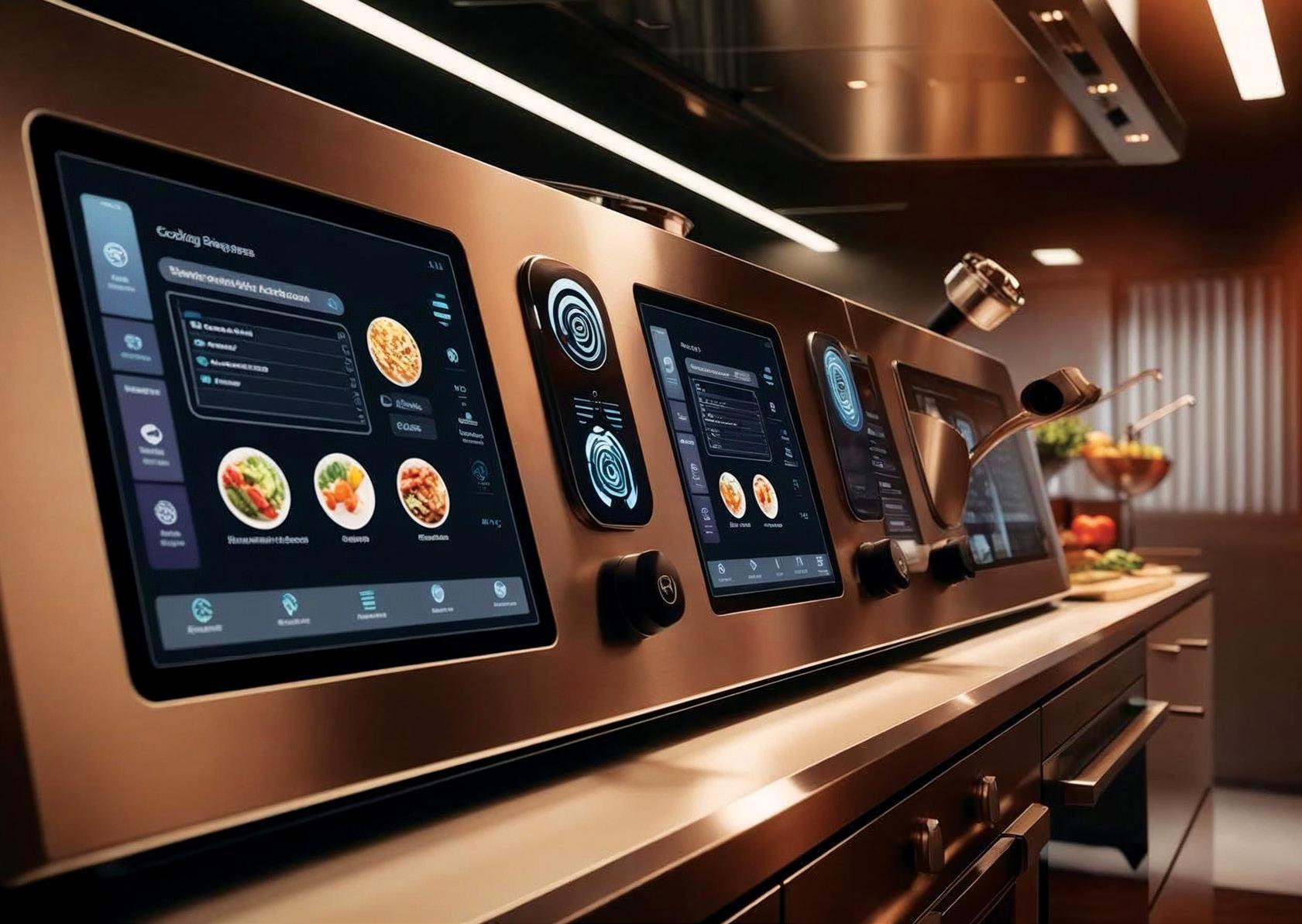
Generative AI: Advanced language models are poised to enhance multilingual support and create highly personalised dining guides, as seen in emerging applications within the hospitality sector.
Sensory AI: Companies are actively developing AI-based smell detectors, which could potentially enable AI to assess food quality in a more holistic manner within the next two to three years.
Sustainability Focus: AI will continue to drive eco-friendly practices, such as the increased adoption of on-site vertical farming and sophisticated waste reduction strategies, aligning with growing consumer demand for sustainable dining options.
AI is streamlining operations through automation, minimising waste, enabling personalised menus, and fostering sustainability. As AI continues its evolution, it is likely to complement rather than replace the artistry of chefs, ushering in an era where technology and culinary tradition converge to create the kitchens of the future.
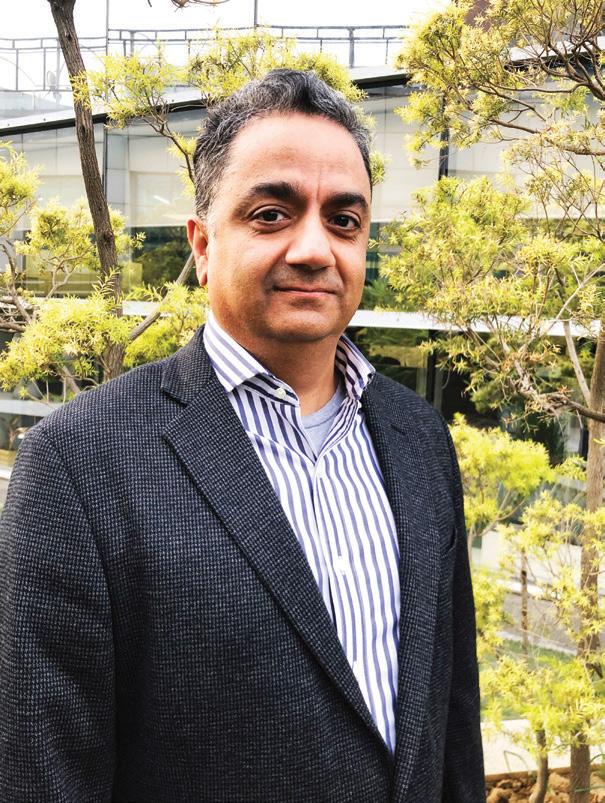

MANAV THADANI, MRICS, FOUNDER CHAIRMAN, HOTELIVATE AND AATREYI DHAR, ASSOCIATE DIRECTOR - SPECIAL PROJECTS, HOTELIVATE
THE FUTURE IS HYBRID
One destination, multiple possibilities! Mixed-use developments are the future of hospitality and of modern urban design.
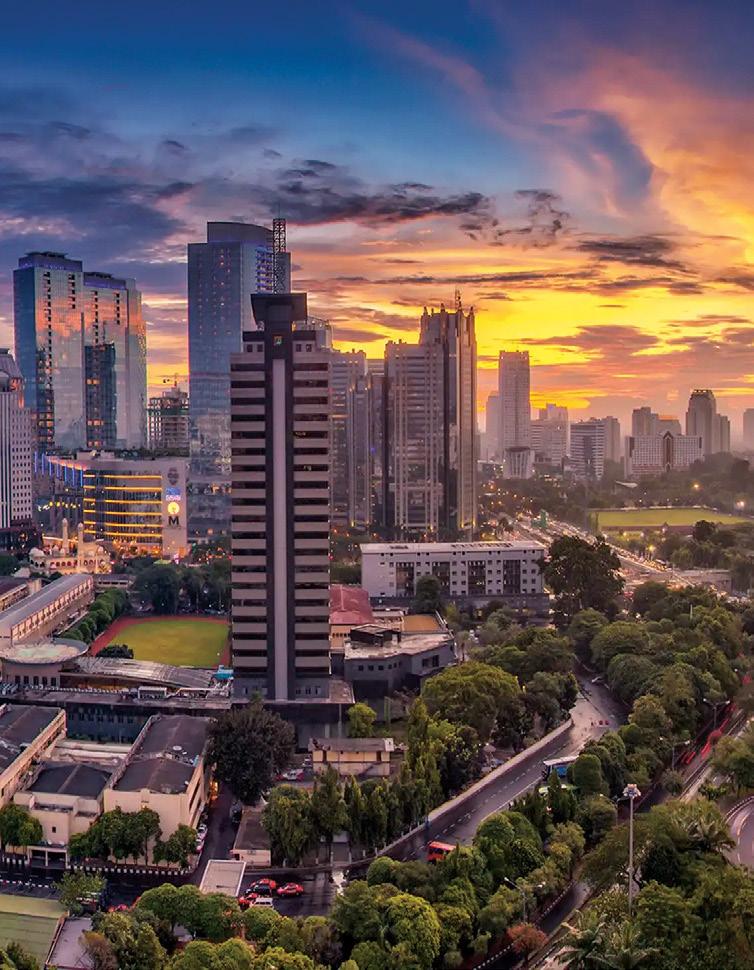
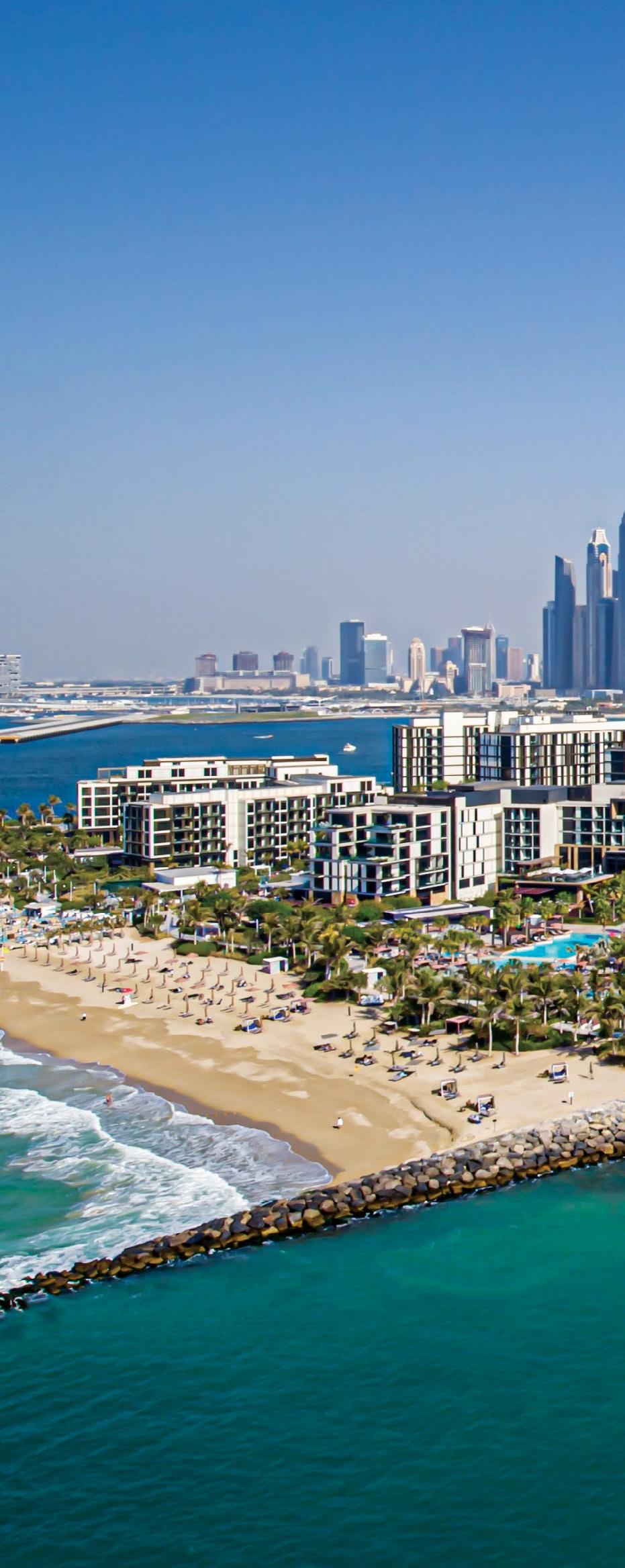
The way we think about hotels is changing. No longer just a place to sleep for the night, today’s hospitality spaces are evolving into something much more layered and purposeful. Across the globe, there’s a growing movement toward mixed-use developments, where hotels are thoughtfully woven into a broader environment that includes retail shops, wellness centres, co-working areas, entertainment spaces, and even residences. This shift isn’t just about squeezing more value out of every square foot of real estate. It’s about creating places that reflect how people live, work, and travel today. Guests want more than convenience; they want a sense of connection, community, and experience. And increasingly, locals are engaging with these spaces too—not just as passersby, but as regular users.


As cities worldwide grow and change, mixed-use developments have become an important trend in modern urban design. These spaces combine hotels, residences, retail, and office areas into one vibrant community, offering convenience and a lifestyle experience. While there are many examples around the world, let’s talk about a few in our favourite cities around the world. Developments like UB City in Bengaluru, District 8 in Jakarta, Bluewaters Island in Dubai and the Langsuan area in Bangkok are perfect examples of this approach, creating self-contained hubs that bring together luxury accommodations, high-end shopping, dining, and cultural experiences, all in one place. Delving further into each of them will further highlight the growth of mixed-use developments.
Located in Bengaluru’s Central Business District, UB City is a landmark mixed-use development that brings together the JW Marriott Hotel and the adjacent Oakwood Premier Prestige, providing serviced residences that cater to both short and extended stays, luxury retail, art galleries, and a variety of dining options. Designed as a premium destination for both locals and visitors, it offers a seamless blend of hospitality, lifestyle, and culture in the heart of the city.
District 8, placed at the heart of Jakarta's SCBD, is a prime example of how mixed-use developments are redefining urban spaces. The complex brings together luxury hotels, retail, offices, and residences in one vibrant setting. It is home to the sleek and upscale Langham Jakarta, as well as the much-anticipated 25hours Hotel The Oddbird, which brings a more playful, lifestyle-driven energy to the area. Add to that the trendy ASHTA Mall and Treasury Tower, one of the tallest office buildings in the country, and you’ve got a city block that feels like its own self-contained ecosystem— tailored for modern urban life.
Bluewaters Island in Dubai is a standout example of mixed-use development done right. The destination blends high-end living, hospitality, and entertainment, with two luxury hotels—Banyan Tree Dubai and the Delano Dubai—offering both rooms and branded residences. The island is also home to a variety of restaurants such as Takahisa Japanese Restaurant, Brass Monkey, and Alici, to name a few, along with bars, premium retail stores, office spaces, and landmarks like Ain Dubai, helps in creating a vibrant, self-contained lifestyle hub that appeals to both residents and visitors.

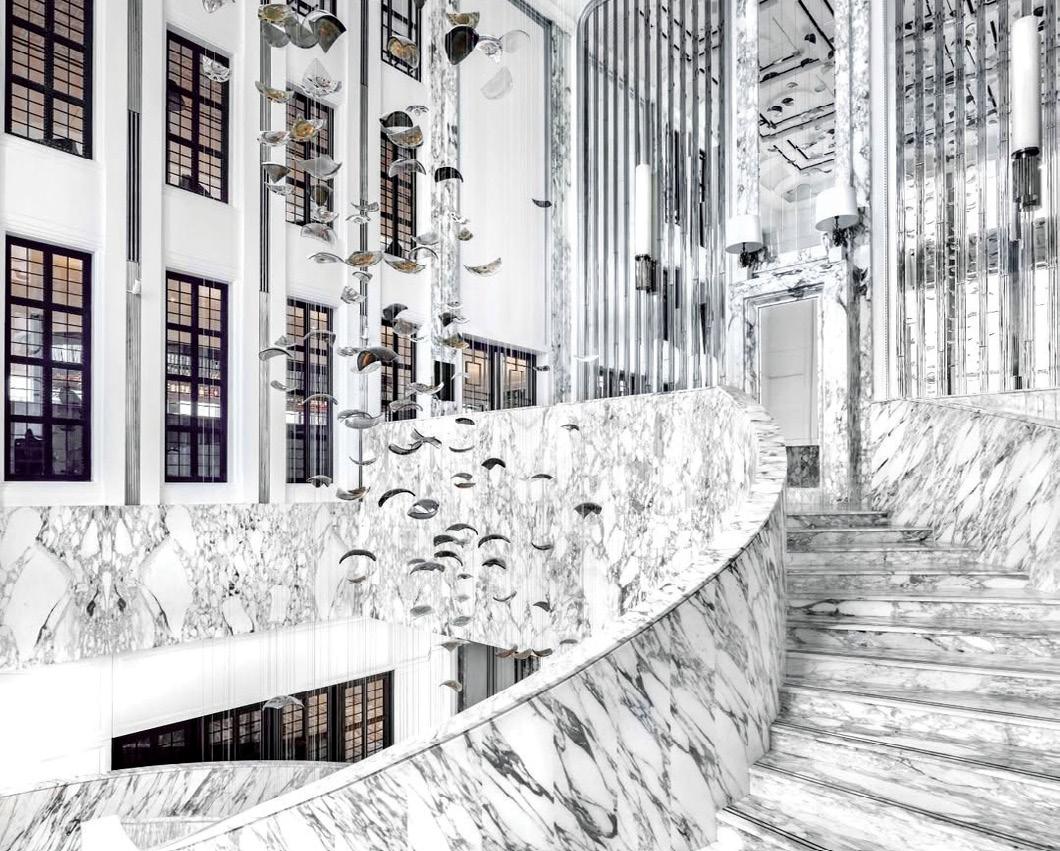
The Langsuan area near Bangkok’s Lumphini Park is another prime example of mixed-use urban development. It is home to standout properties like the Kimpton Maa-Lai Bangkok, which combines bold, modern design with serviced residences and vibrant social spaces.
Just around the corner is the Siam Kempinski Hotel, which is connected to Siam Paragon, one of the city’s top shopping destinations. This area, with its high-end retail, offices, several Michelin star restaurants like Saneh Jaan (contemporary Thai), Inddee (fine dining Indian) and many more, along with green space, blends lifestyle, convenience, and luxury in one of Bangkok’s most desirable locations.
All these are perfect examples of how mixed-use developments can make life more convenient and connected, all while maintaining a sense of community.
Why mixed-use? A win-win for investors and guests
From an investment perspective, mixed-use developments offer diversified revenue streams. A hotel on its own is cyclical and vulnerable to seasonality, economic shocks, and fluctuations in travel patterns. But when it is paired with other complementary components—say, an office space, a gym, or an F&B-led retail zone—the asset becomes far more resilient and consistently profitable.
Simply put, with a stand-alone hotel, all your eggs are in one basket. And this basket usually experiences seasonality and is hit by sporadic travel patterns. When paired with supporting composite functionalities such as office space, retail space, or eateries, the hotel becomes a part of a larger unit. It reduces reliance on it being the sole revenue stream.
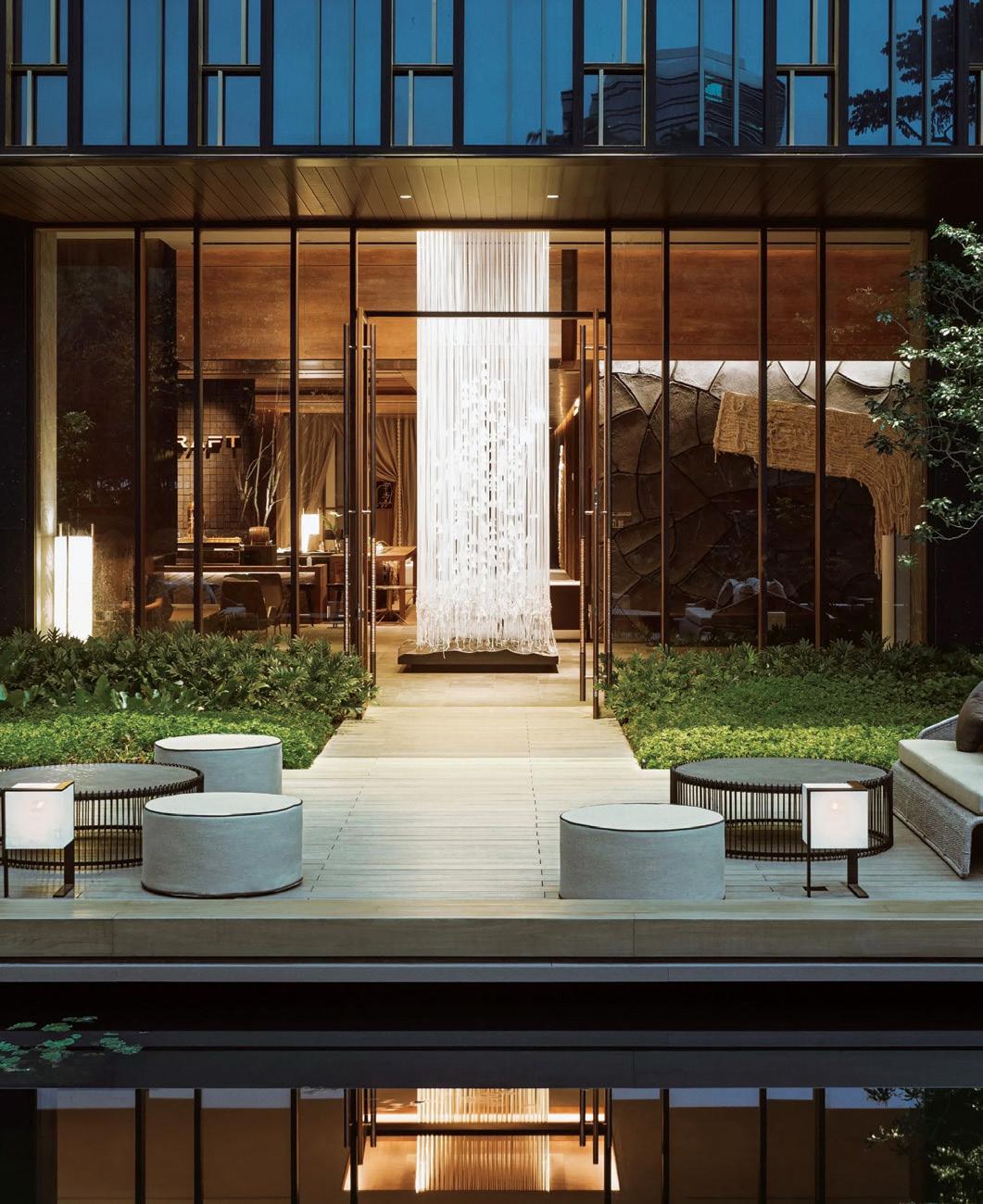
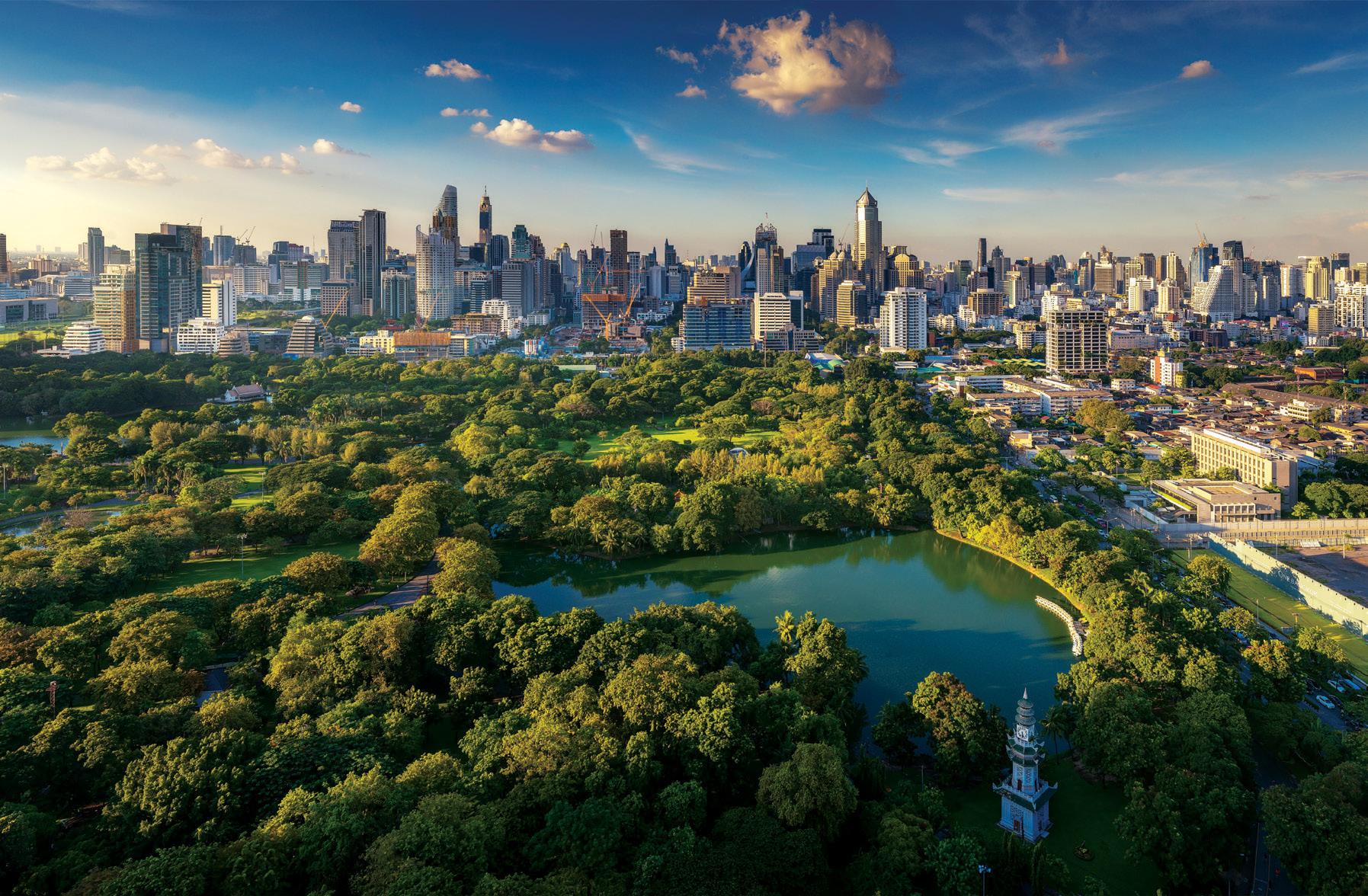
For developers and owners, the appeal, therefore, lies in:
Shared infrastructure and operating costs.
Higher yield per square foot.
Longer customer dwell time and increased footfall.
For hotel brands, it is an opportunity to embed themselves more deeply in the fabric of the local community, moving away from isolated hospitality products to vibrant, multifunctional ecosystems.
The new guest experience
The expectations of today’s traveller have evolved far beyond the traditional model of a hotel stay. Travel has changed— and so have the people who do it.

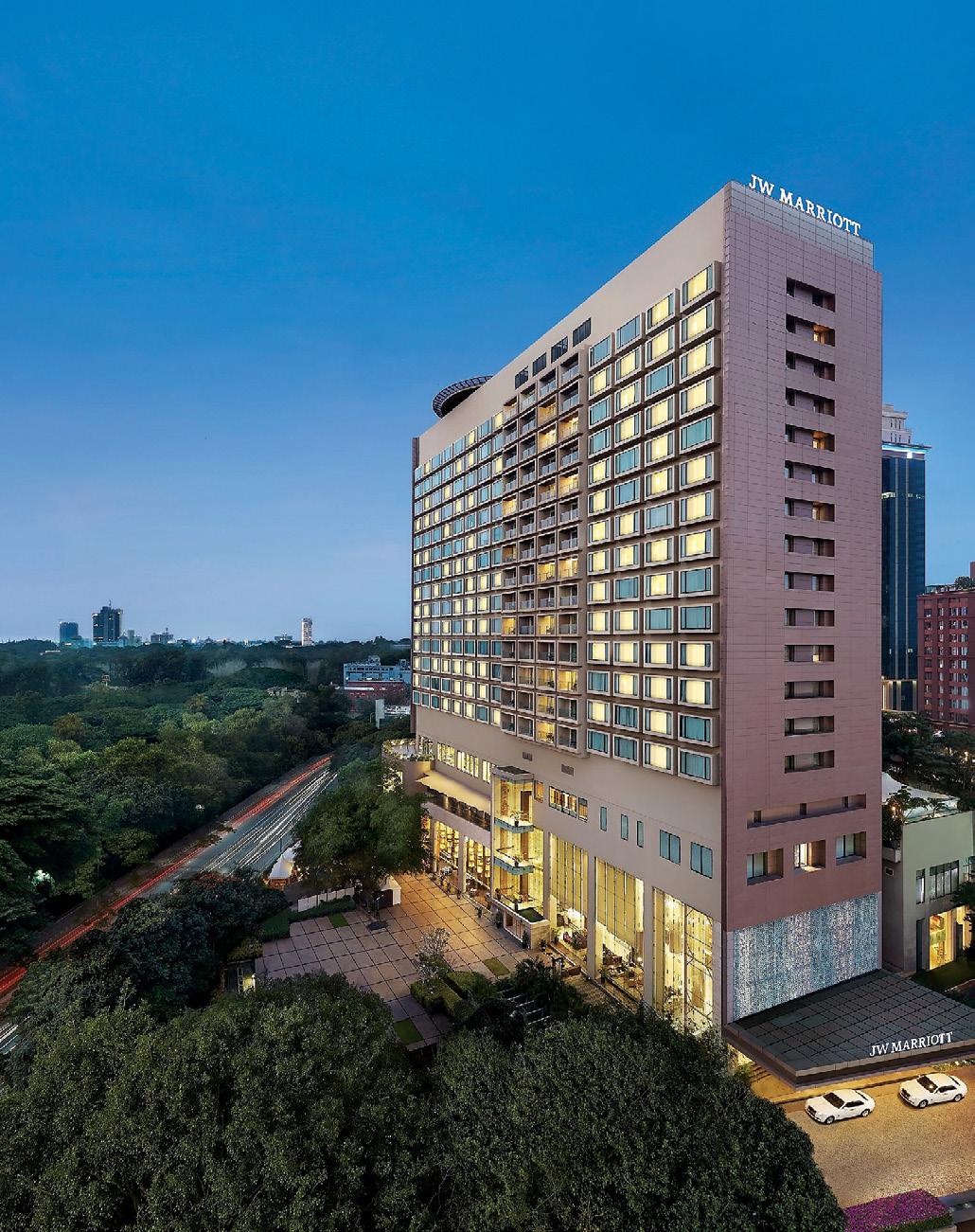
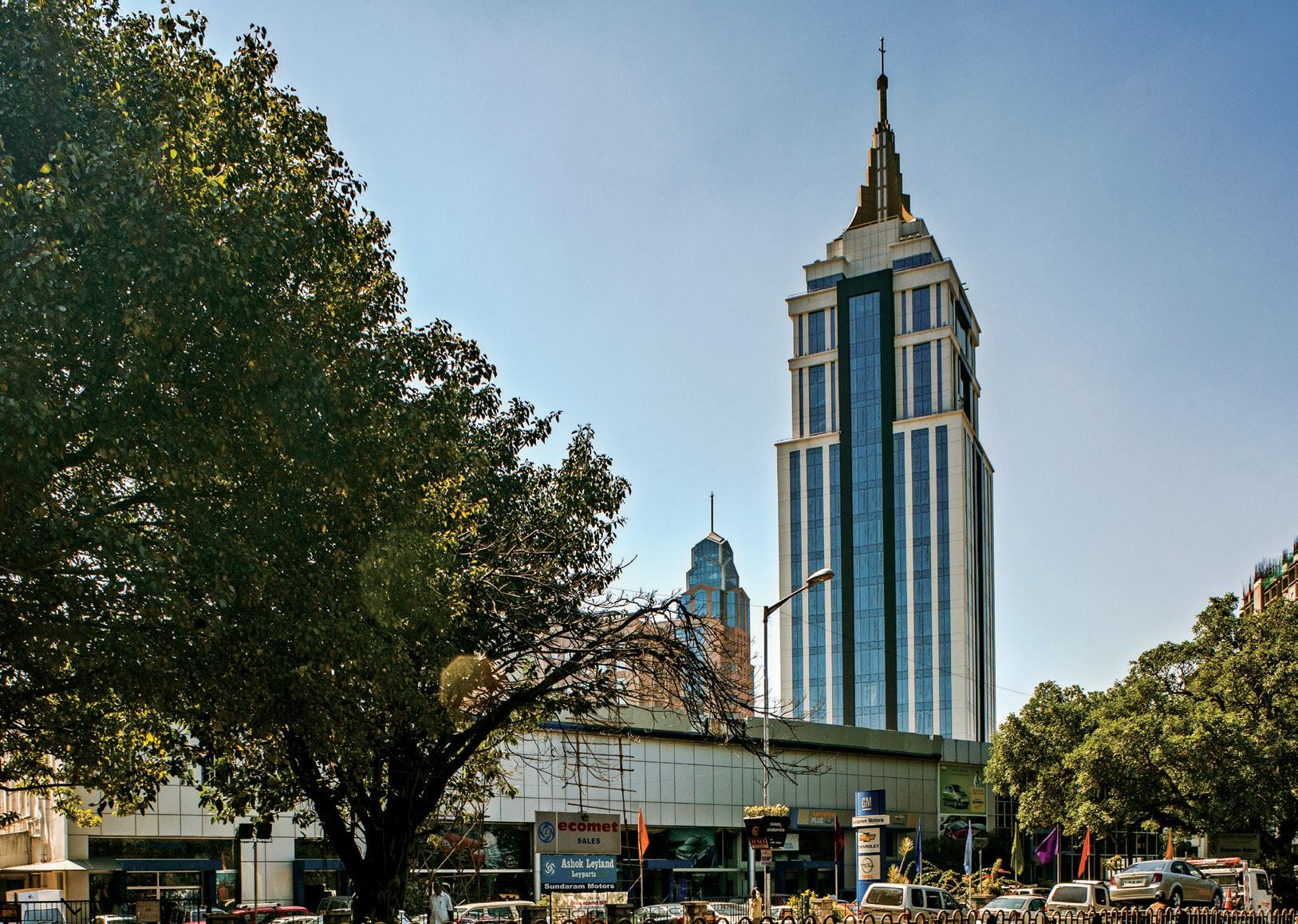
Global trends, local adaptation
Cities like Bangkok, Jakarta, and Dubai have been quick to embrace a new kind of hospitality model—one that goes far beyond the traditional hotel. It’s now common to see five-star hotels paired with branded residences, wellness centres that feel more like private retreats than gyms, and food and retail areas that are designed to be as much about local culture as they are about convenience. But while this mixed-use approach has gained traction globally, it’s being thoughtfully adapted in places like Indonesia. There, developers aren’t just copying international trends—they’re blending them with what matters to Indonesian communities.
Today’s guests are looking for more than just a bed and breakfast; they want their stay to be in sync with the way they live. That might mean starting the day in a quiet co-working space with good coffee and fast Wi-Fi, followed by a visit to the spa, some time spent browsing local shops, and wrapping up the evening with dinner and drinks on a rooftop terrace. Increasingly, hotels are offering all of this under one roof.
And it’s not just a perk—it’s becoming the expectation. In busy cities and even up-andcoming neighbourhoods, welldesigned mixed-use spaces are breathing new life into overlooked pockets of real estate. These aren’t just places to stay anymore—they’re places to be.
That means more green space, retail that champions local artisans, wellness offerings rooted in tradition, and a real focus on creating places where people can come together. A good example is the upcoming Andaz Jakarta Sudirman, part of the larger Two Sudirman development, which is being designed to mix luxury with day-to-day functionality. And in Central Jakarta, Thamrin Nine has taken it a step further by creating a true vertical city—housing offices, residences, and the Waldorf Astoria hotel all in one towering complex. These projects show that when hospitality is approached with both global ambition and local heart, it can reshape not just how people travel, but how they live.
Looking ahead: The future is hybrid
The way we live, work, and travel has changed—and it’s not going back. Those lines that once separated business from leisure or home from hotel have blurred so much that they’re almost irrelevant. That’s why mixeduse hospitality developments aren’t just a passing trend anymore—they’re becoming the go-to approach for smart, future-facing real estate.
Especially in a post-pandemic world, there’s a clear need for spaces that can adapt quickly, serve more than one purpose, and bring people together. Whether it’s a hotel with co-working spaces, wellness centres, shops, or even residential units, this kind of setup just makes sense now. It’s good business, yes, but it’s also what people want: convenience, connection, and a sense of place.
Developers who understand that—and design accordingly—are building more than properties. They’re creating destinations people actually want to be part of
WERE YOU AWARE?
BY DEEPALI NANDWANI
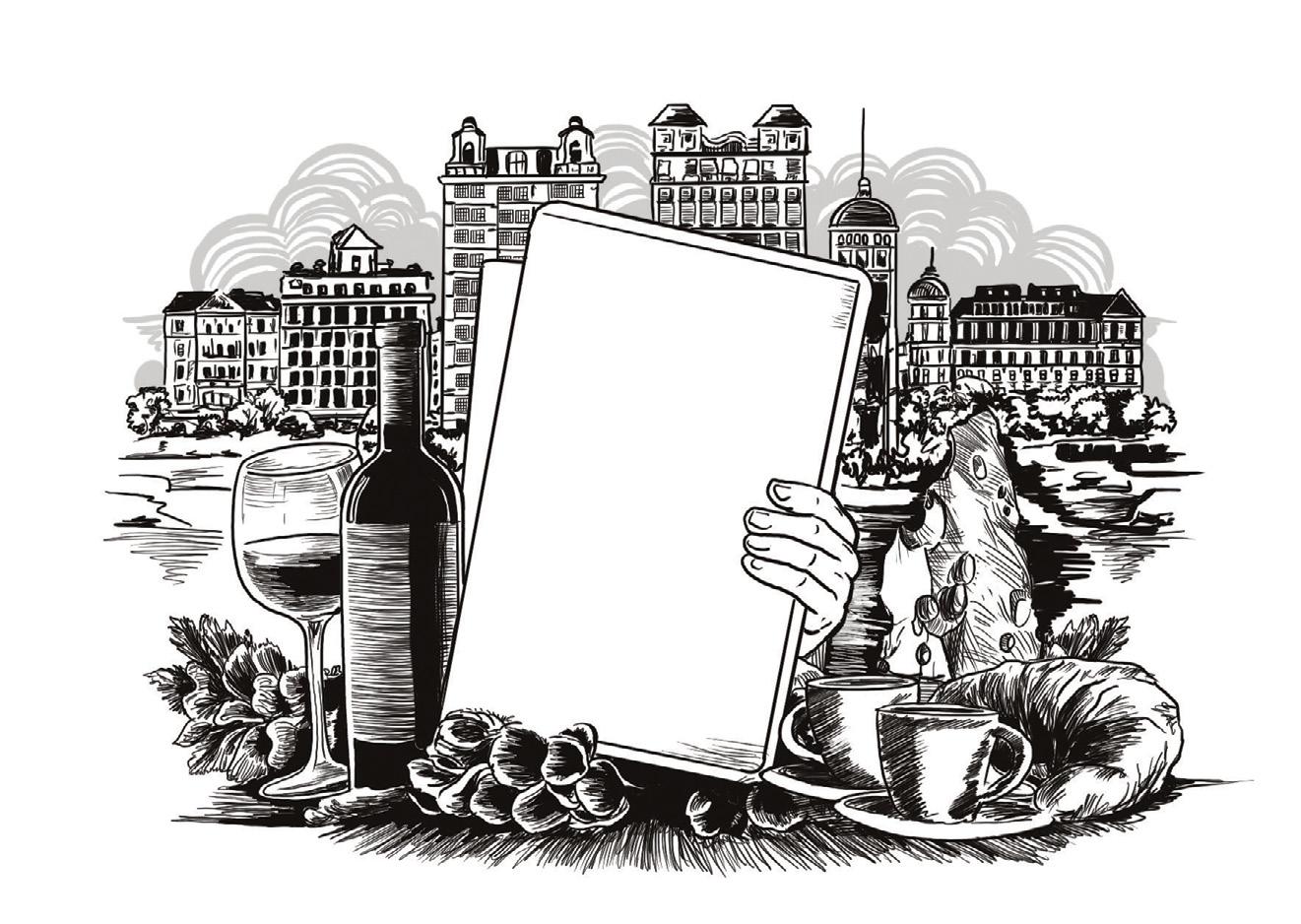
Where Dreams Take Shape
Rocco Forte’s Hotel de la Ville in Italy blends art and technology in its Dream Portraits project with local artist Matteo Nasini. Guests wear EEG-enabled headsets during sleep to record brain activity overnight. This neurological data is then converted into sound waves using specialised software, which are transformed into unique audio compositions and delicate porcelain sculptures via 3D printing. The result is a tangible, one-of-a-kind keepsake—a physical expression of each guest’s dream experience.
Cellars in the Sky
Emirates is the only airline boasting its own extensive wine cellar, elevating its First Class beverage program to unmatched luxury. Its collection includes 15-year-aged wines from Bordeaux, Tuscany, and other renowned regions, carefully curated by inhouse sommeliers. With over four million bottles aging under optimal conditions, Emirates served 7.2 million bottles in 2024 alone, reserving the finest for First Class. Highlights include Dom Pérignon 2008, prized for its acidity and elegance at altitude, and the exclusive Dalmore King Alexander III, a six-cask-aged single malt Scotch. Curated tastings and expert service create a refined, sommelier-led in-flight experience.
The Rise of Micro-Diners
Micro-dining—intimate restaurants with 8 to 30 seats and focused menus—is redefining the culinary scene through curation and connection. Bengaluru’s Naru Noodle Bar by chef Kavan Kuttappa is famed for its handmade noodles. Mumbai’s Kari Apla draws on chefs Ebaani Tewar and Mathew Varghese’s childhood memories and coastal Deccan recipes. In Goa, Pablo Miranda’s Antonio at 31 serves small plates inspired by local ingredients, complemented by Makutsu, a 20-seat yakitori bar with a live kitchen table. Delhi’s Little Saigon by chef Hana Ho offers soulful Vietnamese cuisine in a cosy 25-seat setting.
Community-led Ecotourism
Debrigarh, Odisha, named India’s top ecotourism destination by G20 Sherpa Amitabh Kant, showcases sustainable, community-run tourism. Around 85 forest families operate safaris, treks, cruises, and hospitality, earning ₹13,000–15,000 monthly. Nearly 40% of staff are women, including the first female safari driver and ecoguide, paid equally. Since relocating 400+ families between 2021–23, the community aids conservation by monitoring wildlife, preventing poaching, reducing plastic waste, and minimising conflicts—benefiting tigers and leopards.


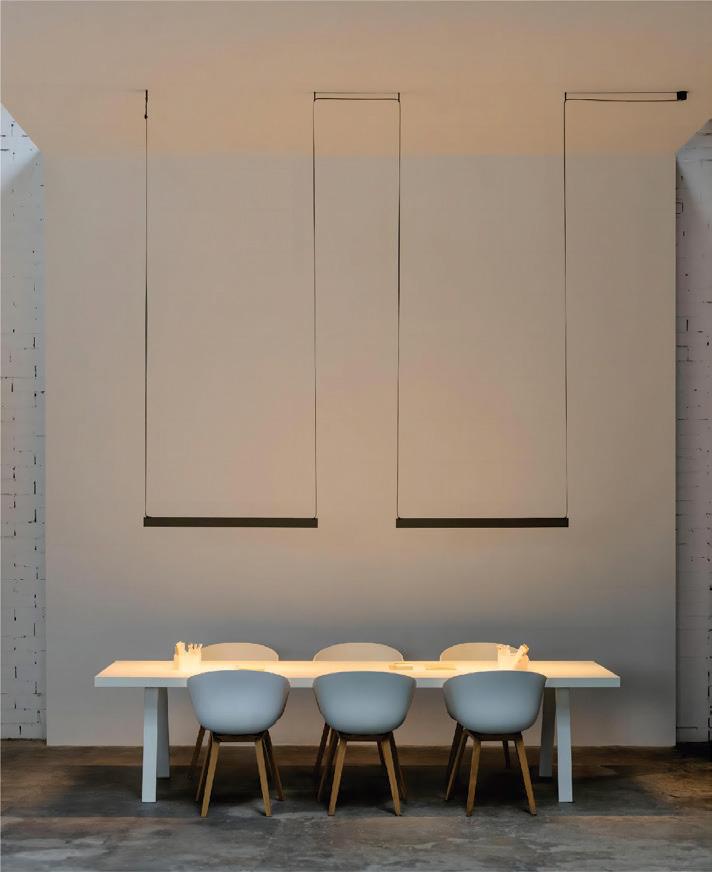


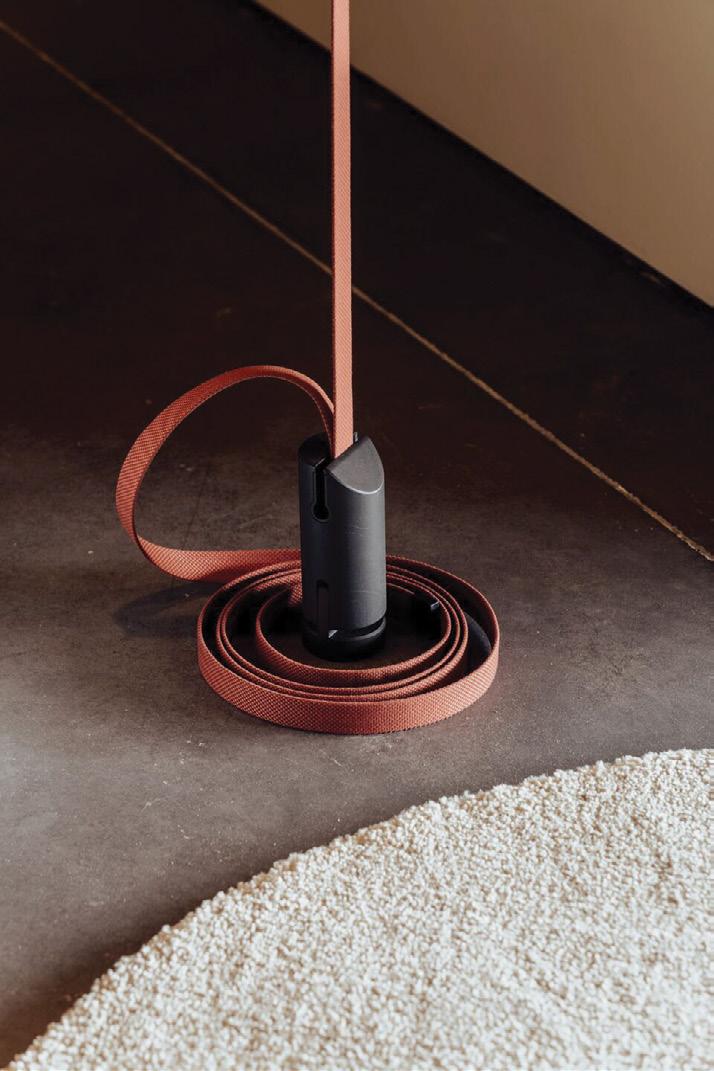
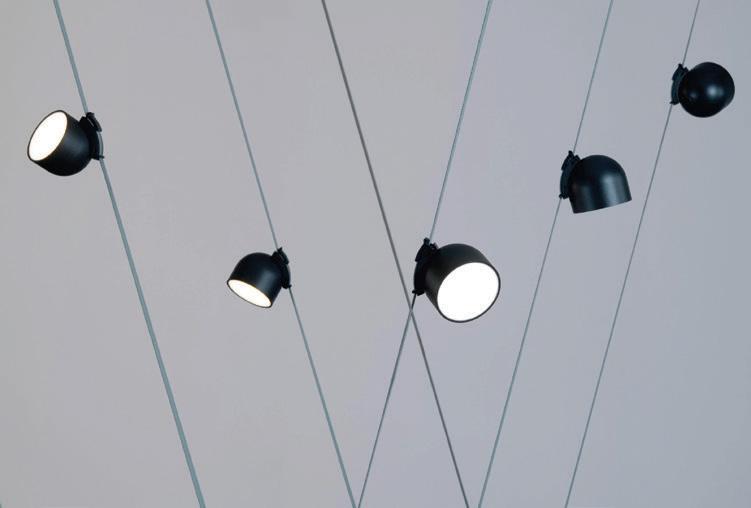


JOURNEY OF EXCELLENCE

PRESENTED BY
